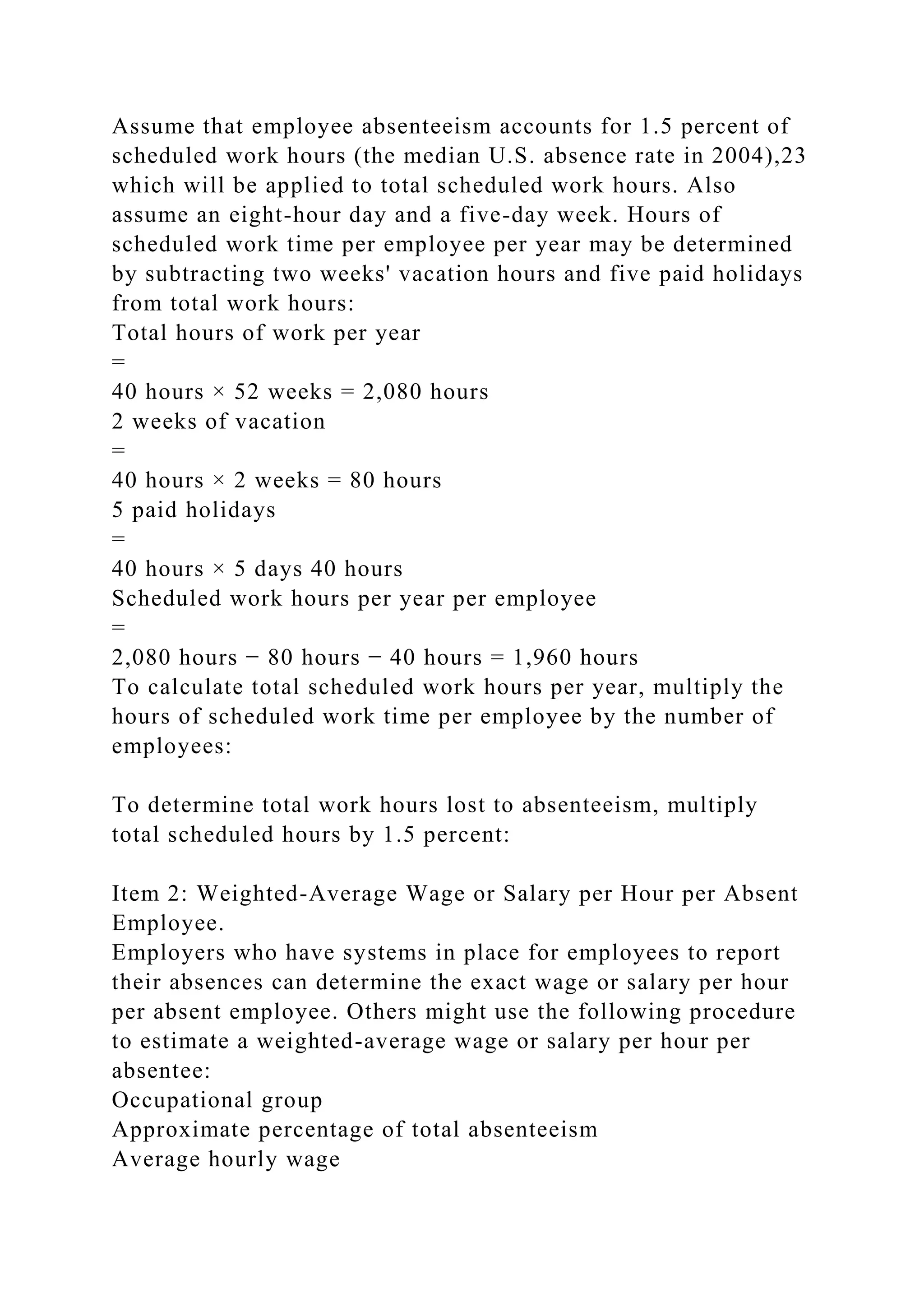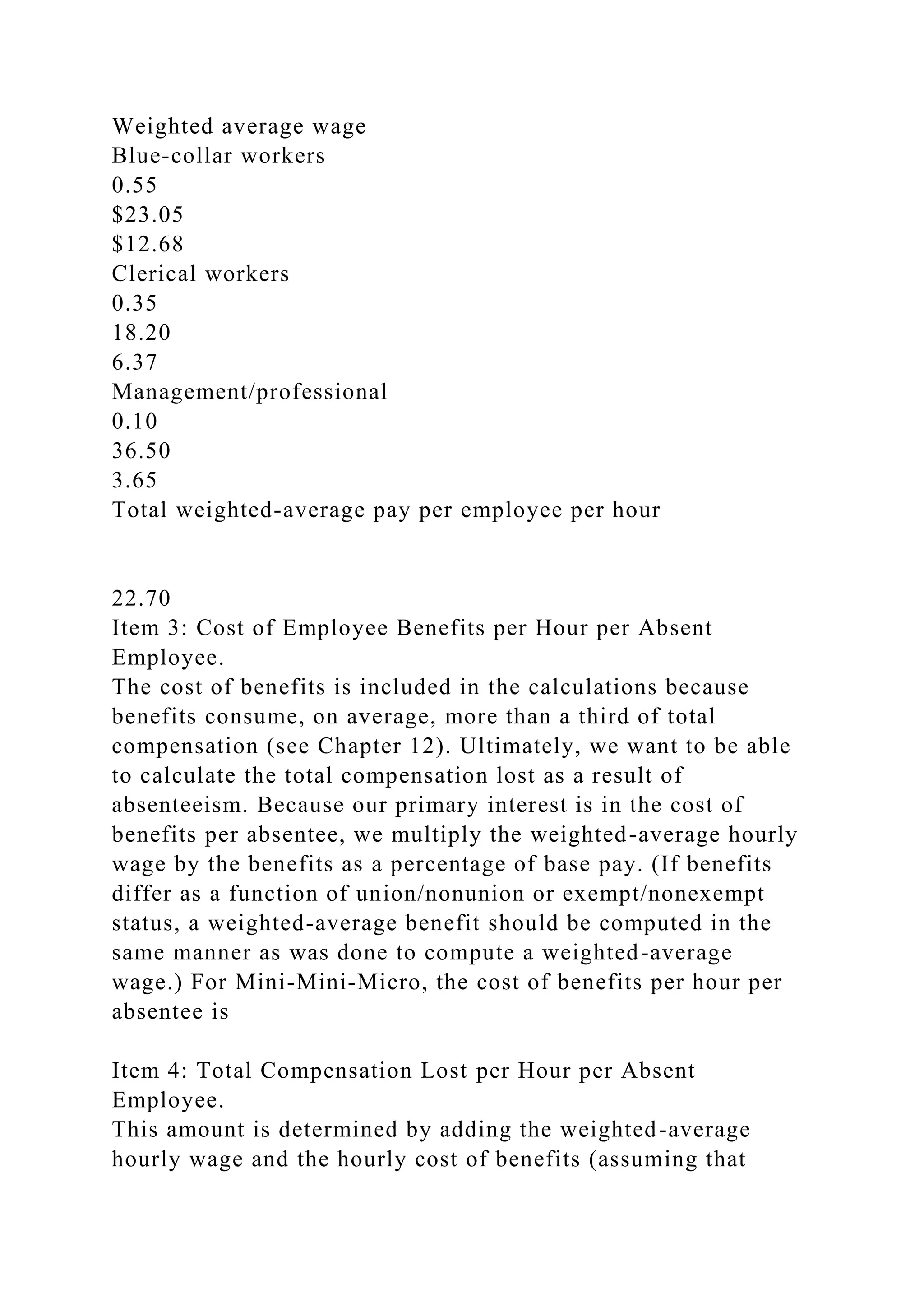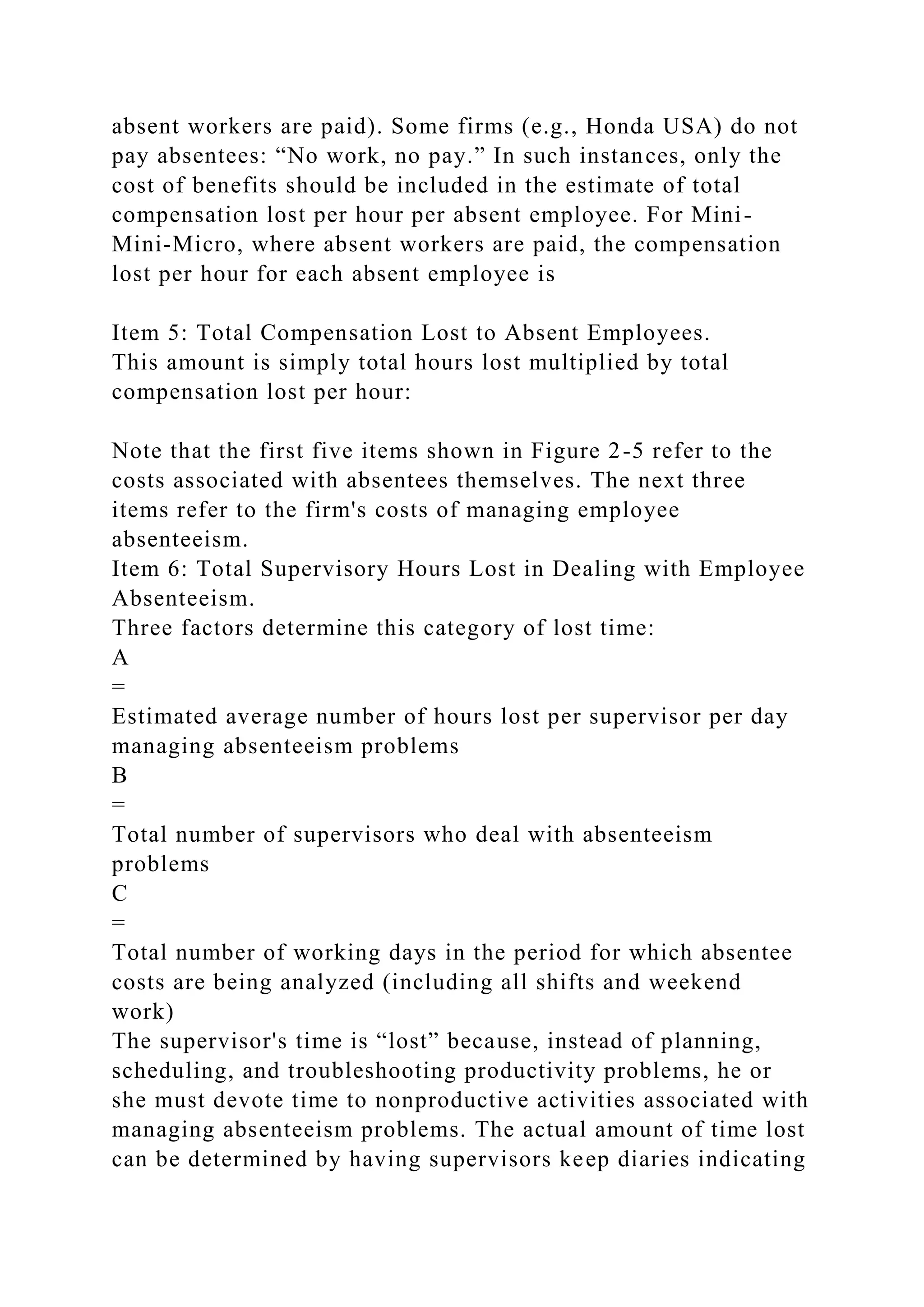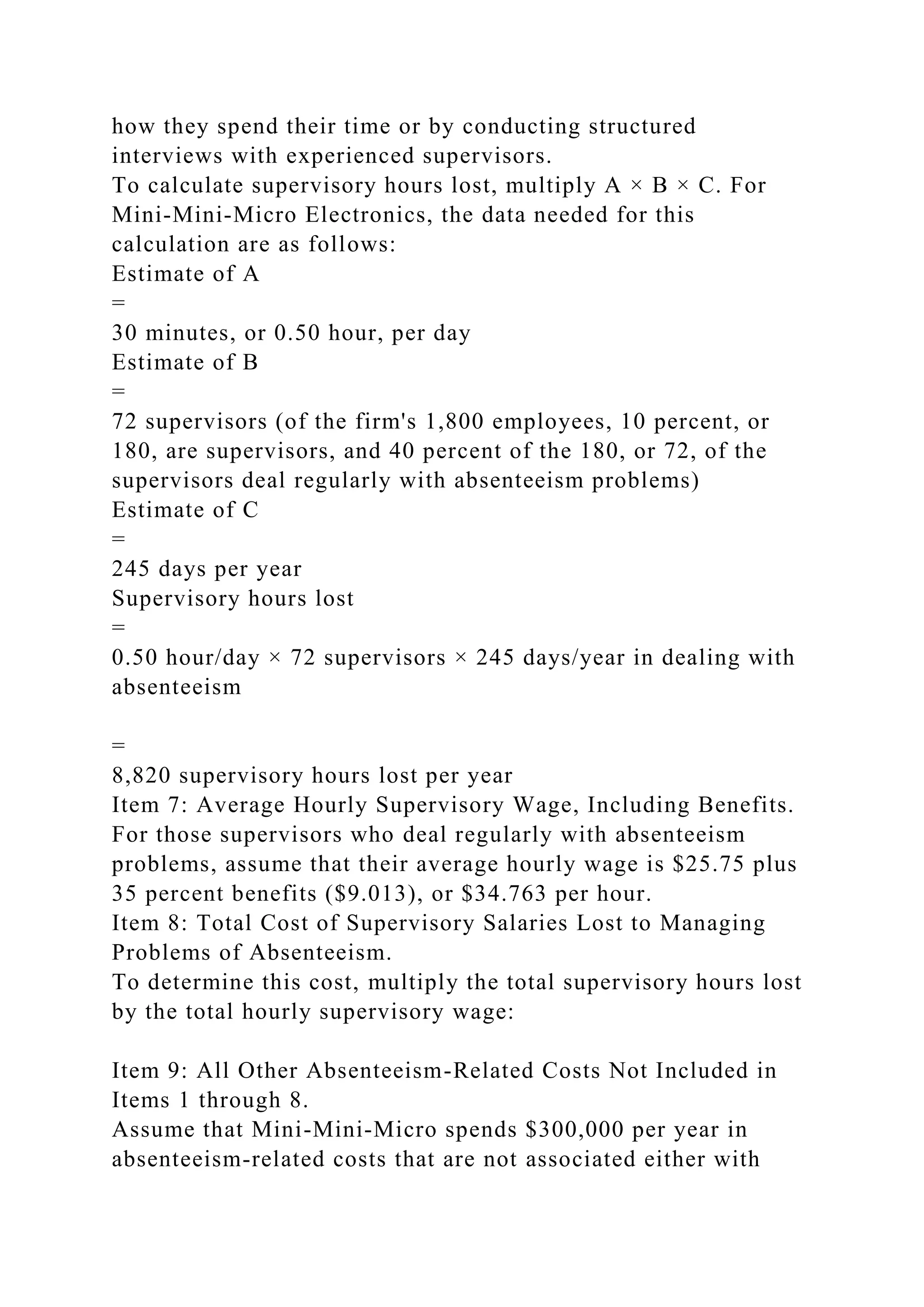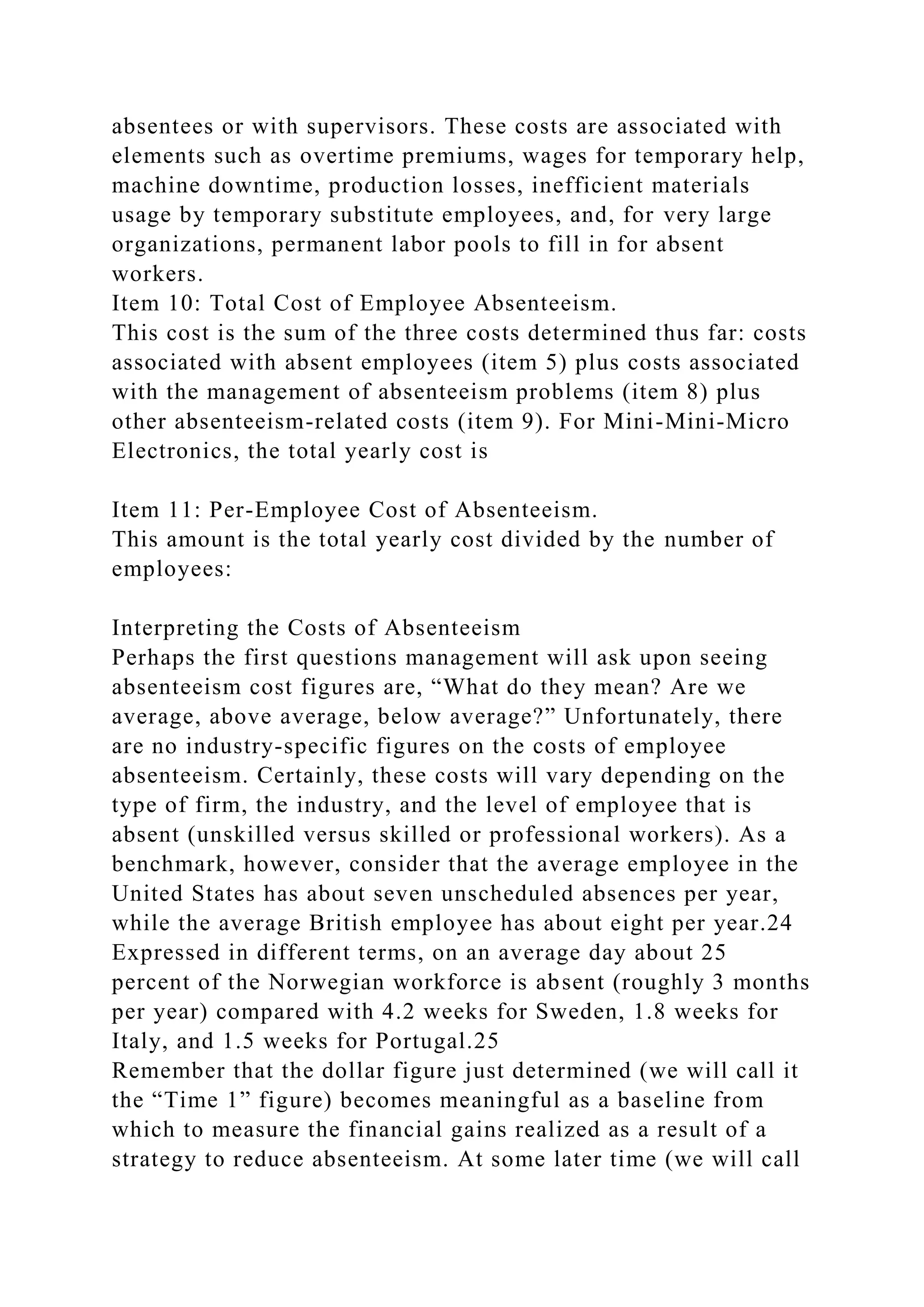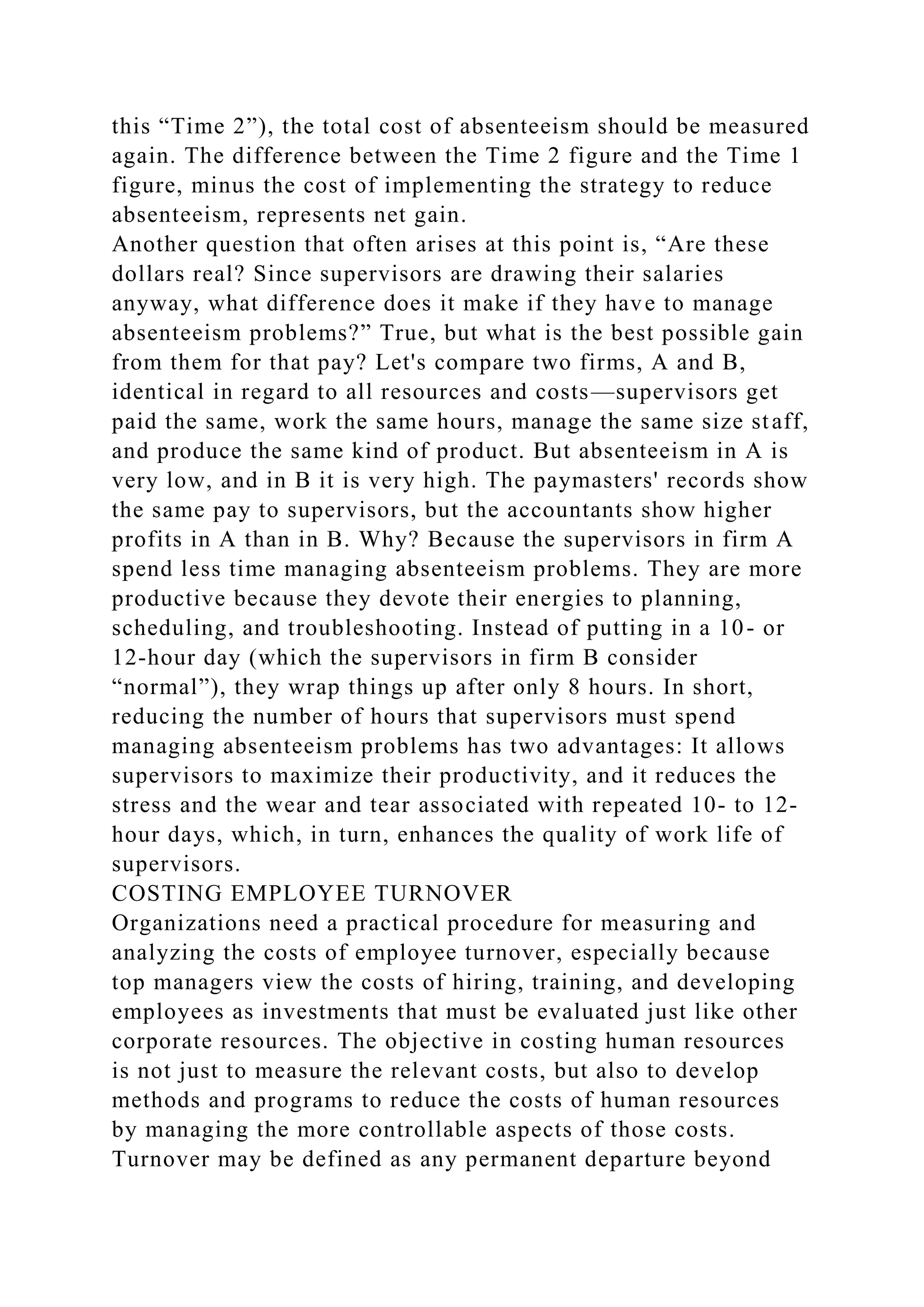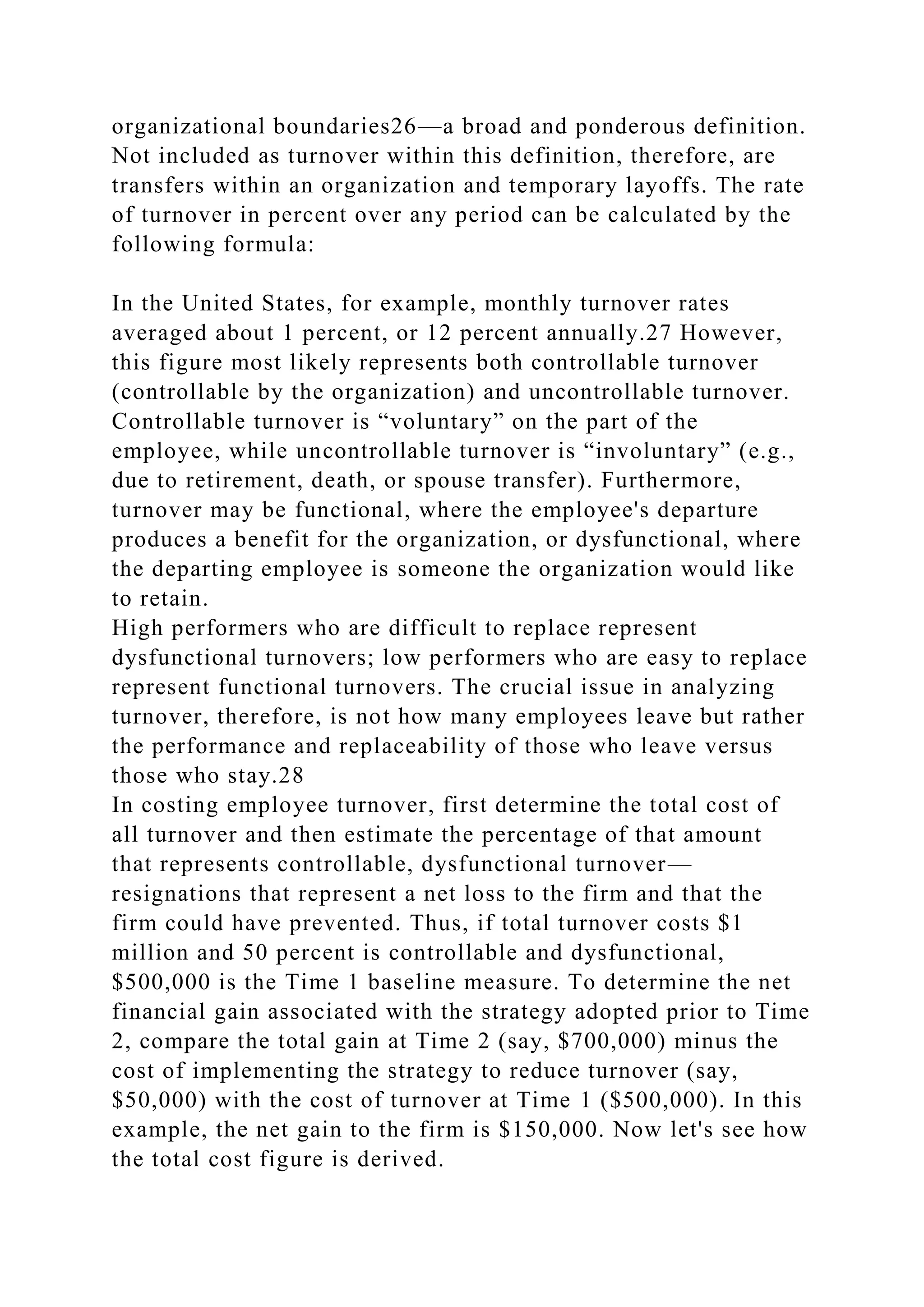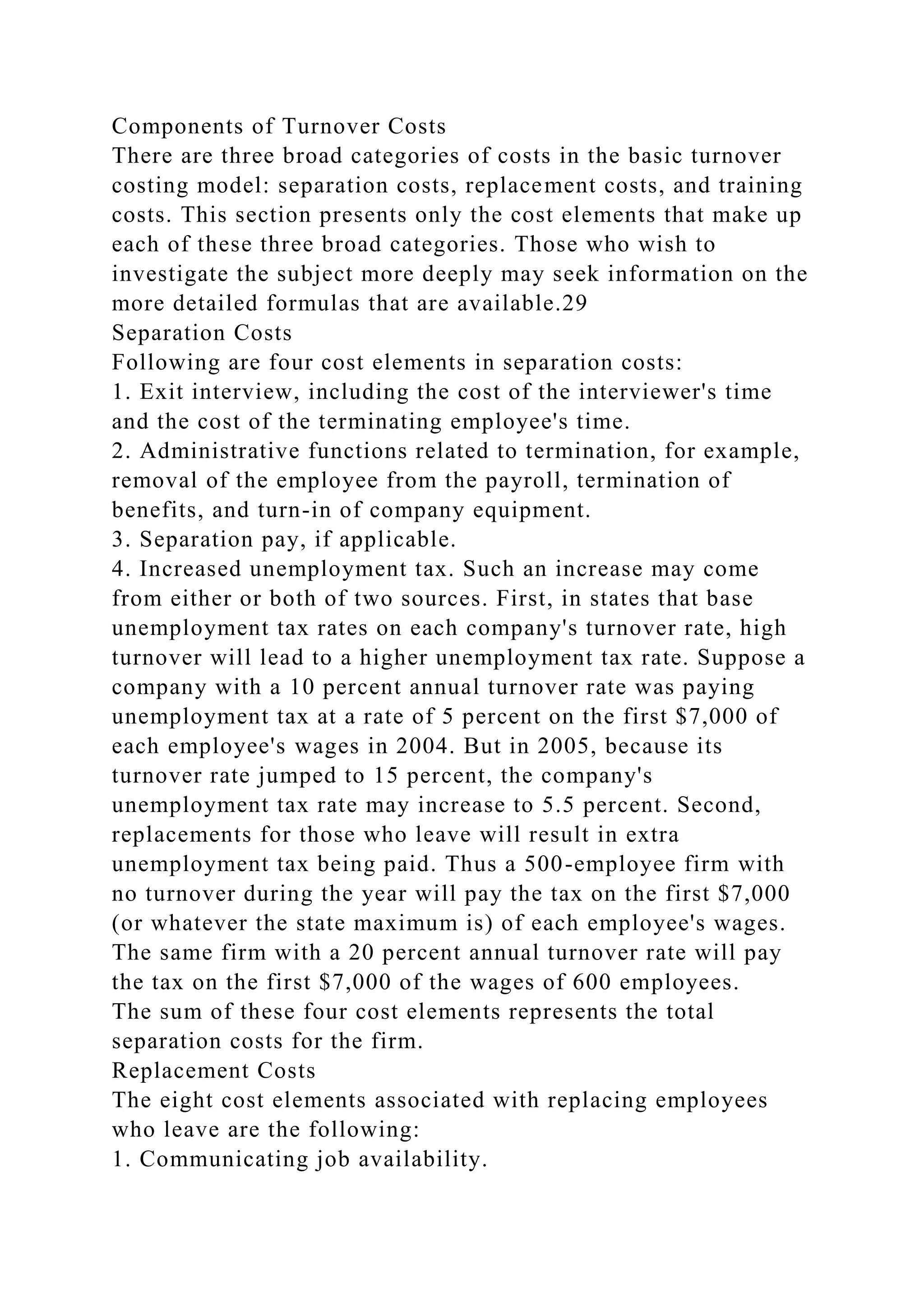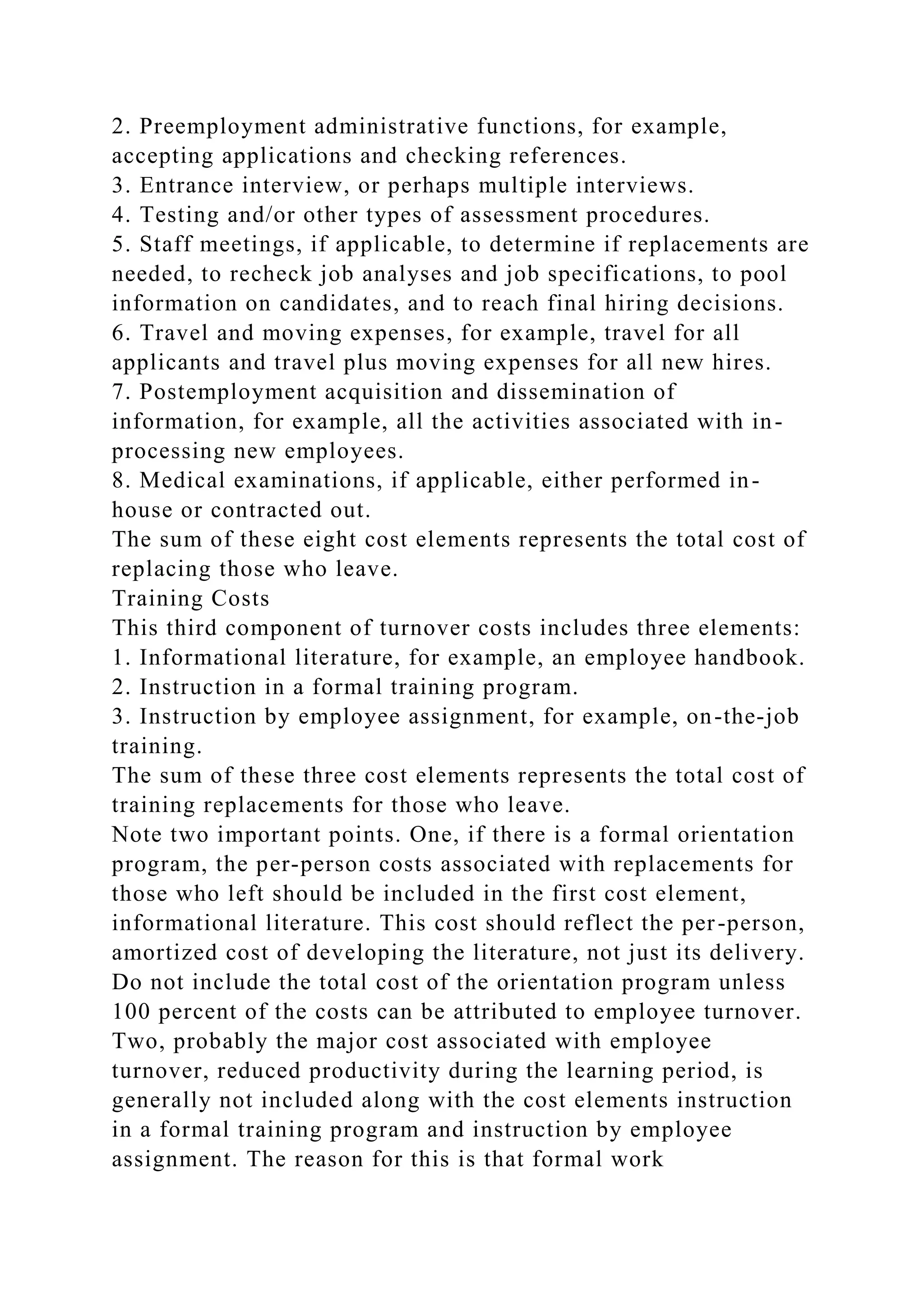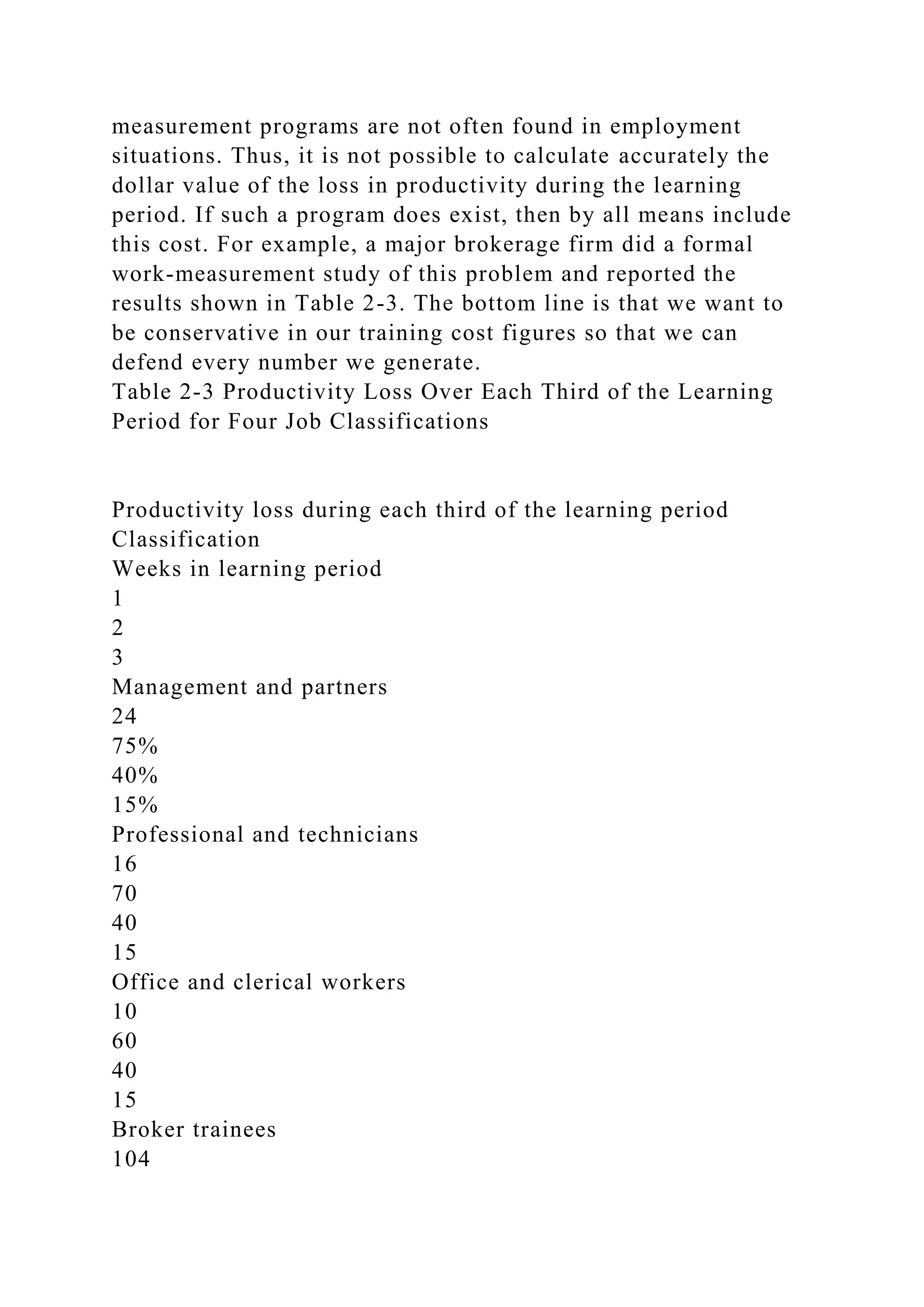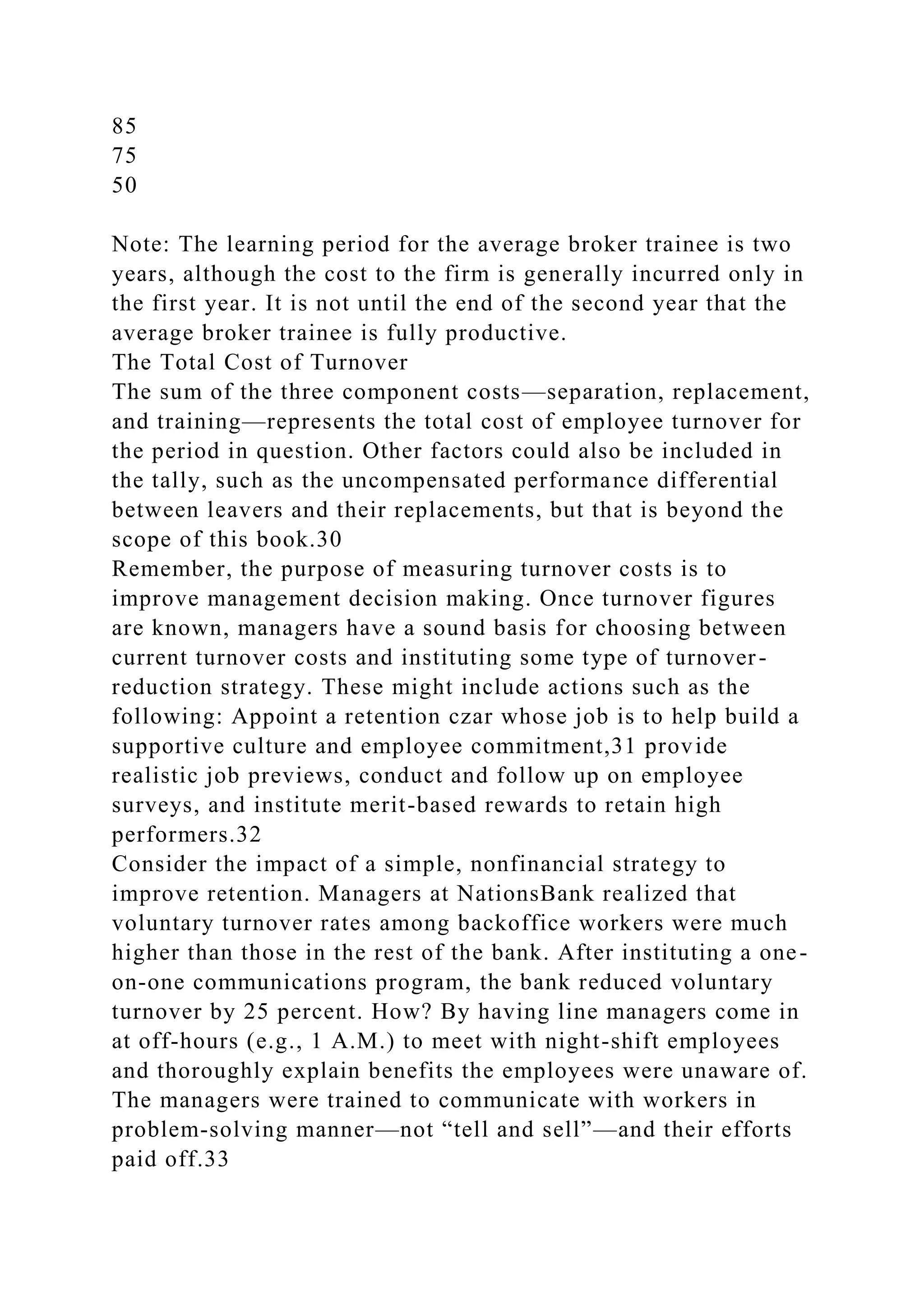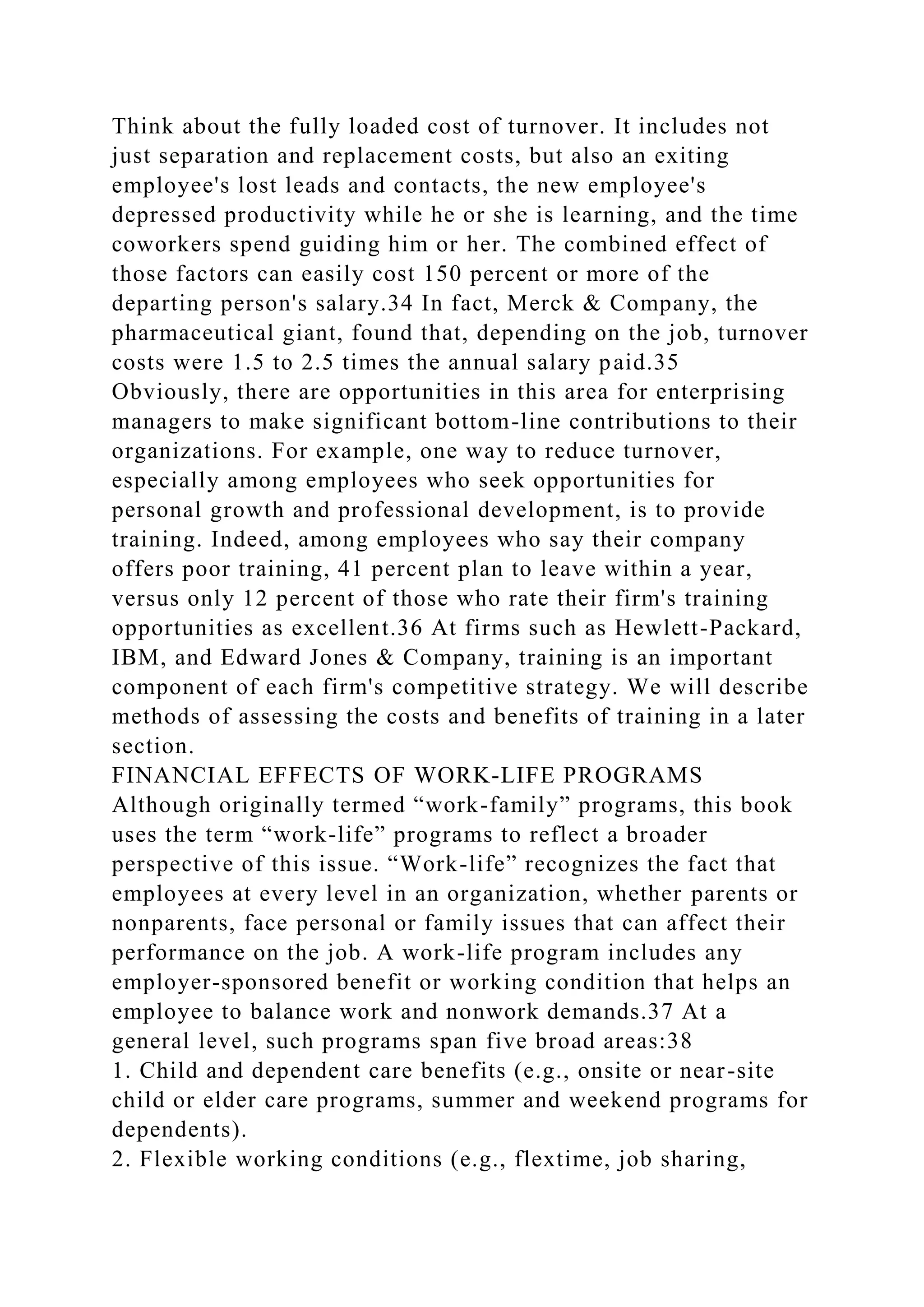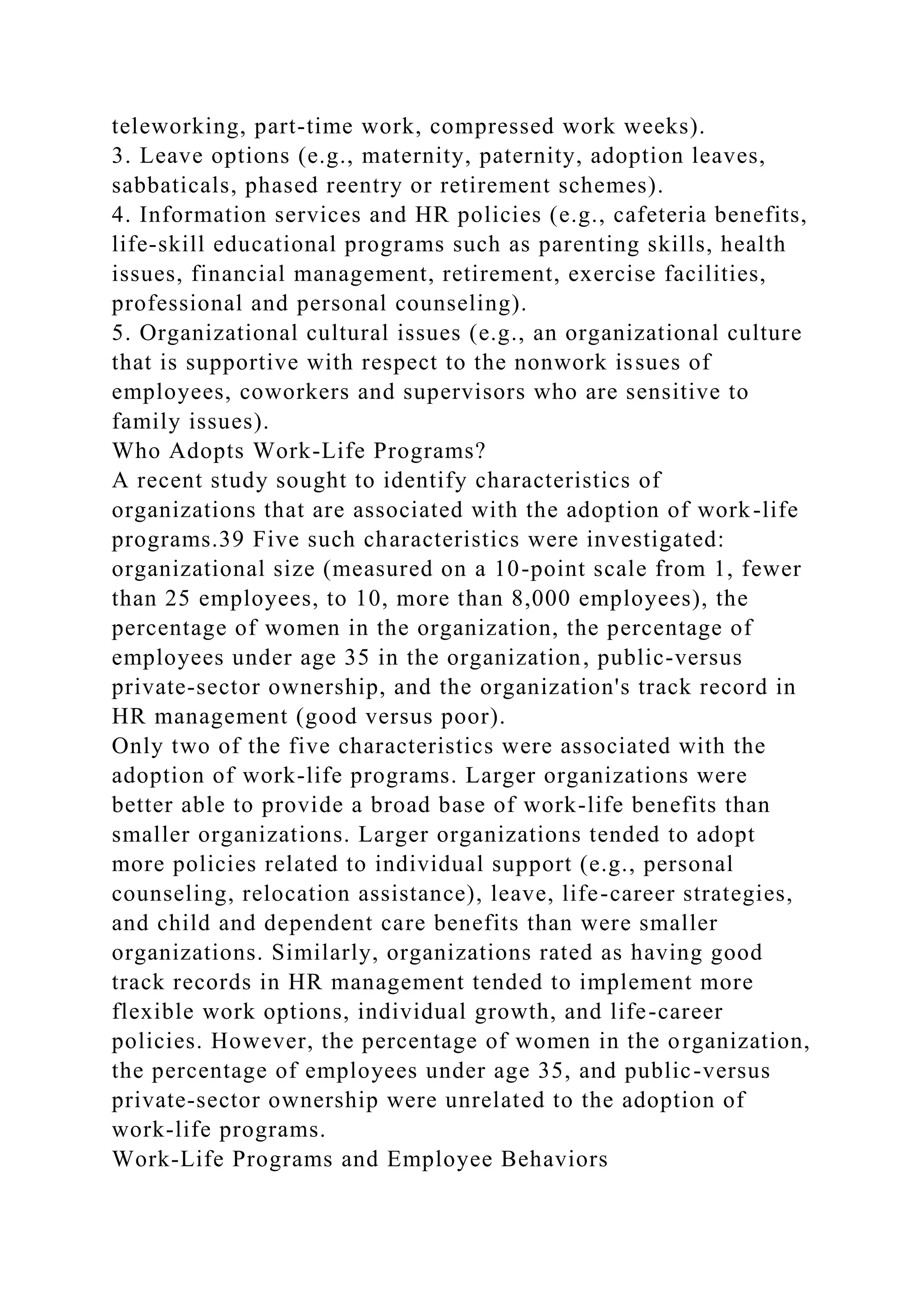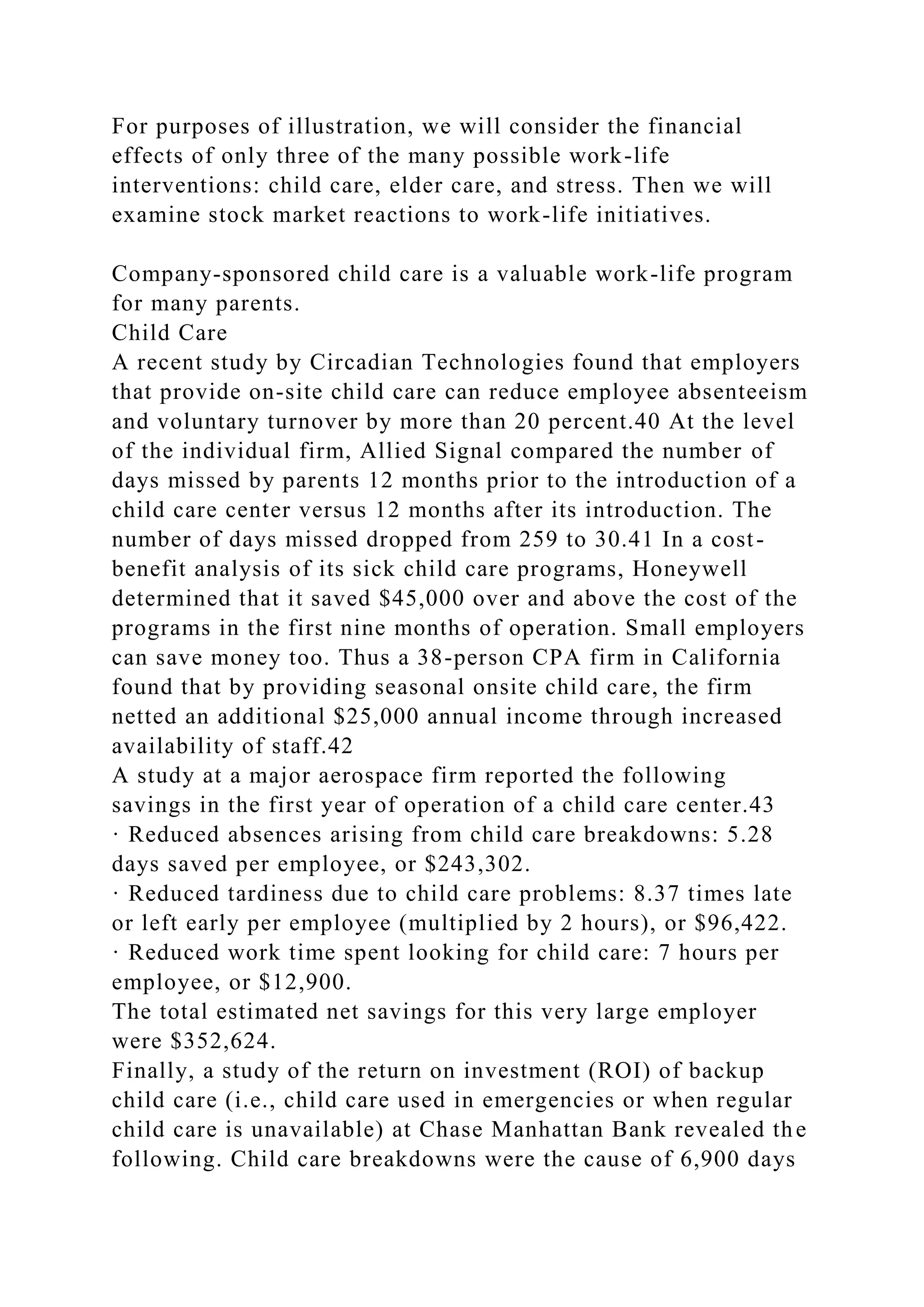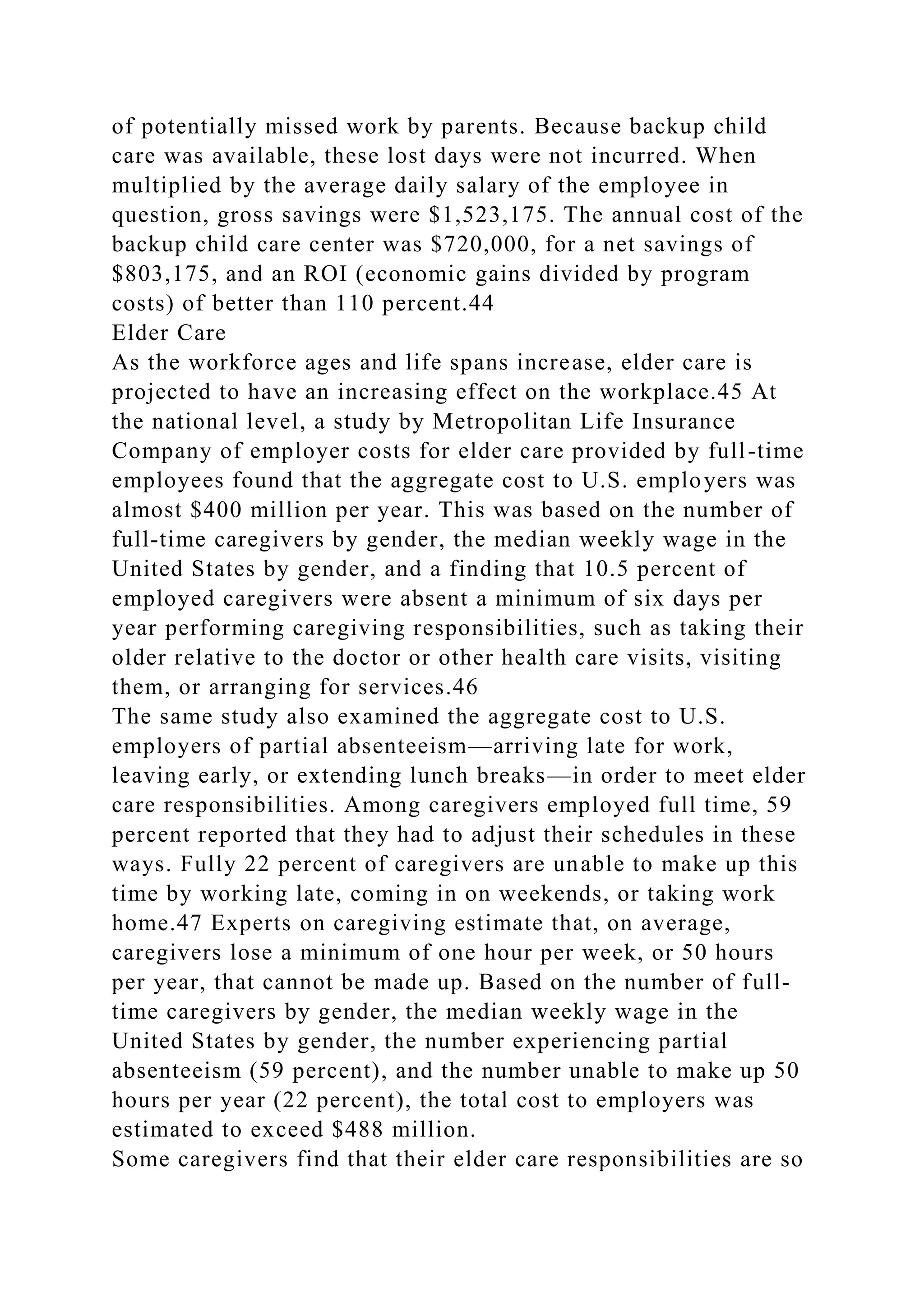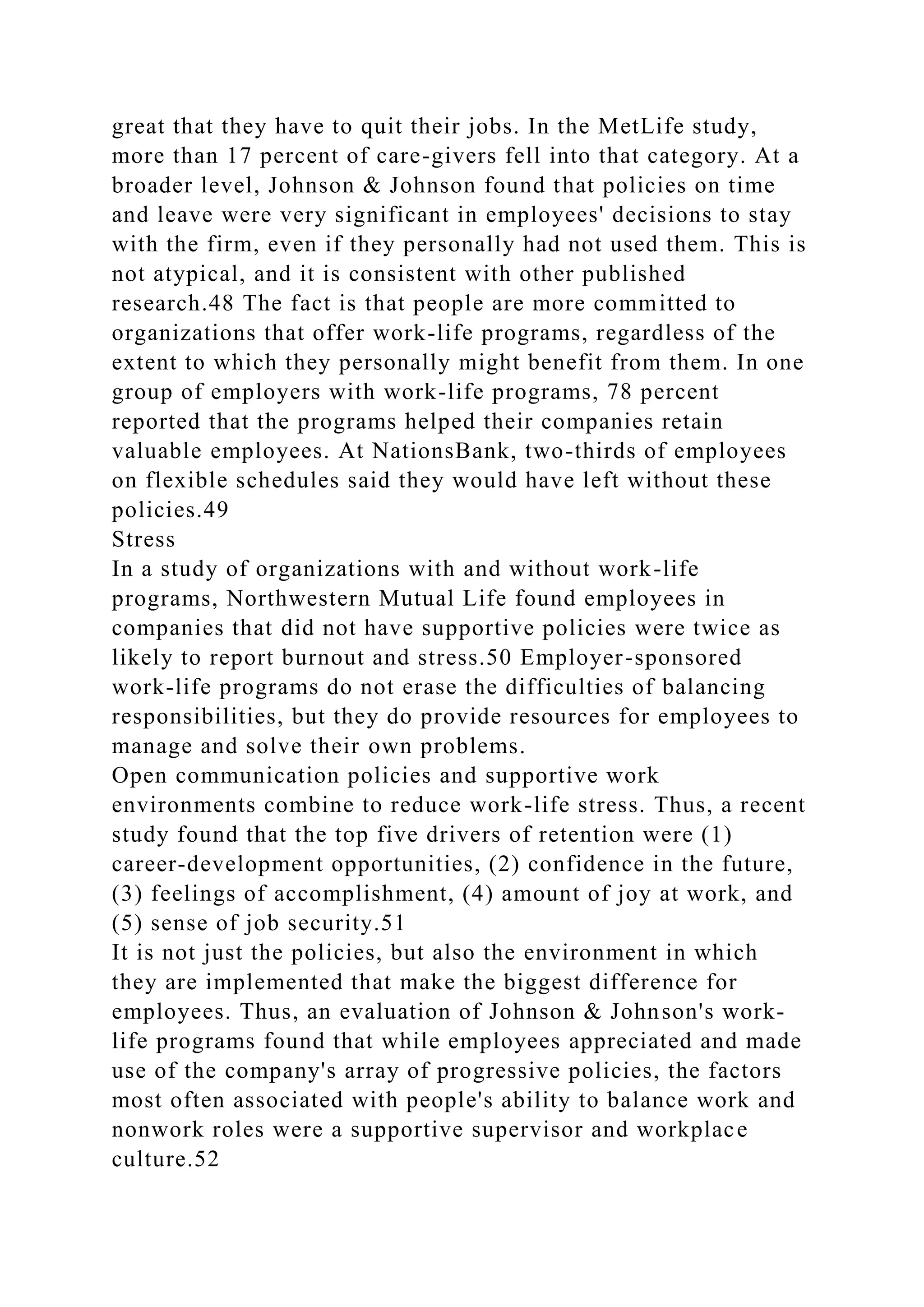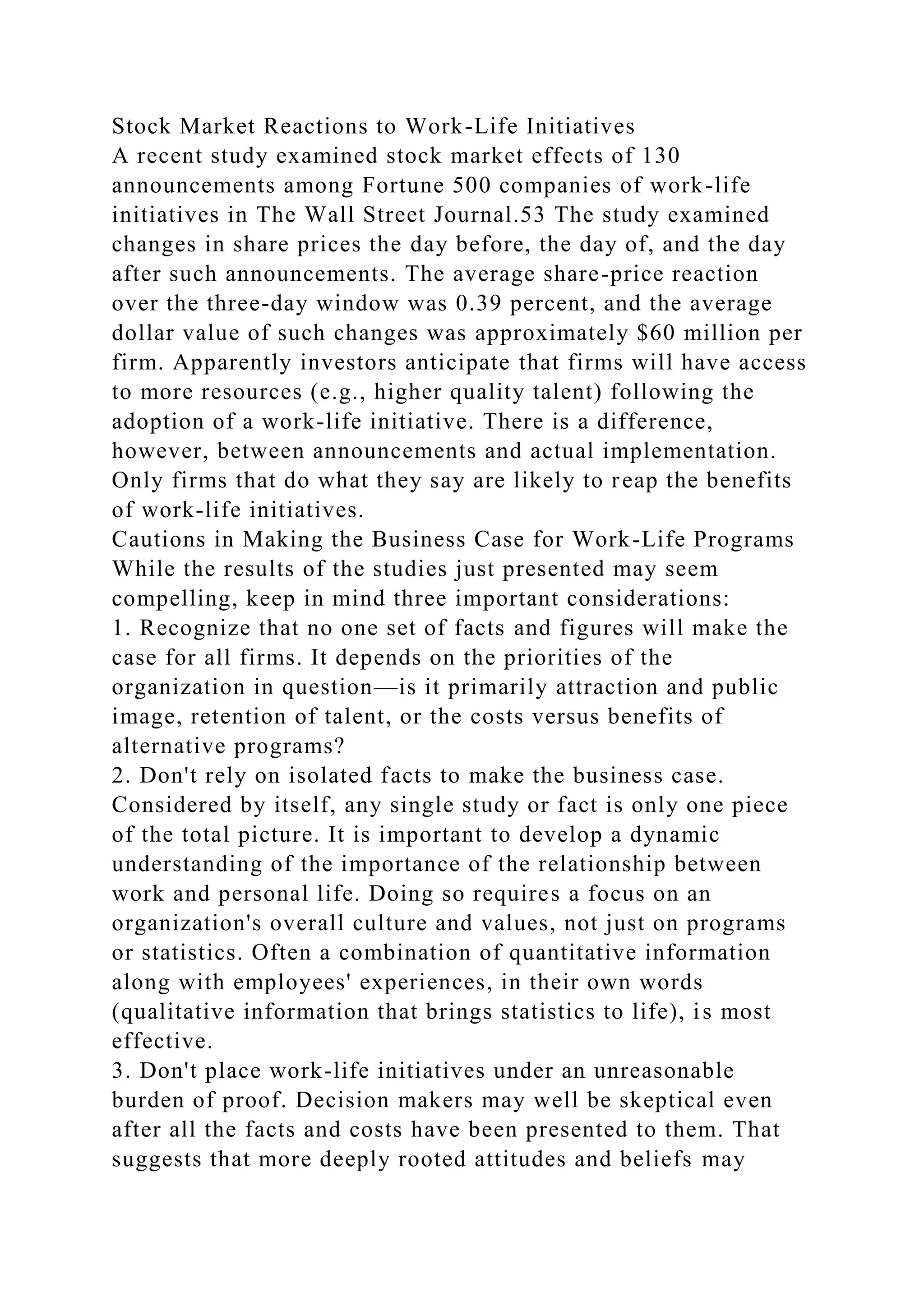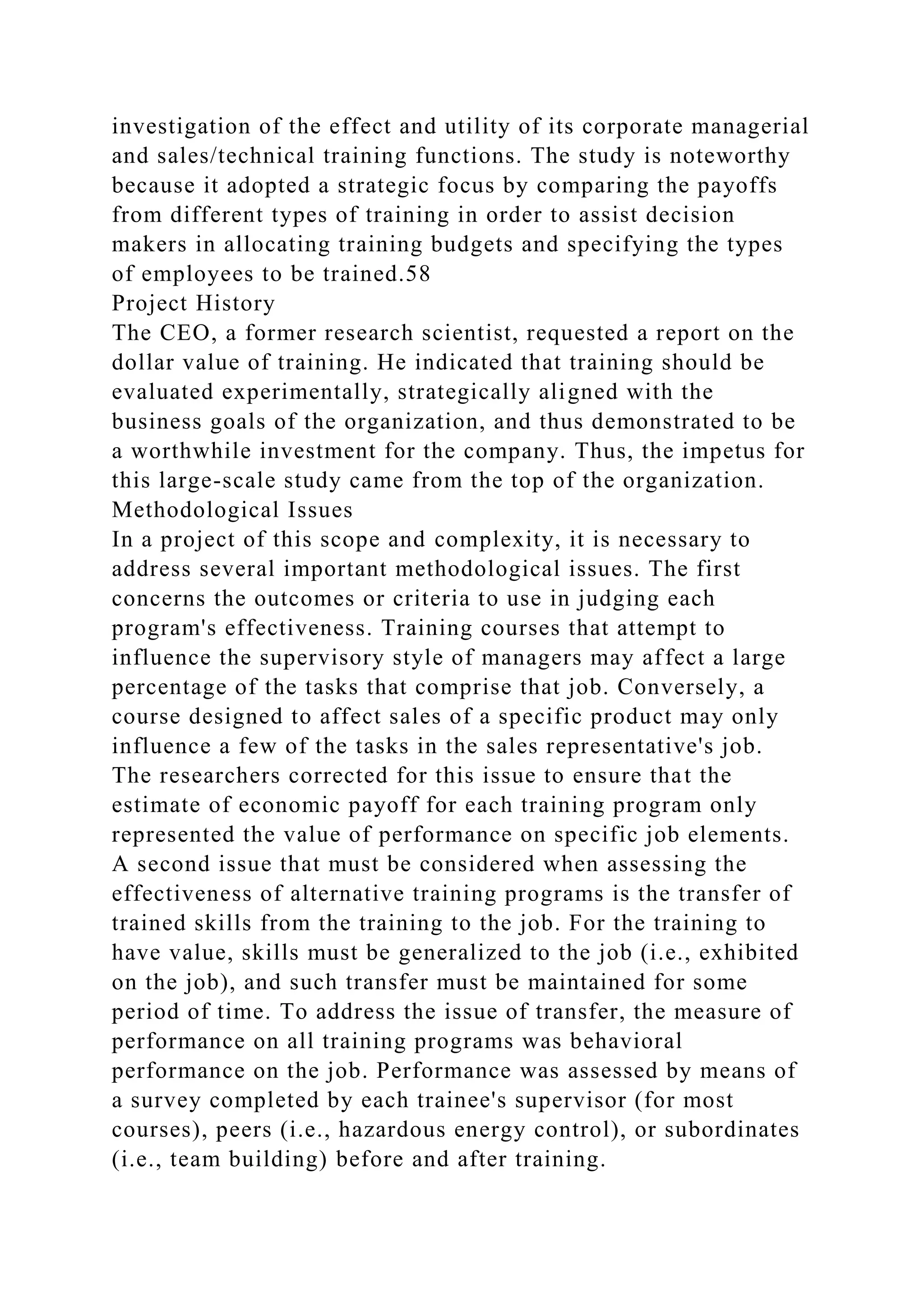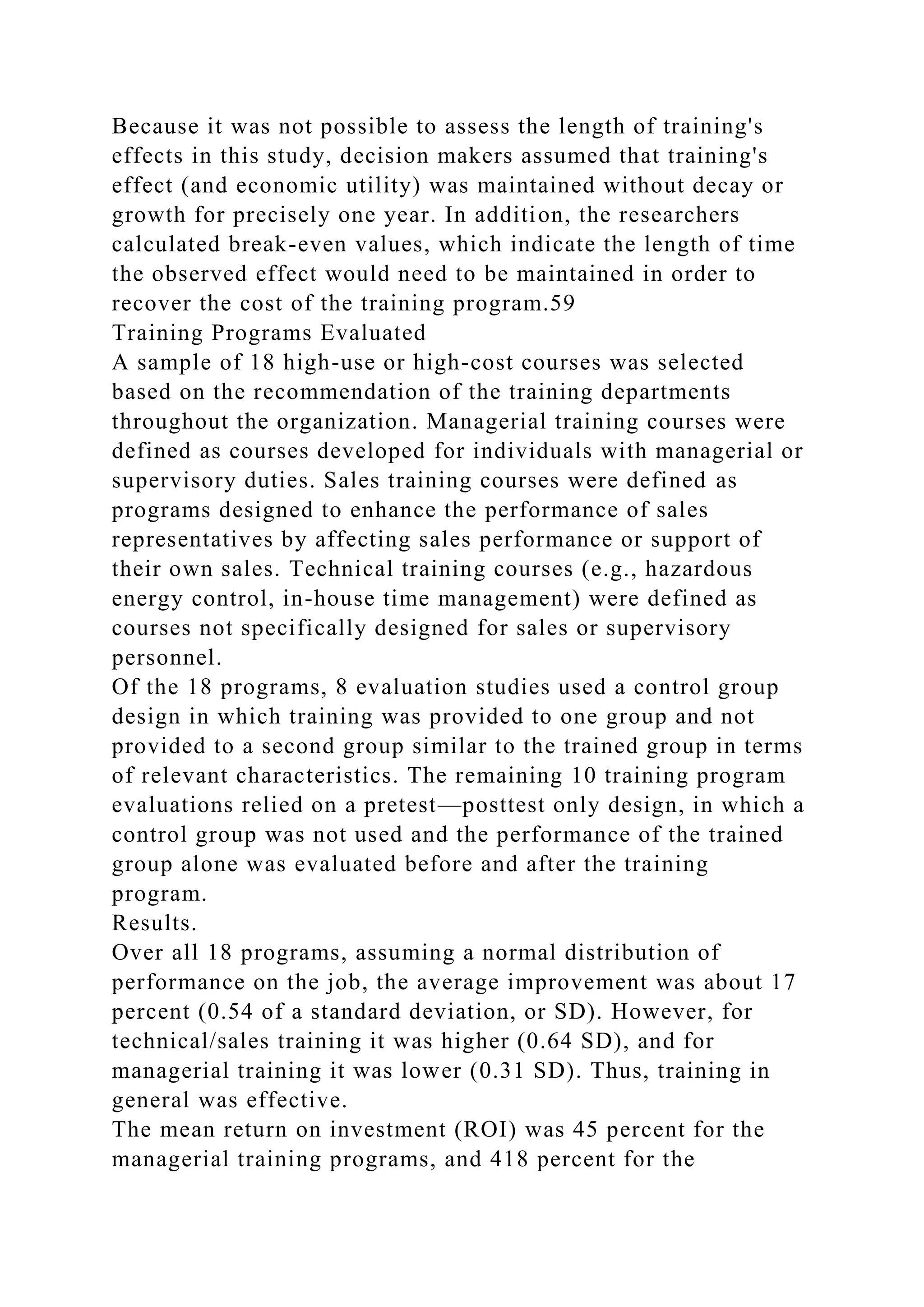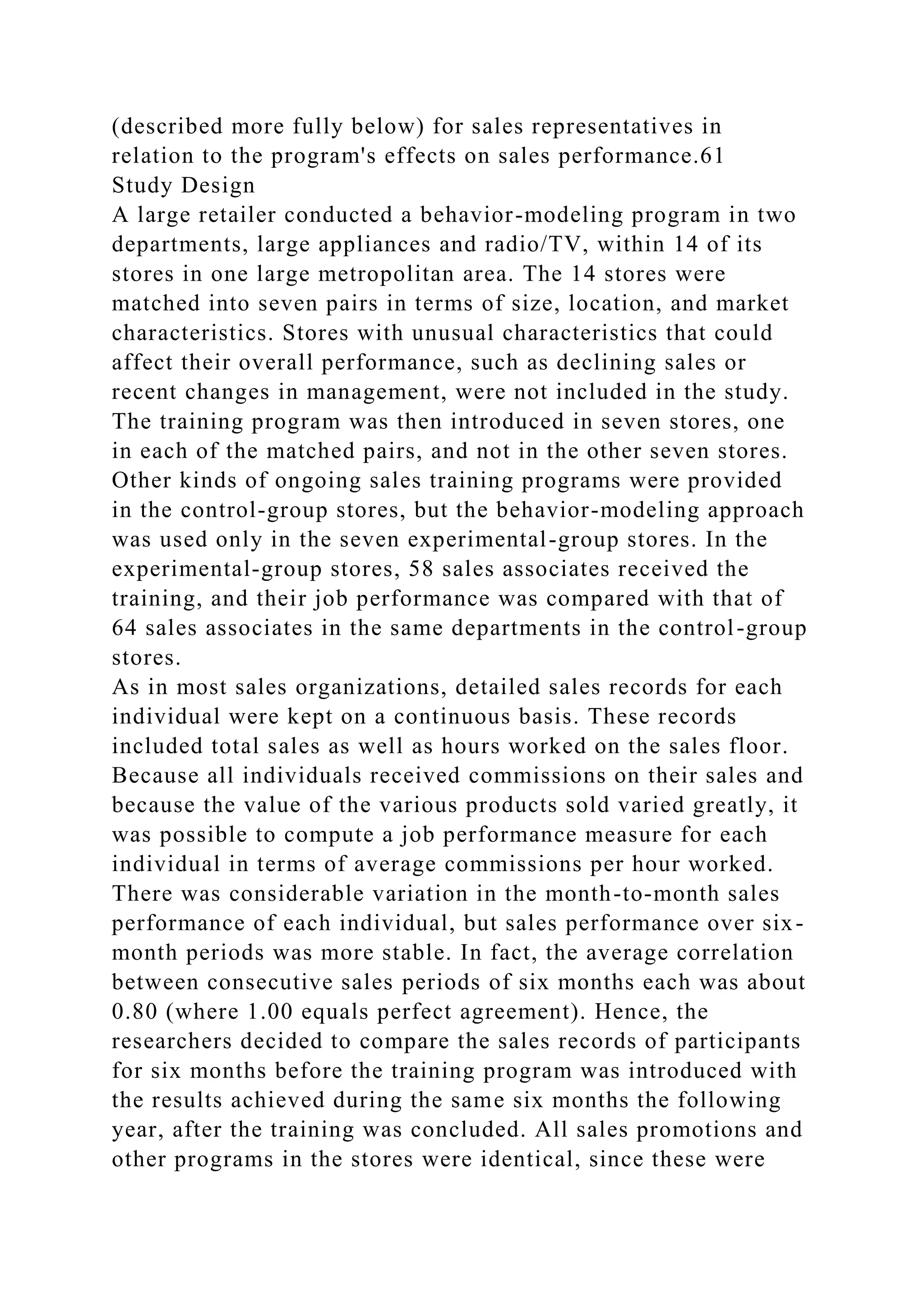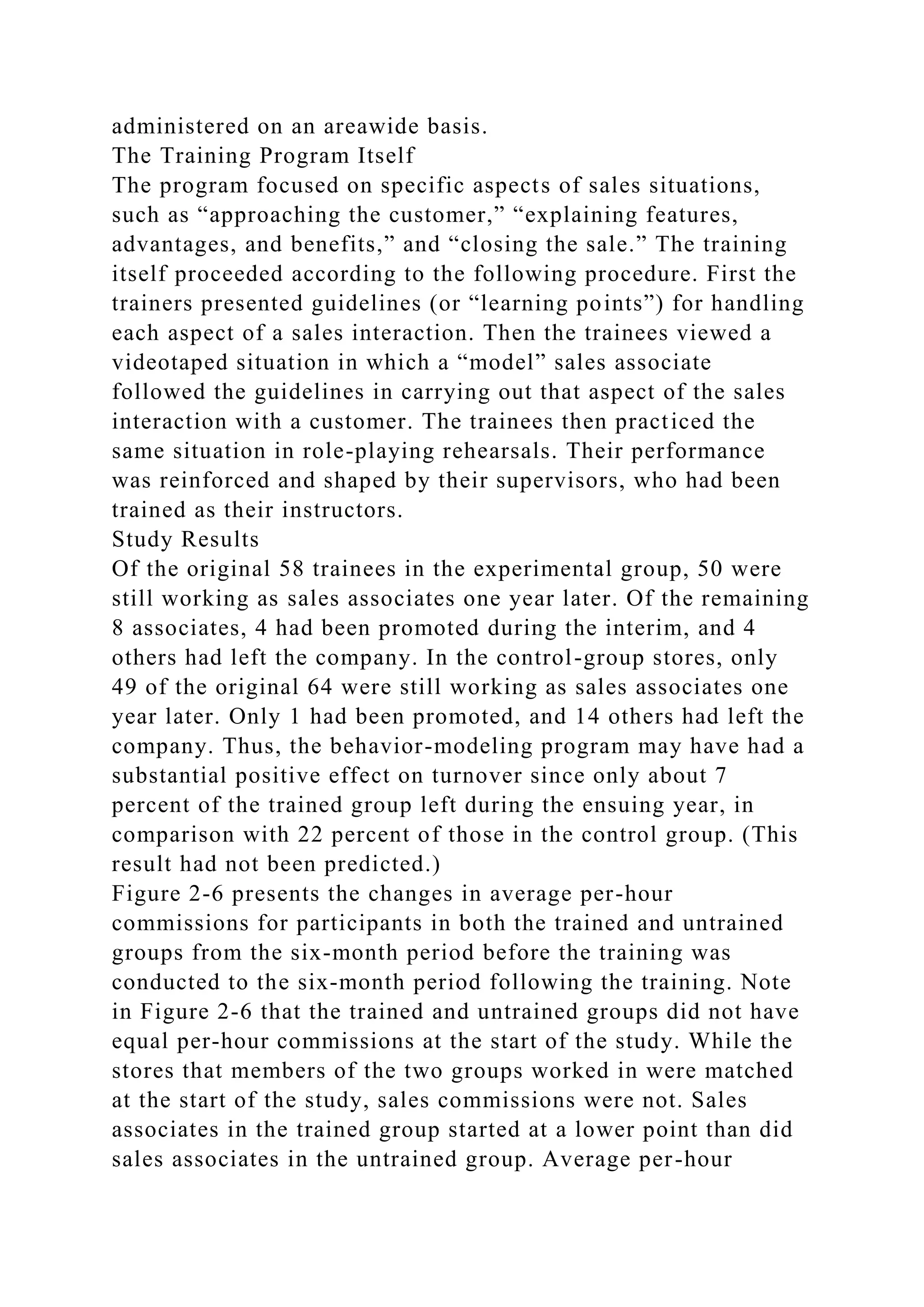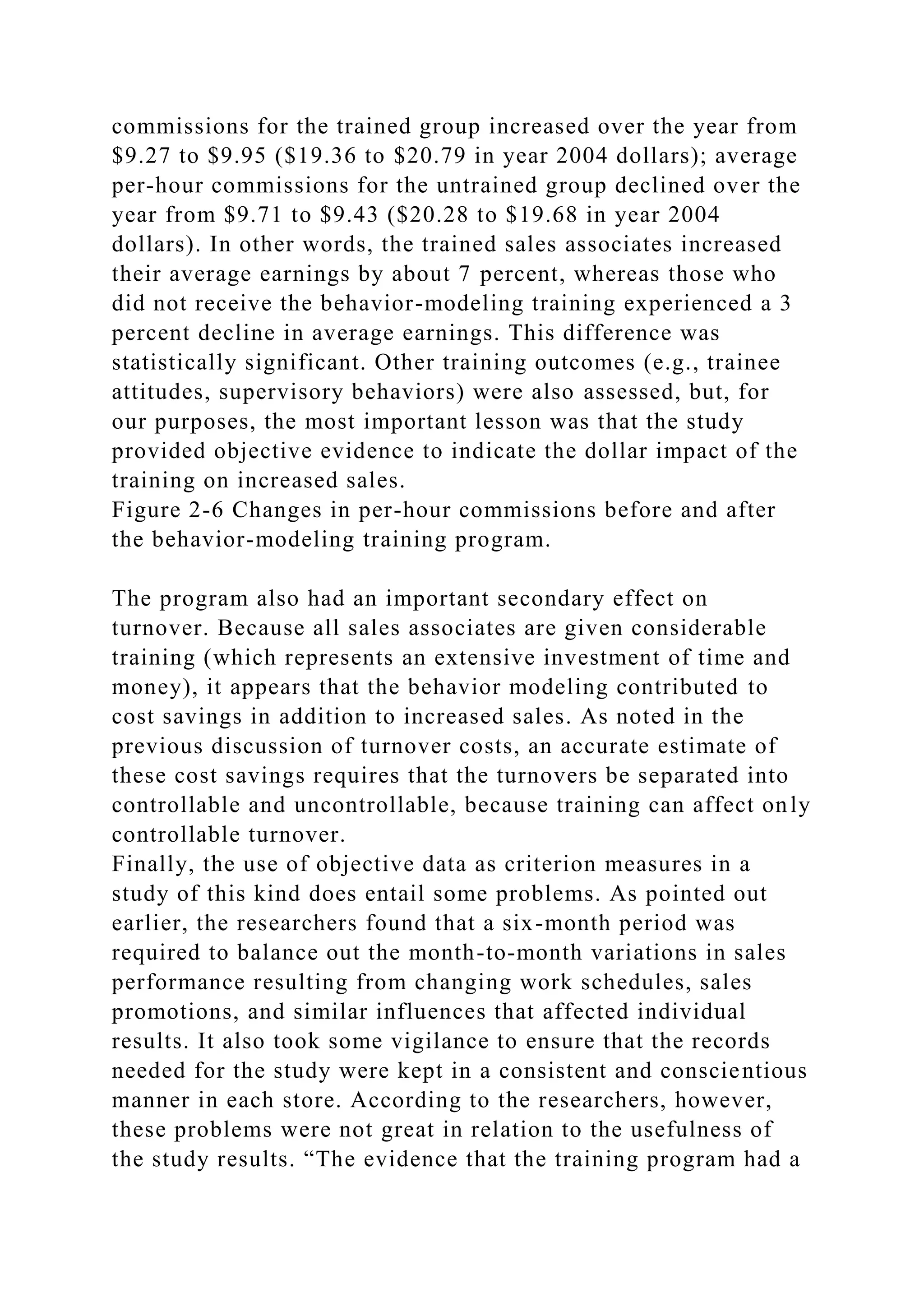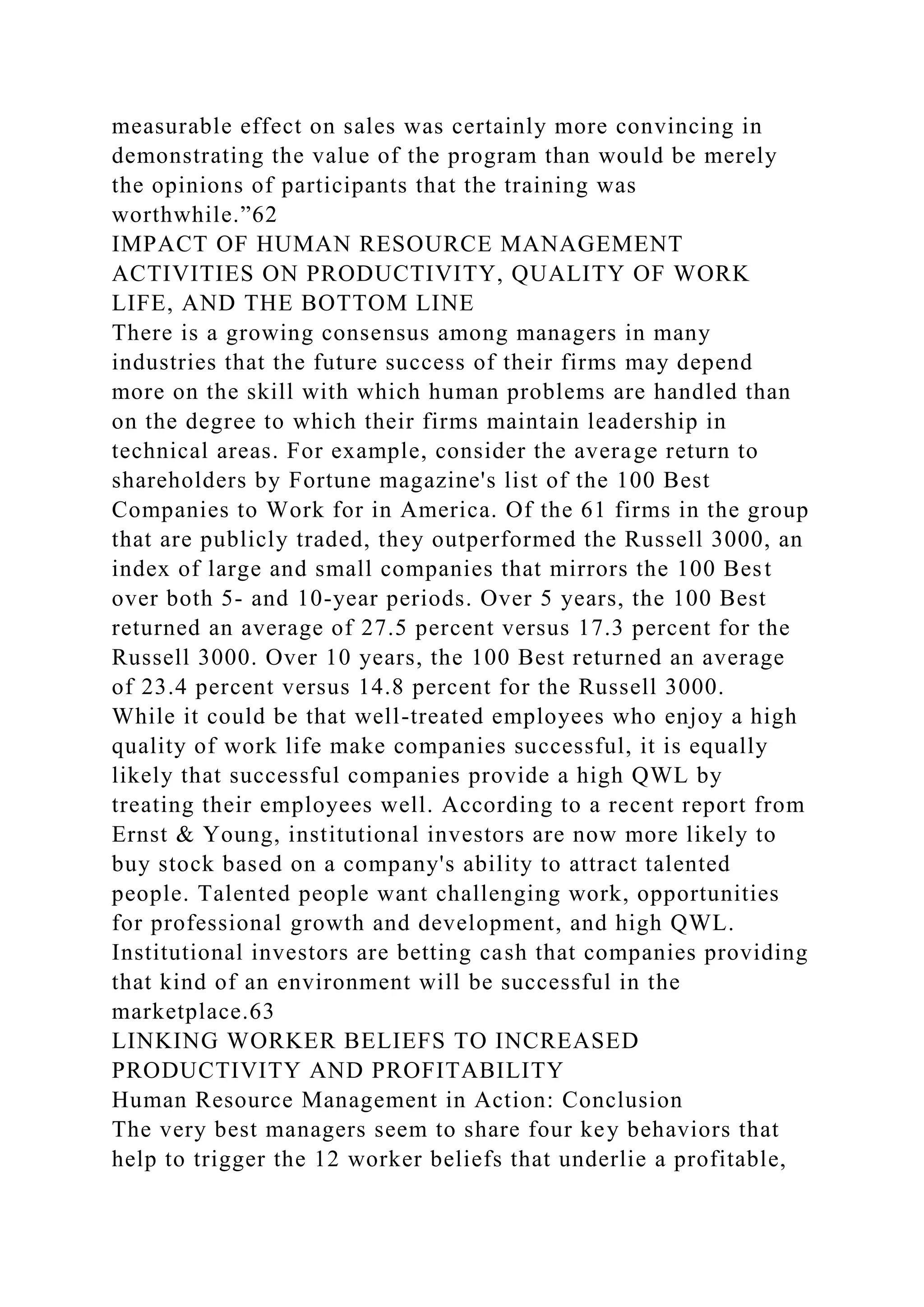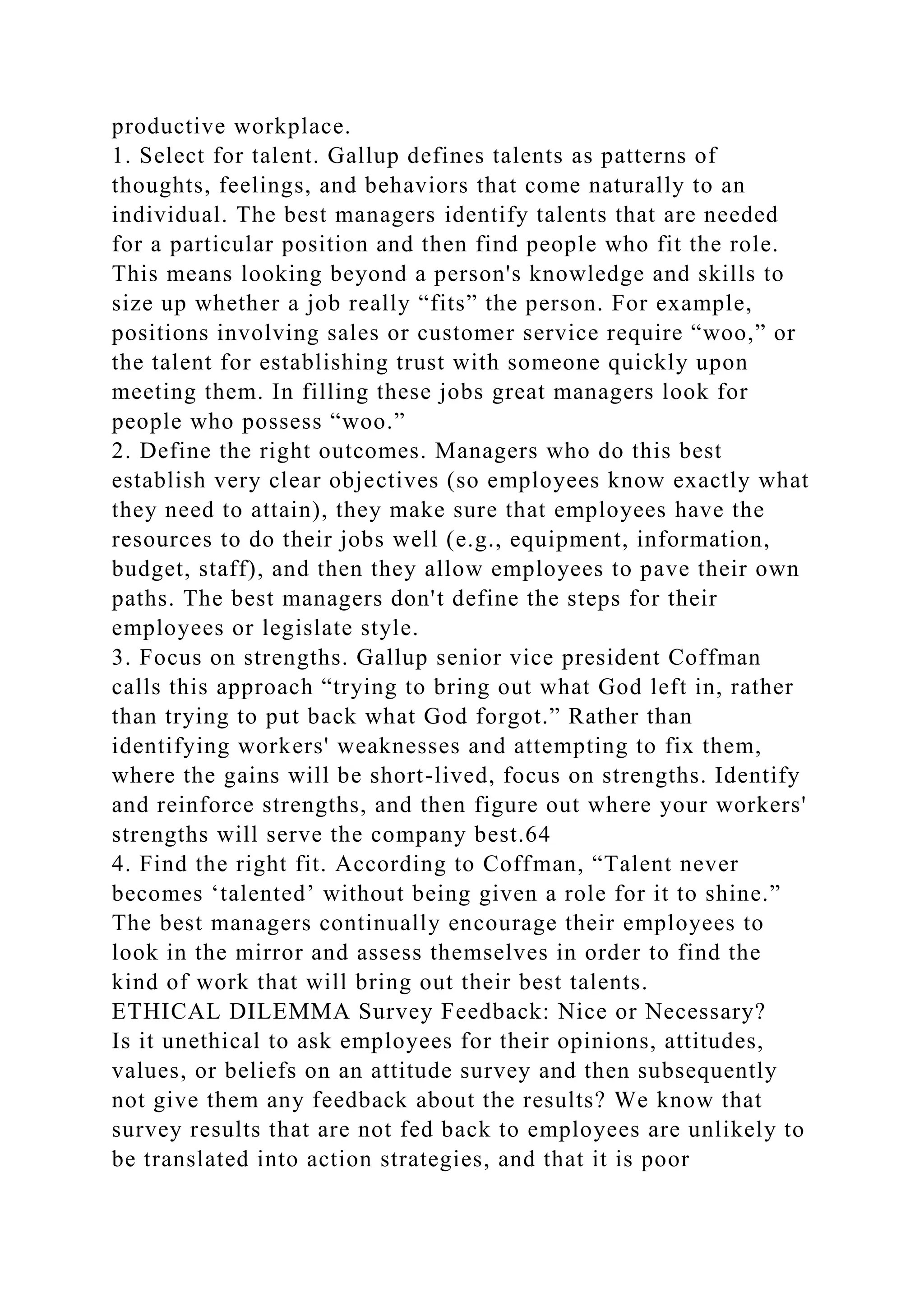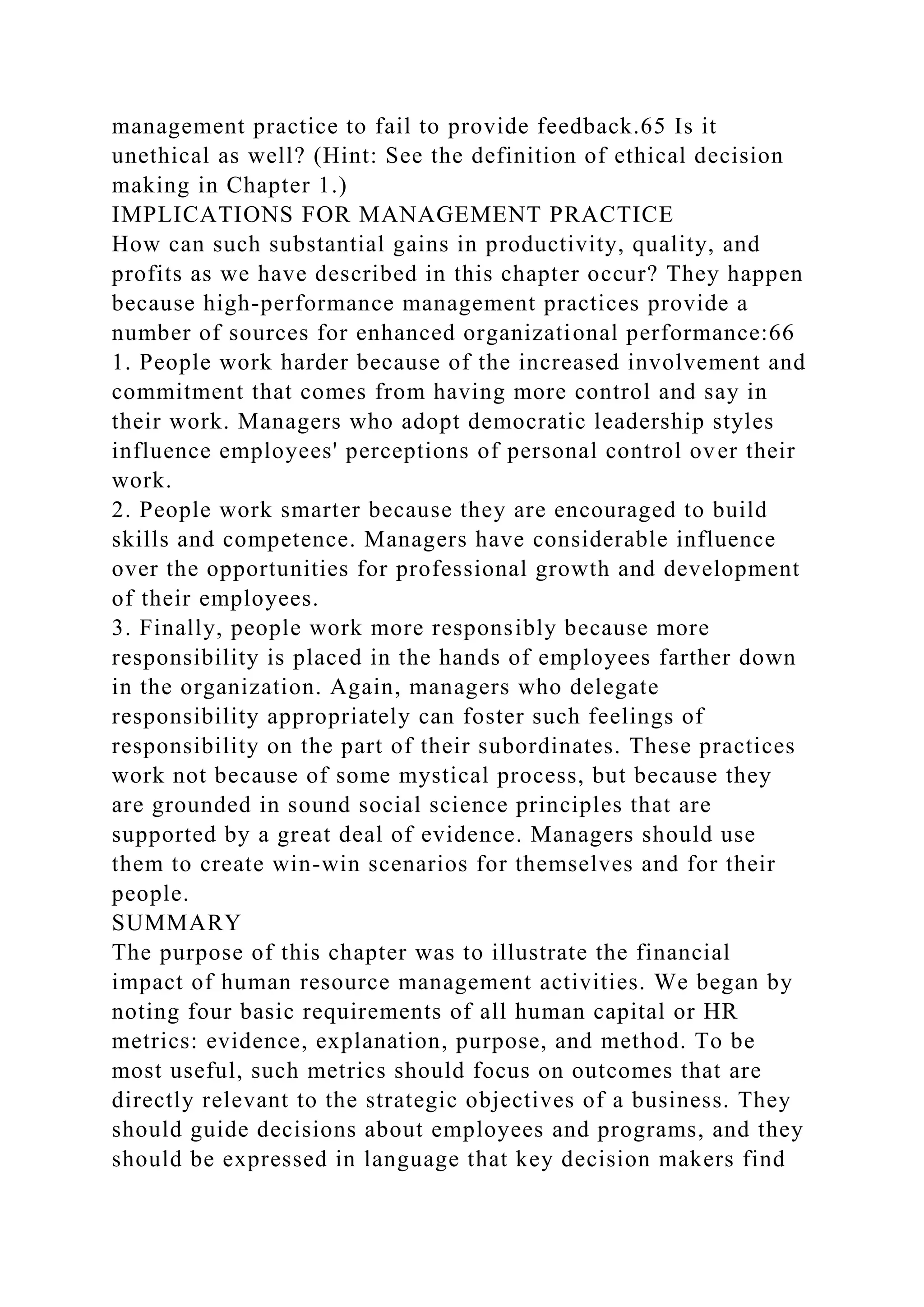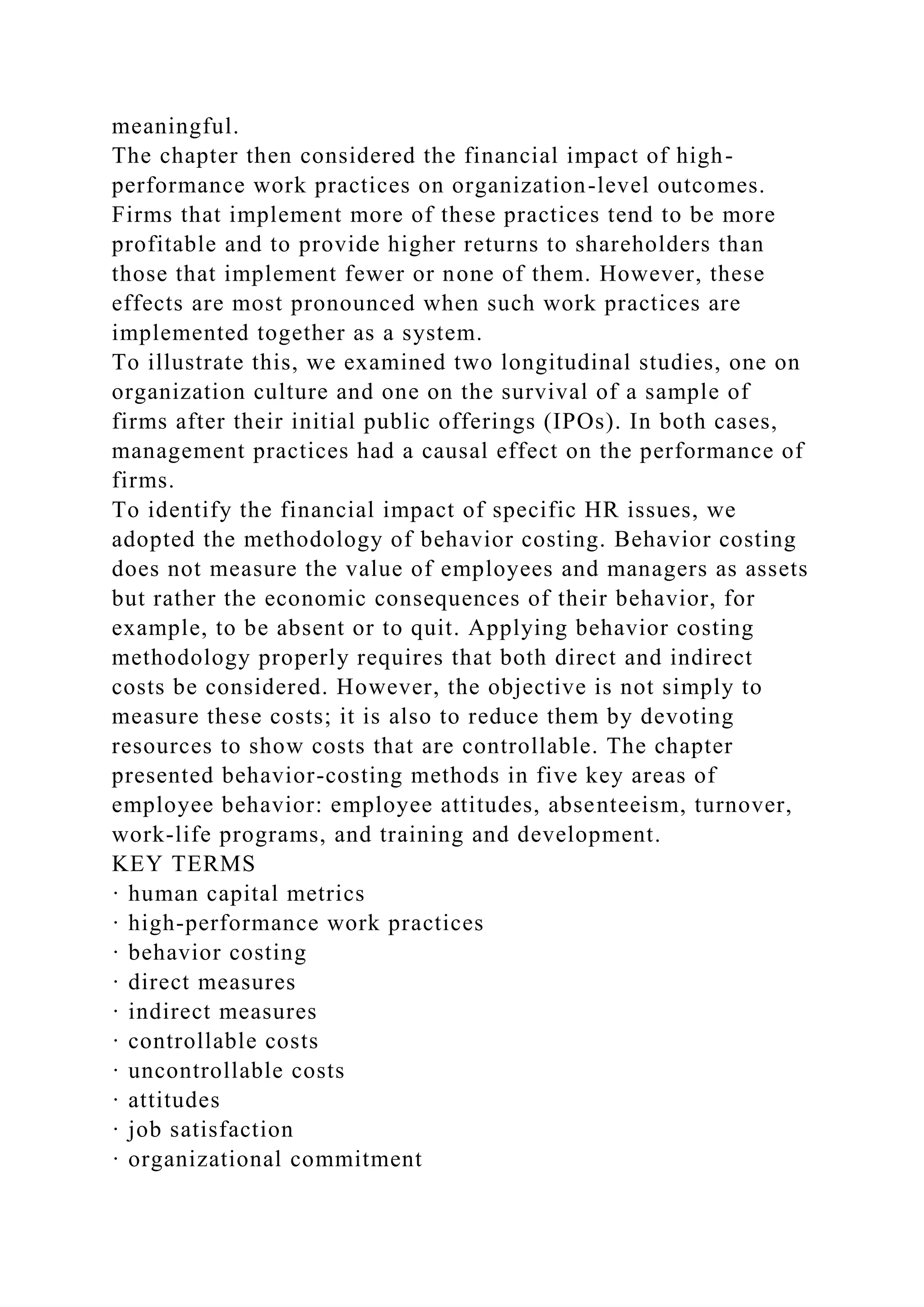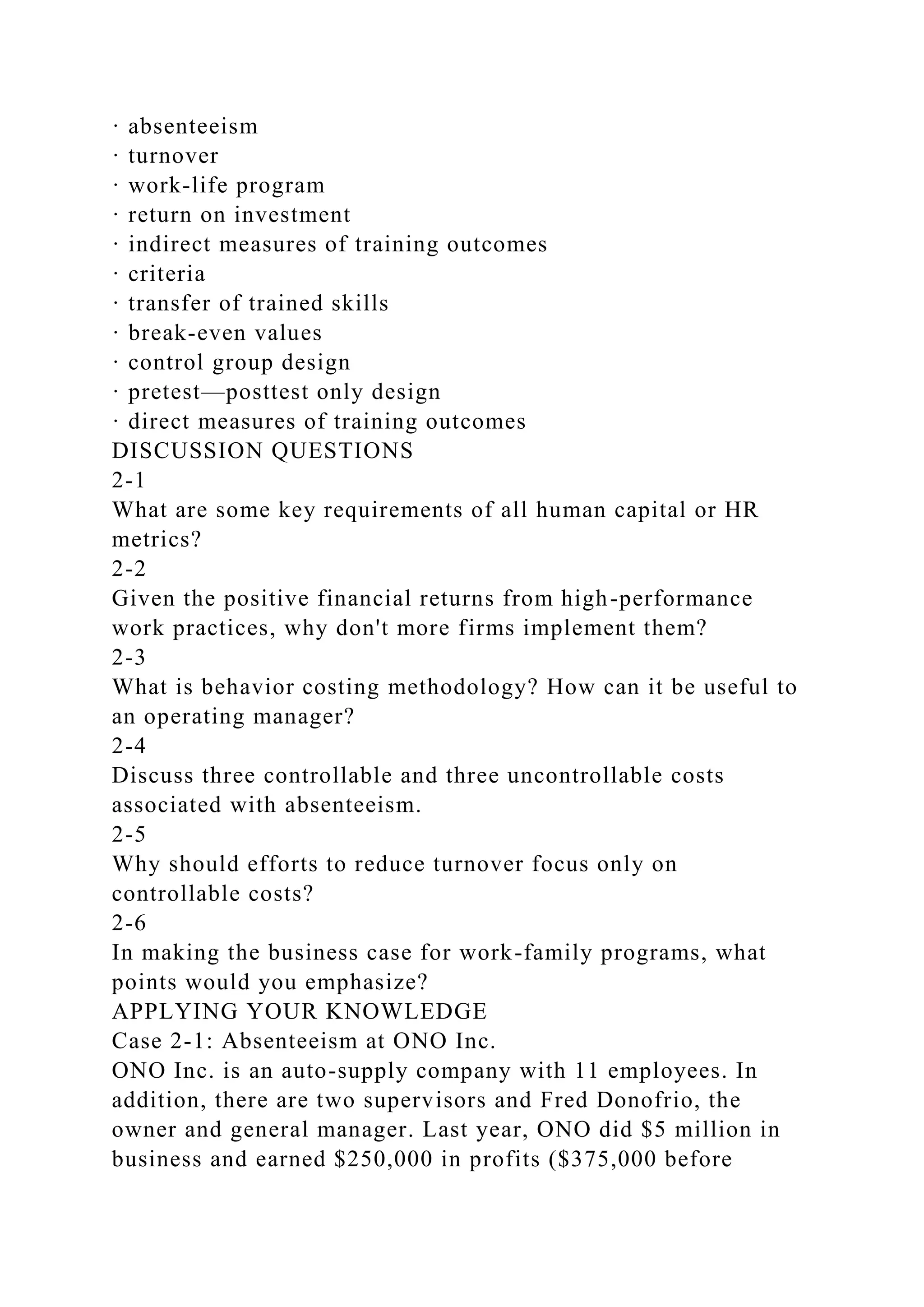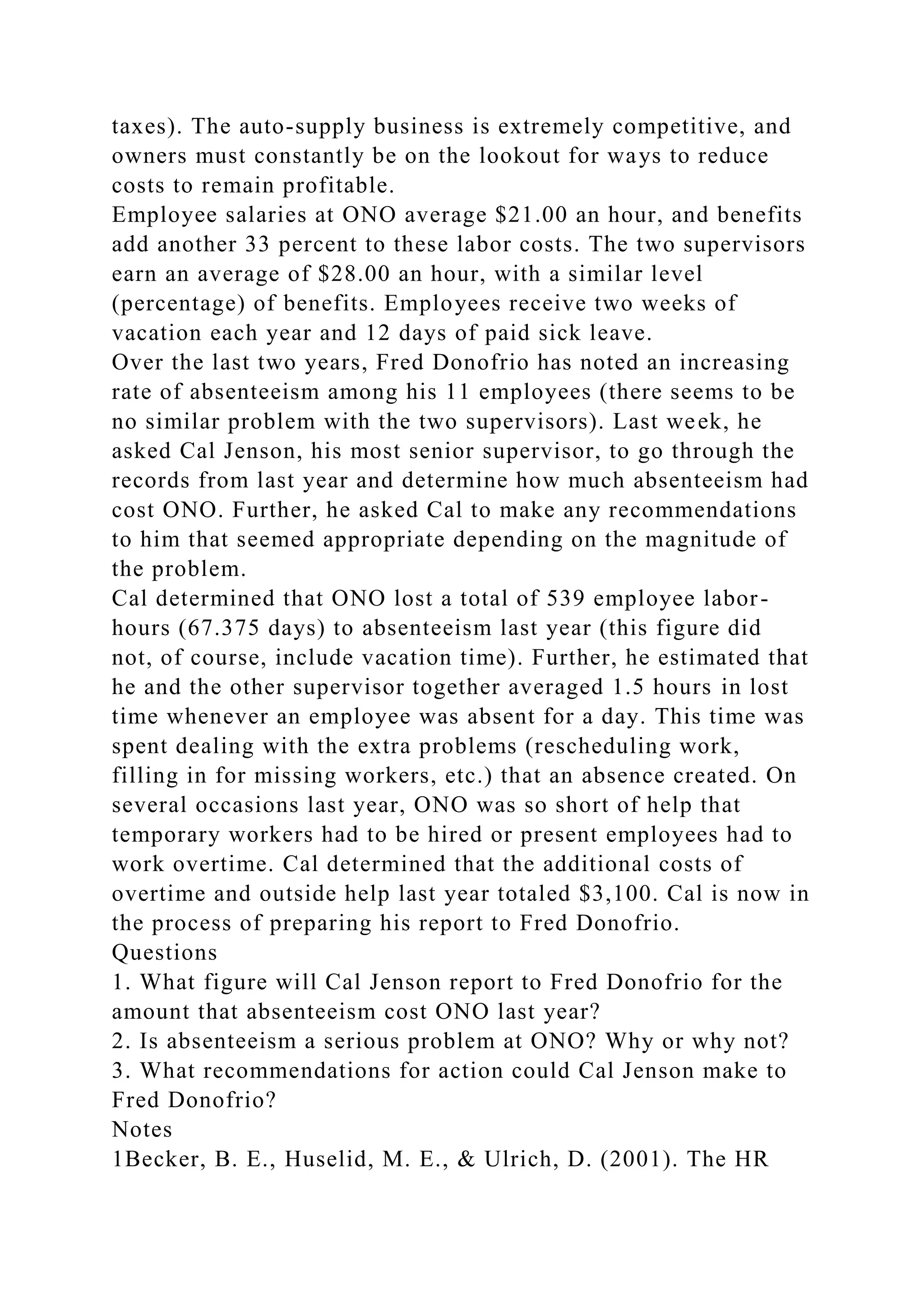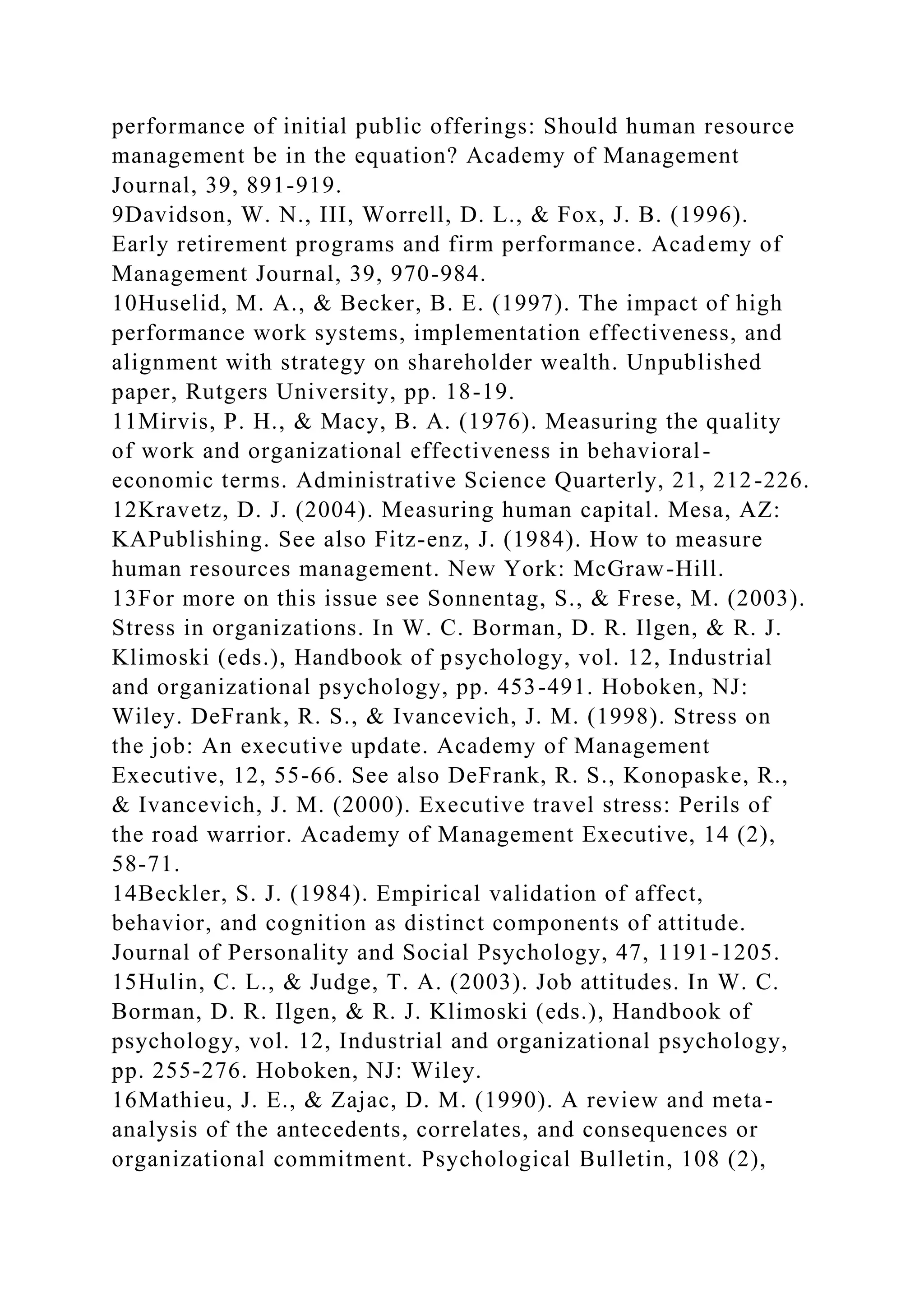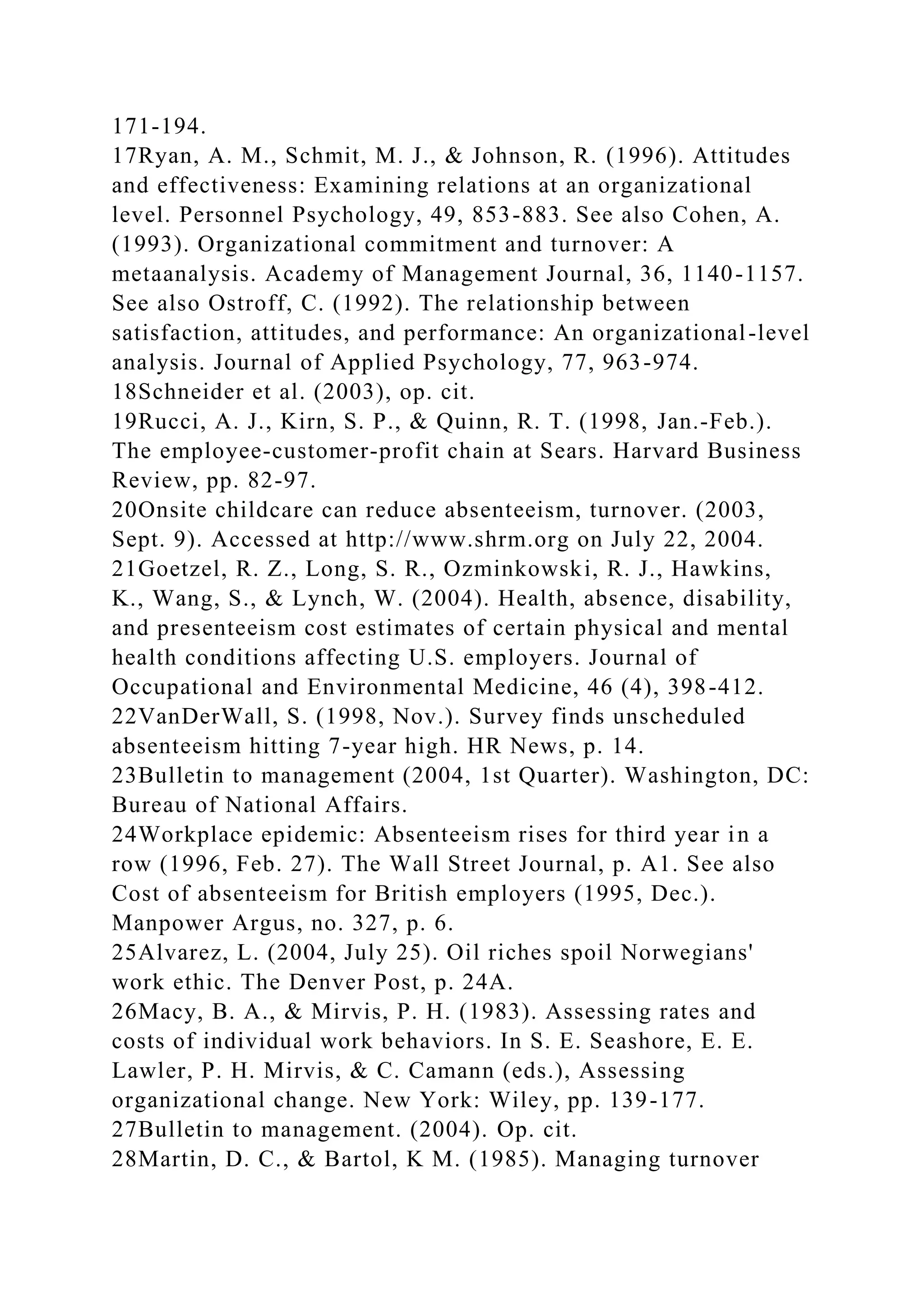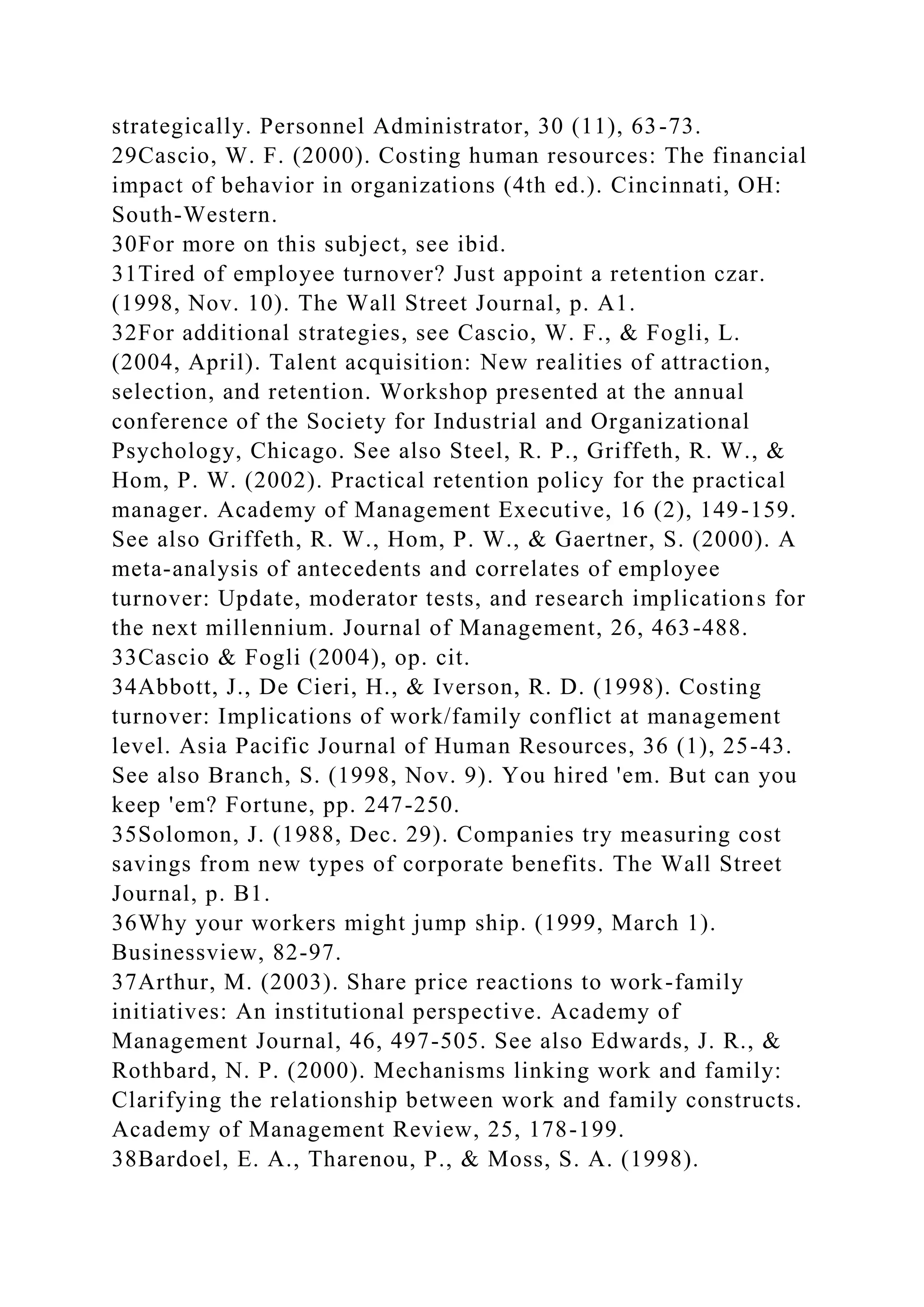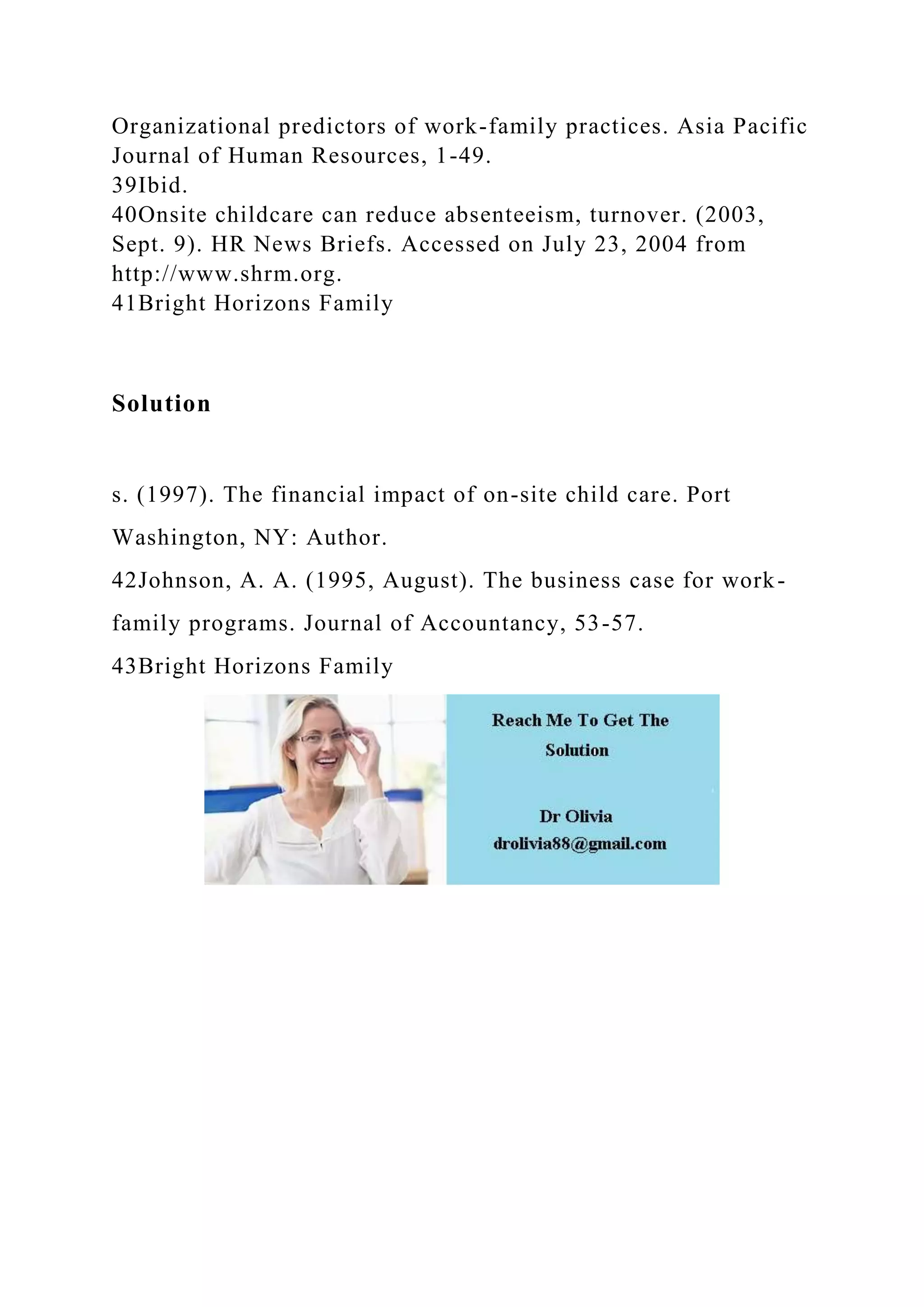This document discusses the importance of managing diversity in the workplace as a business strategy that enhances performance and competitive advantage. It outlines how diversity can help organizations expand into global markets, improve brand equity, support human resource strategies, enhance corporate image, and increase operational efficiency. The document also emphasizes that workforce diversity is not just a corporate obligation but a necessity for surviving in an increasingly globalized and service-oriented economy.
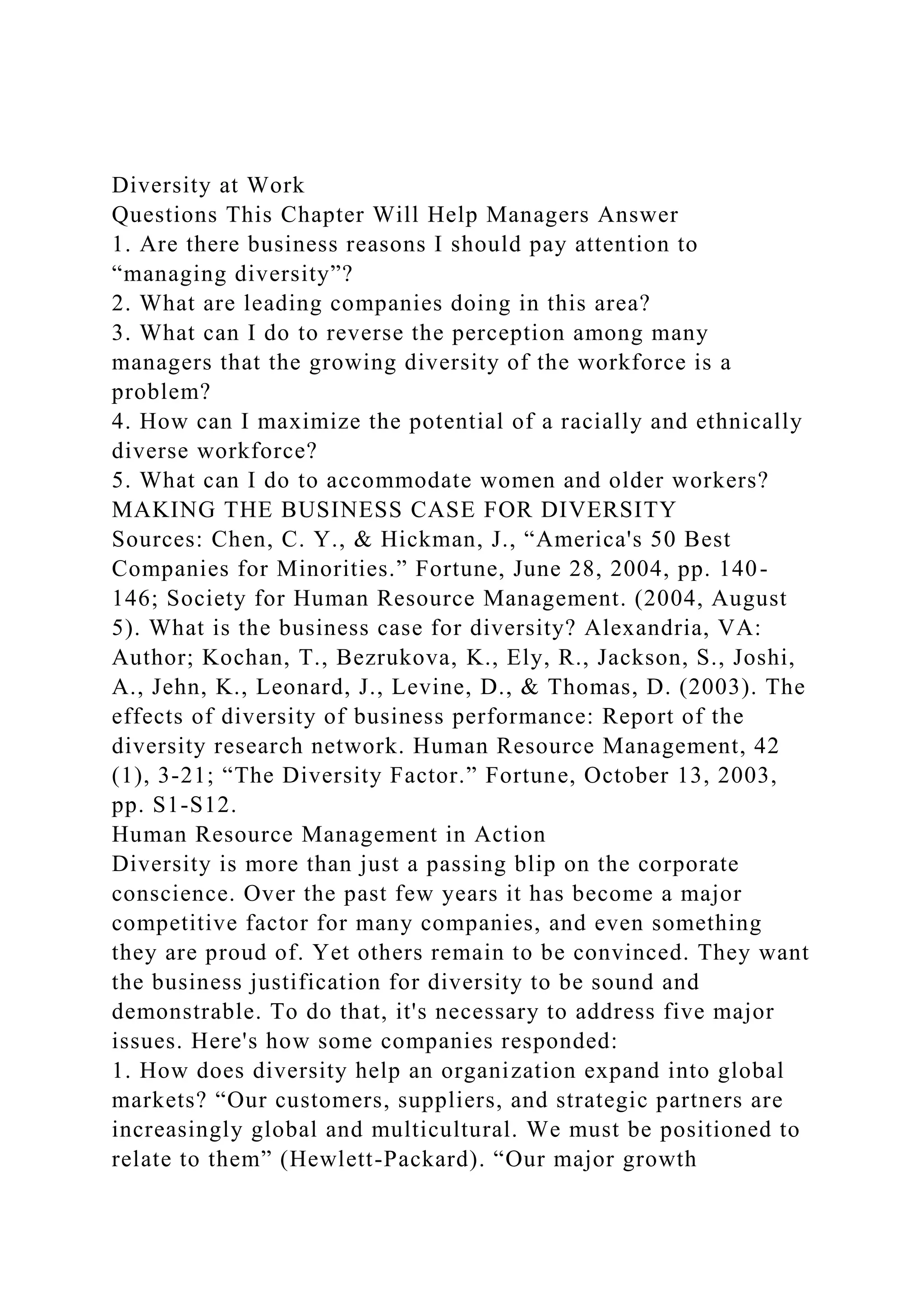
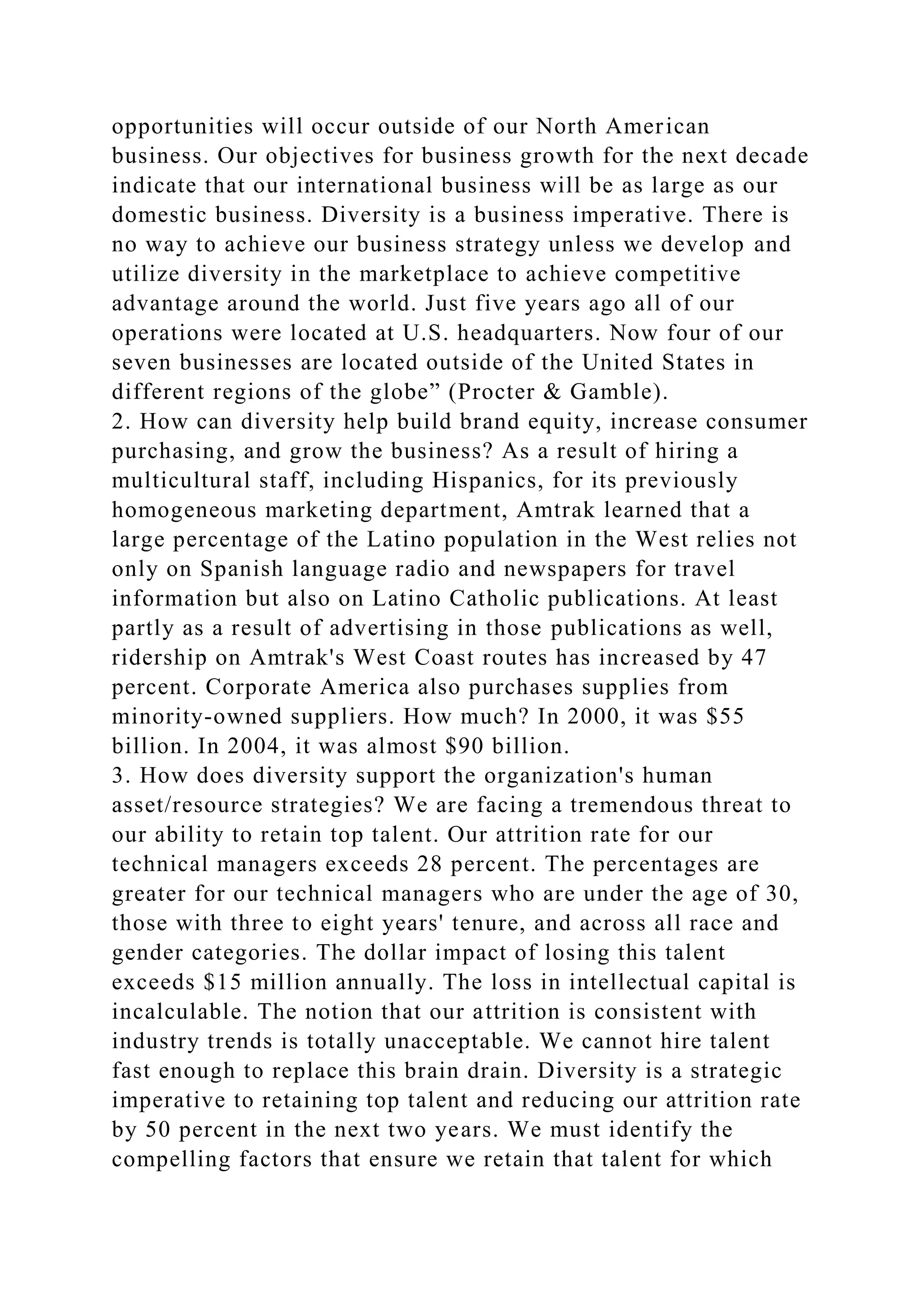

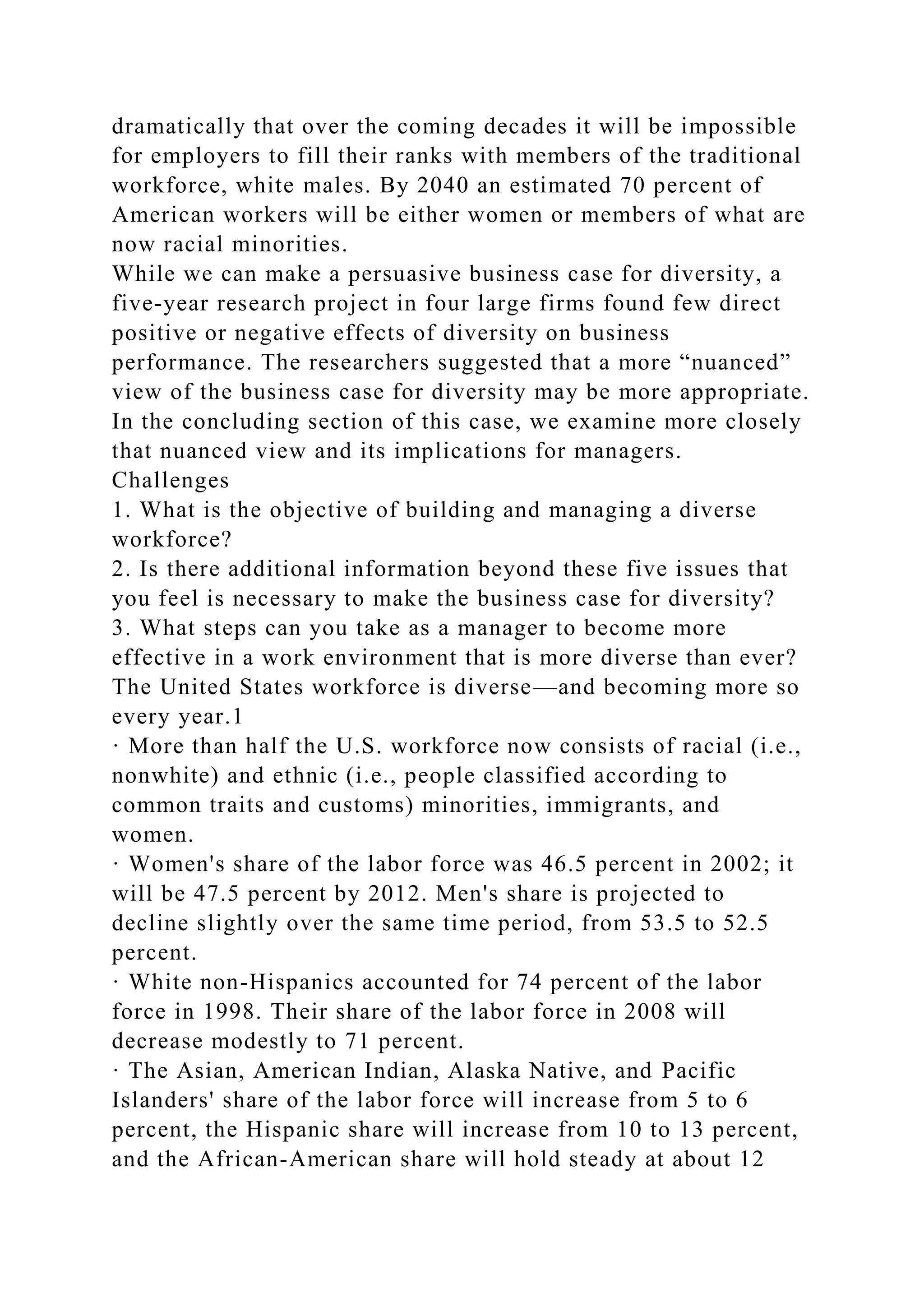
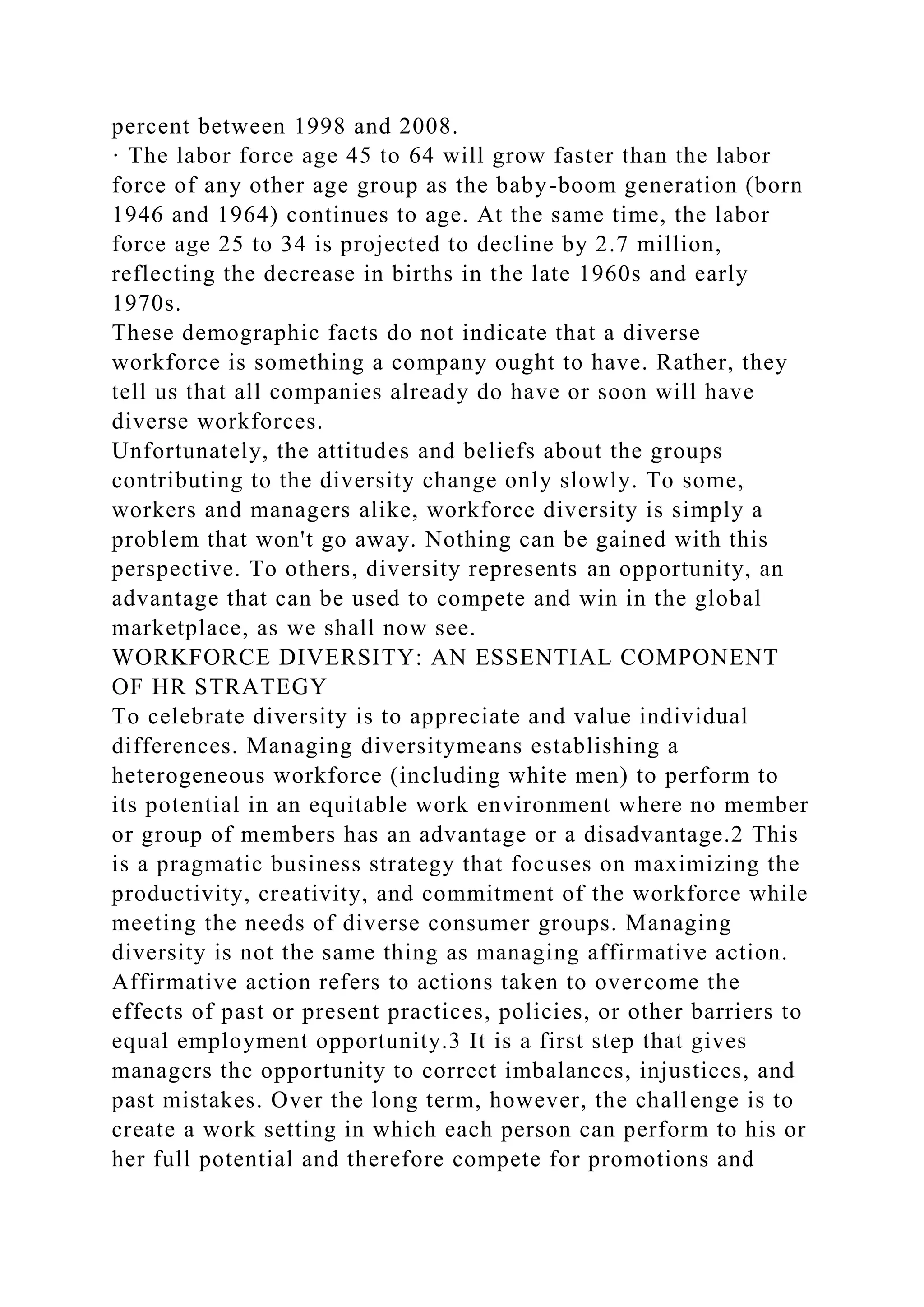
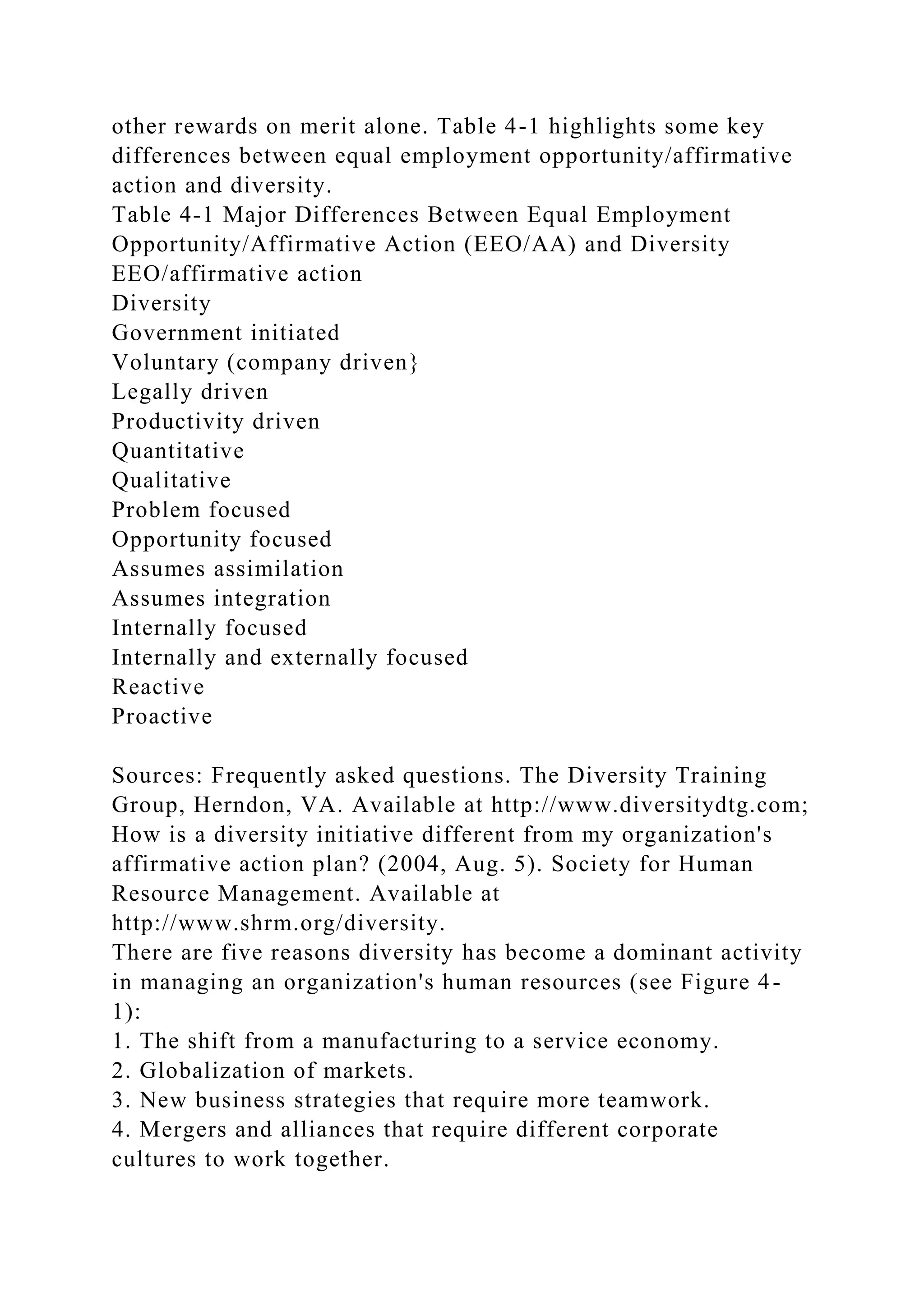
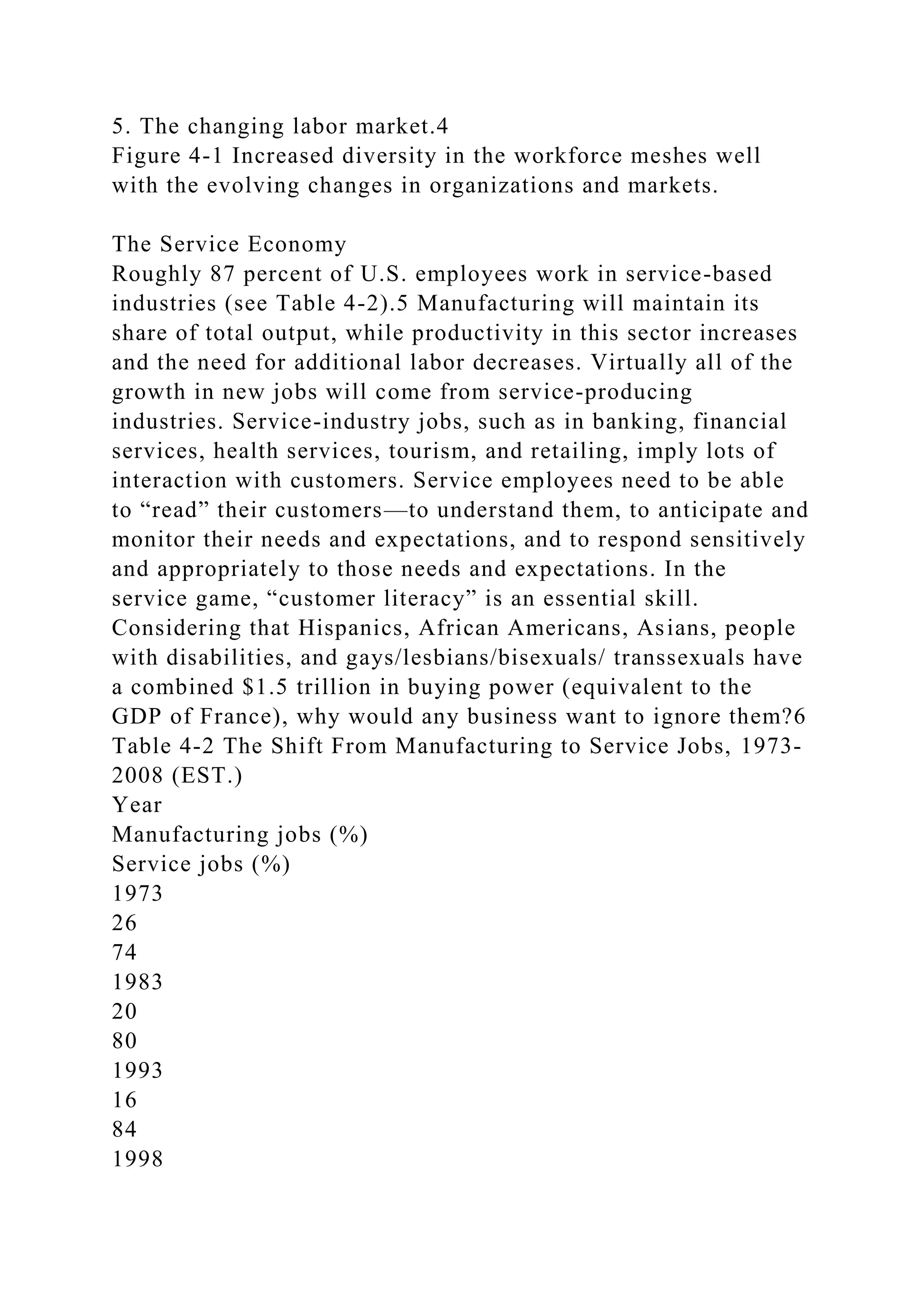
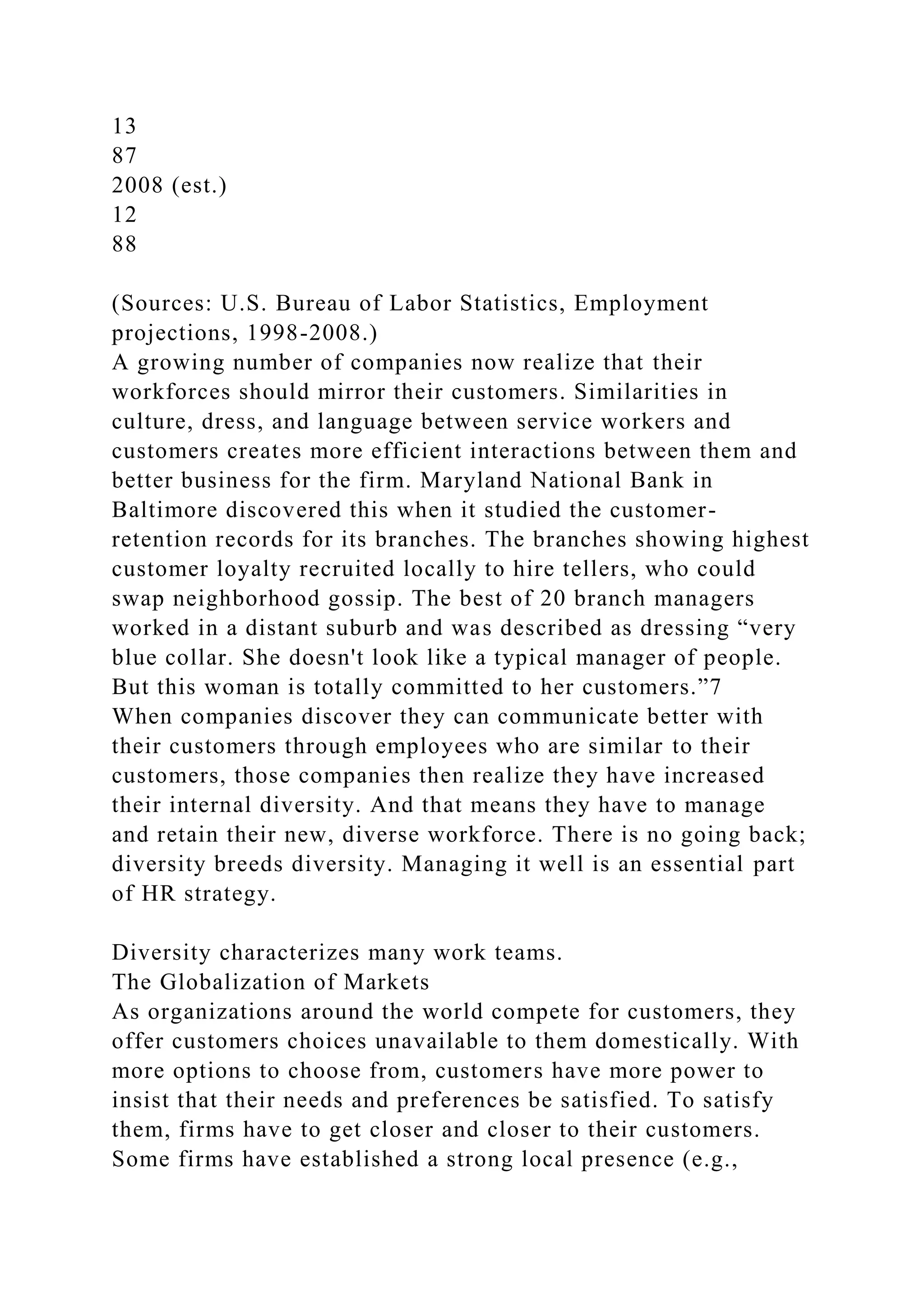
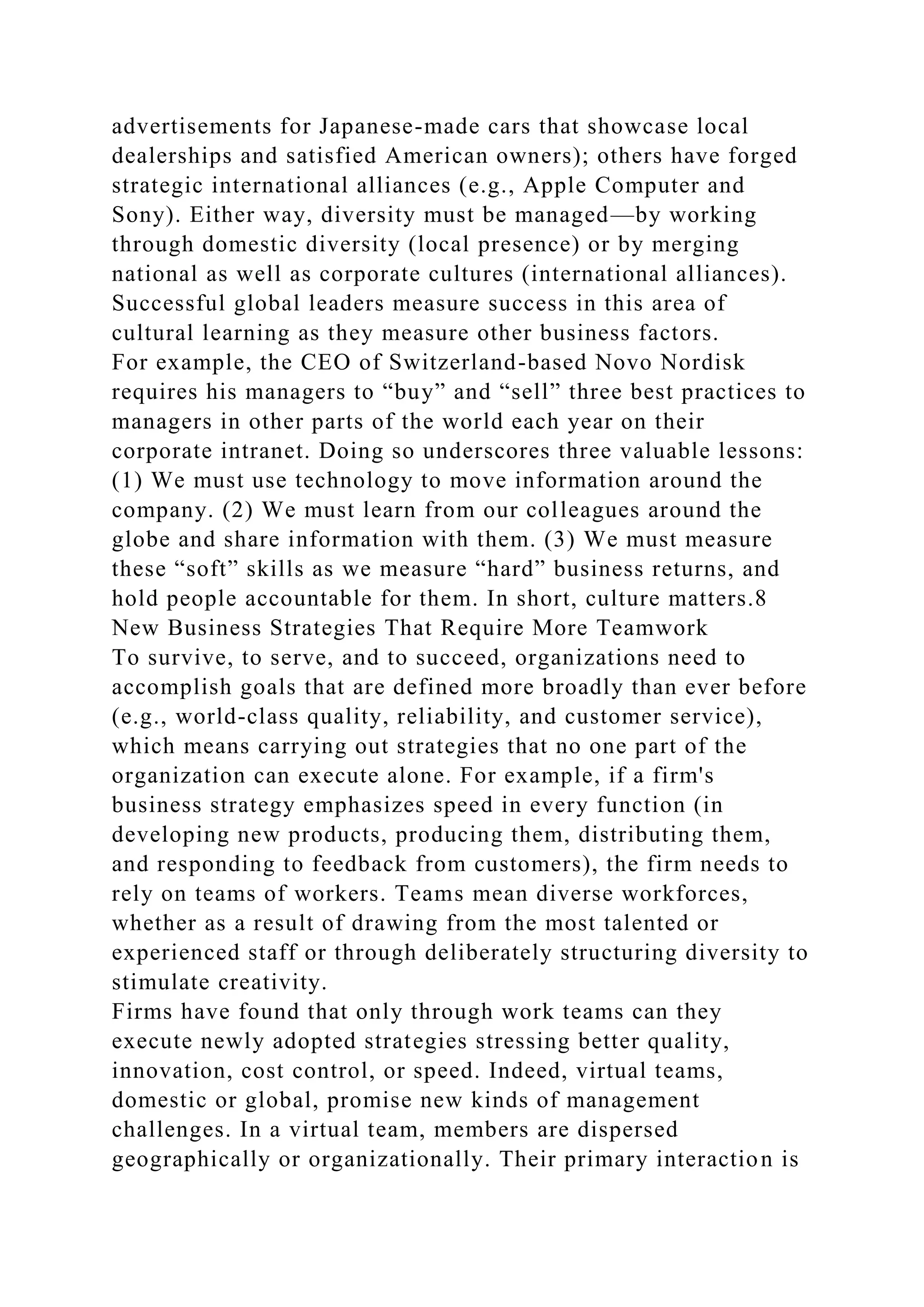
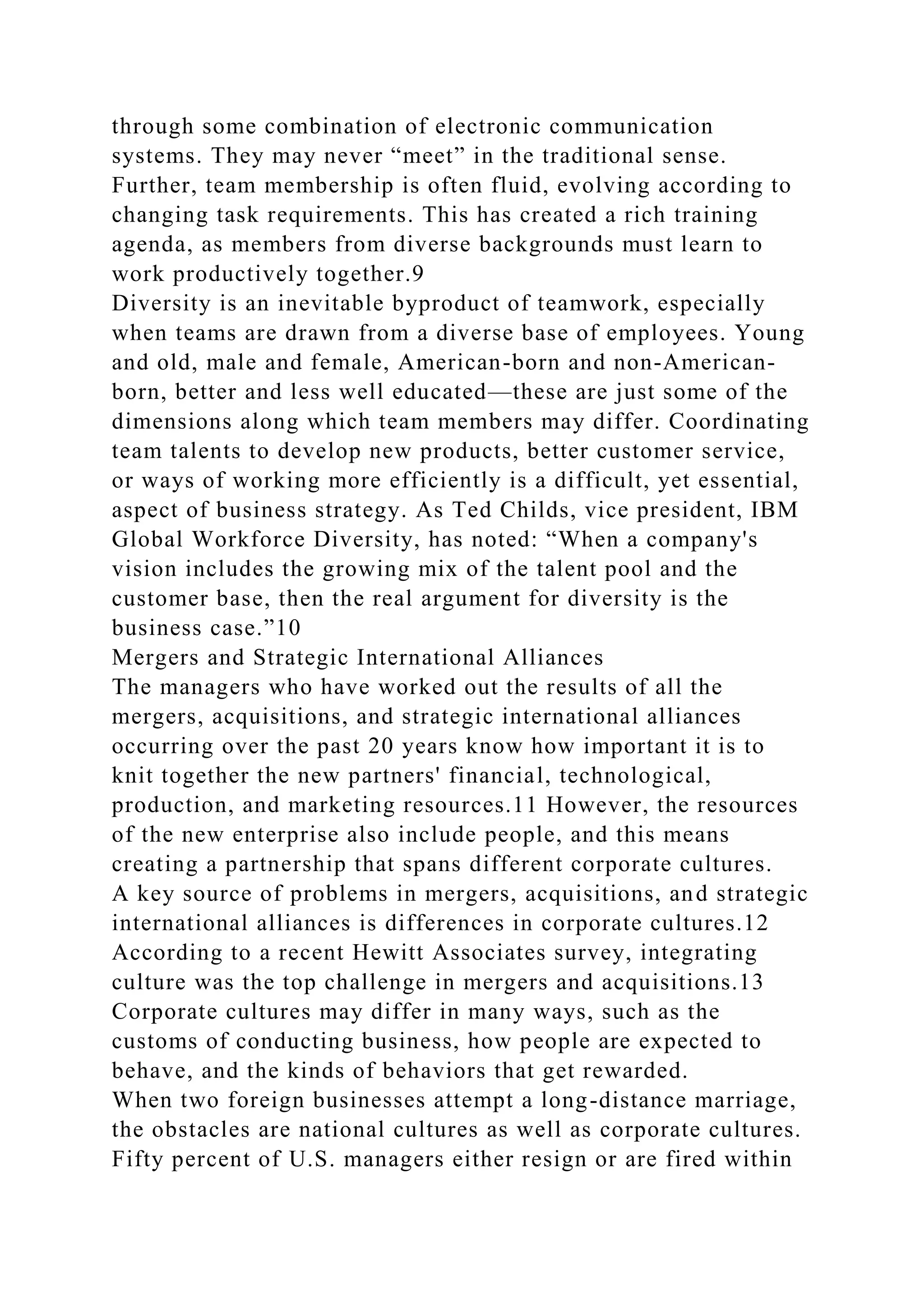

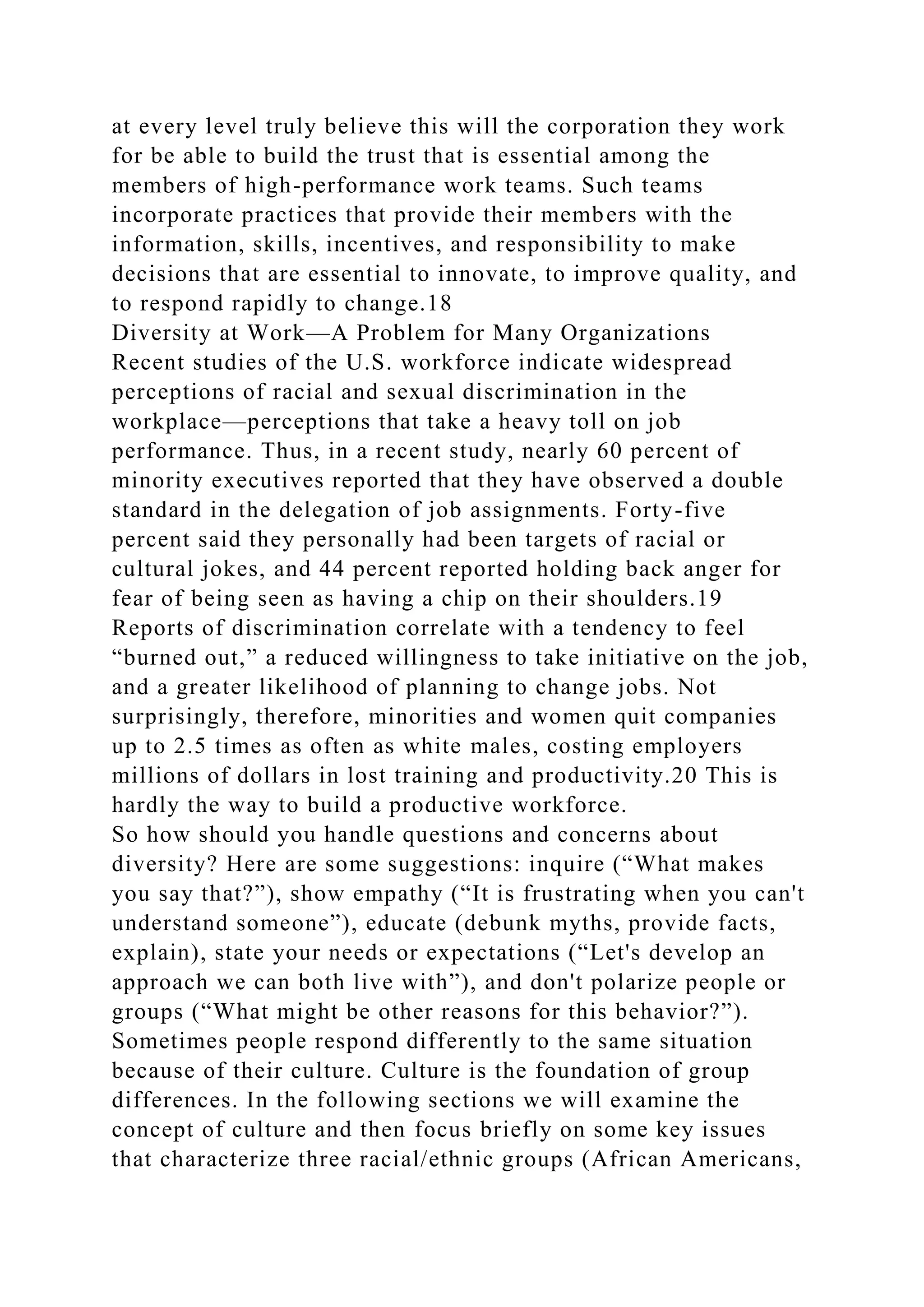
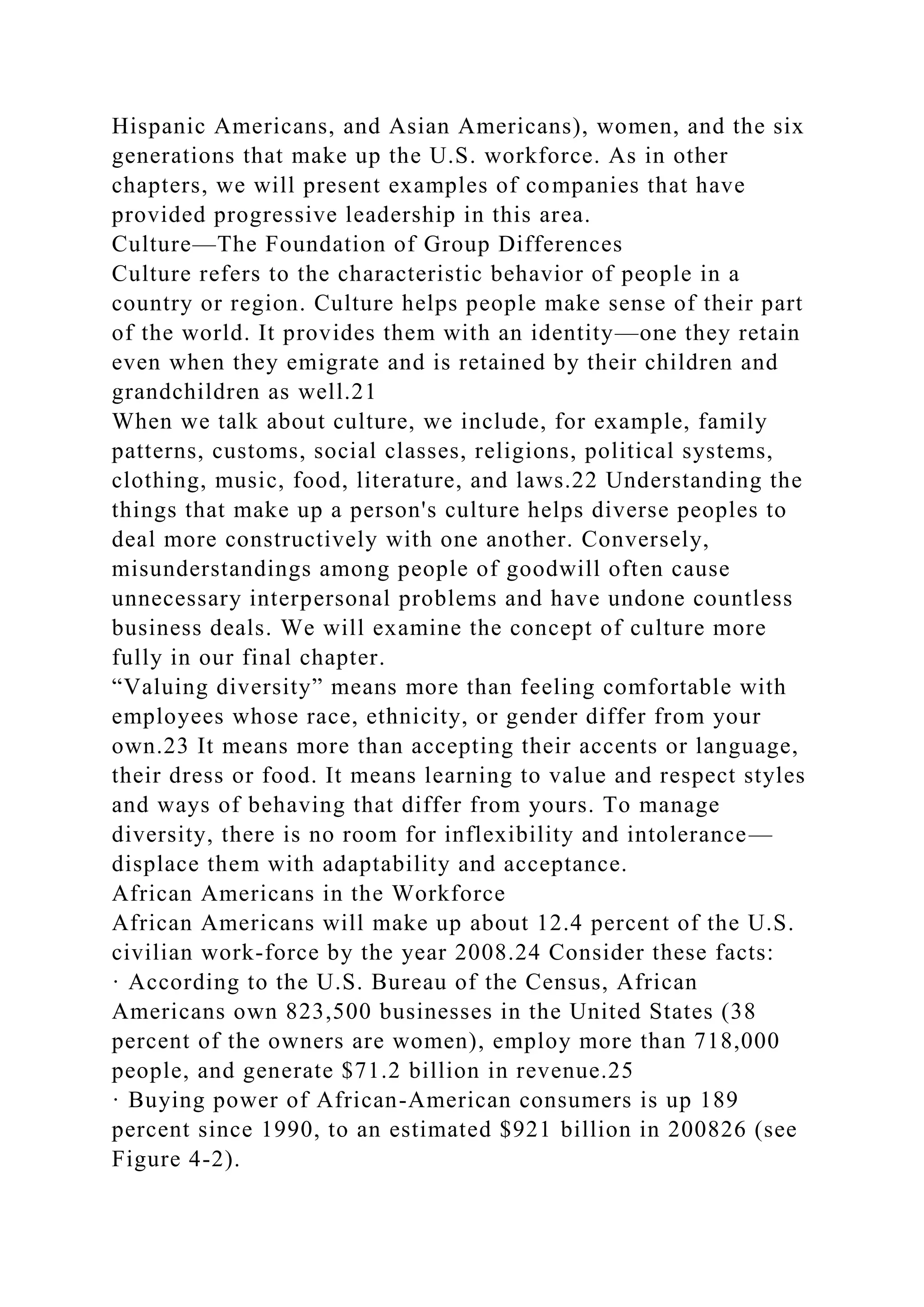
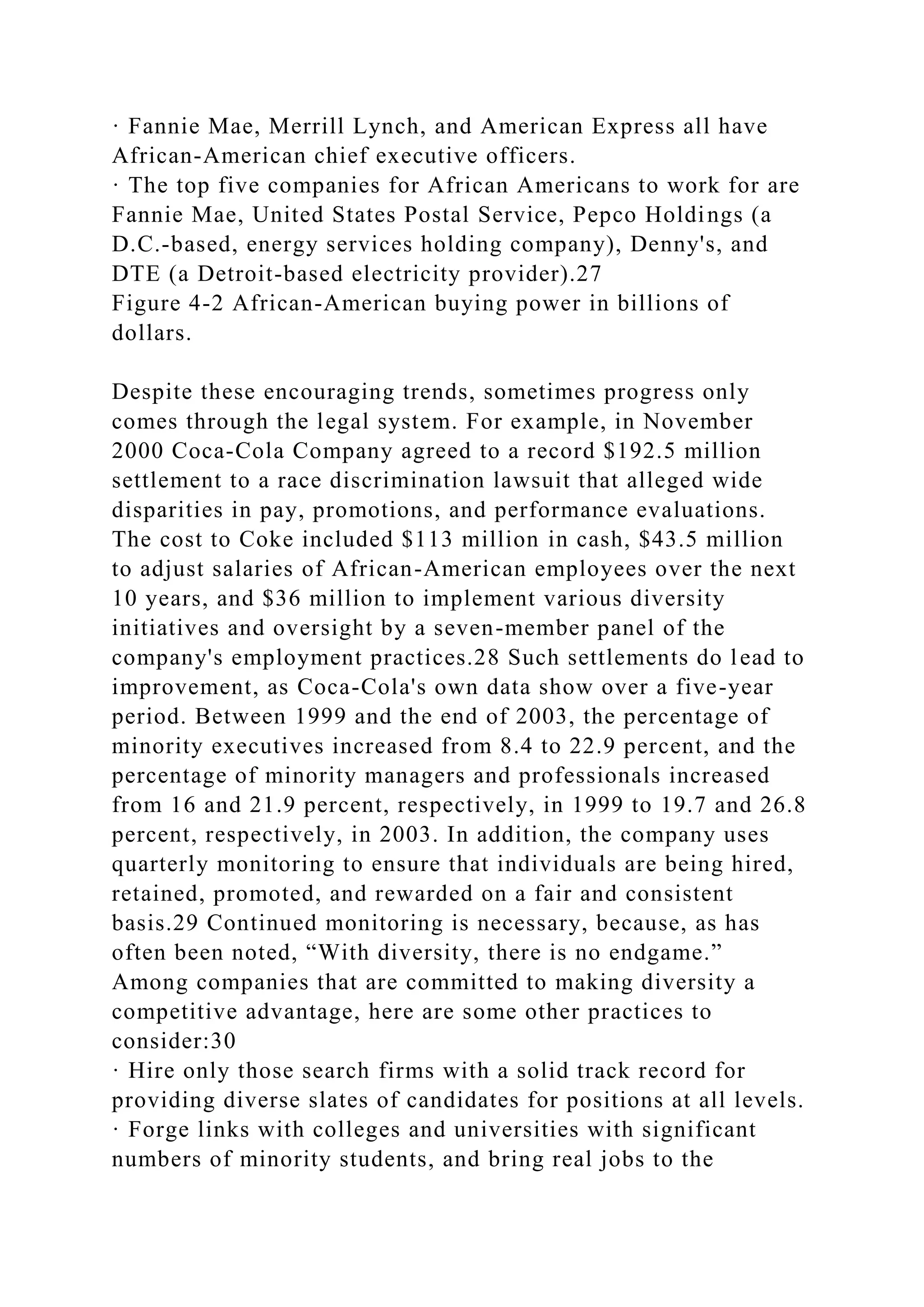
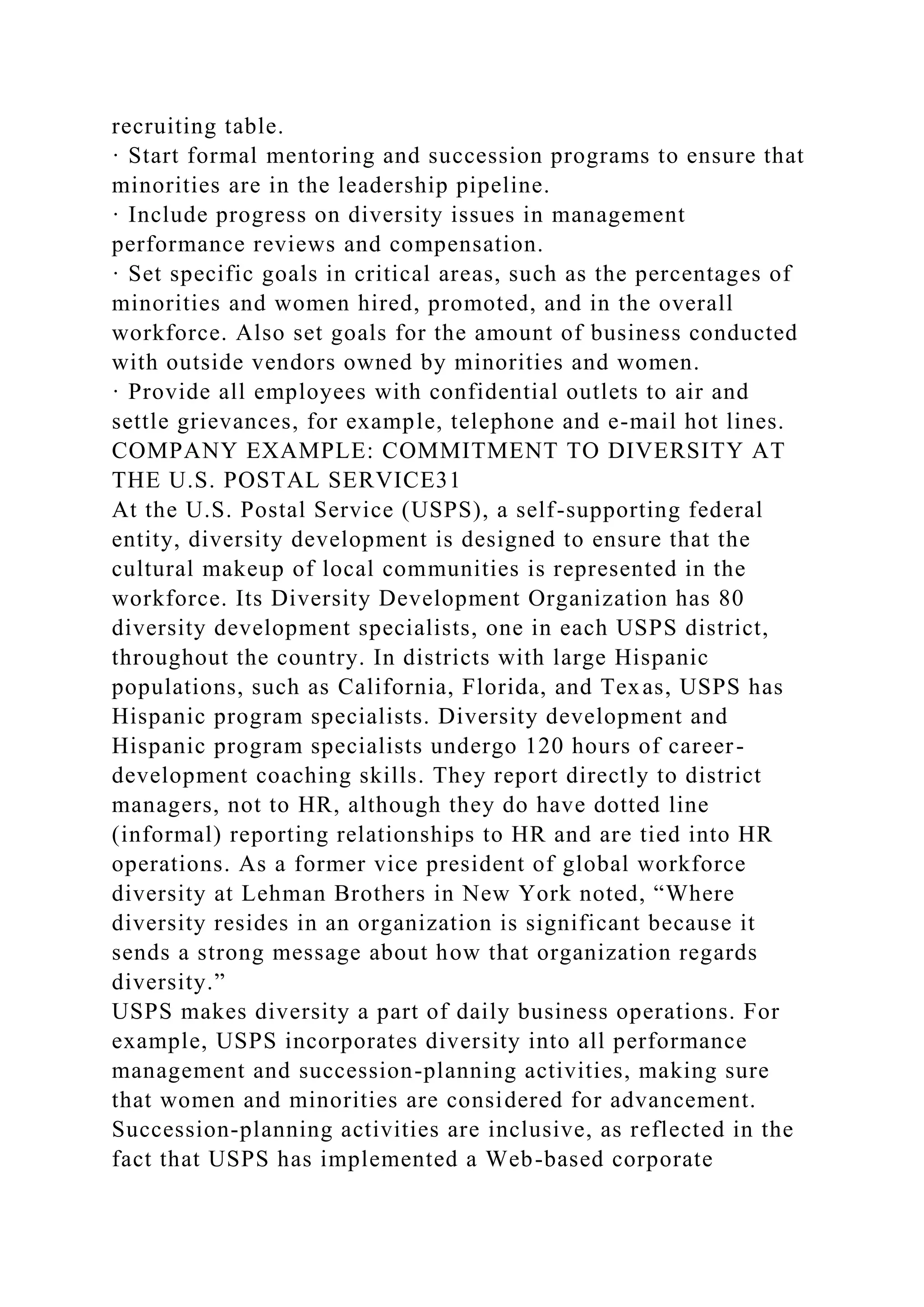
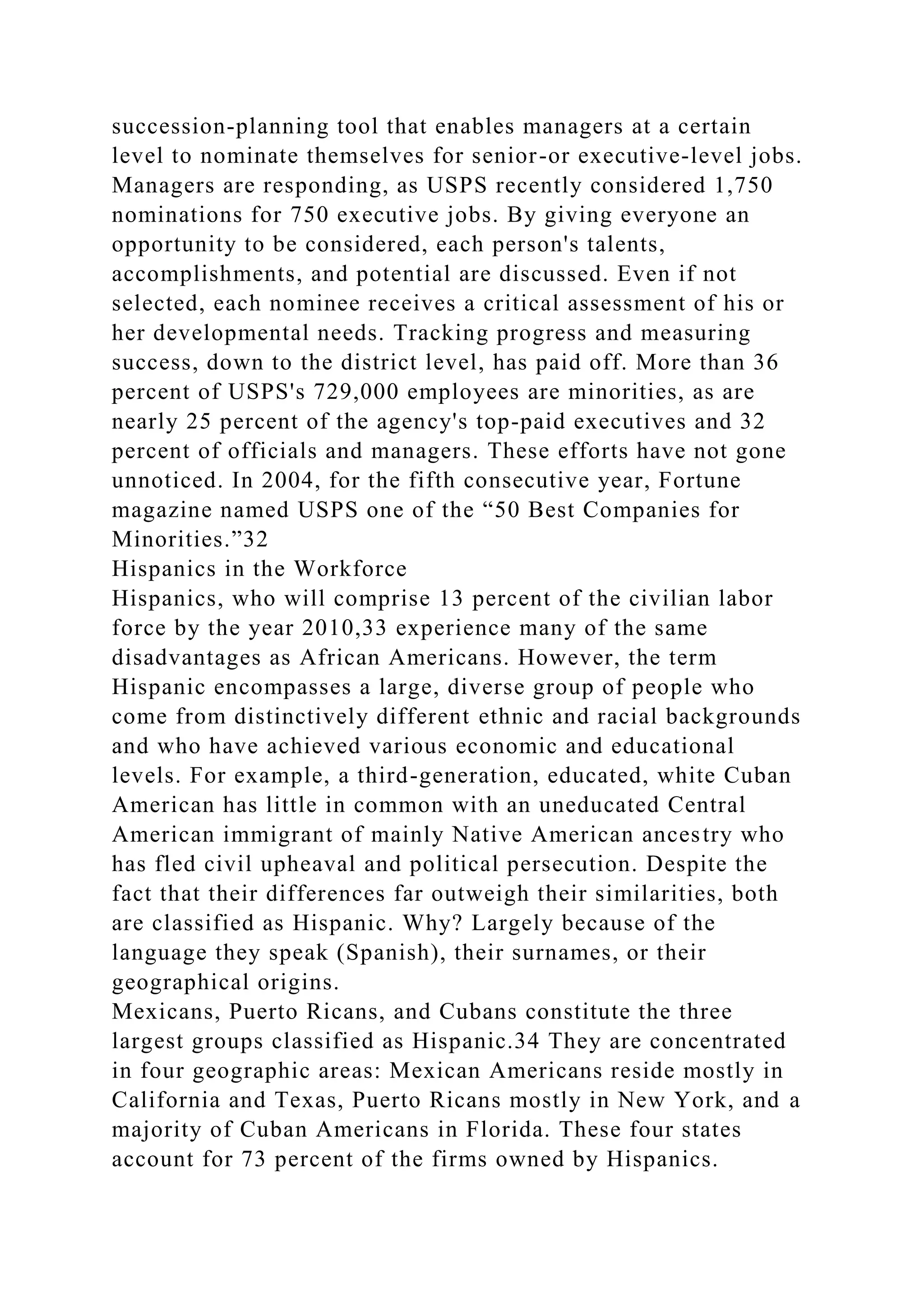
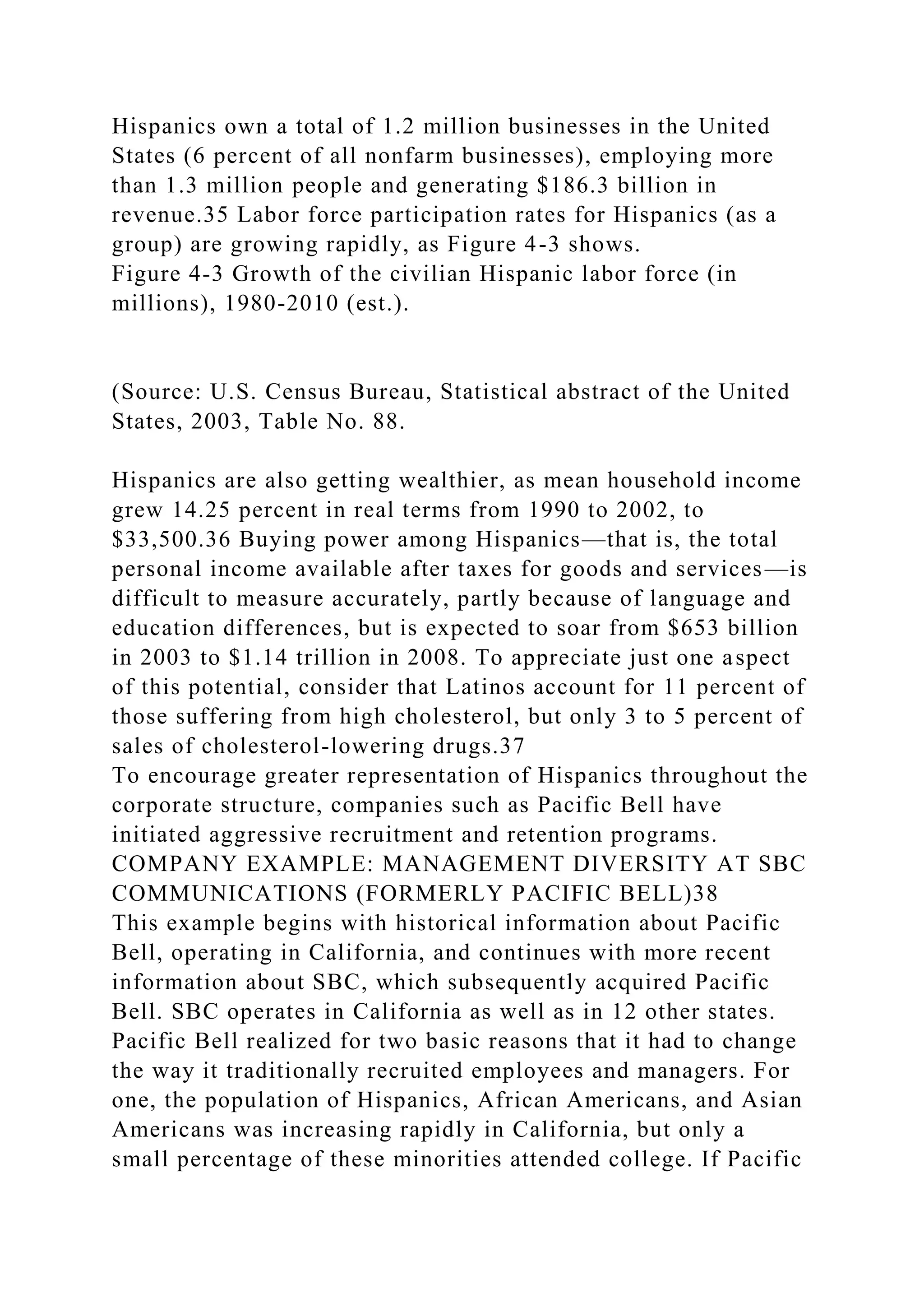
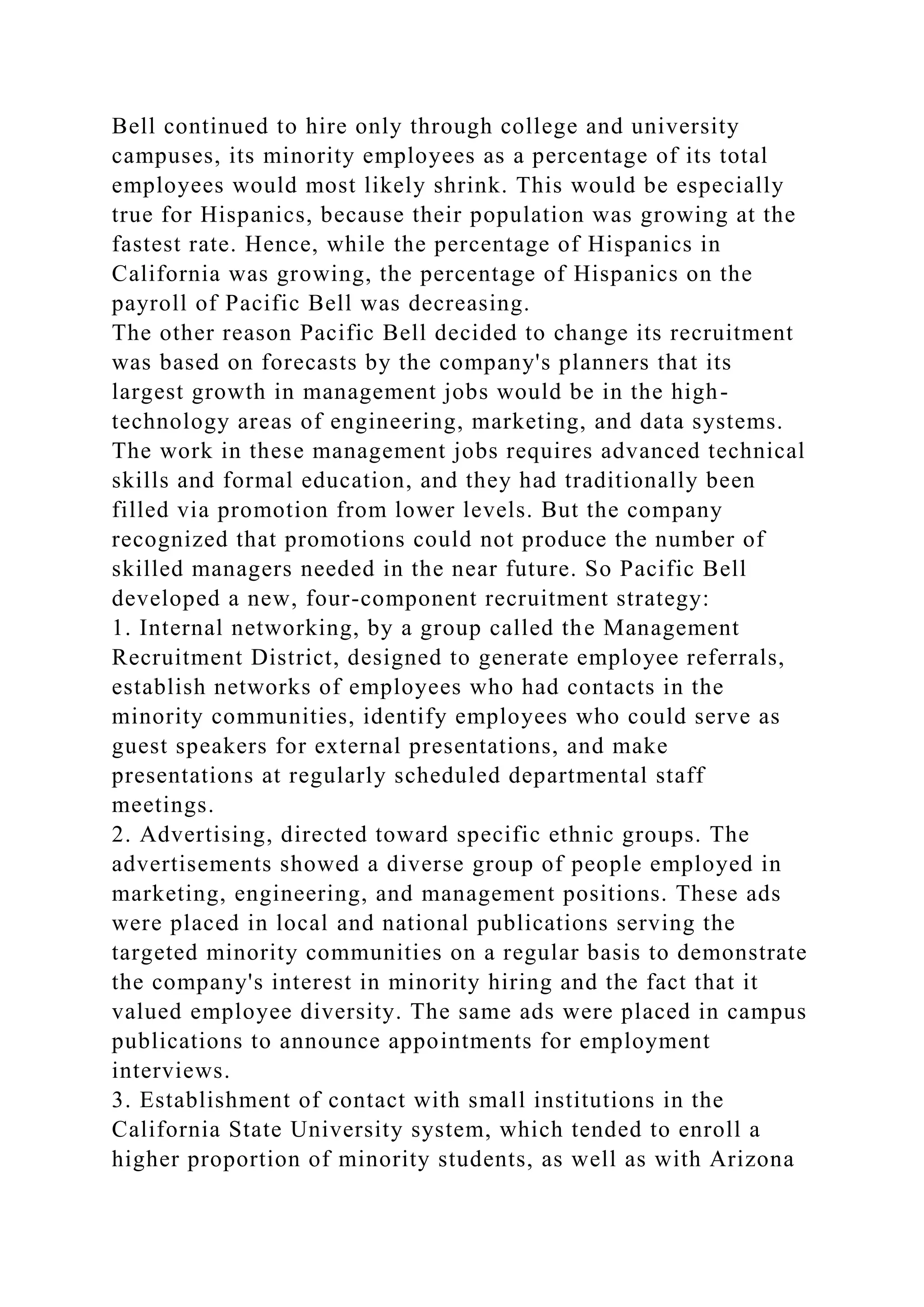
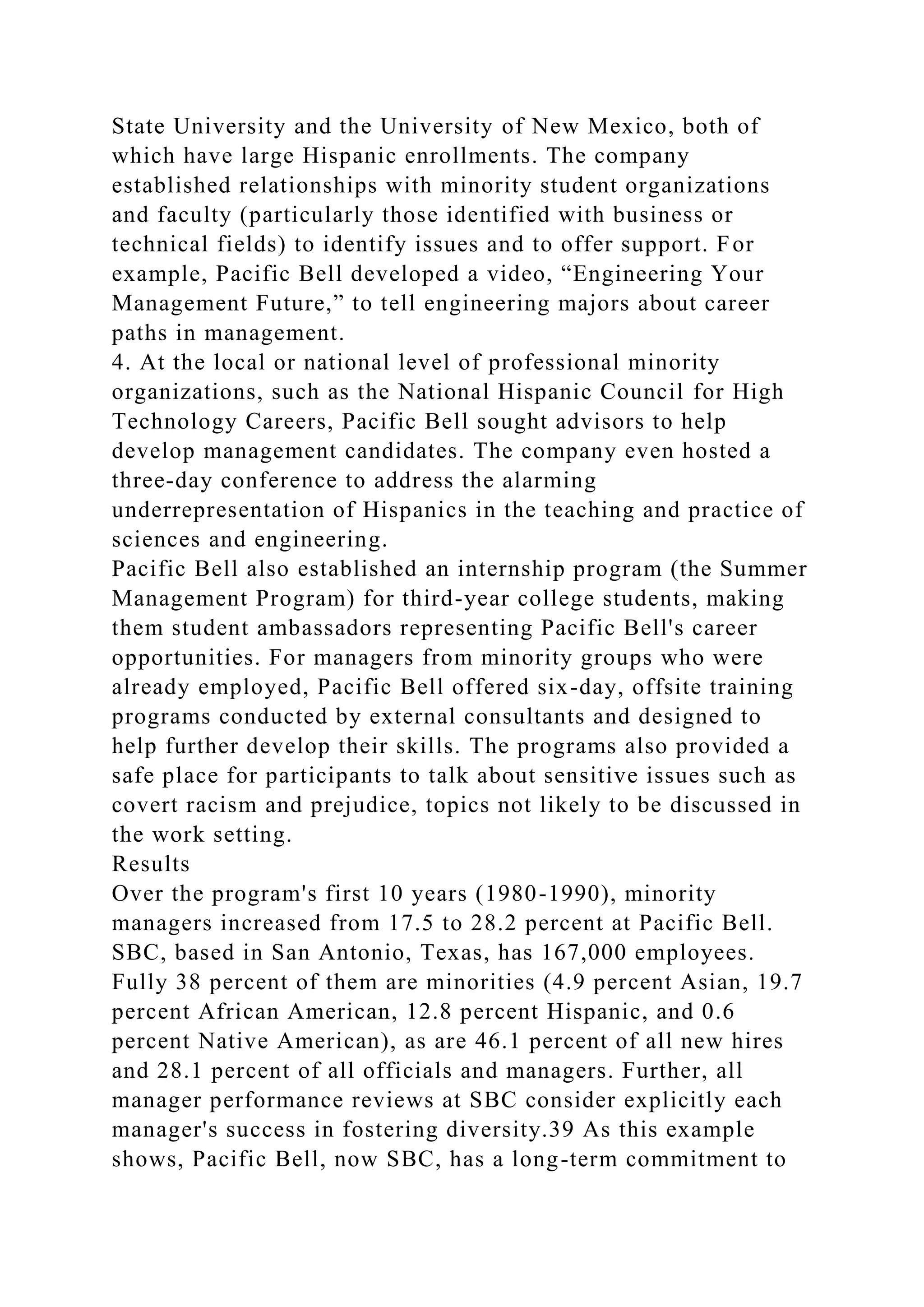
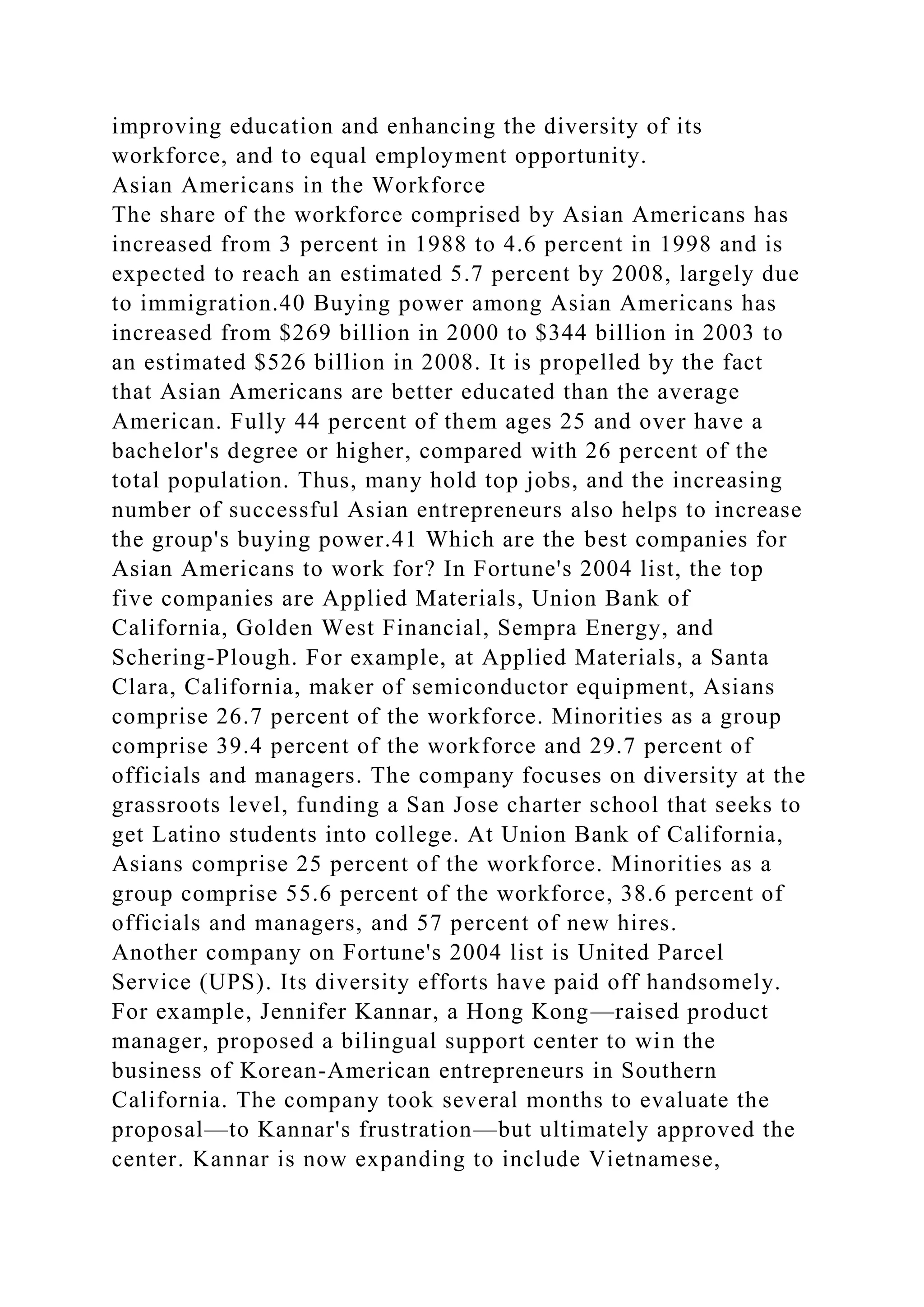
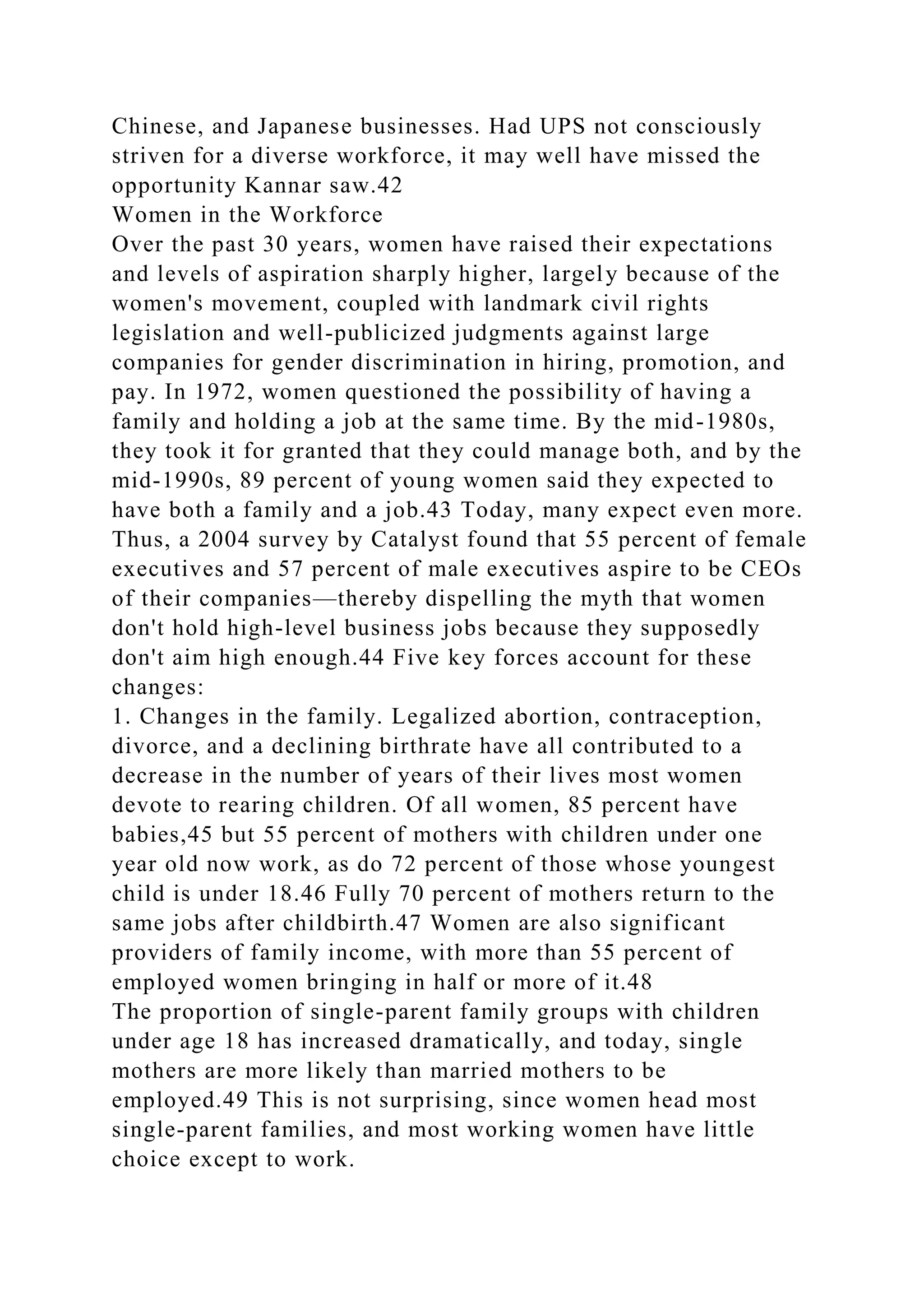
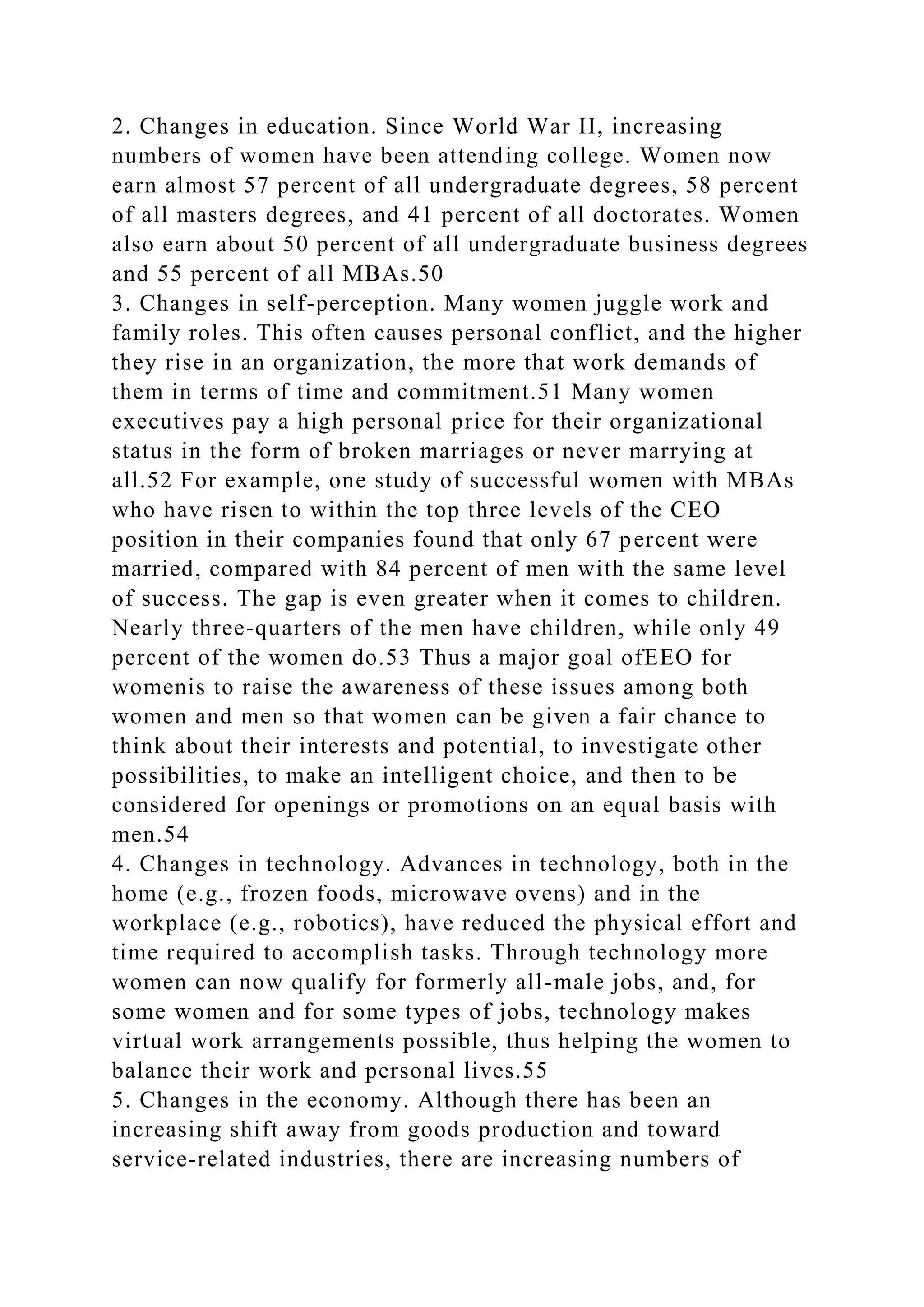

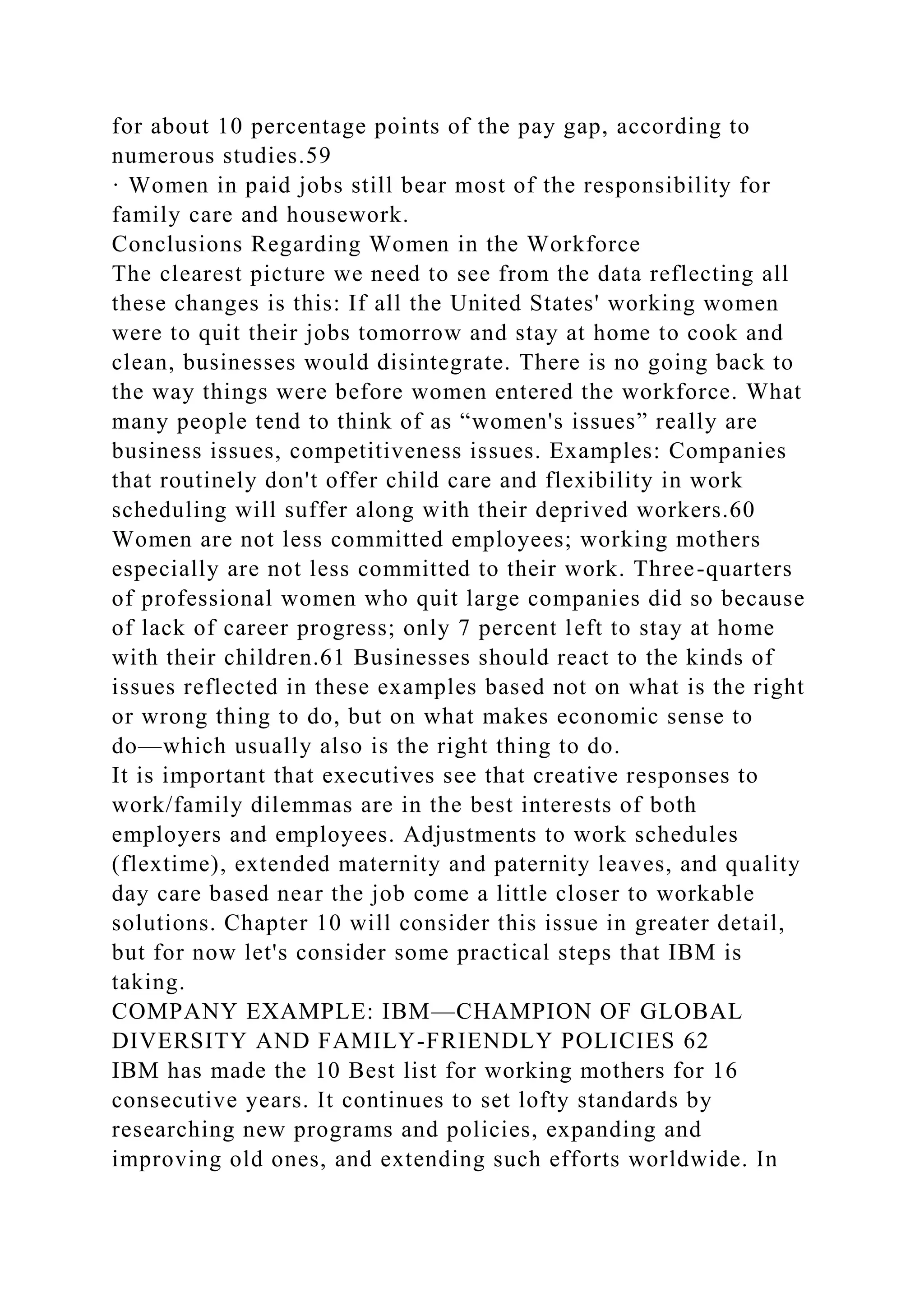

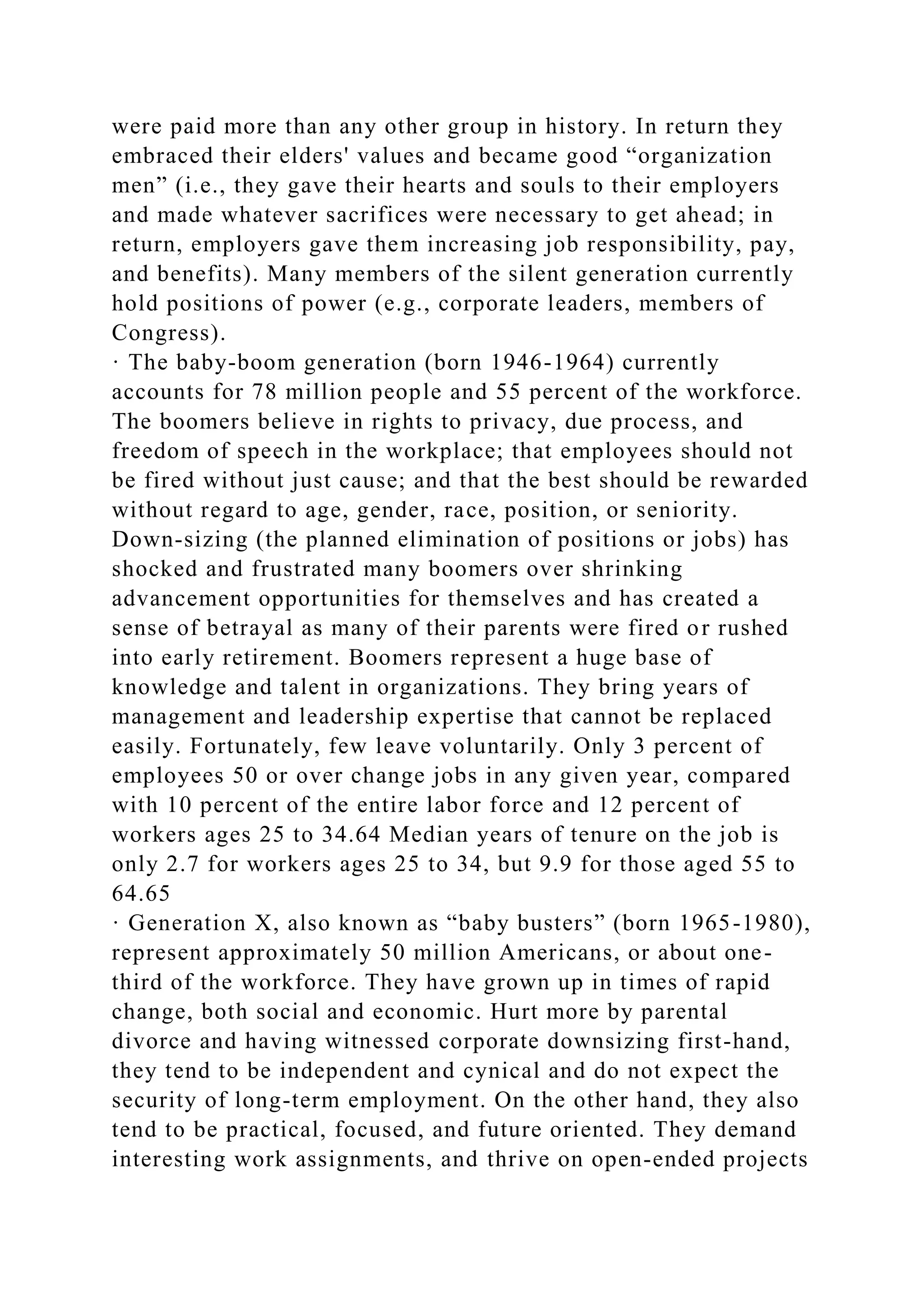
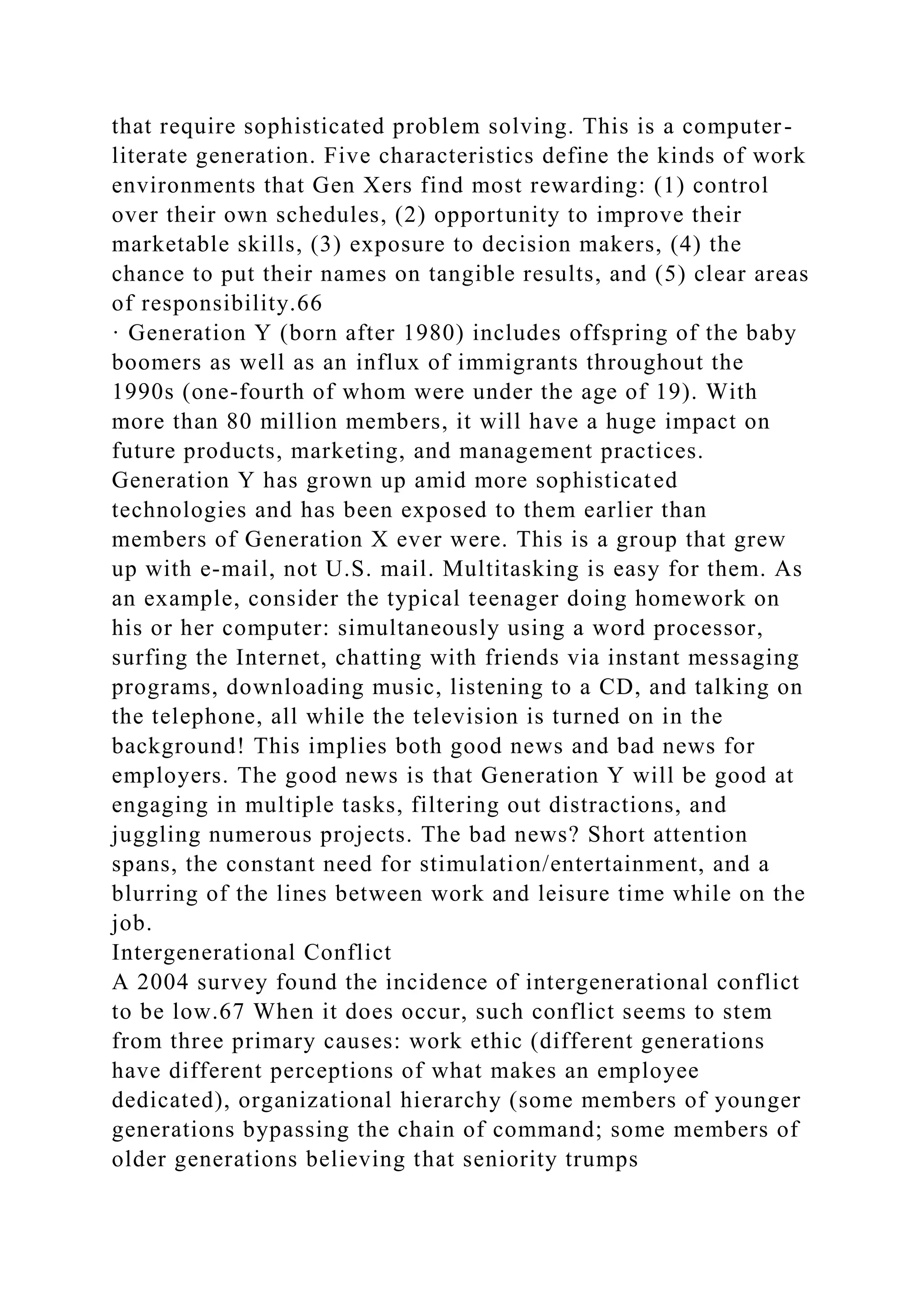
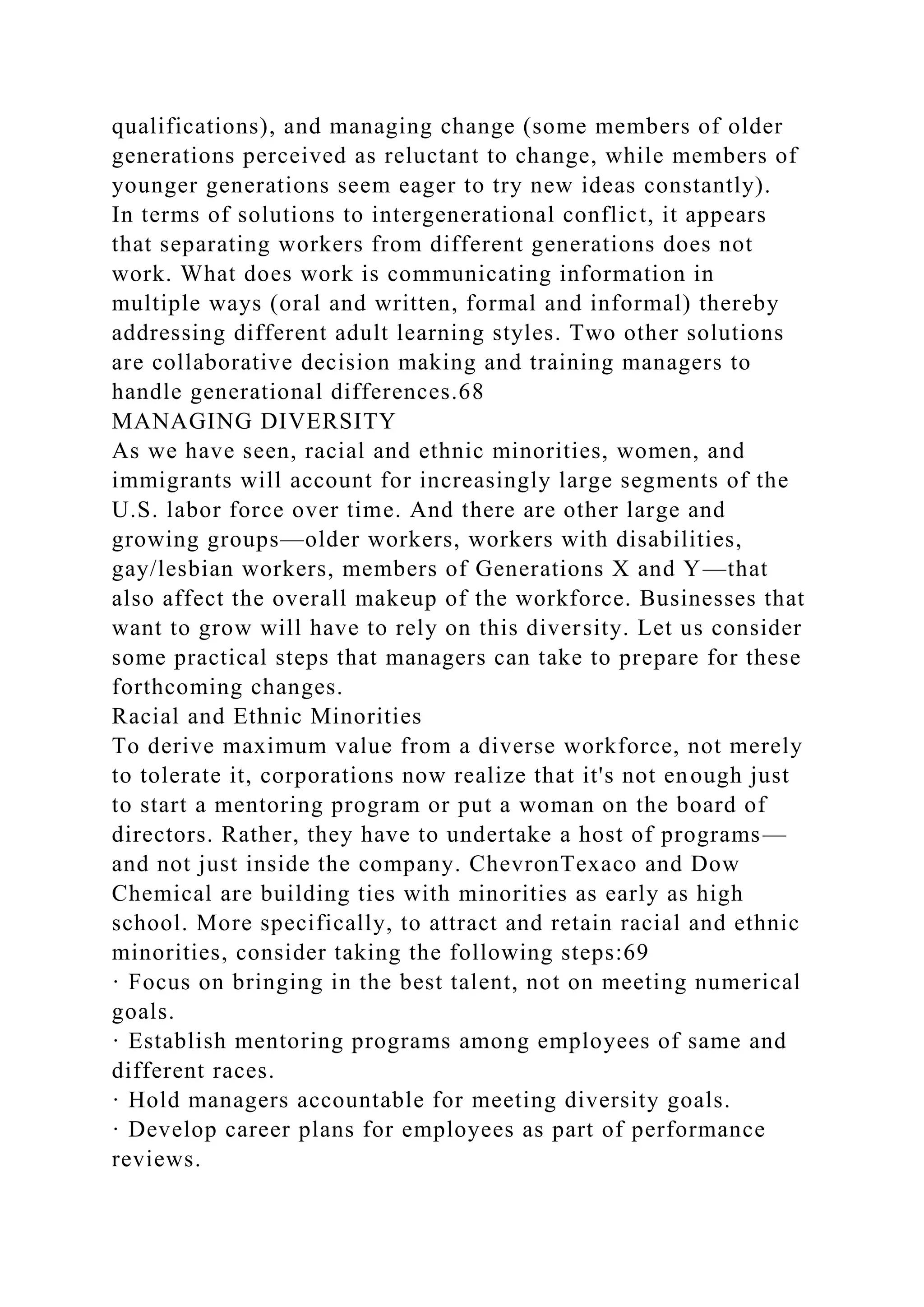


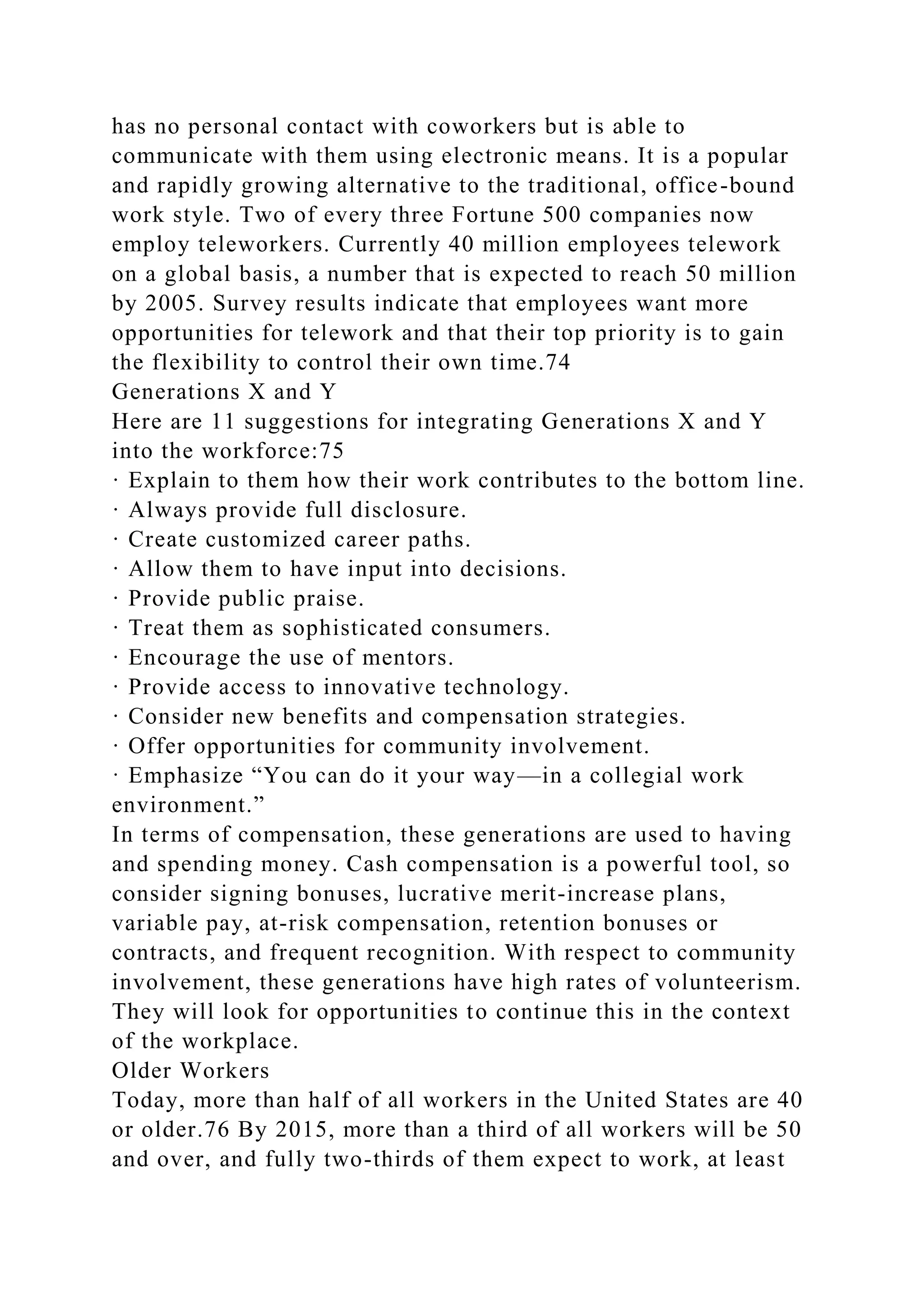
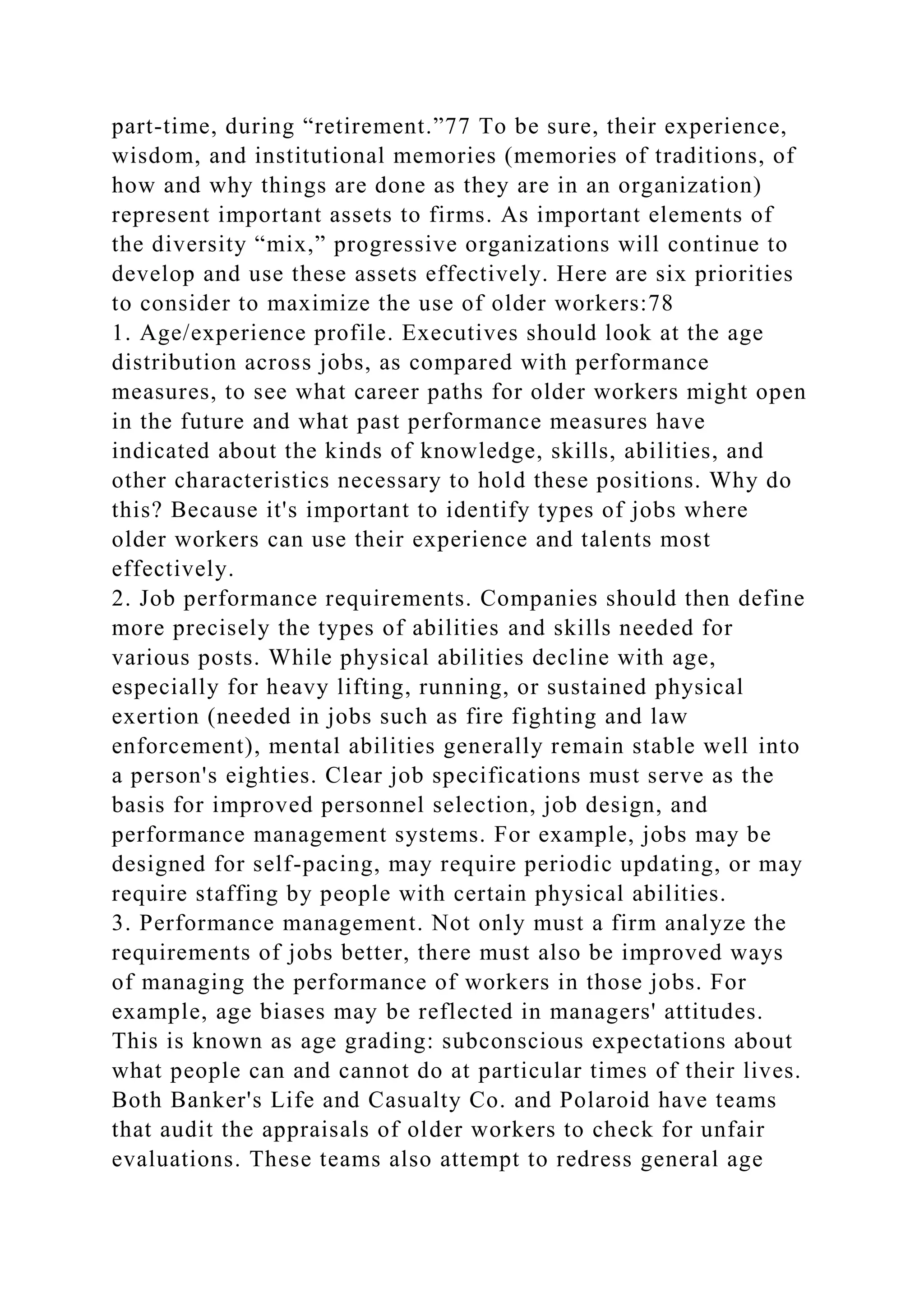

![heads a nonprofit organization dedicated to placing people with
disabilities in jobs. “Not one” he admitted. “As soon as I tell
them I can't walk, type, and other things I can't do, they get off
the telephone as quickly as possible.”
“I'm not surprised,” said the host. “Prospective employers want
to know what job applicants can do for them, not what their
limitations are. If you can show a prospective employer that you
will bring in customers, design a new product, or do something
else that makes a contribution, employers will hire you. Your
disability won't matter if you can prove that you will contribute
to the employer's bottom line.”79
The fact is that poll after poll of employers demonstrates that
they regard most people with disabilities, roughly 50 million in
the United States, as good workers, punctual, conscientious, and
competent—if given reasonable accommodation. Despite this
evidence, persons with disabilities are less likely to be working
than any other demographic group under age 65. One survey
found that two-thirds of persons with disabilities between the
ages of 16 and 64 are unemployed. They also worked
approximately one-third fewer hours than those without
disabilities.80 As Harvard Business School professor David
Thomas has noted: “When it comes to dealing with people with
disabilities, we are about where we were with race in the 1970s
… Companies by and large are doing the minimum to
accommodate [them]. Instead we should all be asking what is it
that companies can do to maximize their great talent.”81
Perhaps the biggest barrier is employers' lack of knowledge. For
example, many are concerned about financial hardship because
they assume it will be costly to make architectural changes to
accommodate wheelchairs and add equipment to aid workers
who are blind or deaf. In fact, statistics show that most
accommodations cost less than $1,000 per employee, 22 percent
cost more than $1,000, and 15 percent cost nothing.82 Consider
several possible modifications:83
· Placing a desk on blocks, lowering shelves, and using a
carousel for files are inexpensive accommodations that enable](https://image.slidesharecdn.com/diversityatworkquestionsthischapterwillhelpmanagersanswe-221026032732-01cc7112/75/Diversity-at-WorkQuestions-This-Chapter-Will-Help-Managers-Answe-docx-34-2048.jpg)

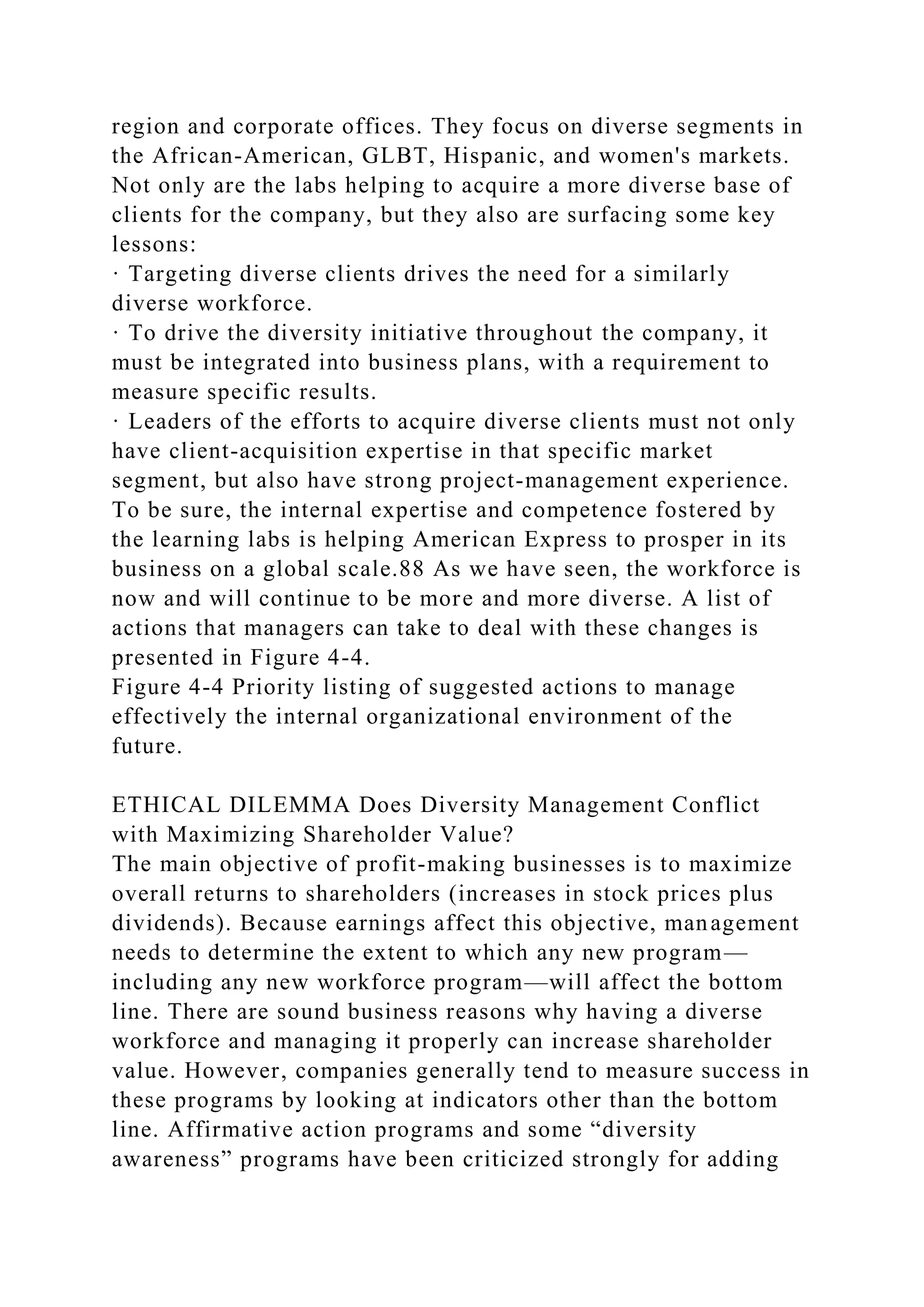
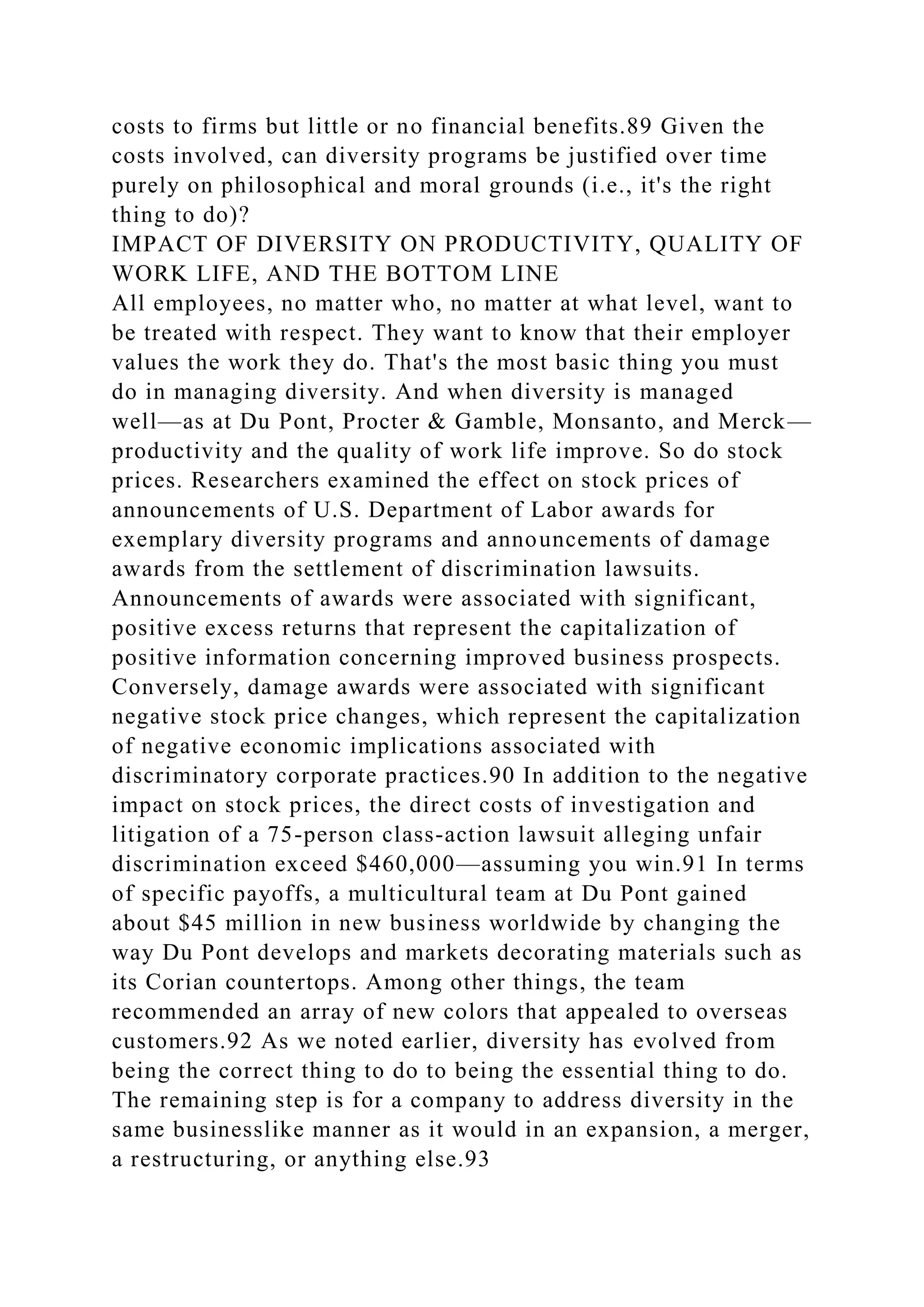


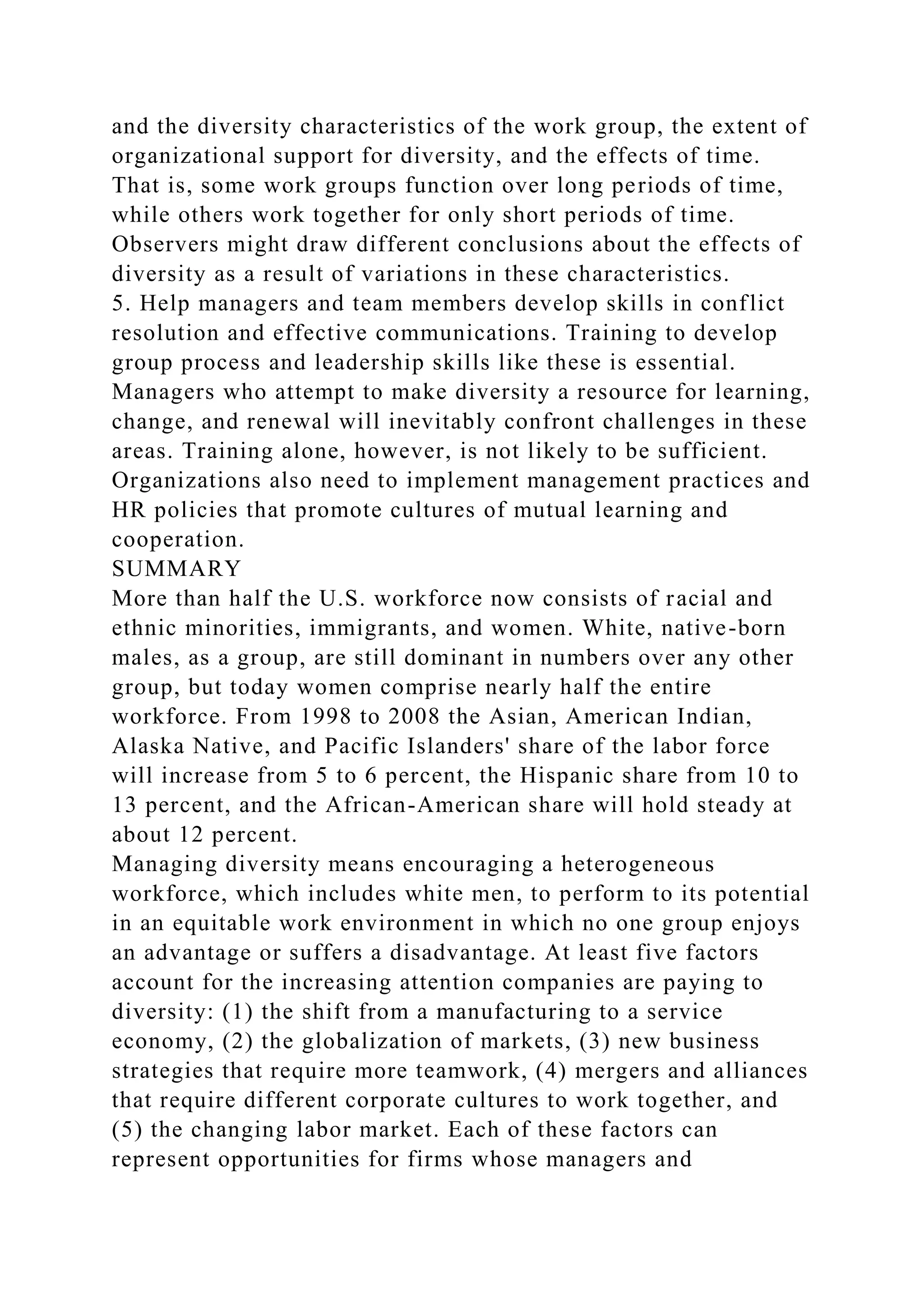
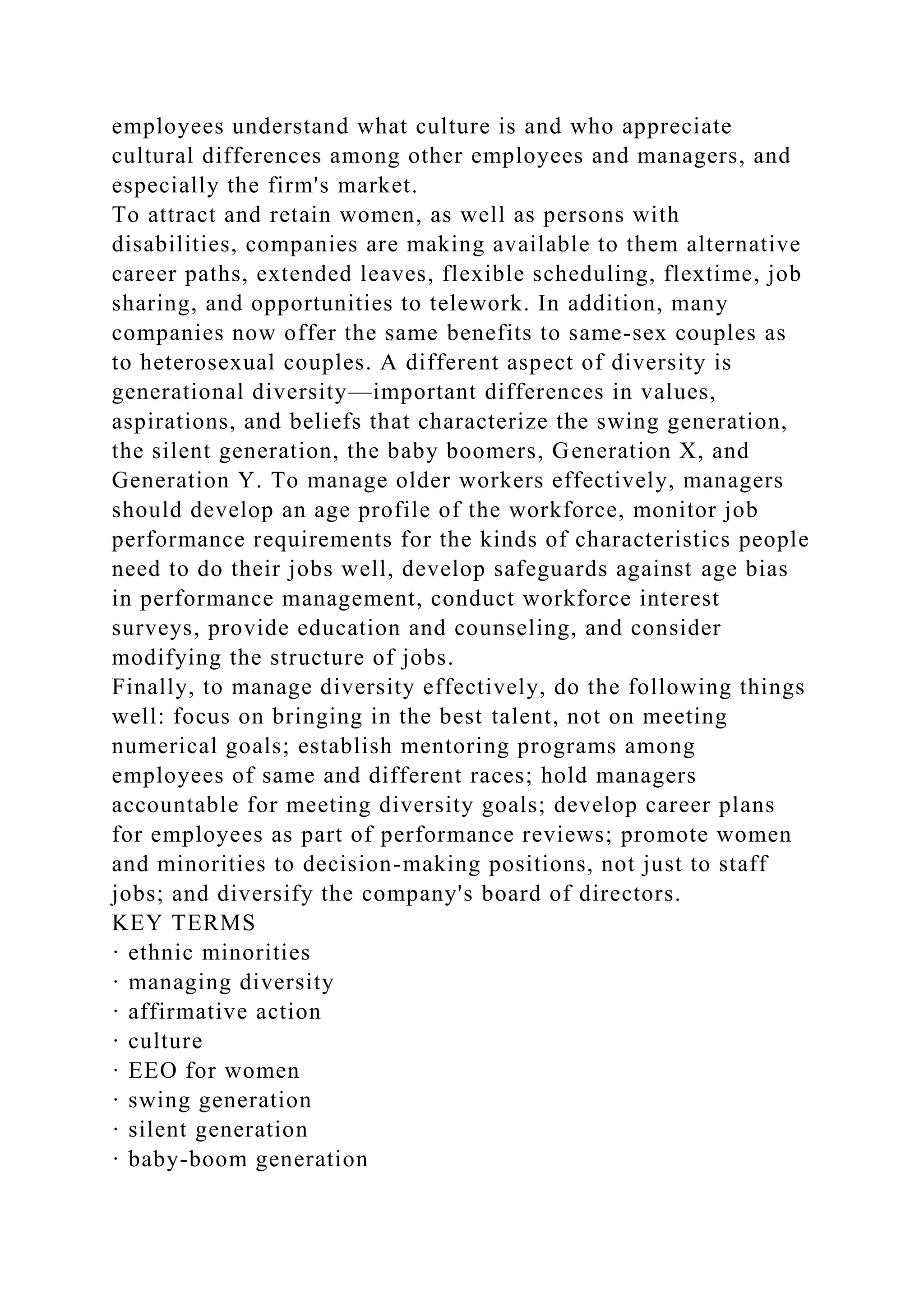
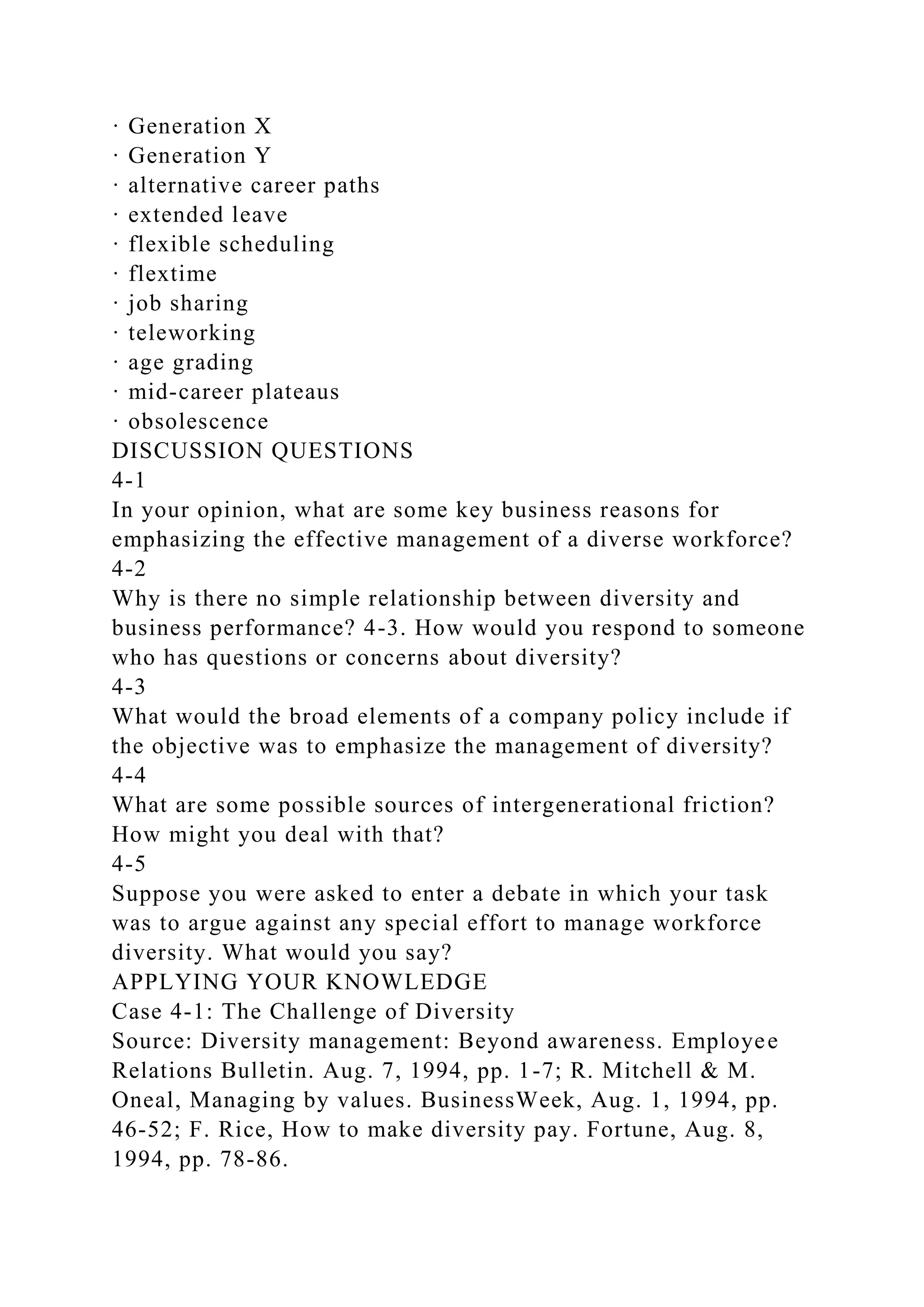
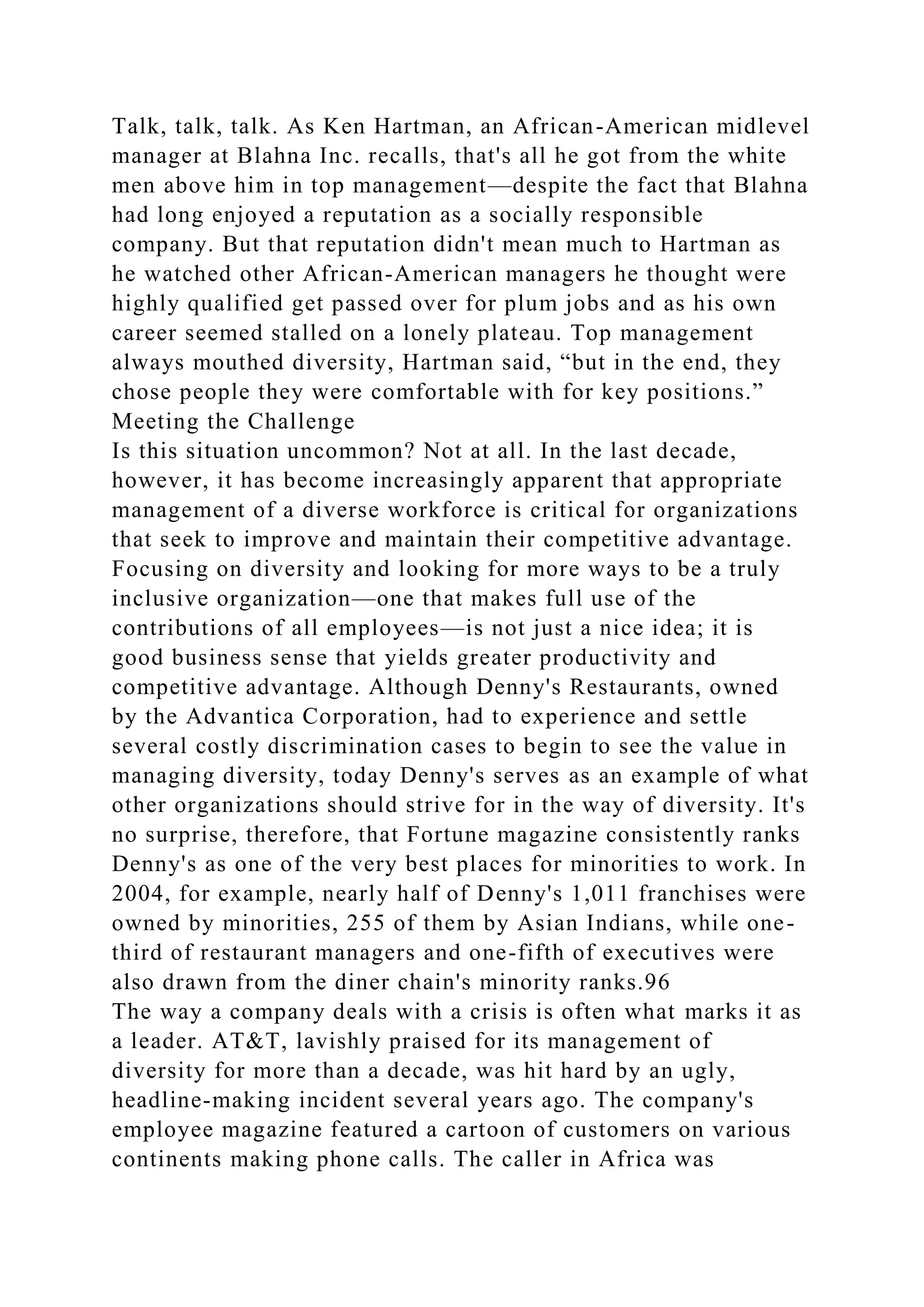
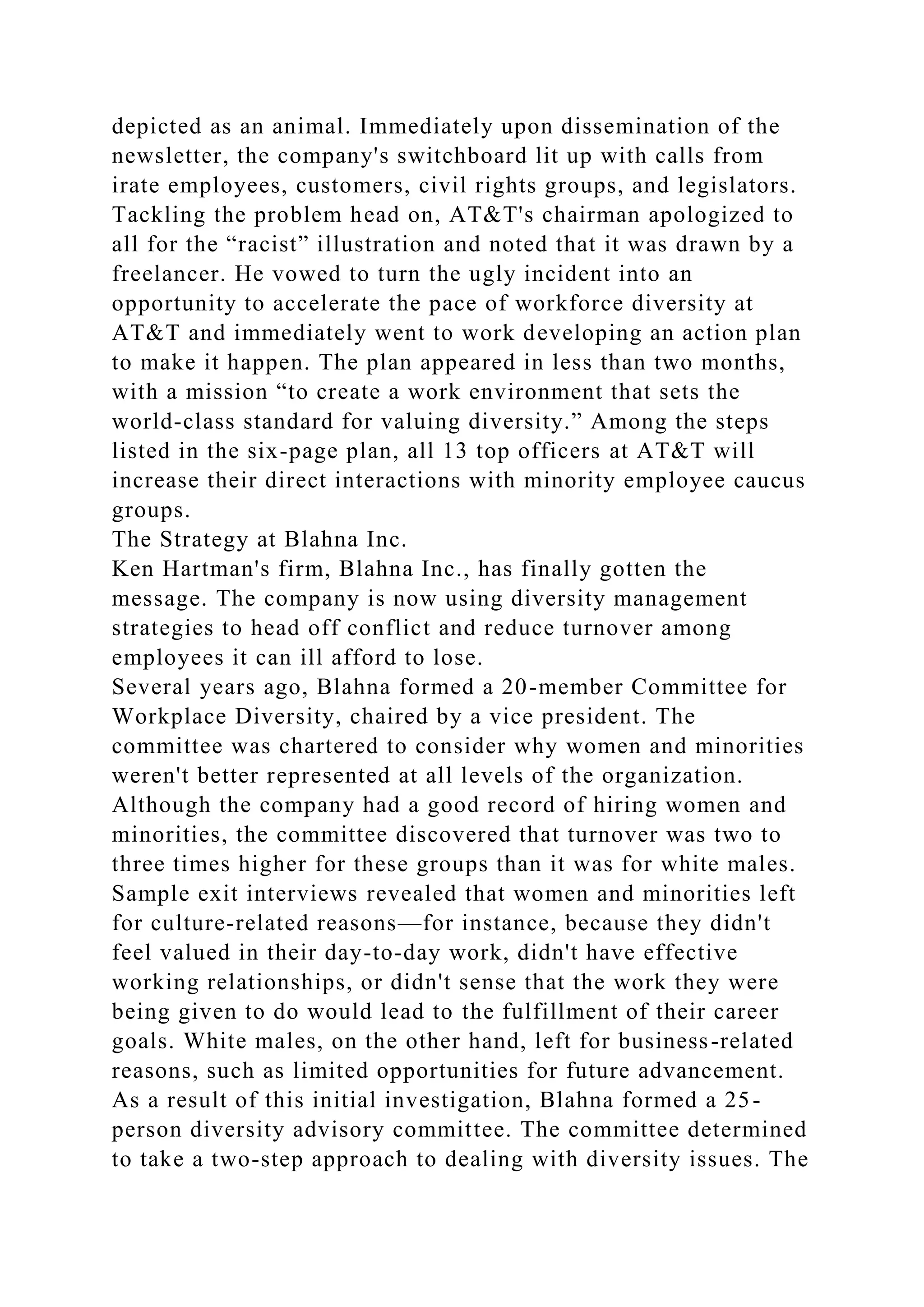
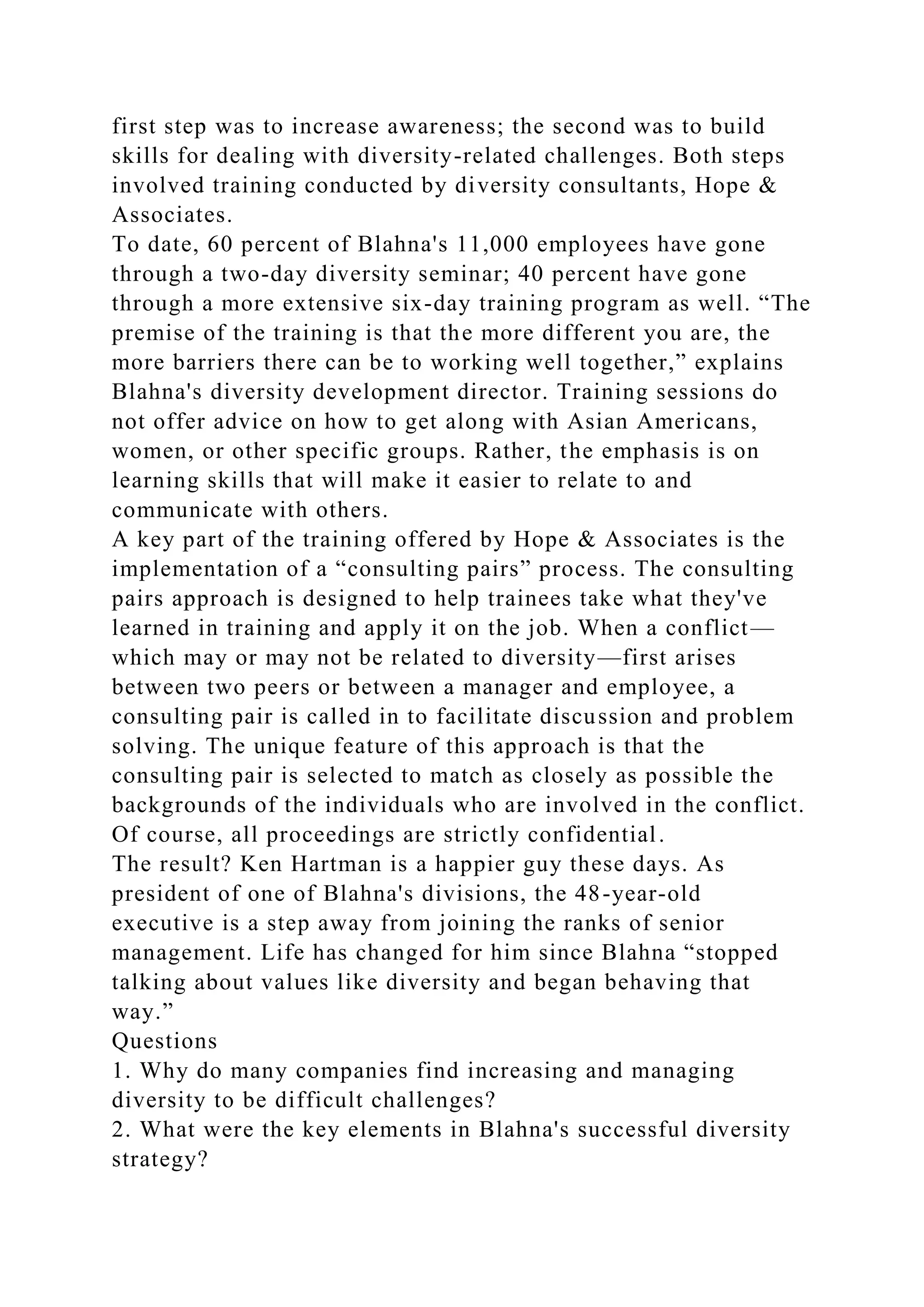

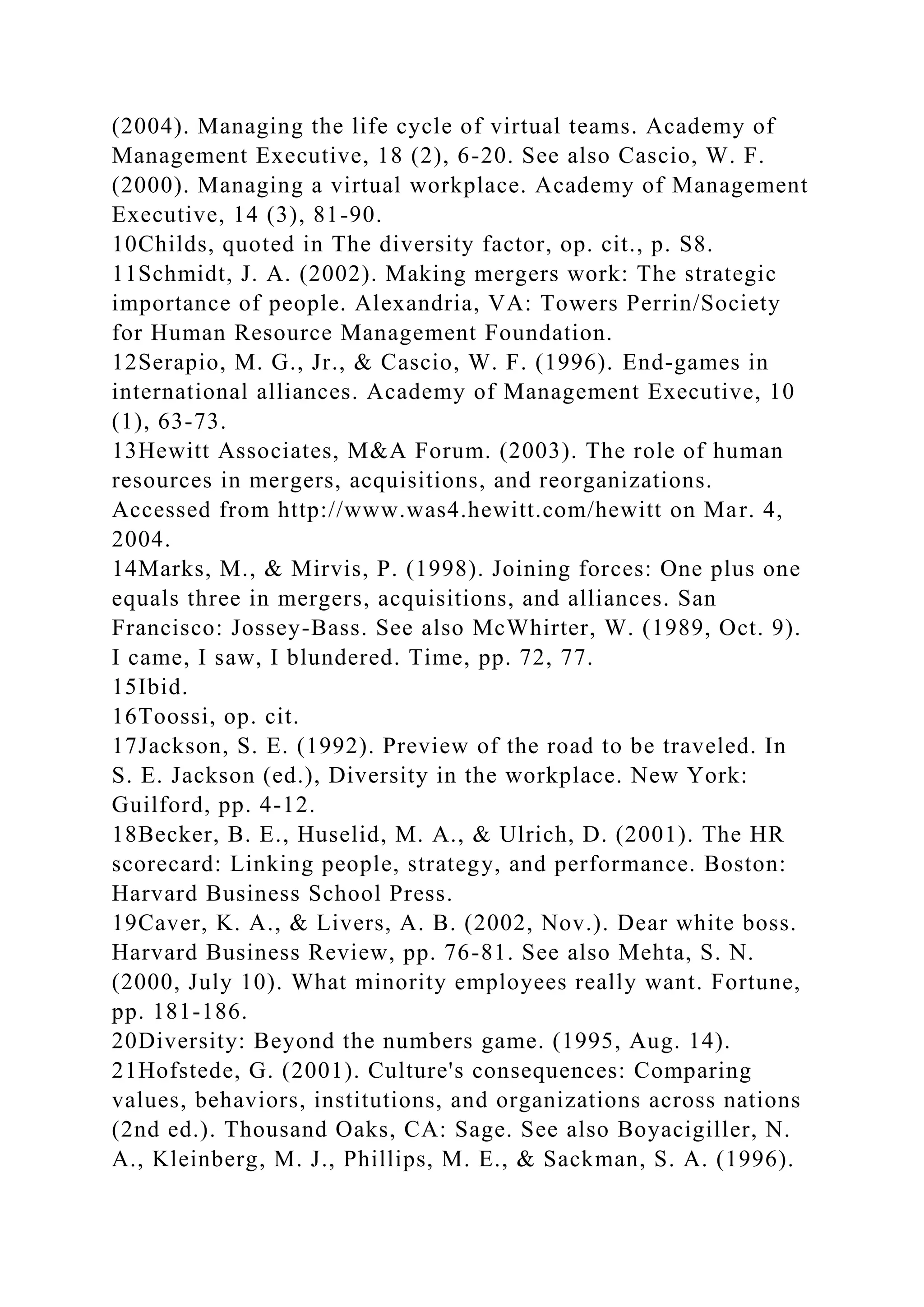
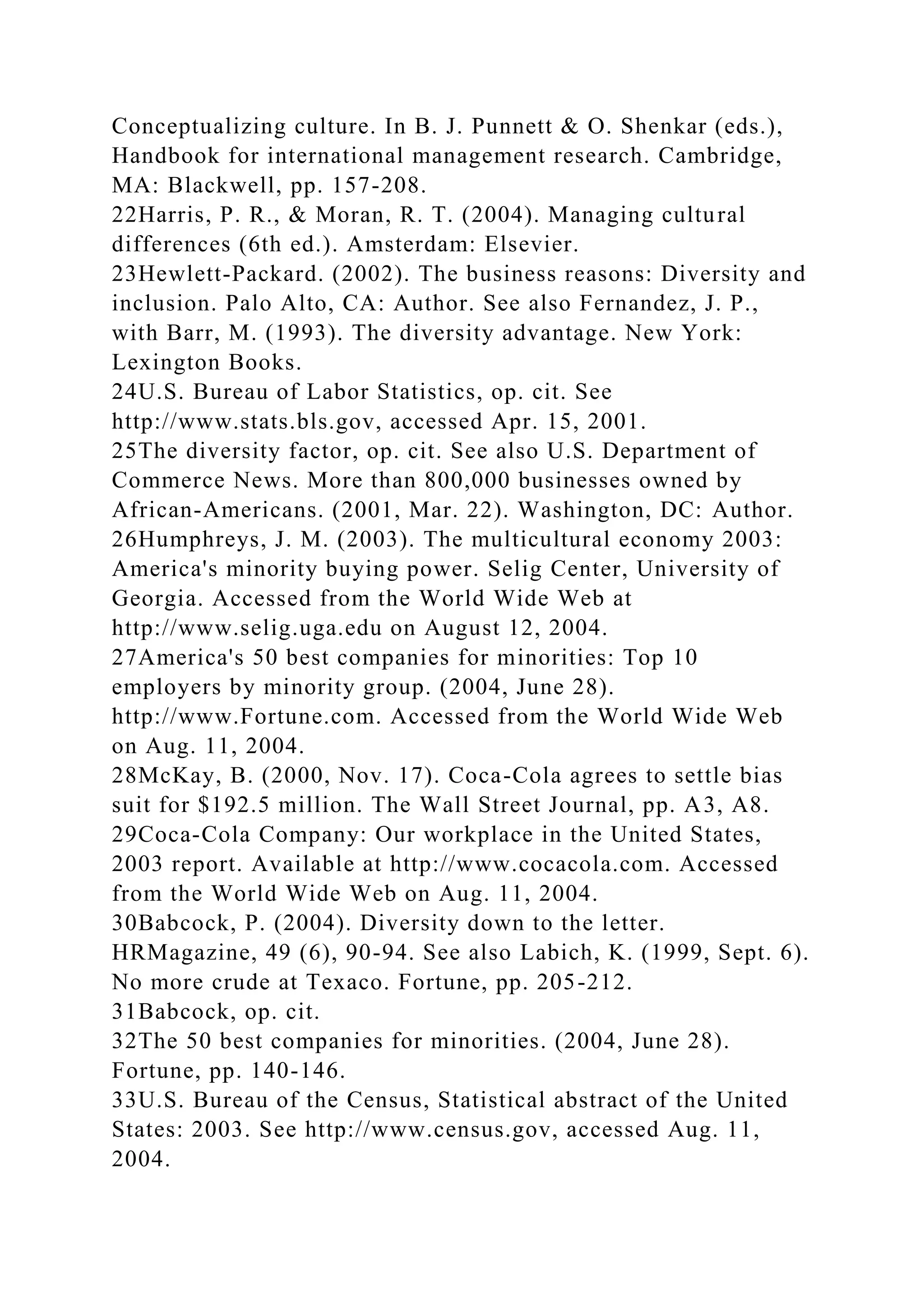
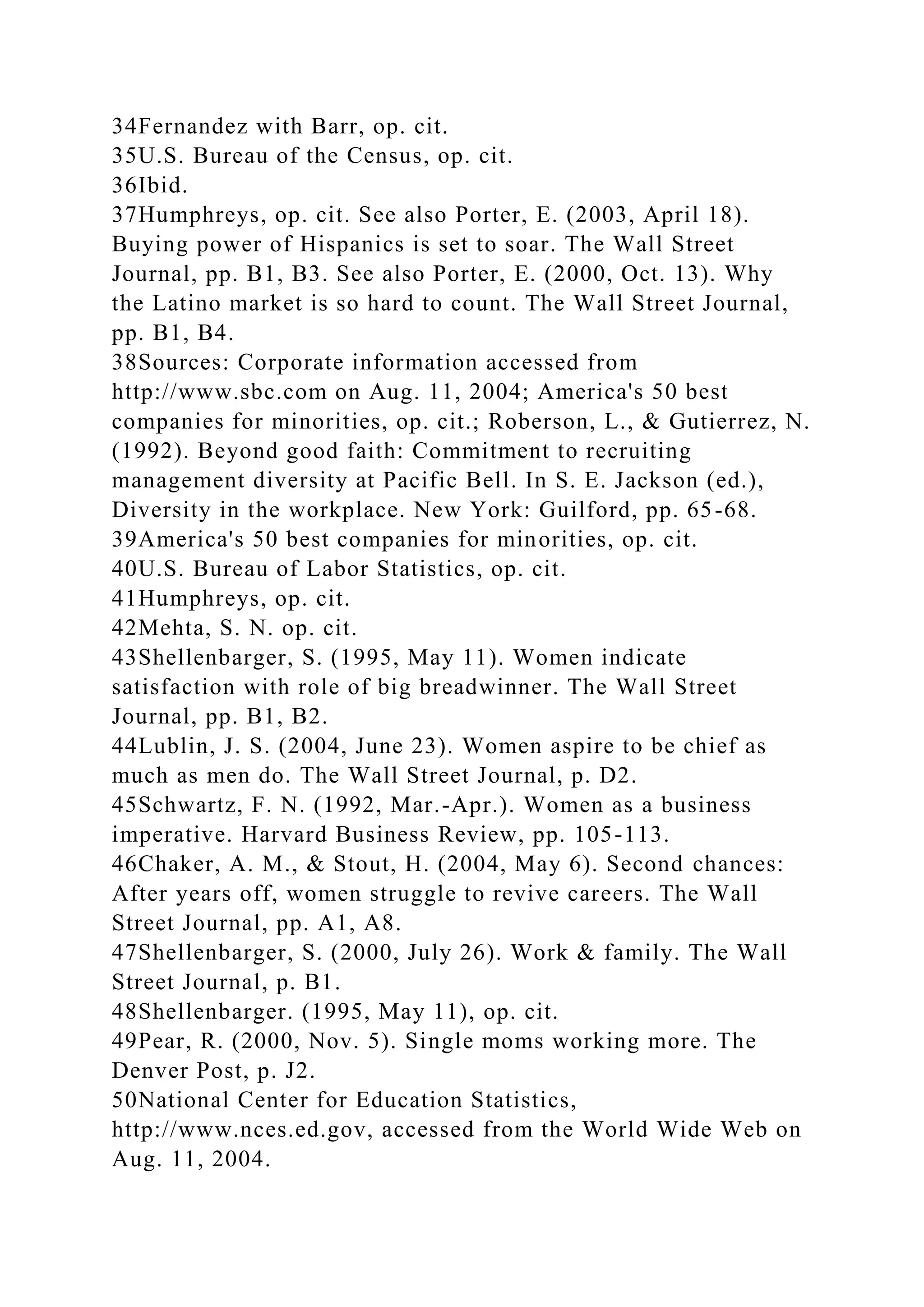
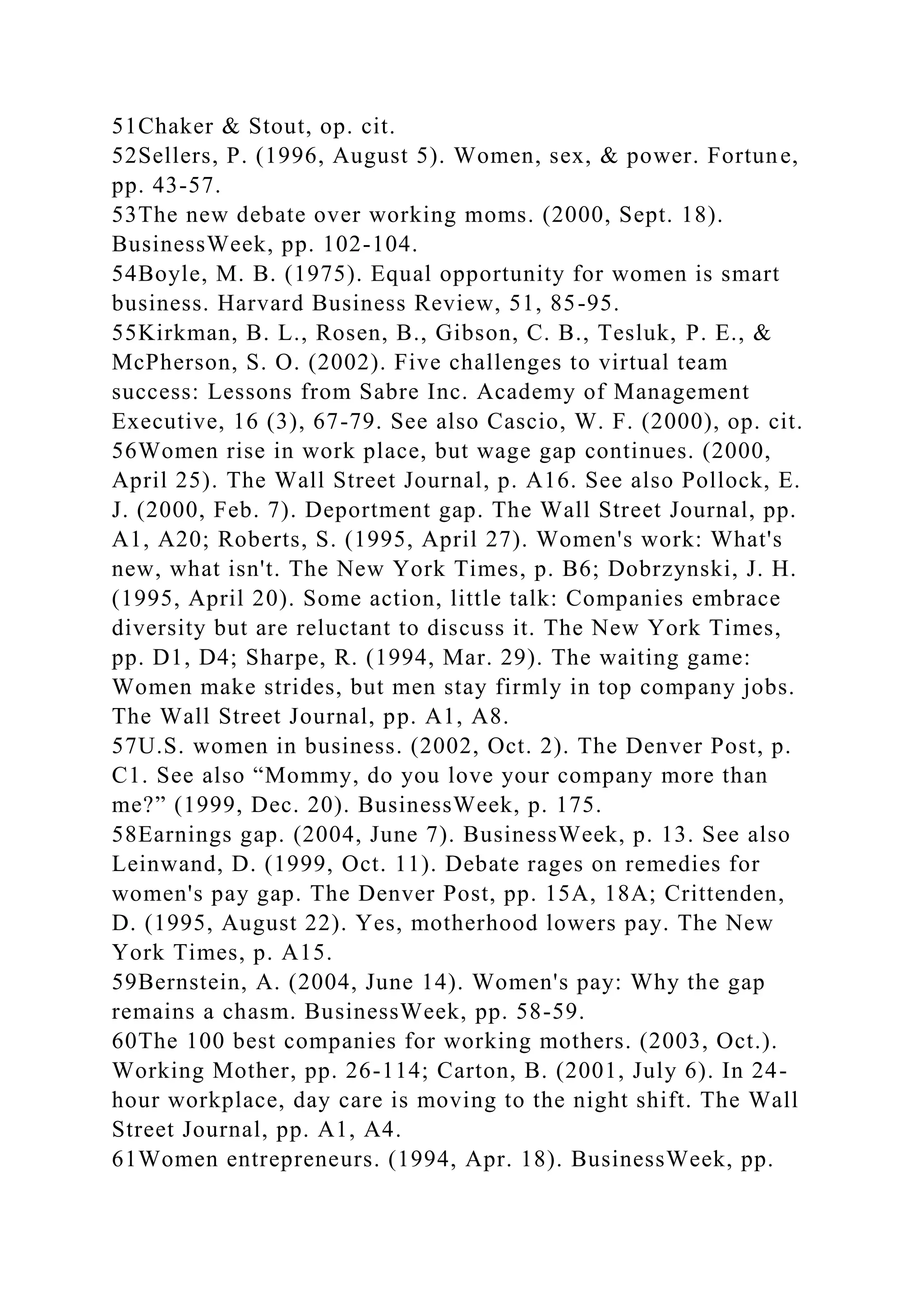
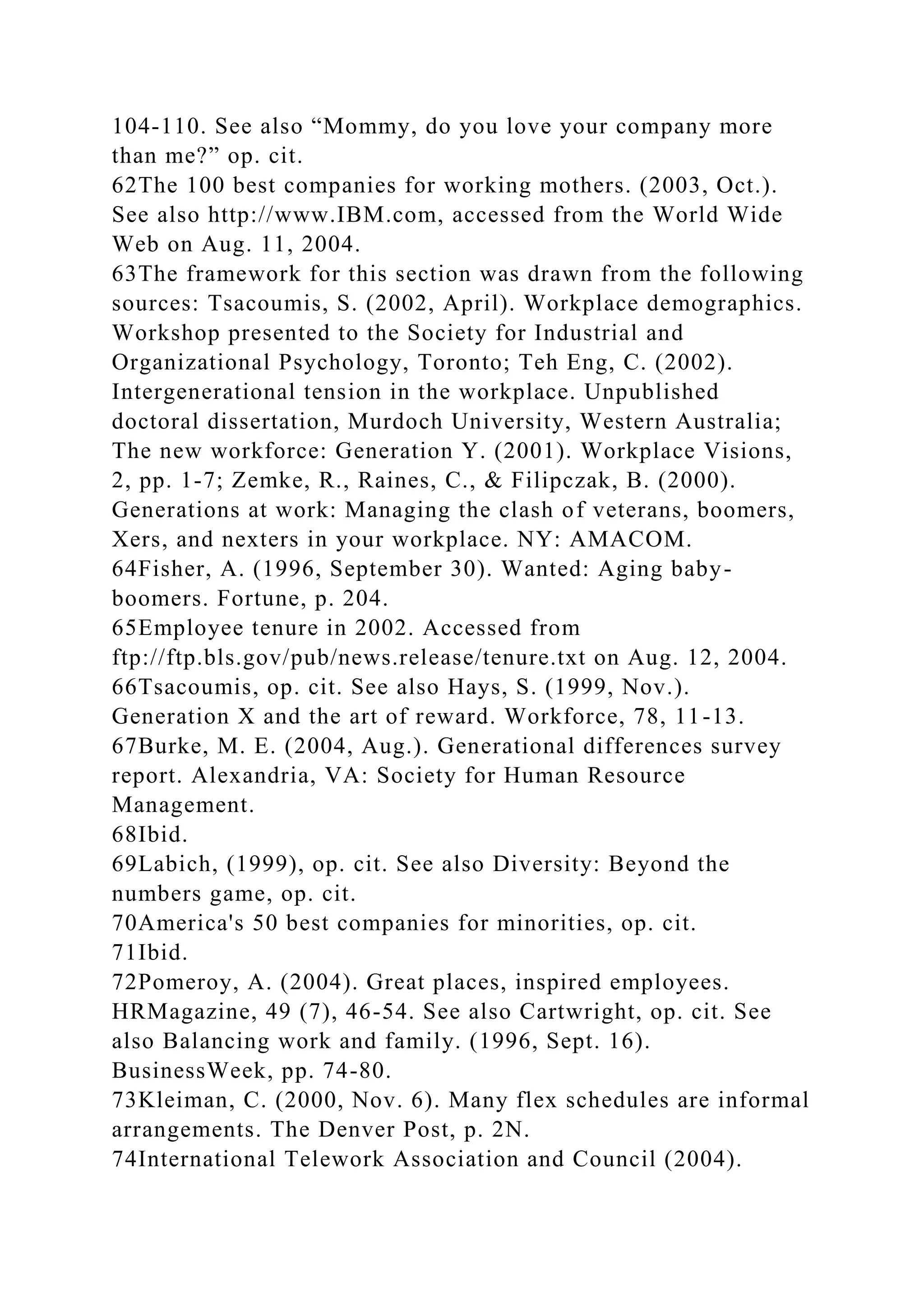
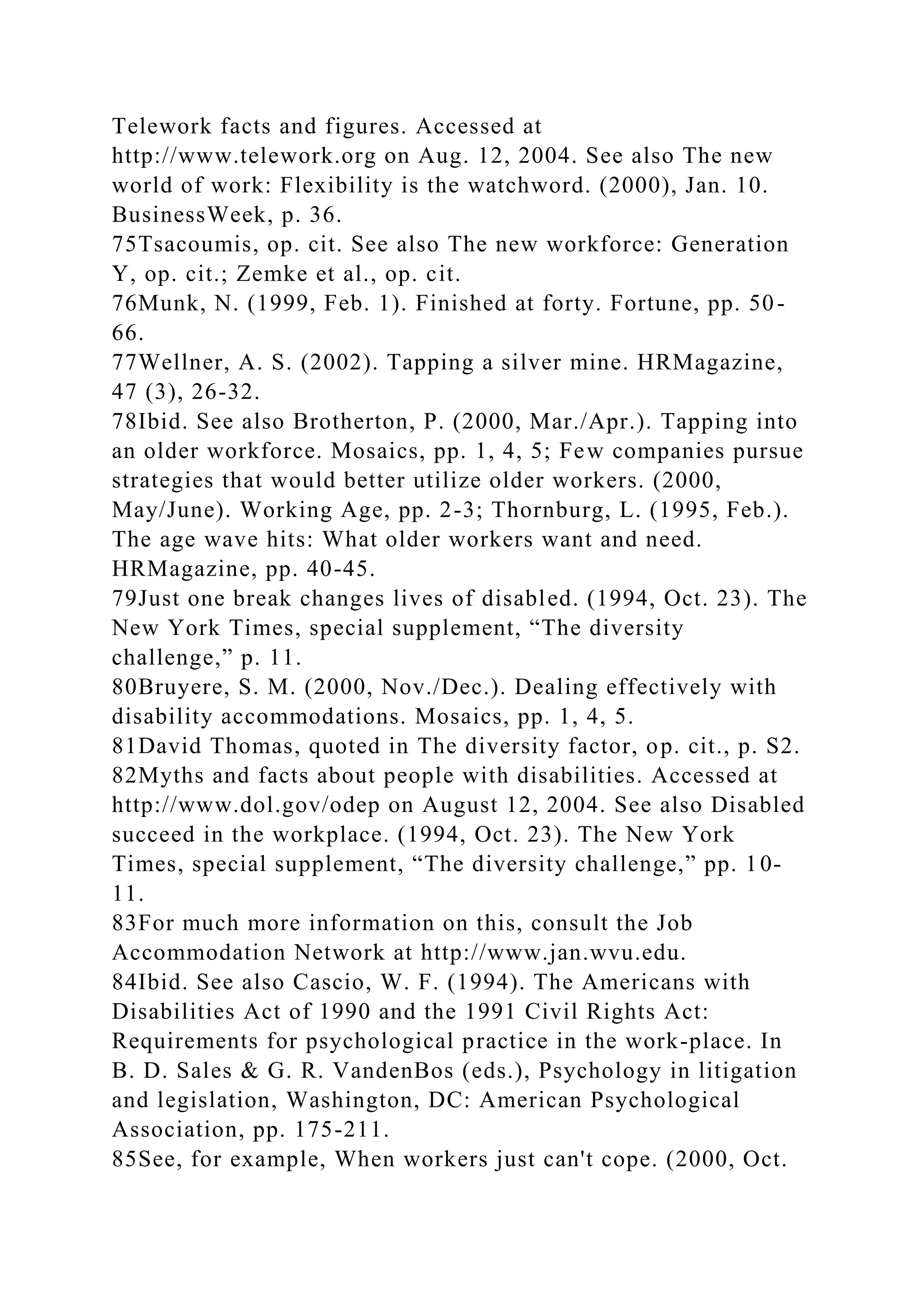
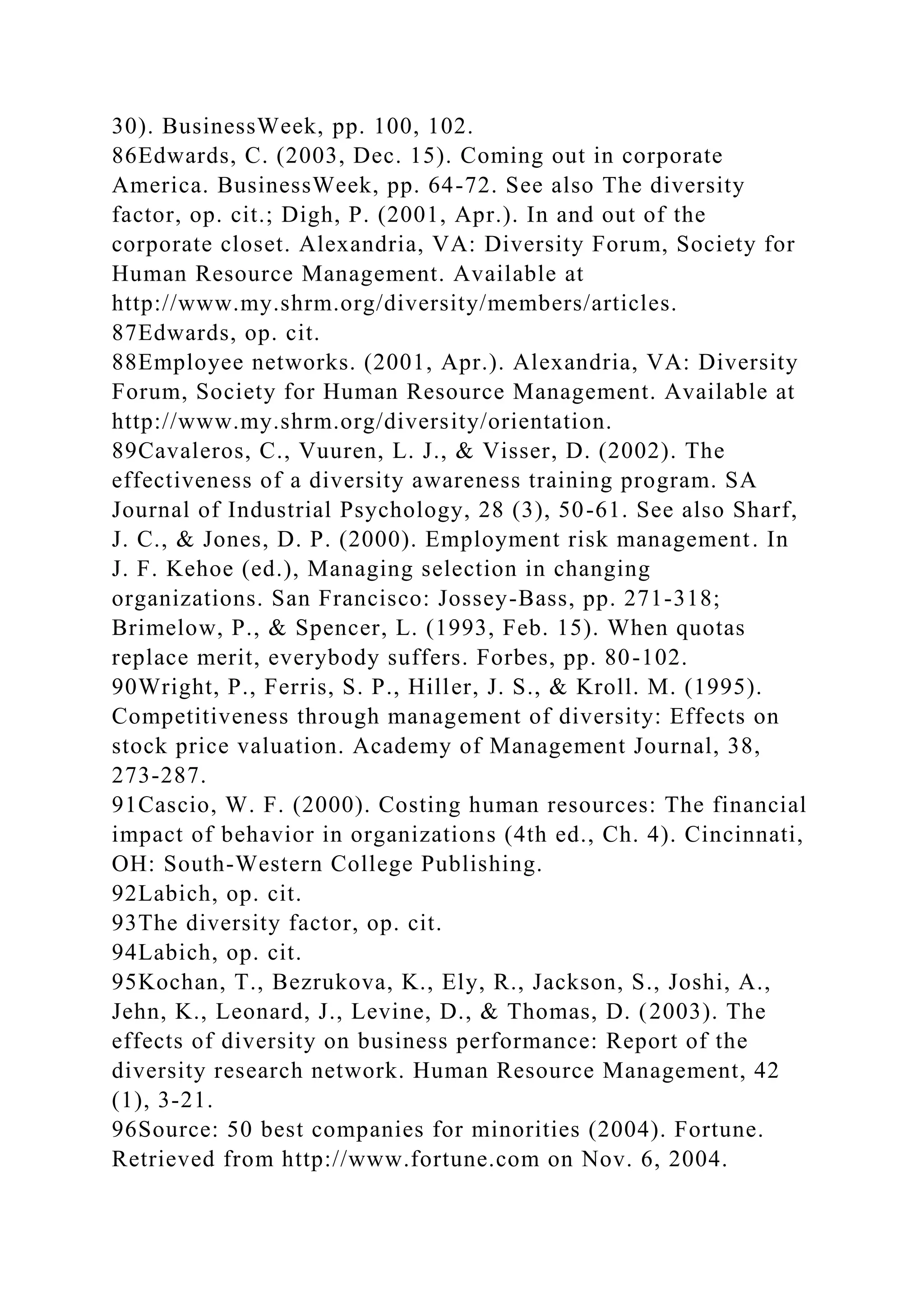
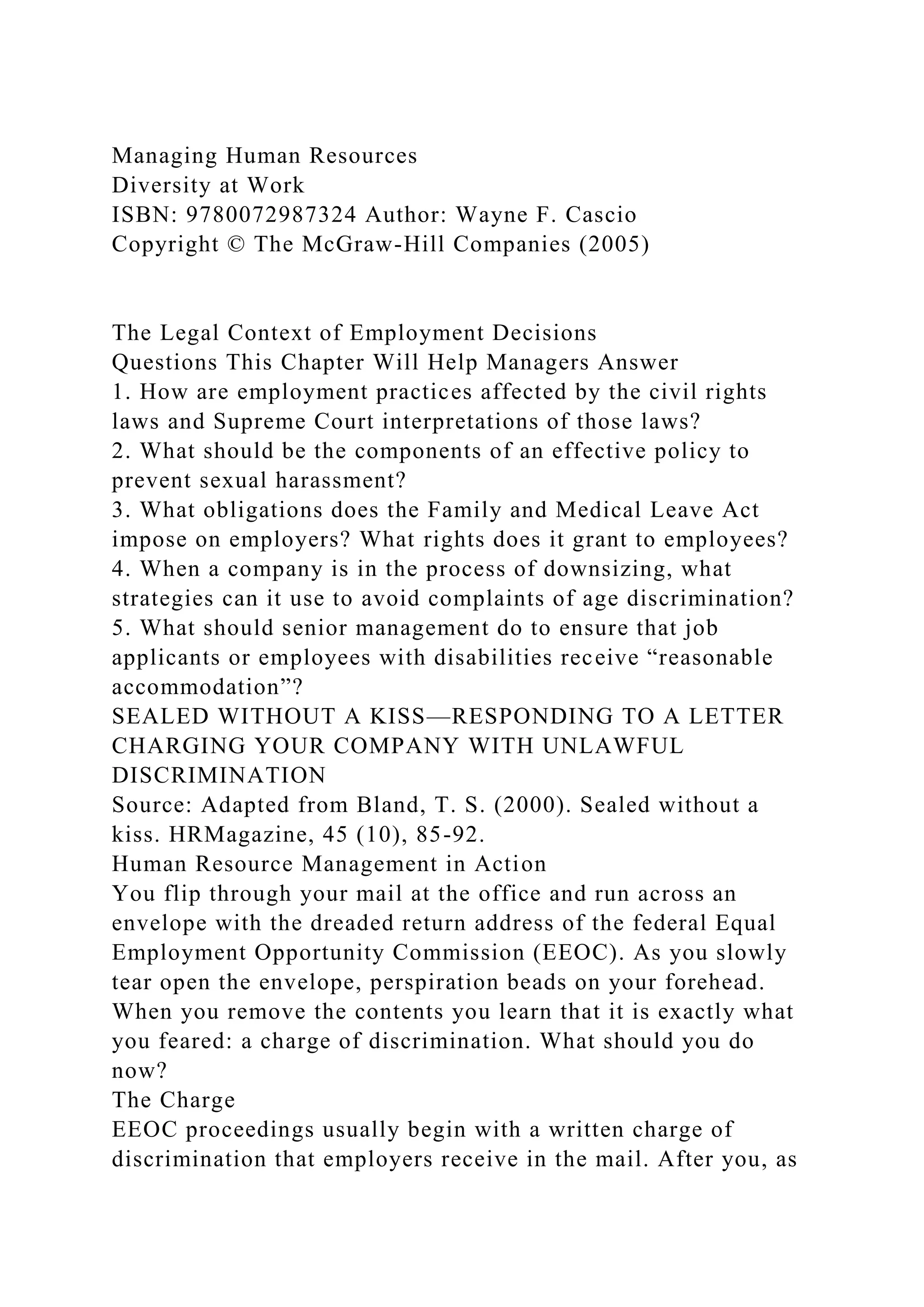
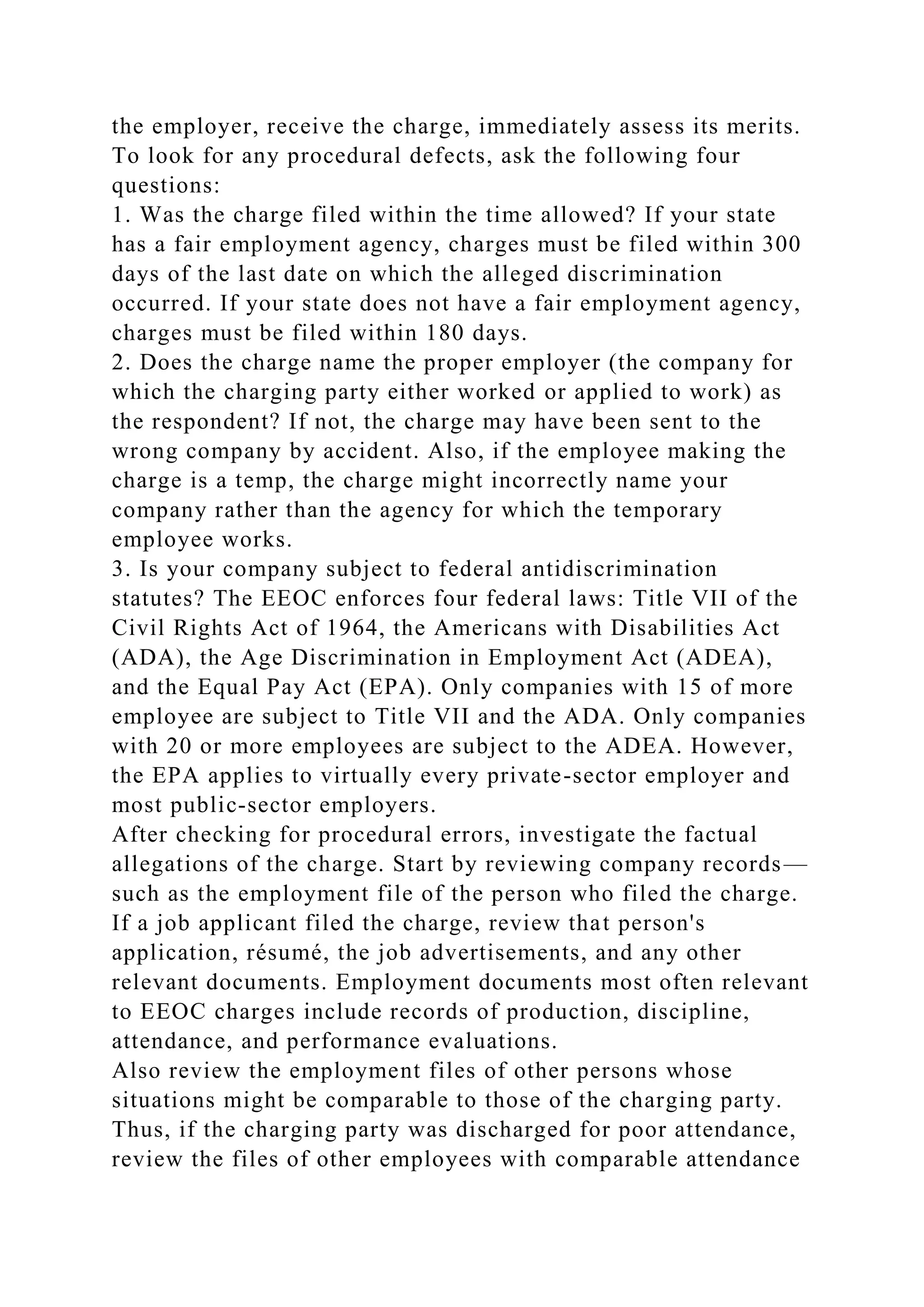
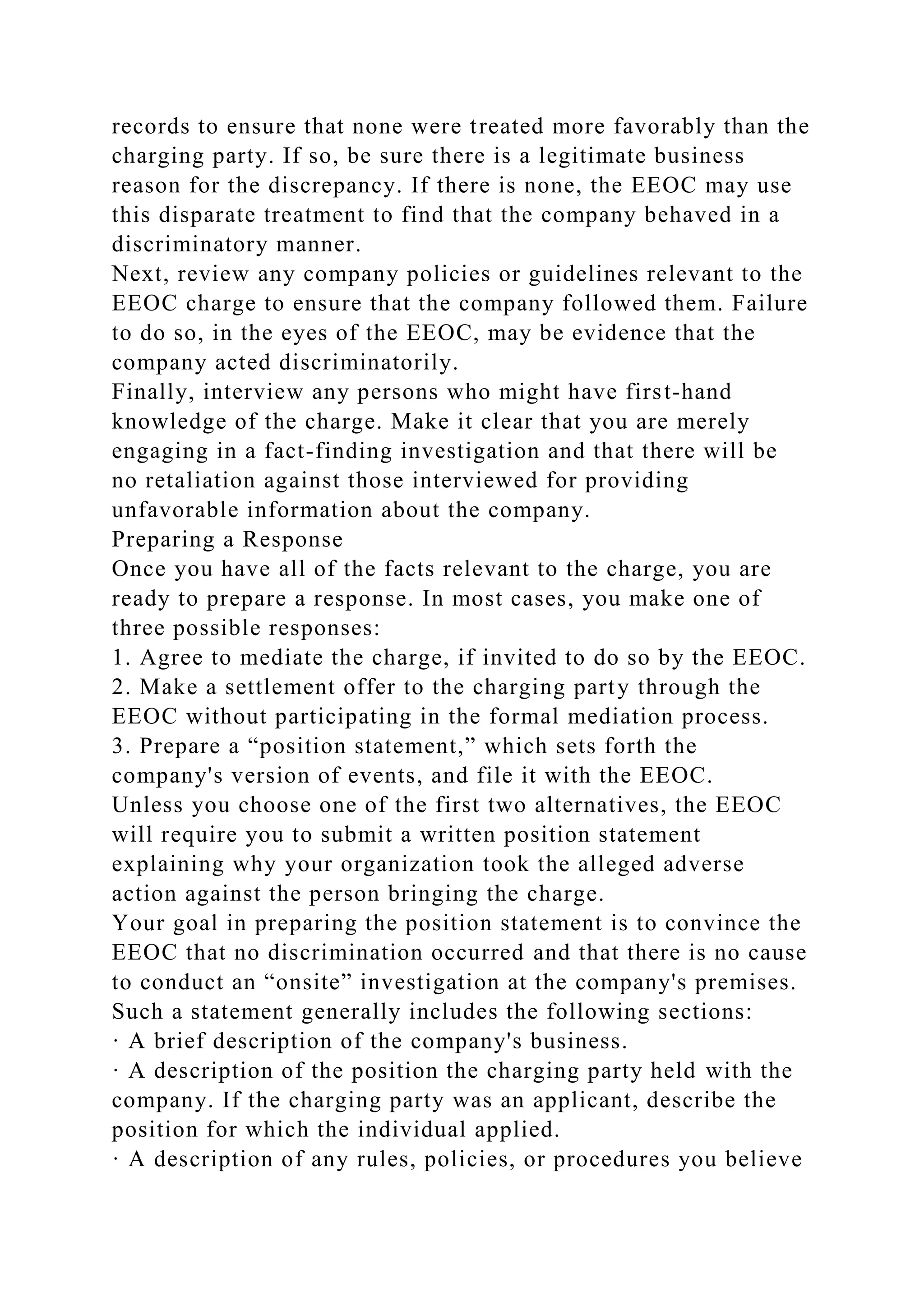
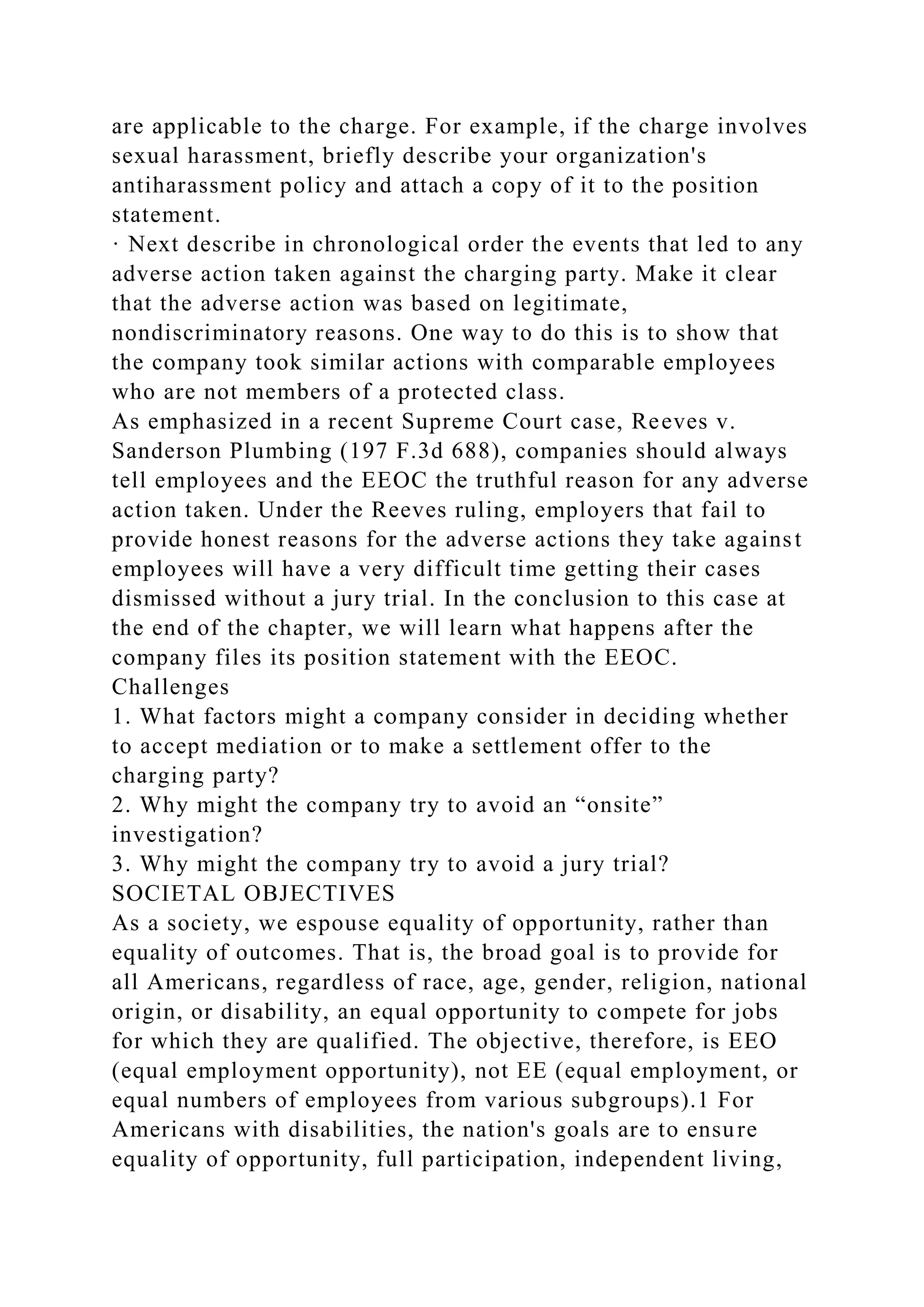
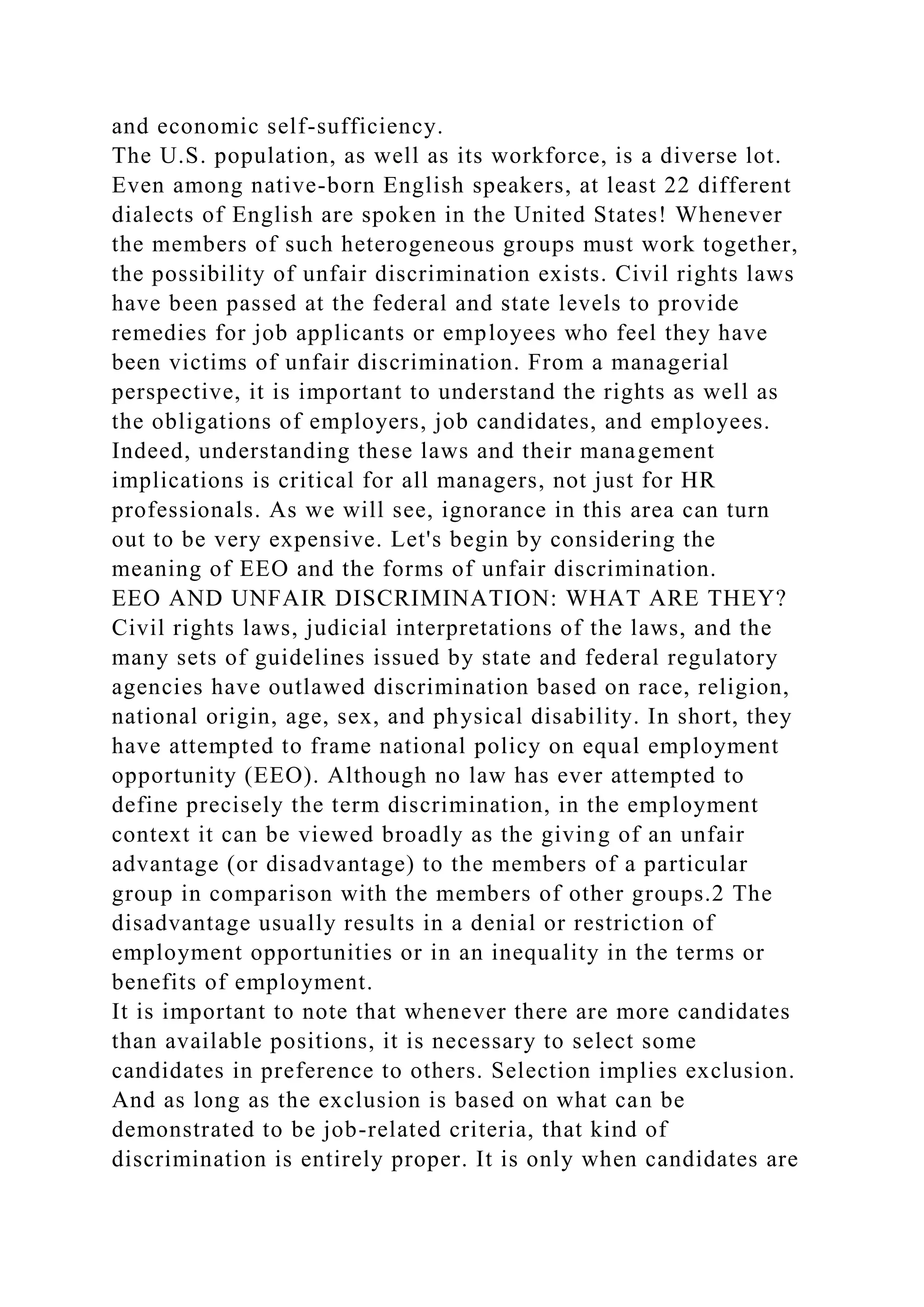
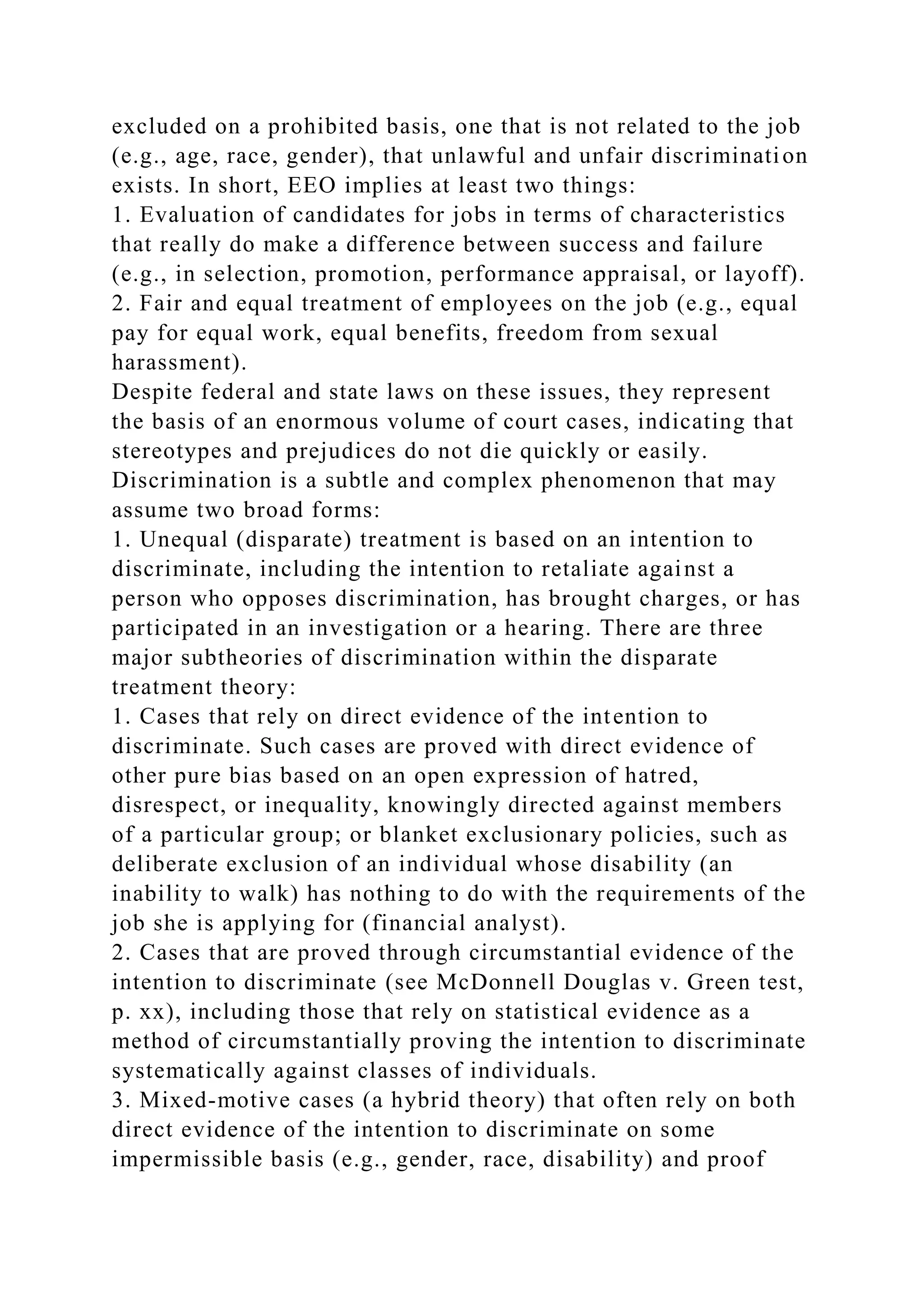
![that the employer's stated legitimate basis for its employment
decision is actually just a pretext for illegal discrimination.
2. Adverse impact (unintentional) discrimination occurs when
identical standards or procedures are applied to everyone,
despite the fact that they lead to a substantial difference in
employment outcomes (e.g., selection, promotion, layoffs) for
the members of a particular group, and they are unrelated to
success on a job. For example, use of a minimum height
requirement of 5 feet 8 inches for police cadets would have an
adverse impact on Asians, Hispanics, and women. The policy is
neutral on its face but has an adverse impact. To use it, an
employer would need to show that the height requirement is
necessary to perform the job.
These two forms of illegal discrimination are illustrated
graphically in Figure 3-1.
Figure 3-1 Major forms of illegal discrimination.
(Source: W. F. Cascio. (2000). Costing human resources: The
financial impact of behavior in organizations [4th ed.], South-
Western College Publishing, Cincinnati, OH, p. 63. Used with
permission.)
THE LEGAL CONTEXT OF HUMAN RESOURCE DECISIONS
Now that we understand the forms that illegal discrimination
can take, let's consider the major federal laws governing
employment. Then we will consider the agencies that enforce
the laws, as well as some important court cases that have
interpreted them. The federal laws that we will discuss fall into
two broad classes:
1. Laws of broad scope that prohibit unfair discrimination.
2. Laws of limited application, for example, those that require
nondiscrimination as a condition for receiving federal funds
(contracts, grants, revenue-sharing entitlements).
The particular laws that we shall discuss within each category
are the following:](https://image.slidesharecdn.com/diversityatworkquestionsthischapterwillhelpmanagersanswe-221026032732-01cc7112/75/Diversity-at-WorkQuestions-This-Chapter-Will-Help-Managers-Answe-docx-60-2048.jpg)
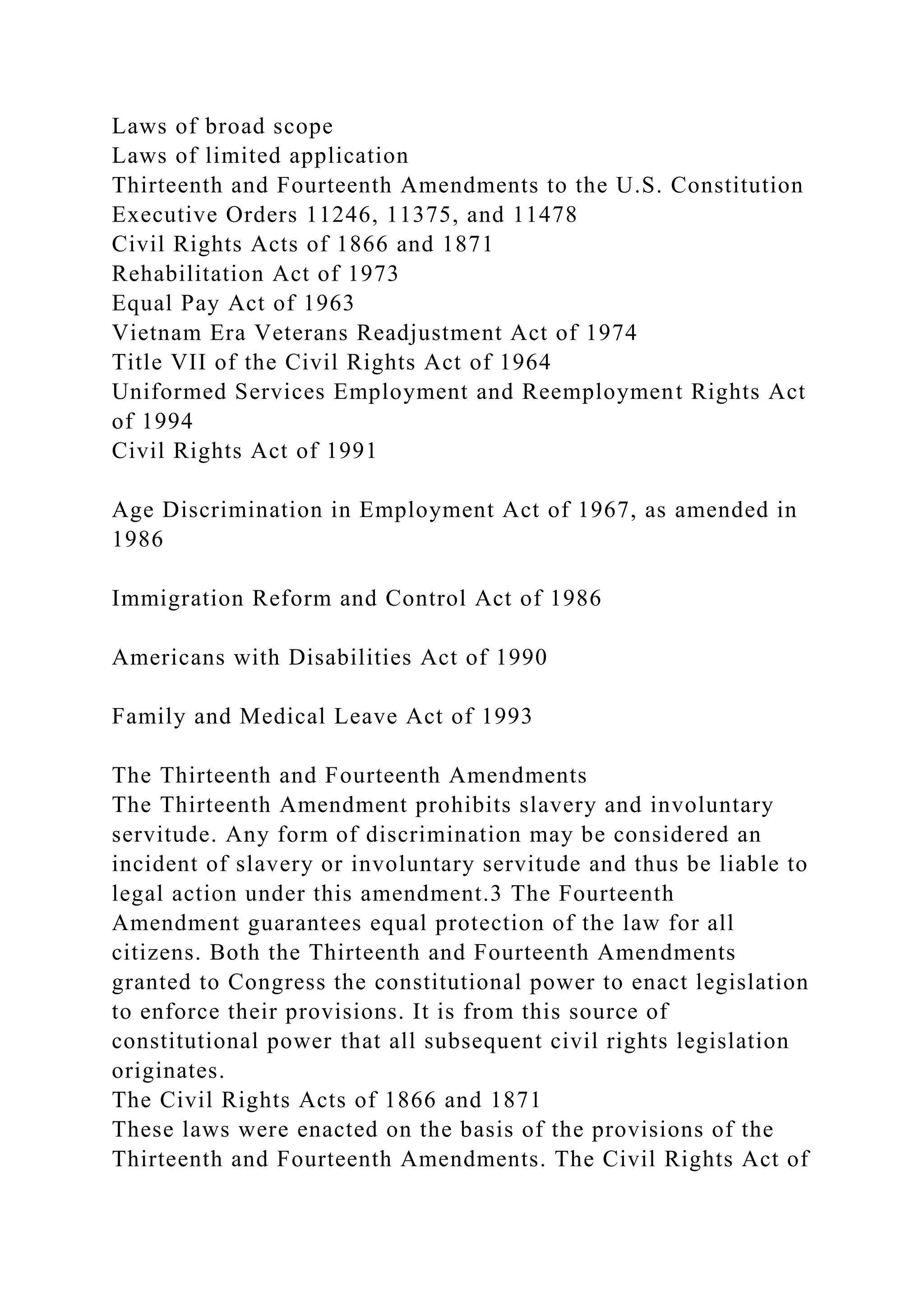
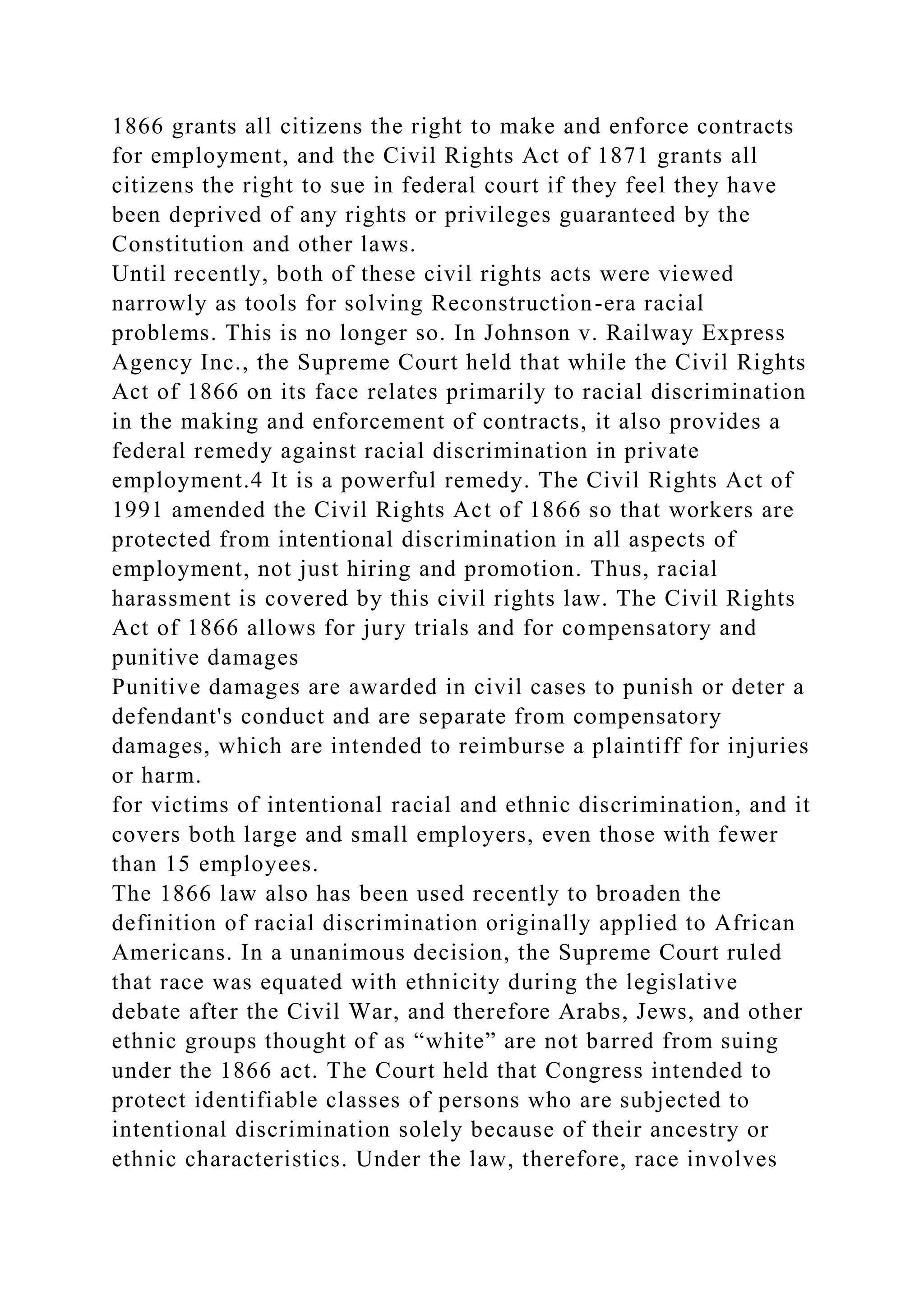

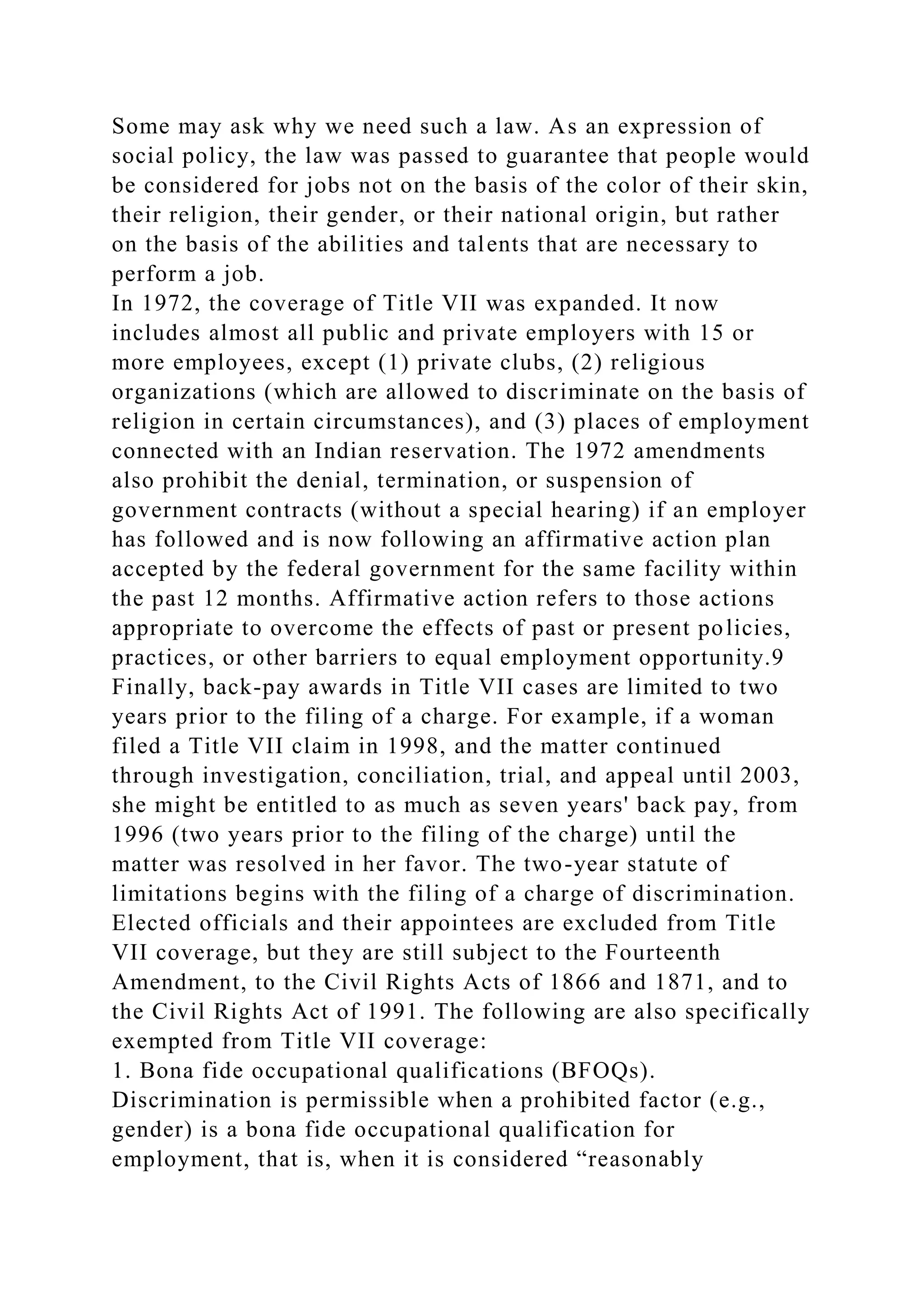
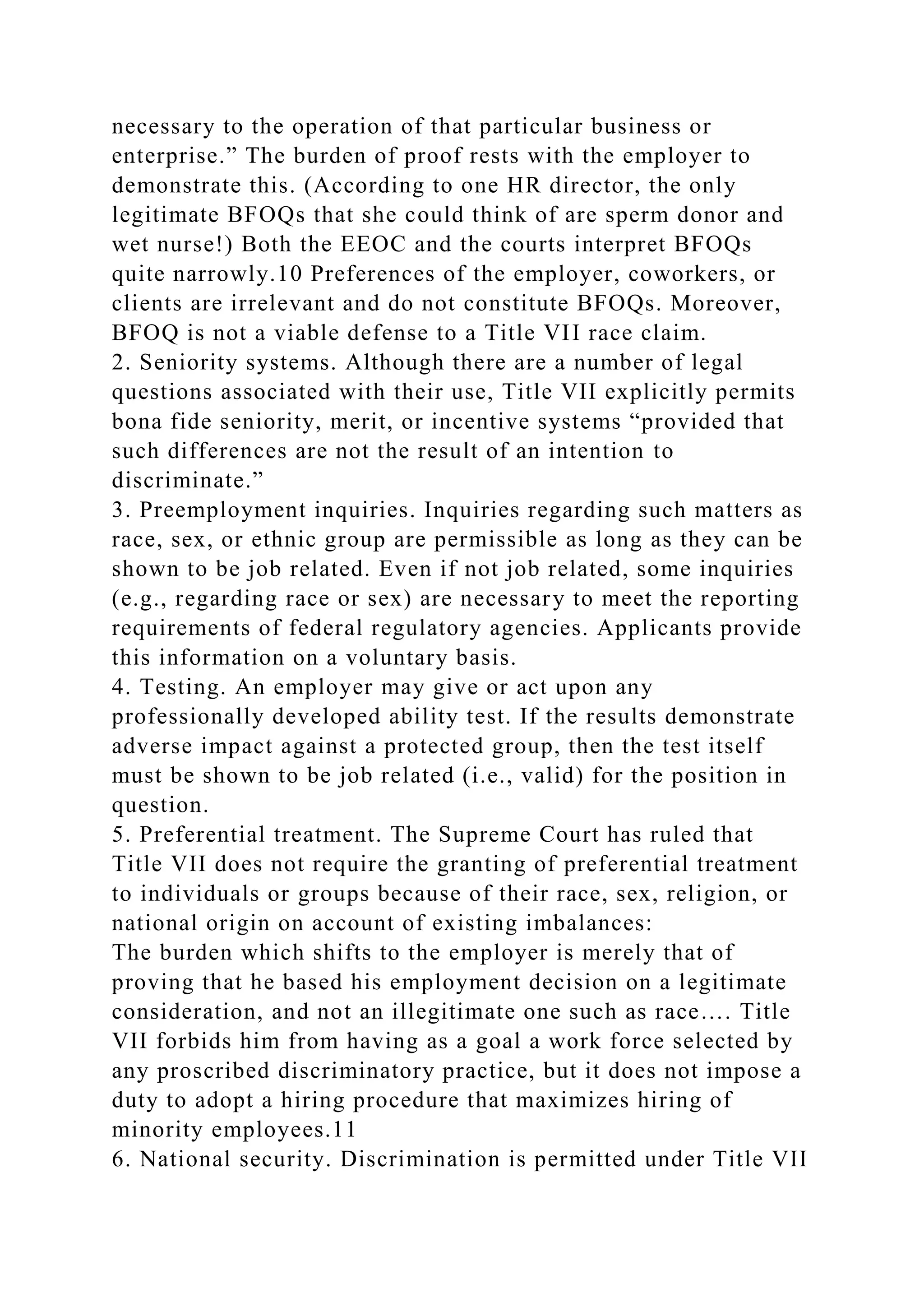
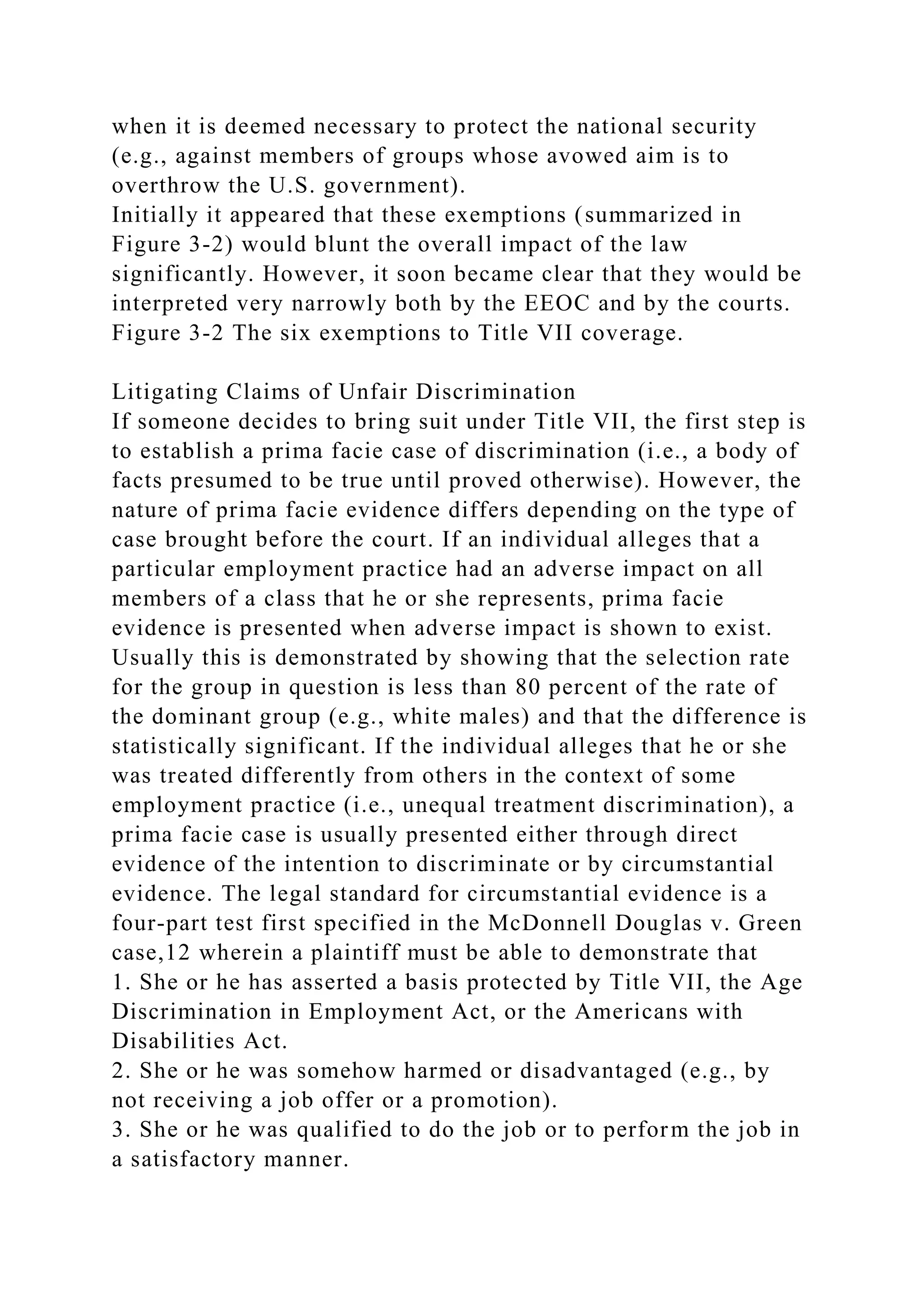
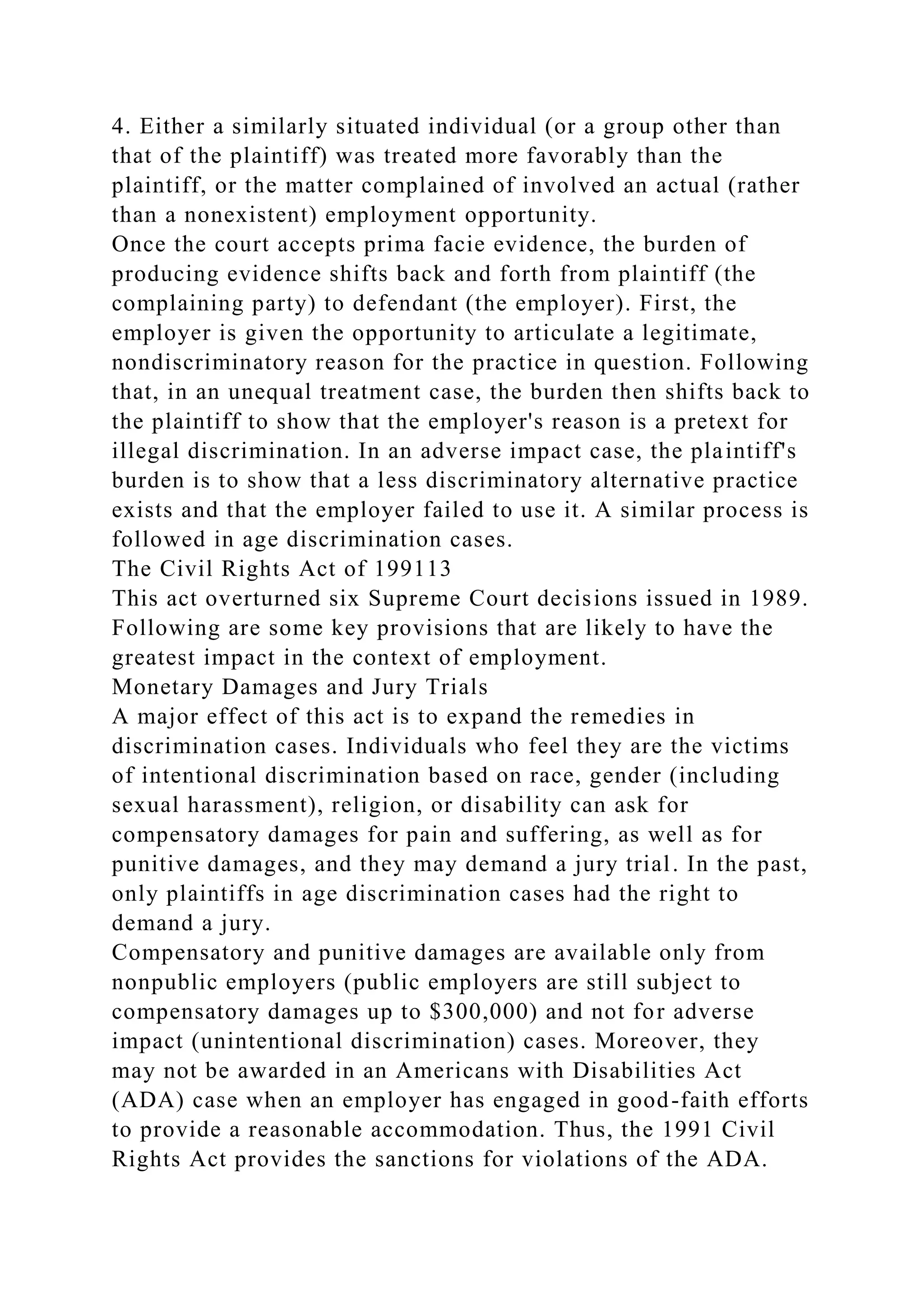

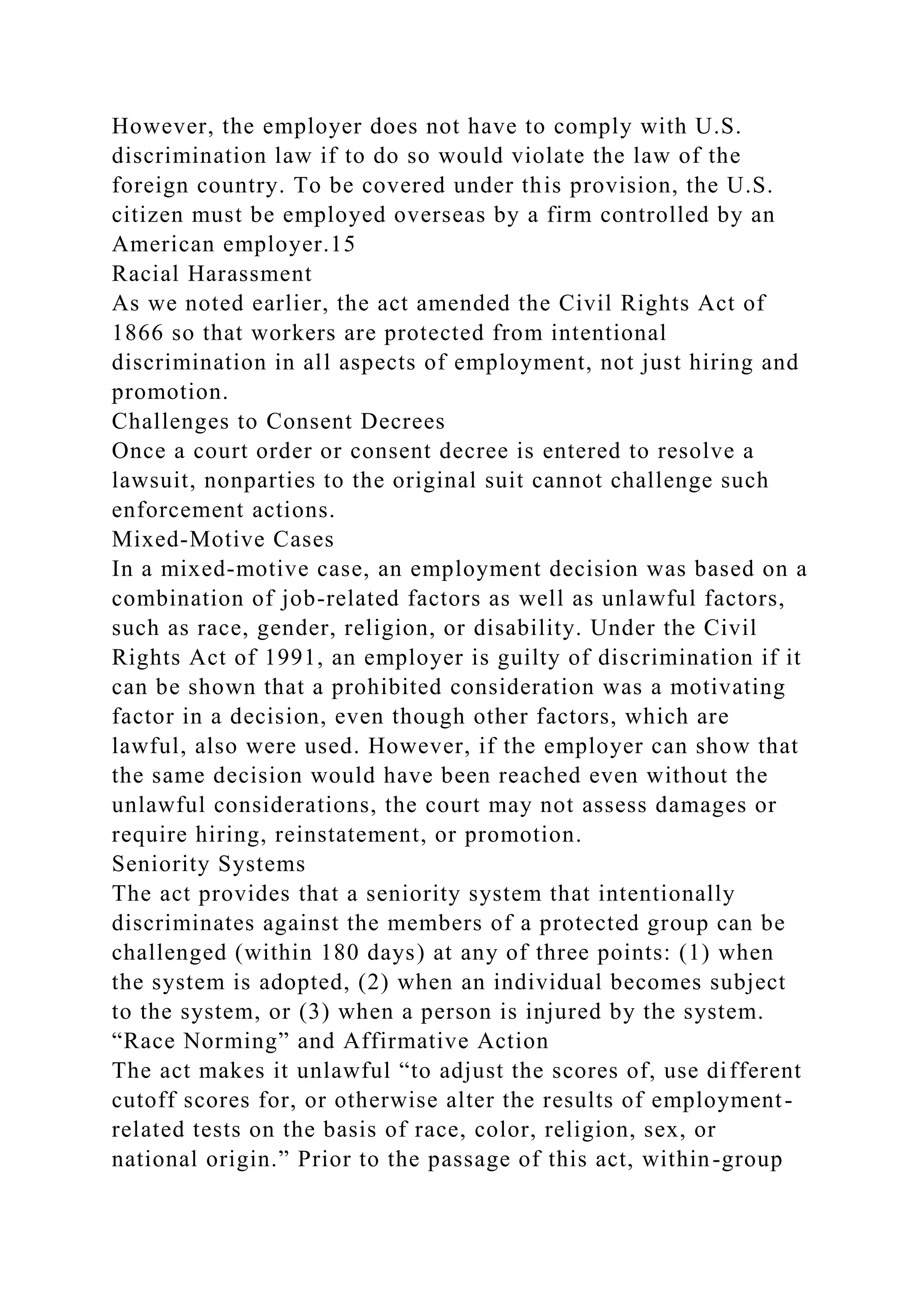
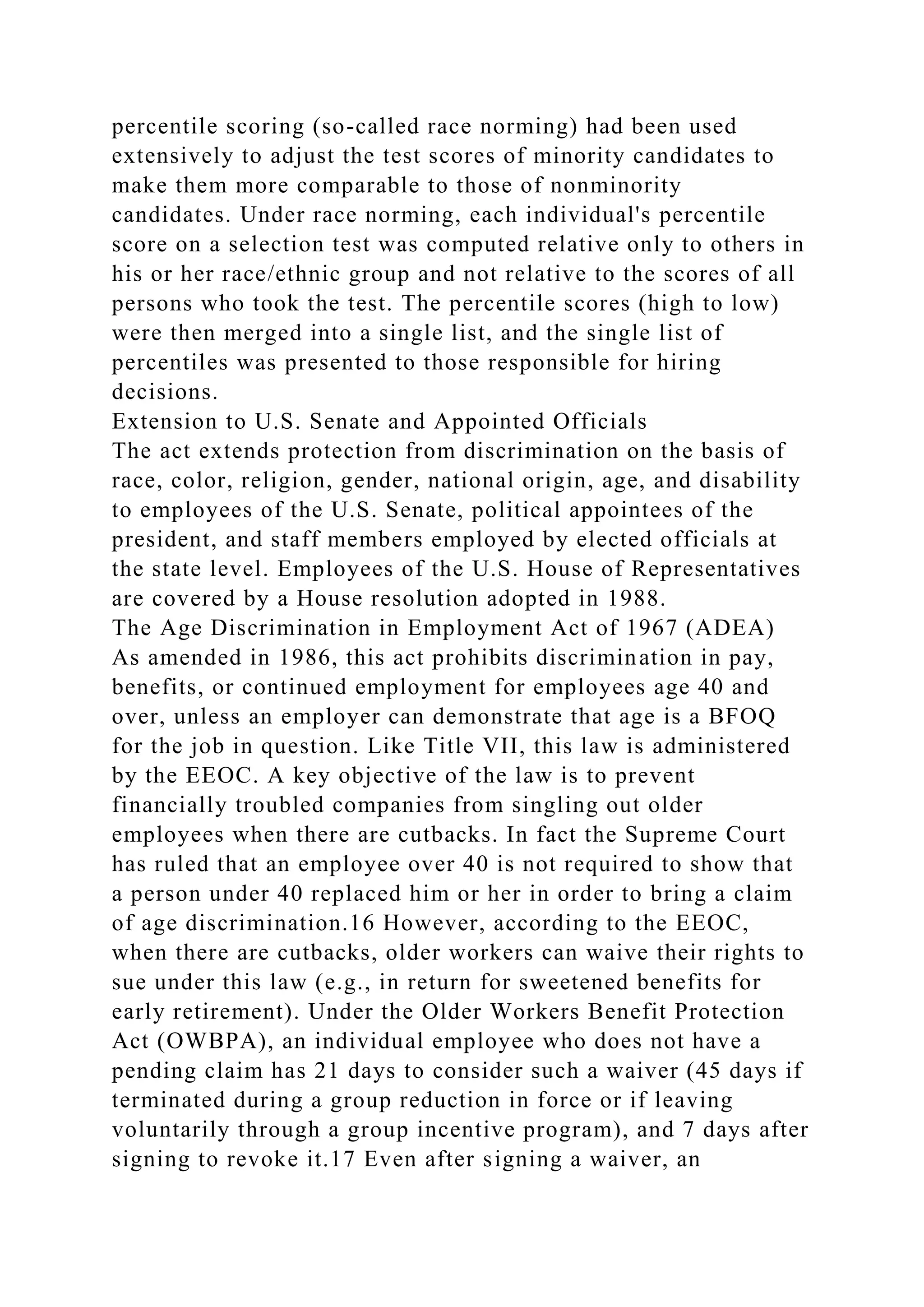
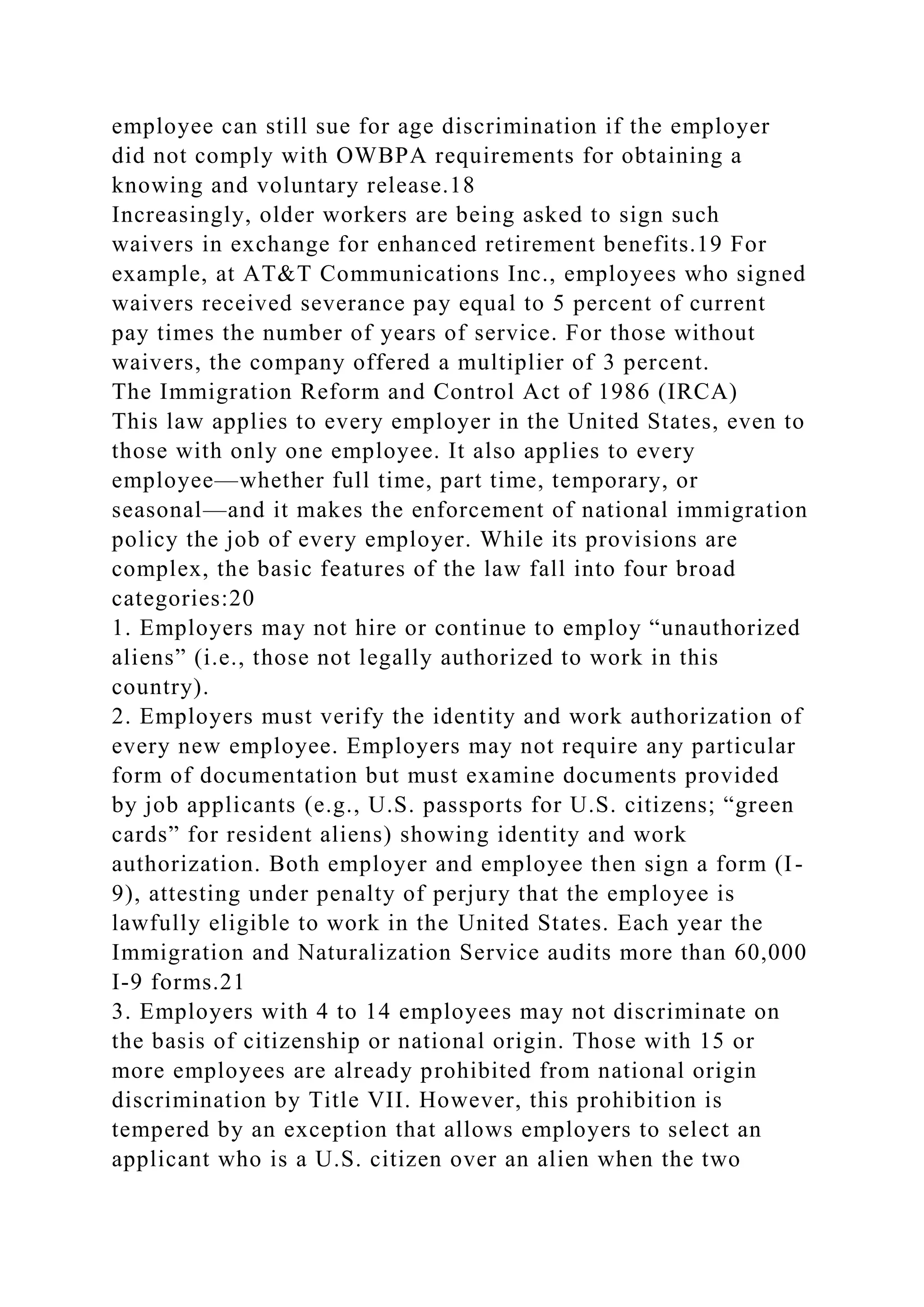
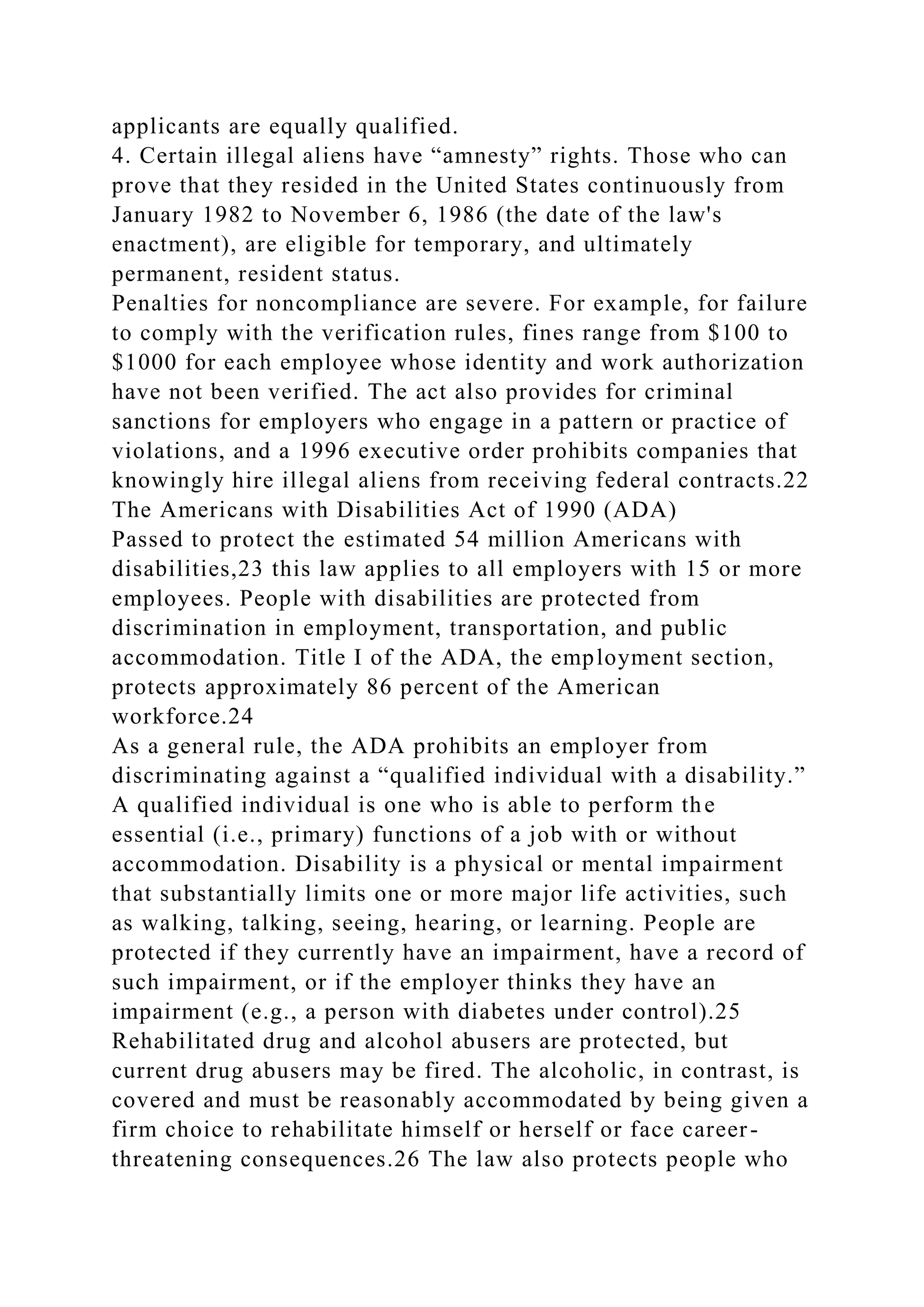
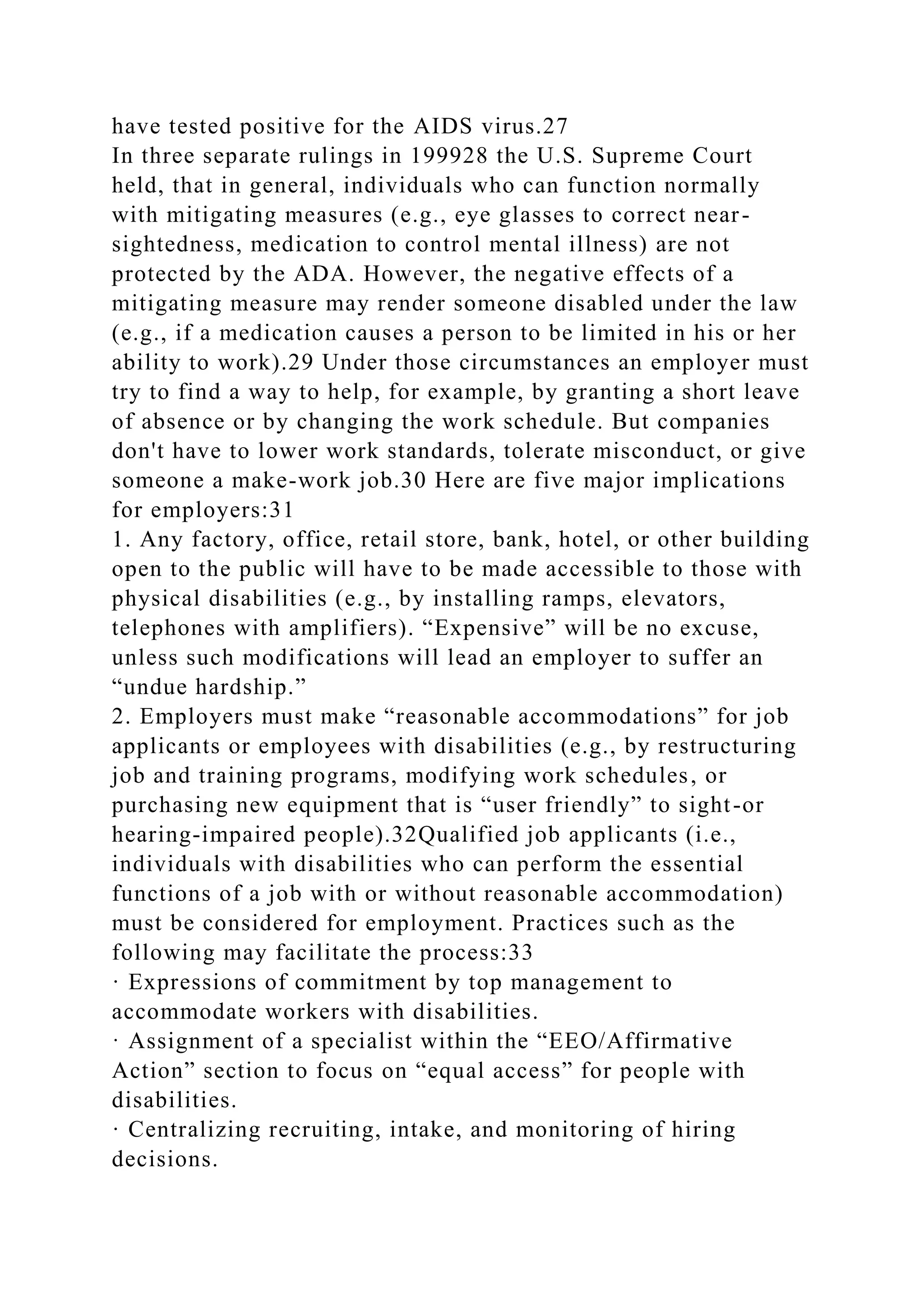
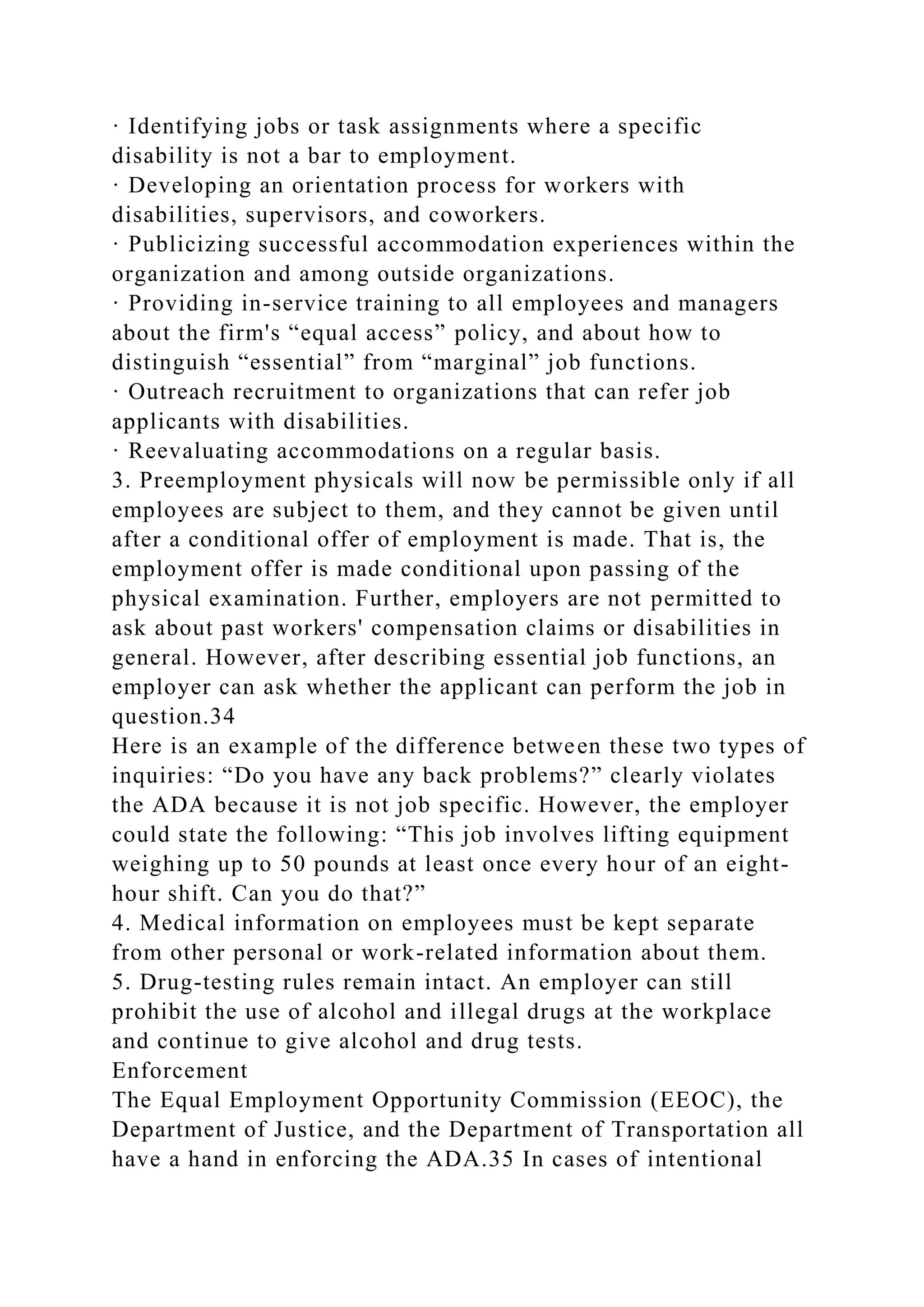
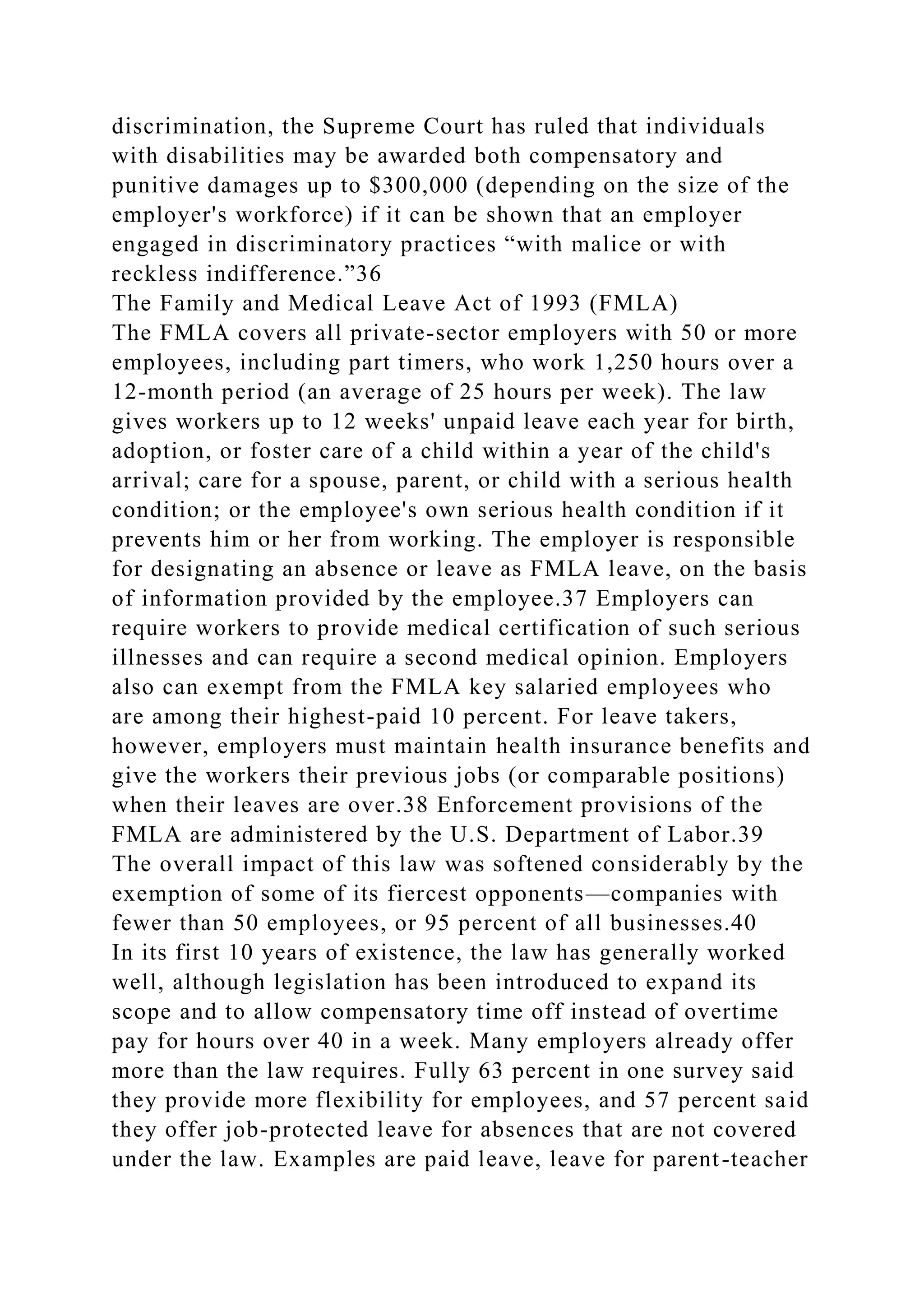
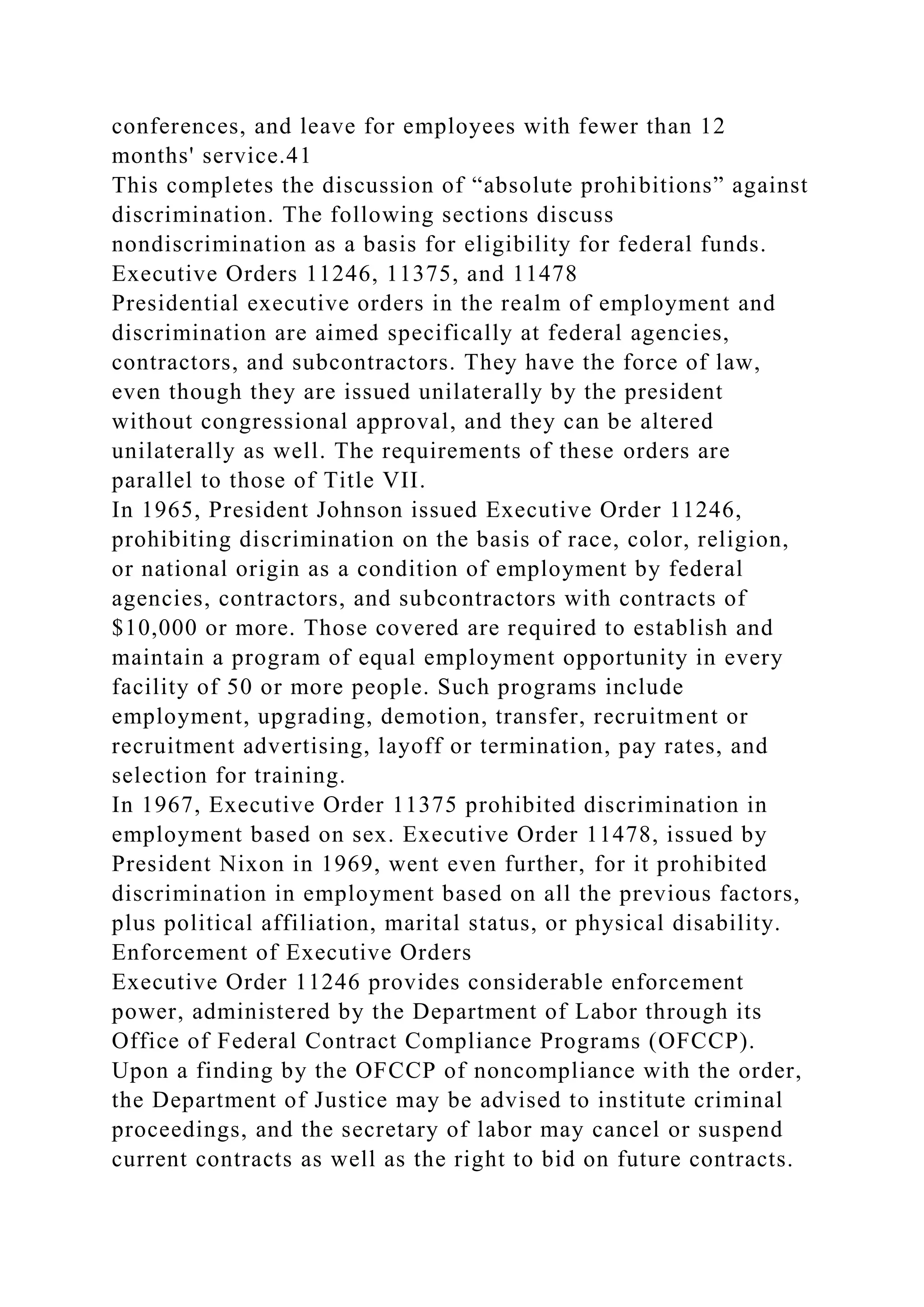



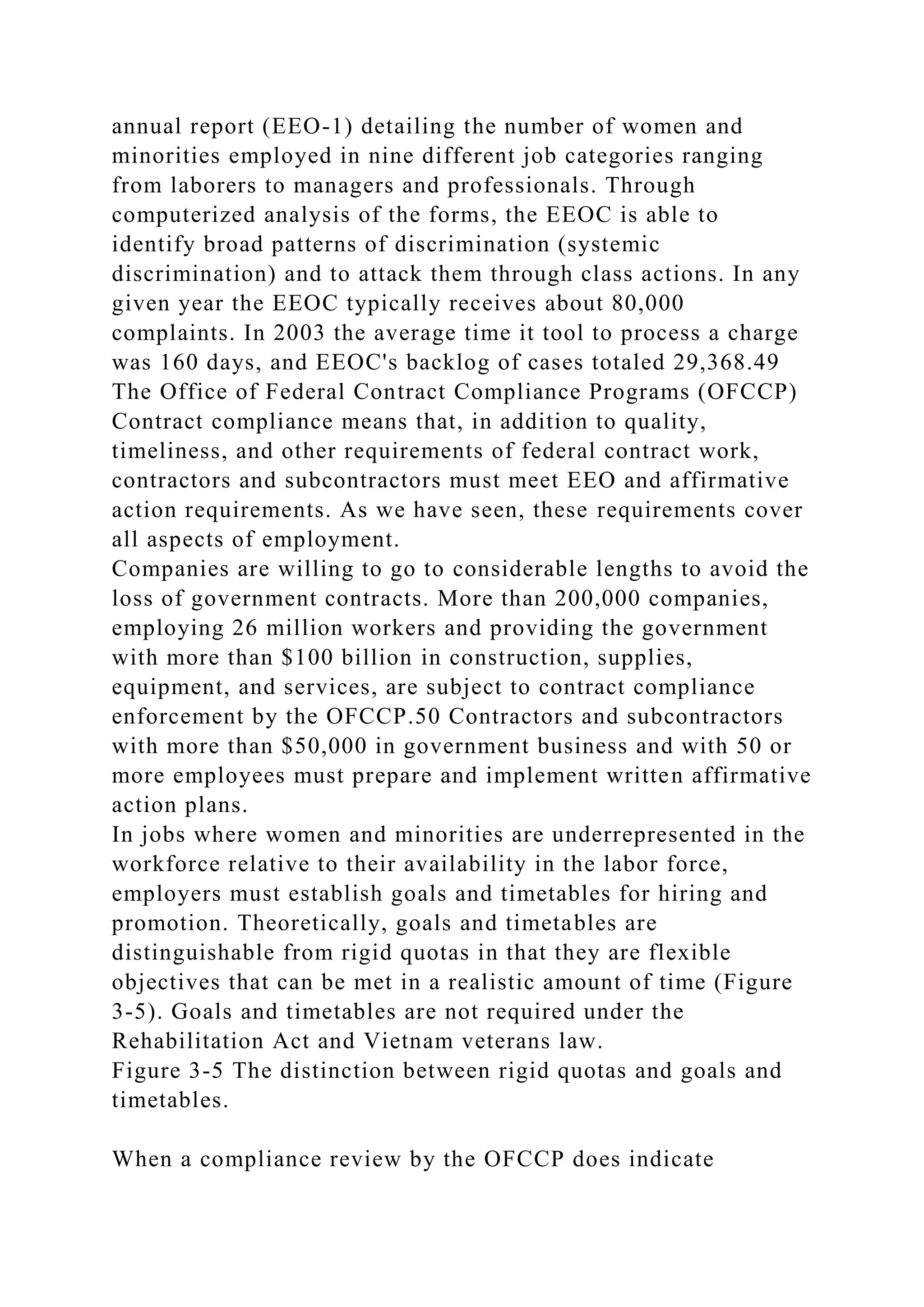
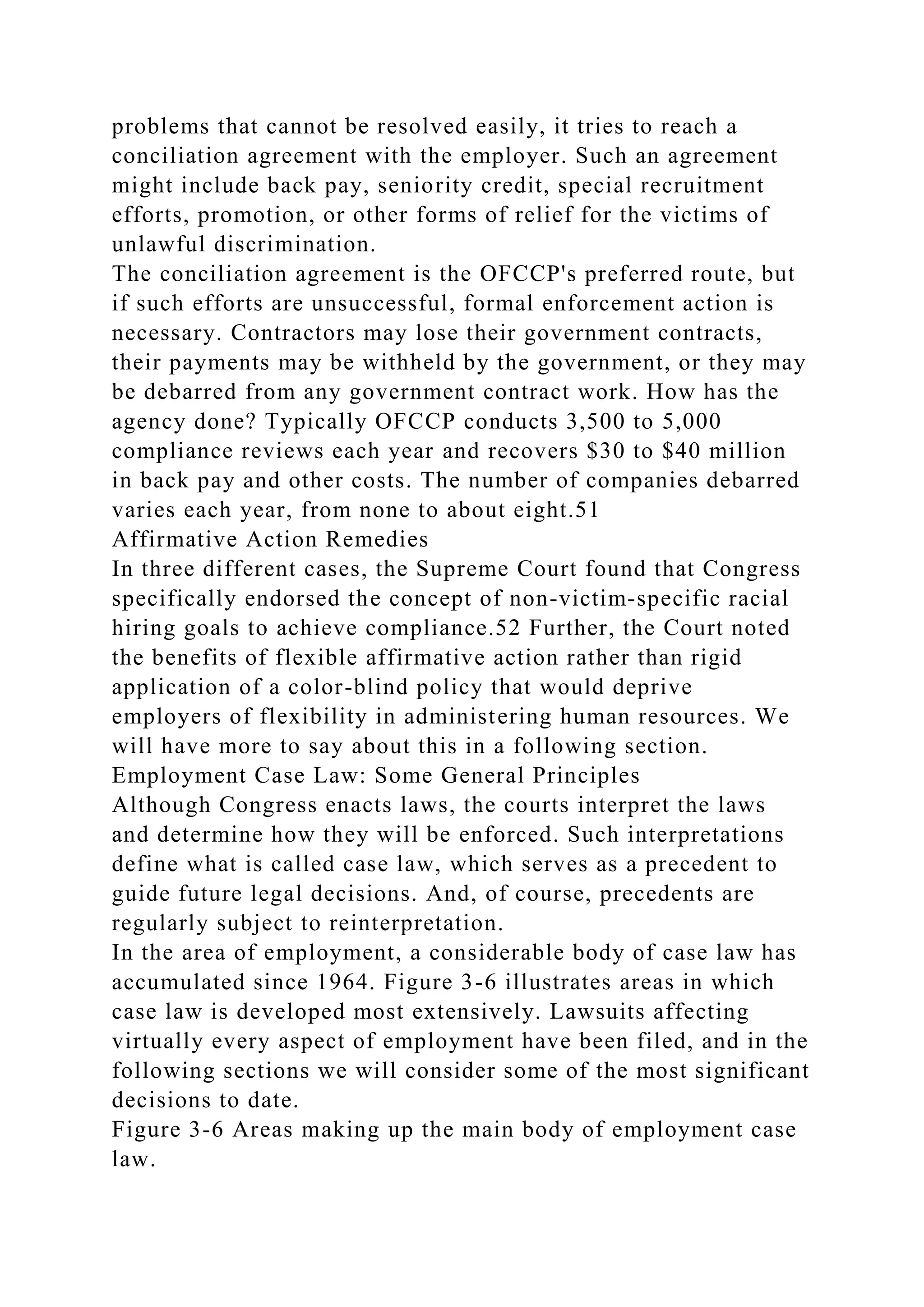

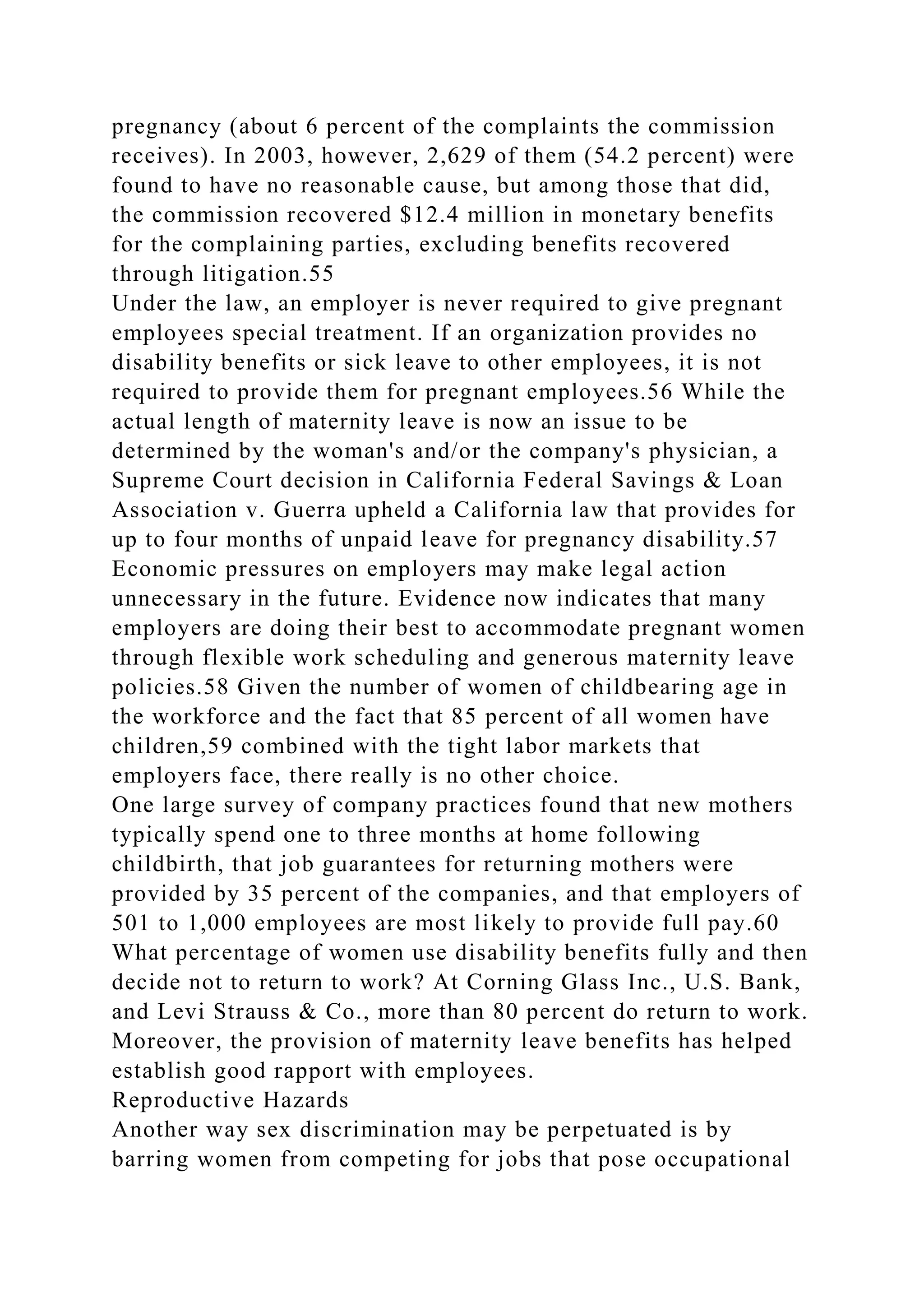

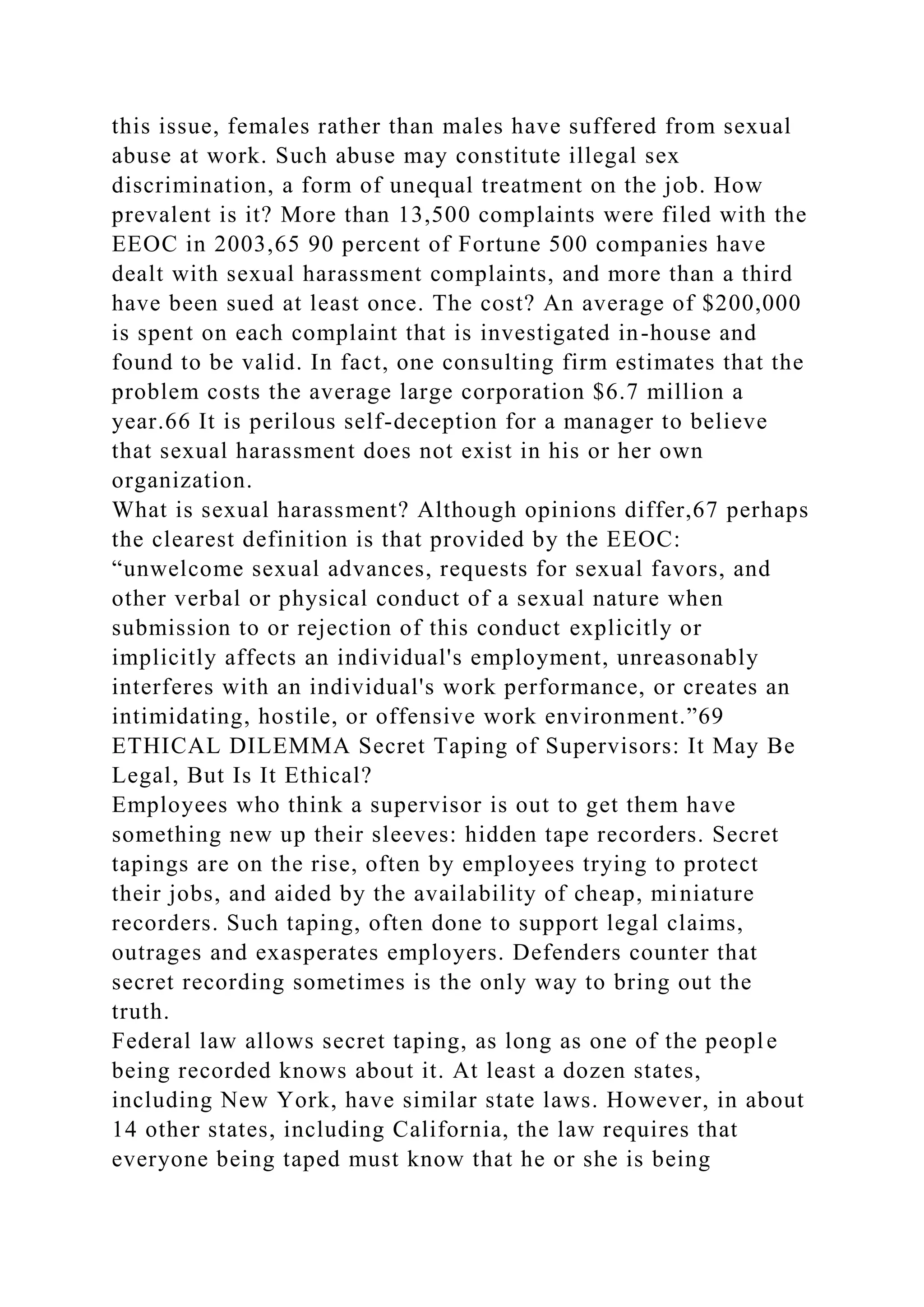
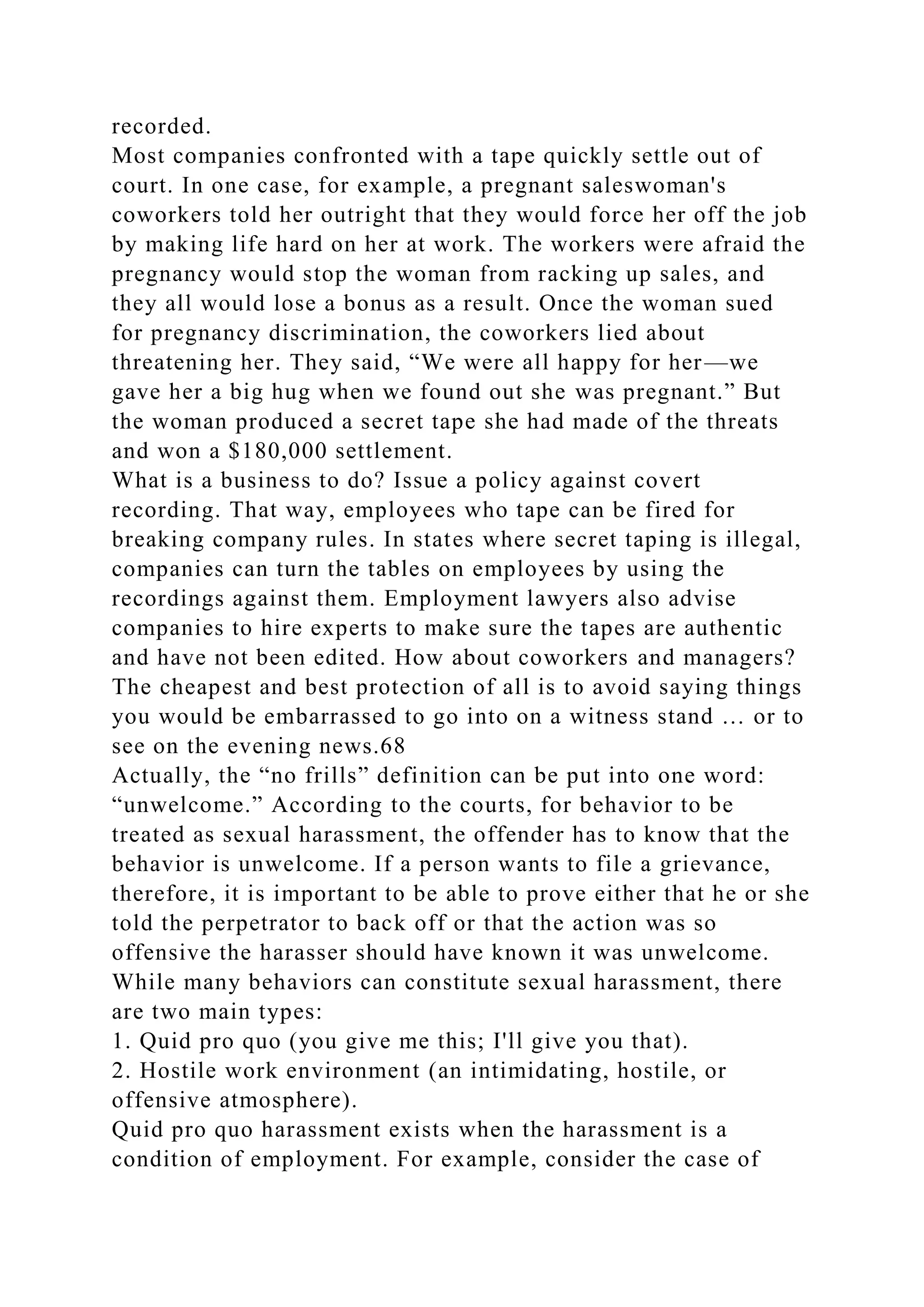
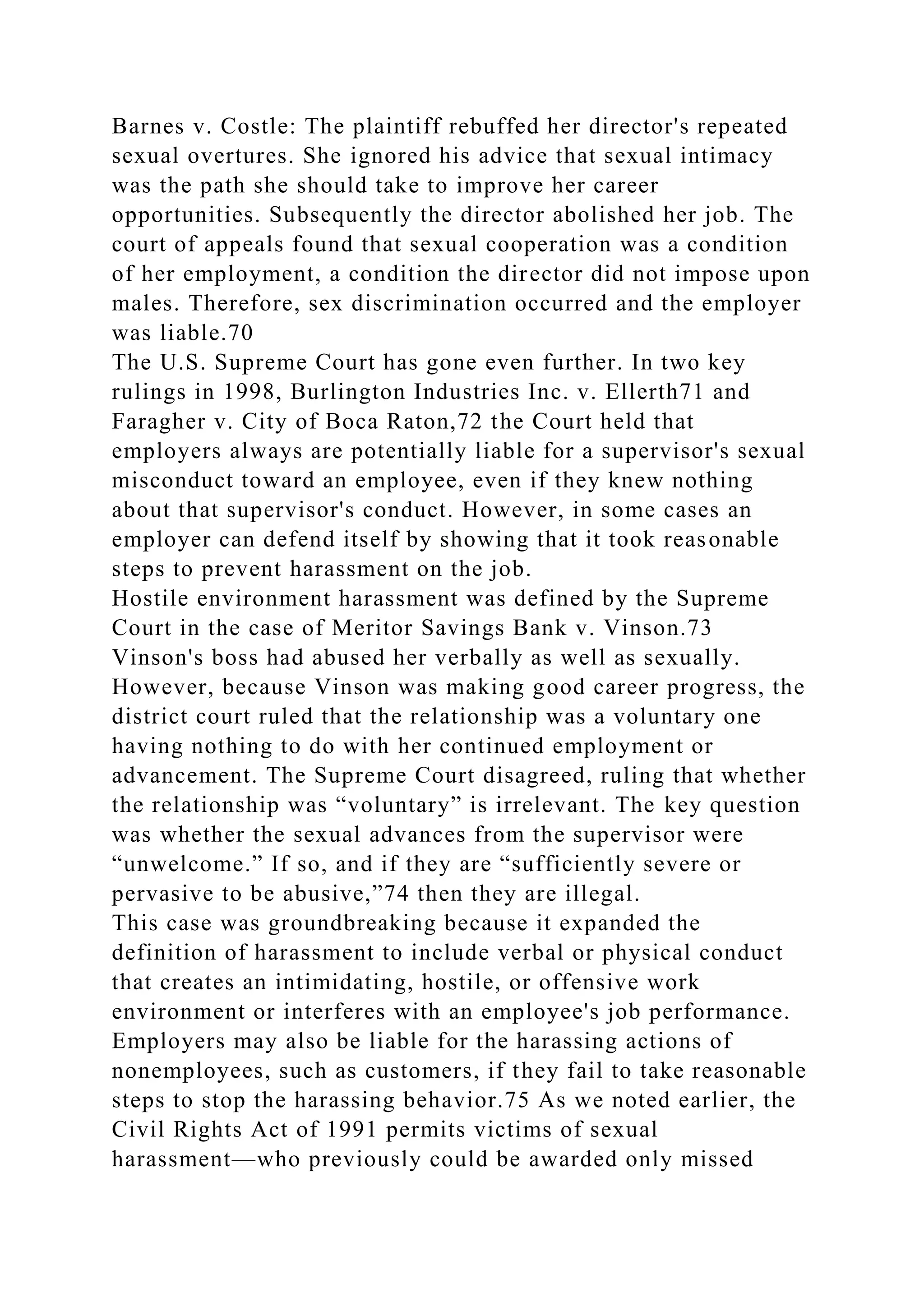
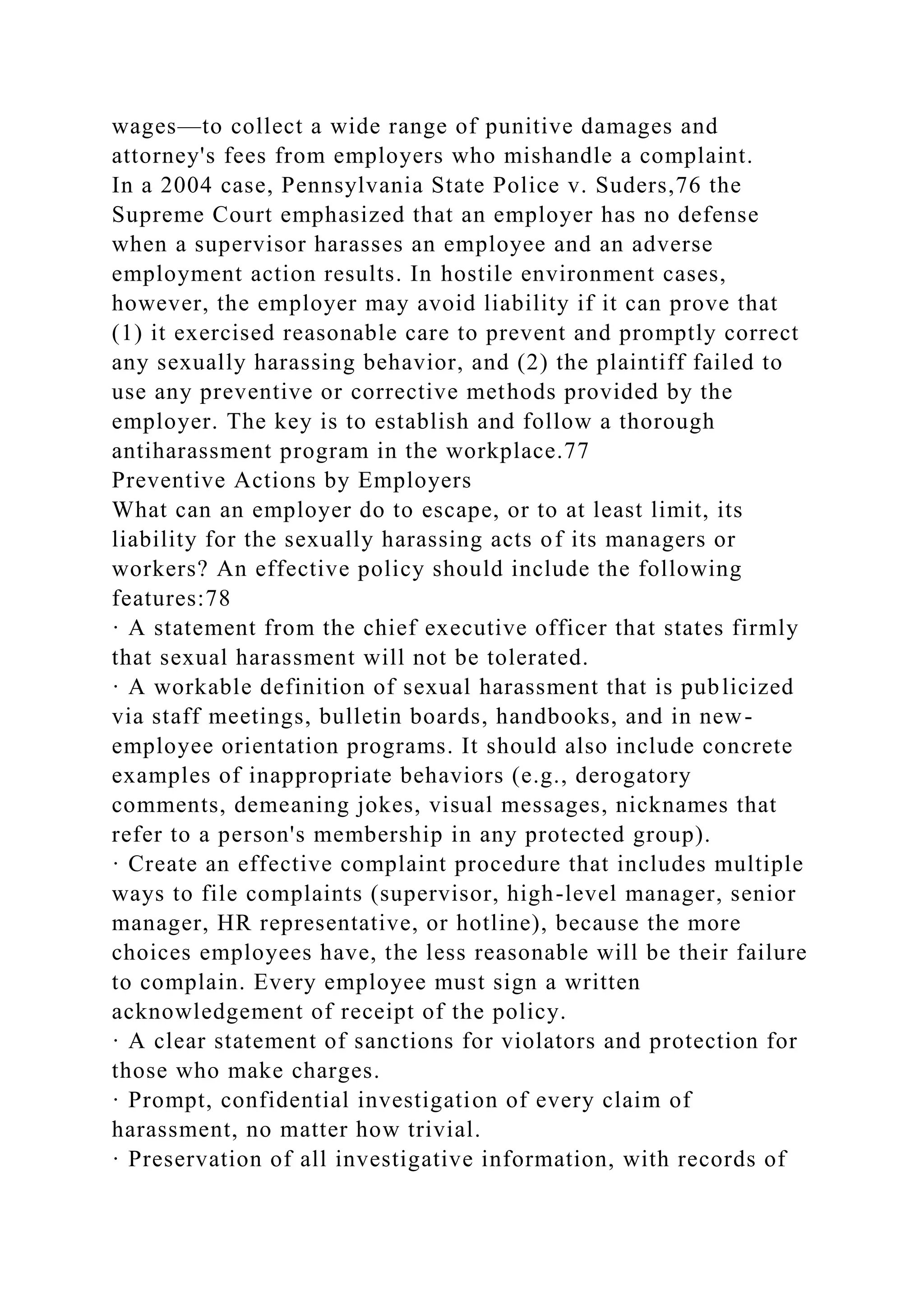

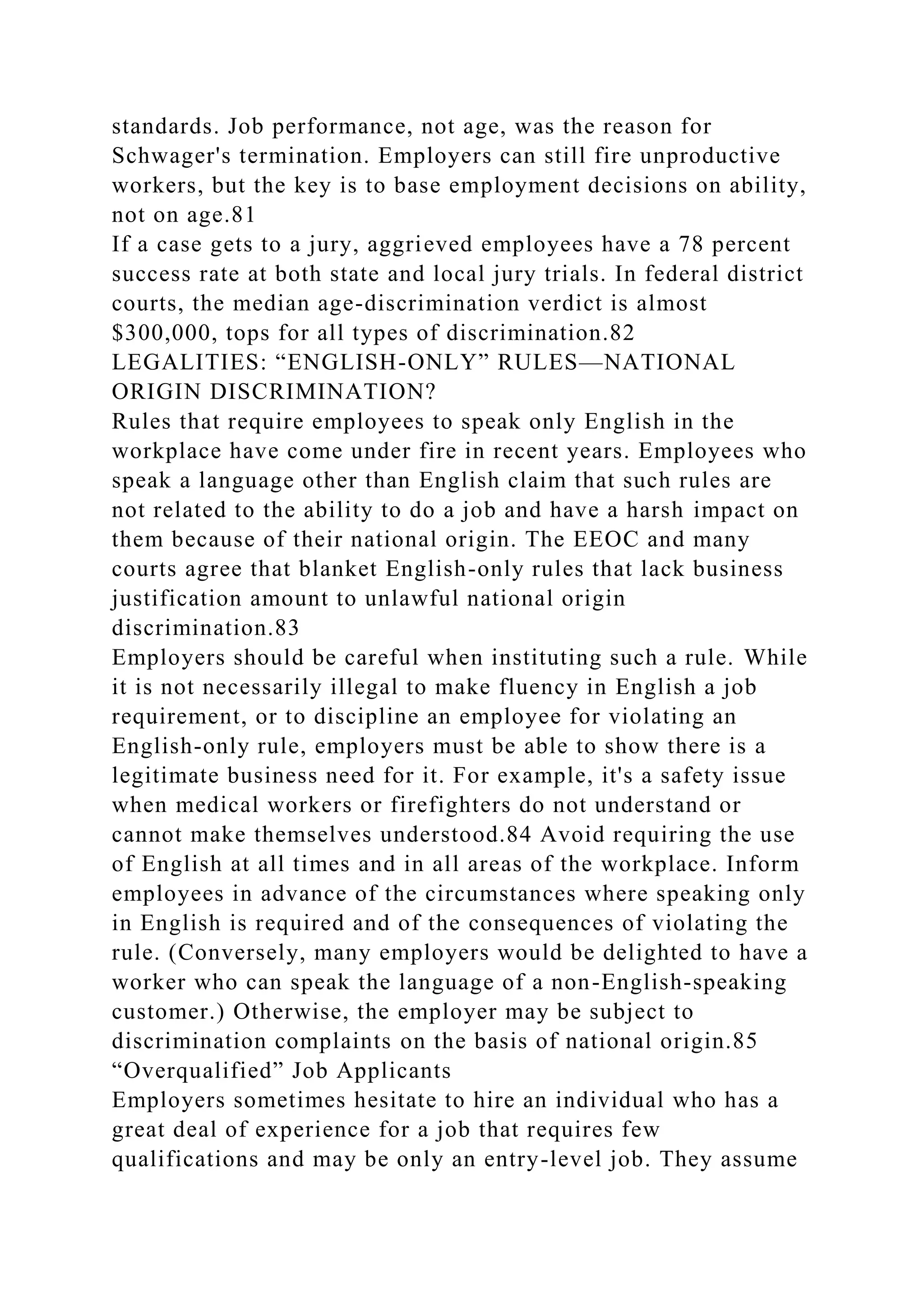
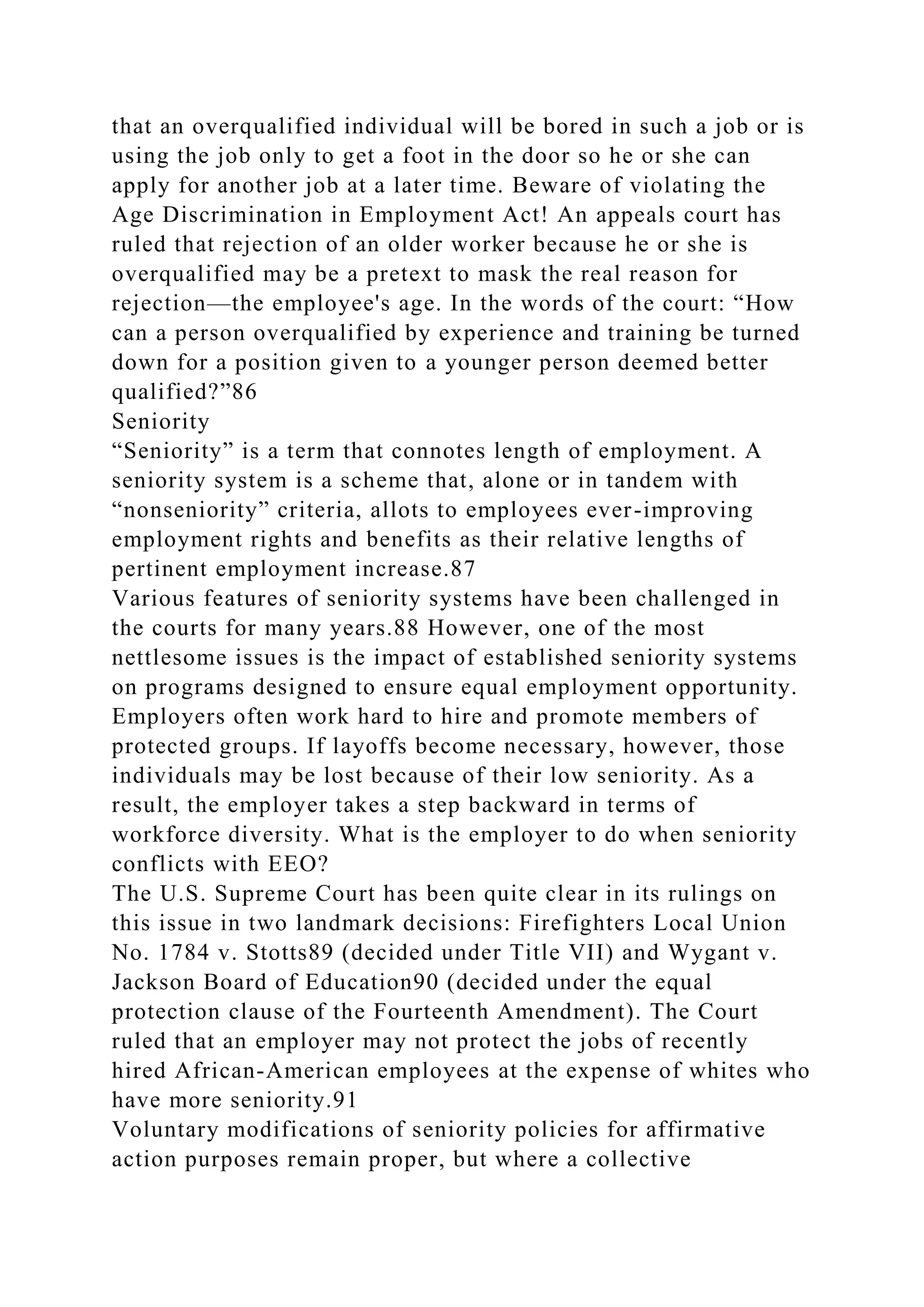
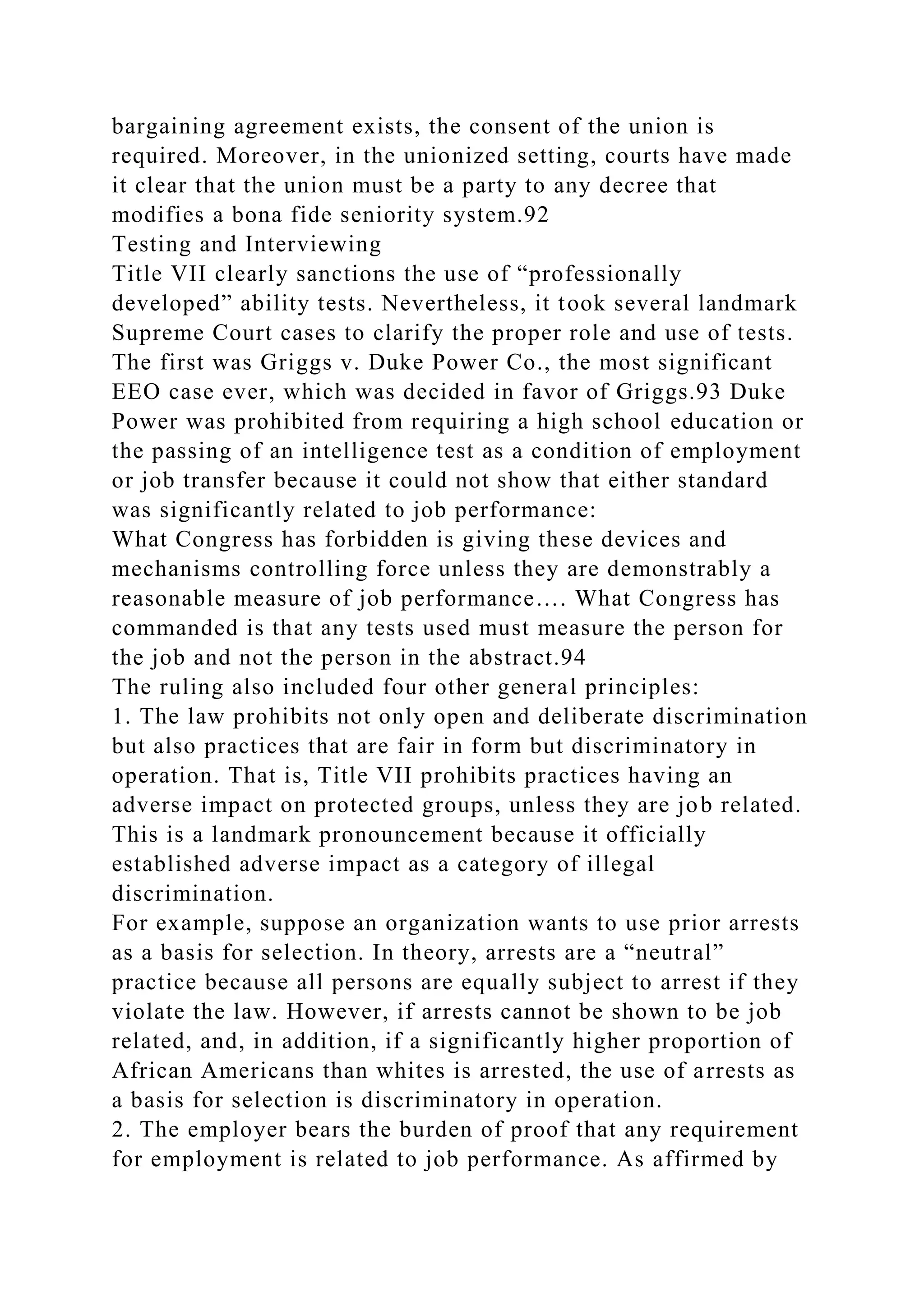
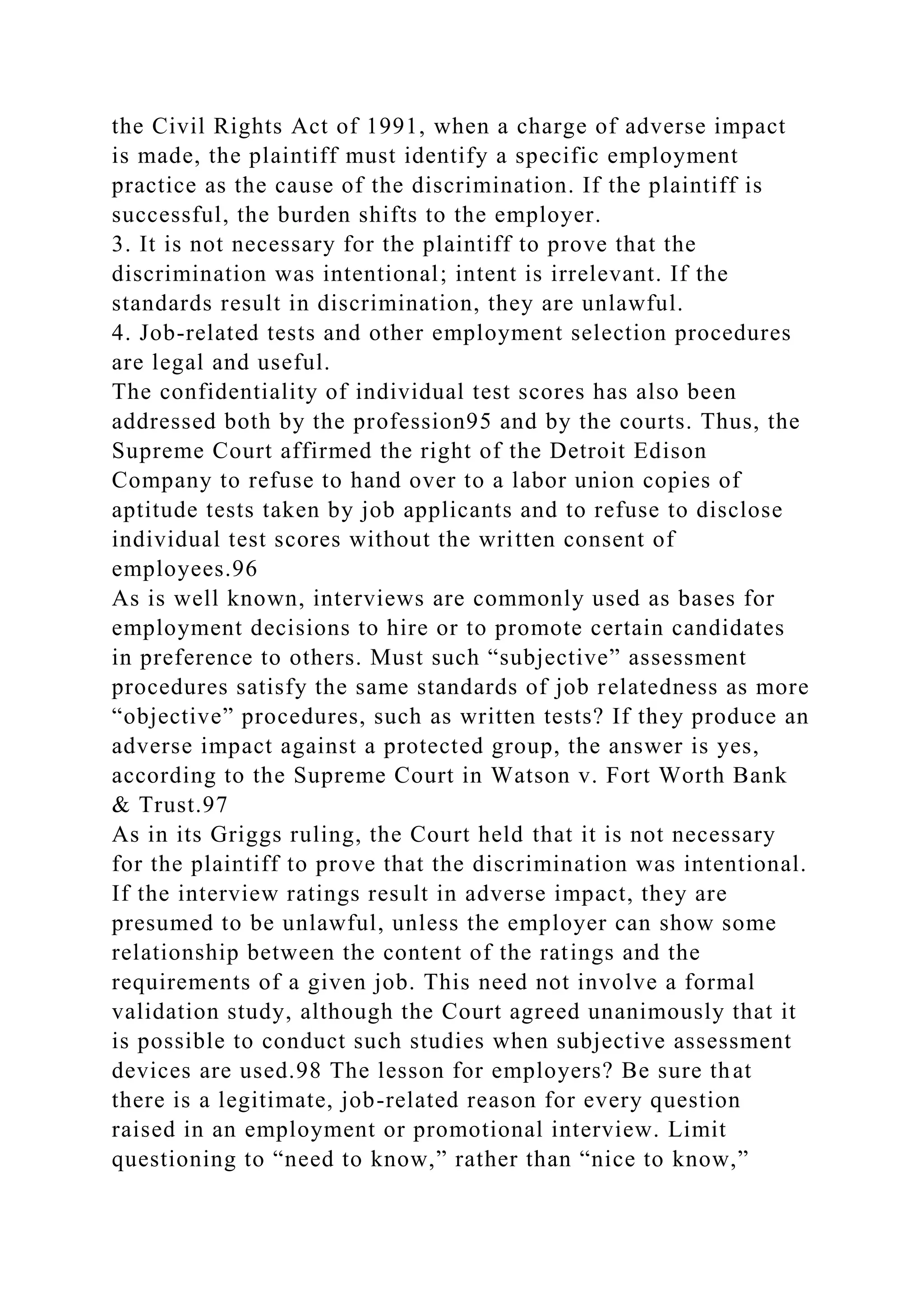
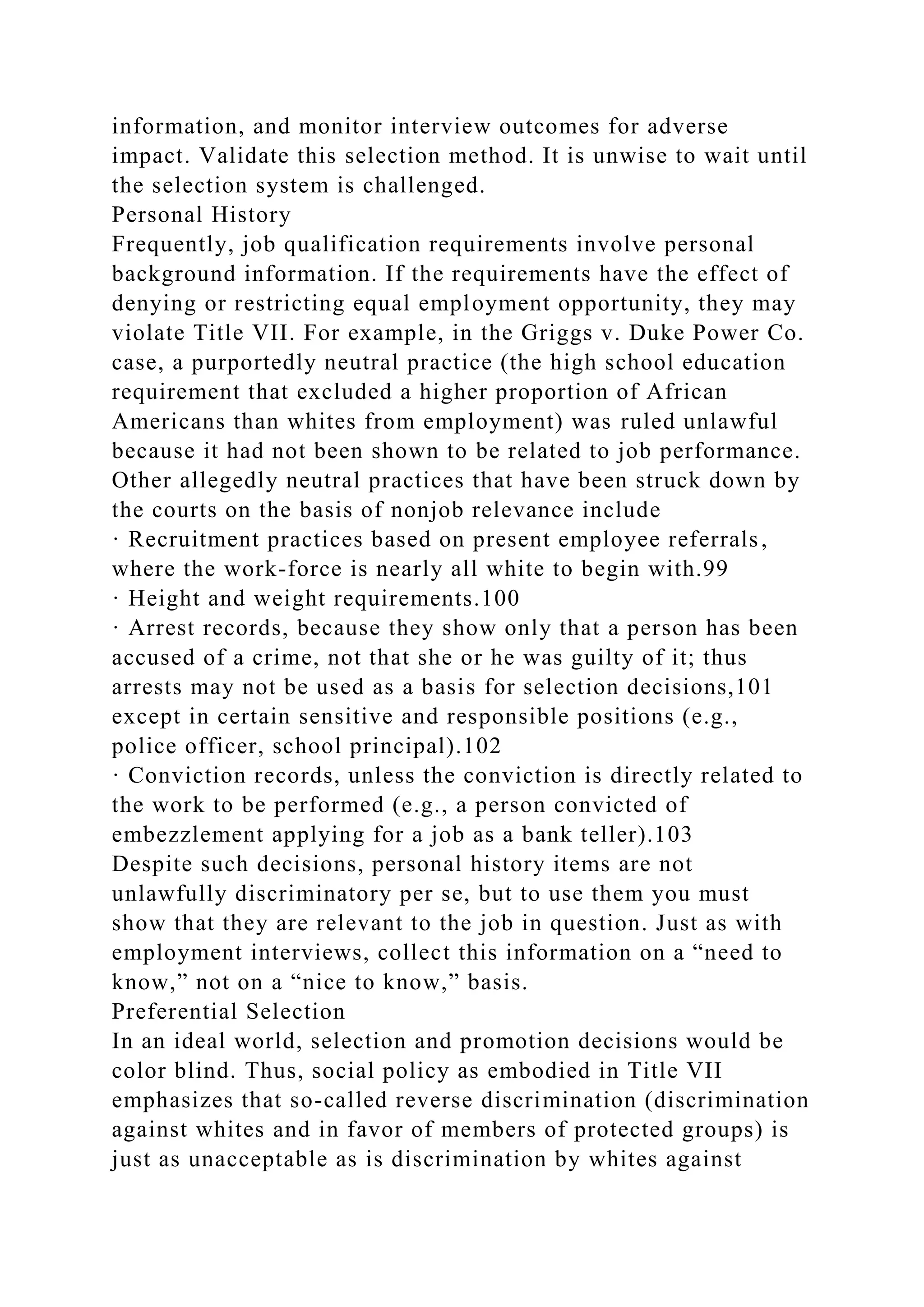
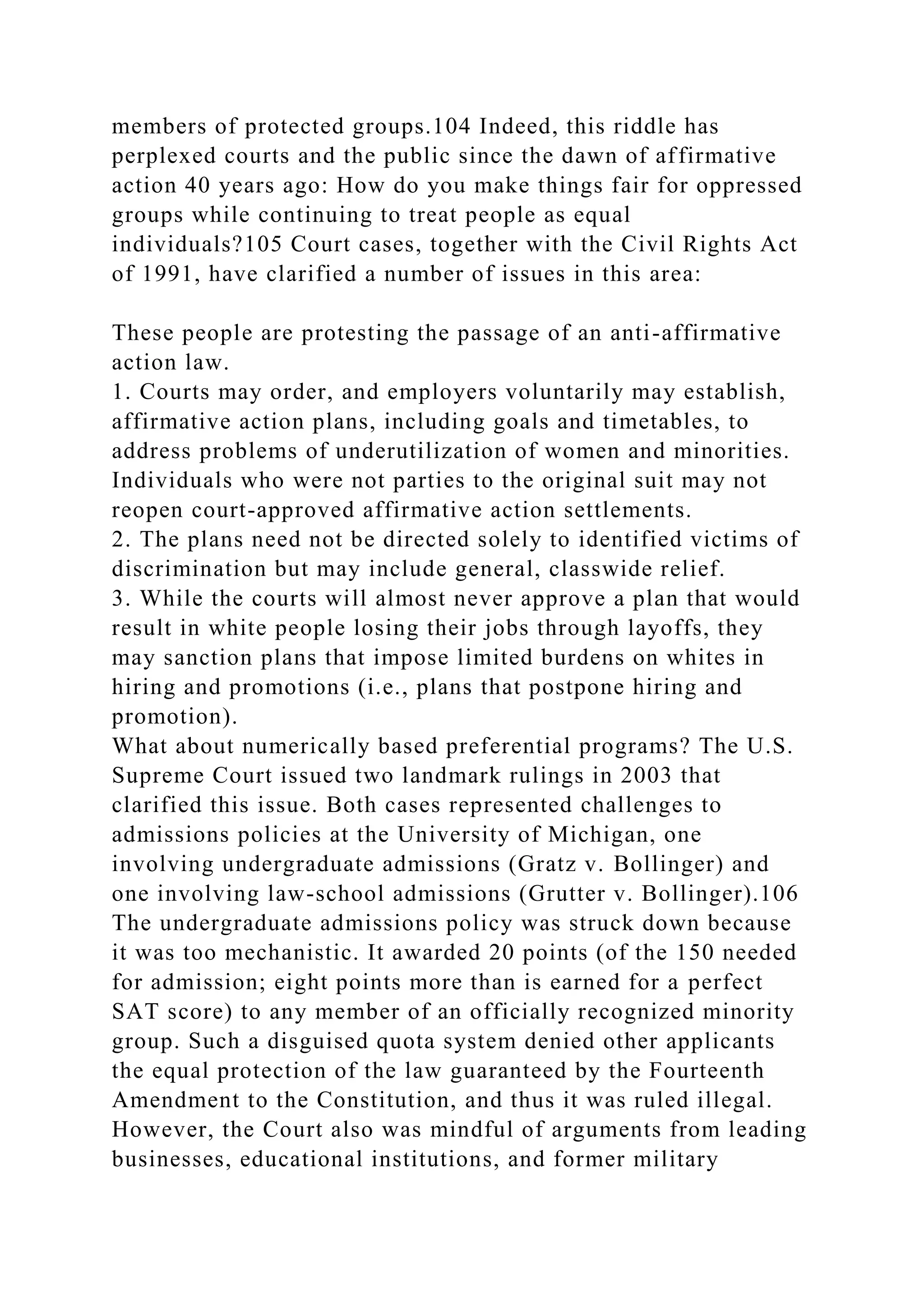

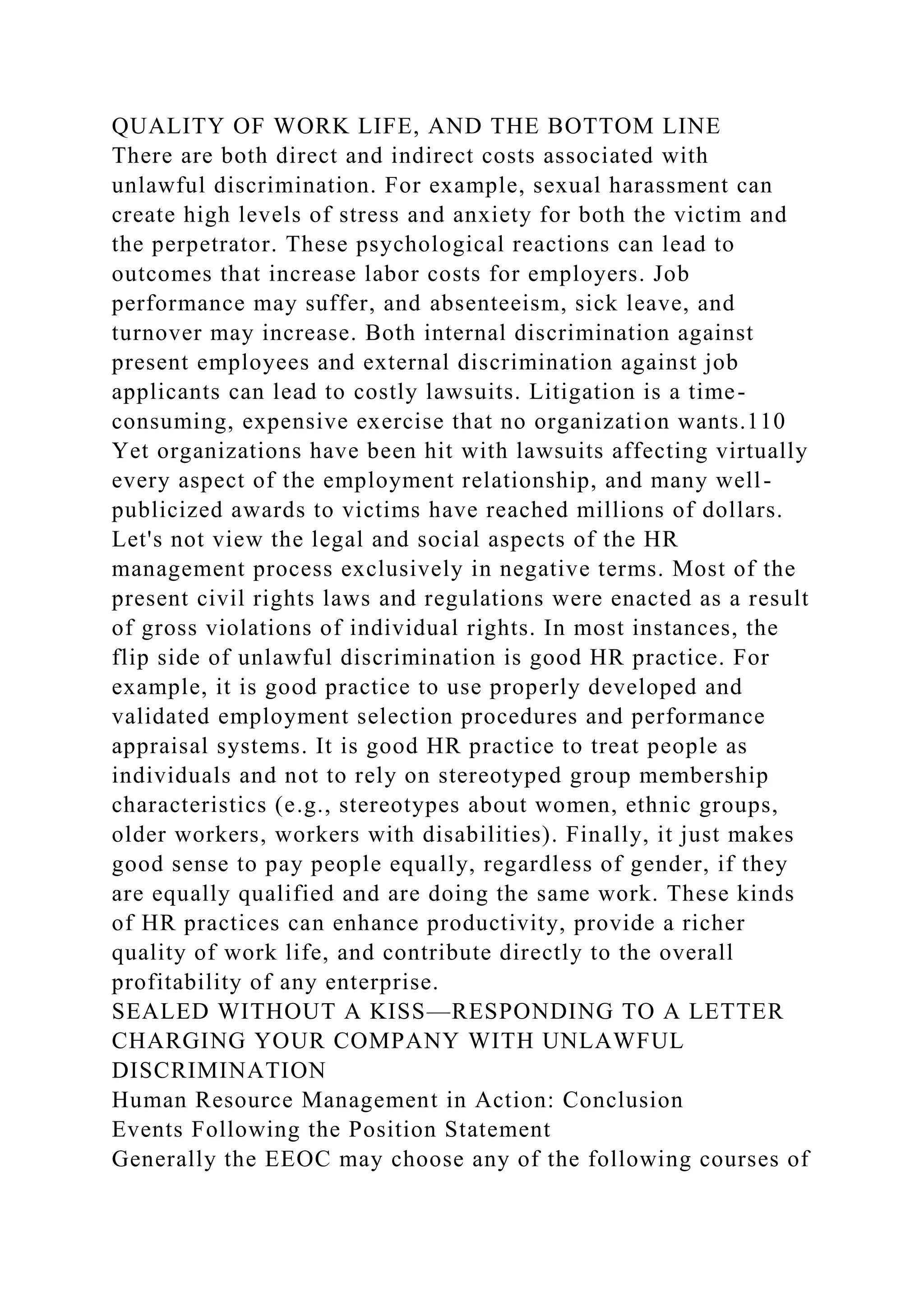
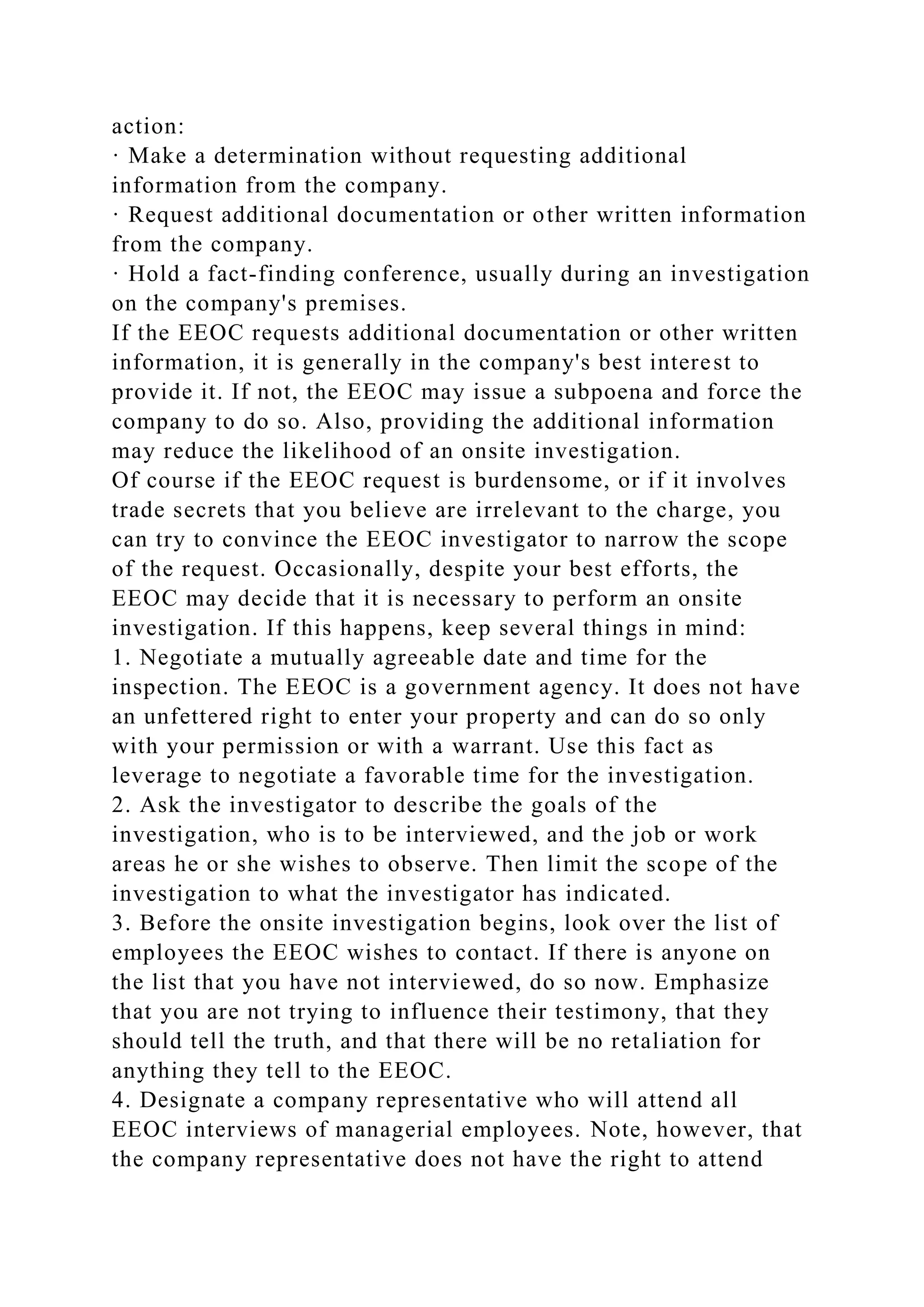
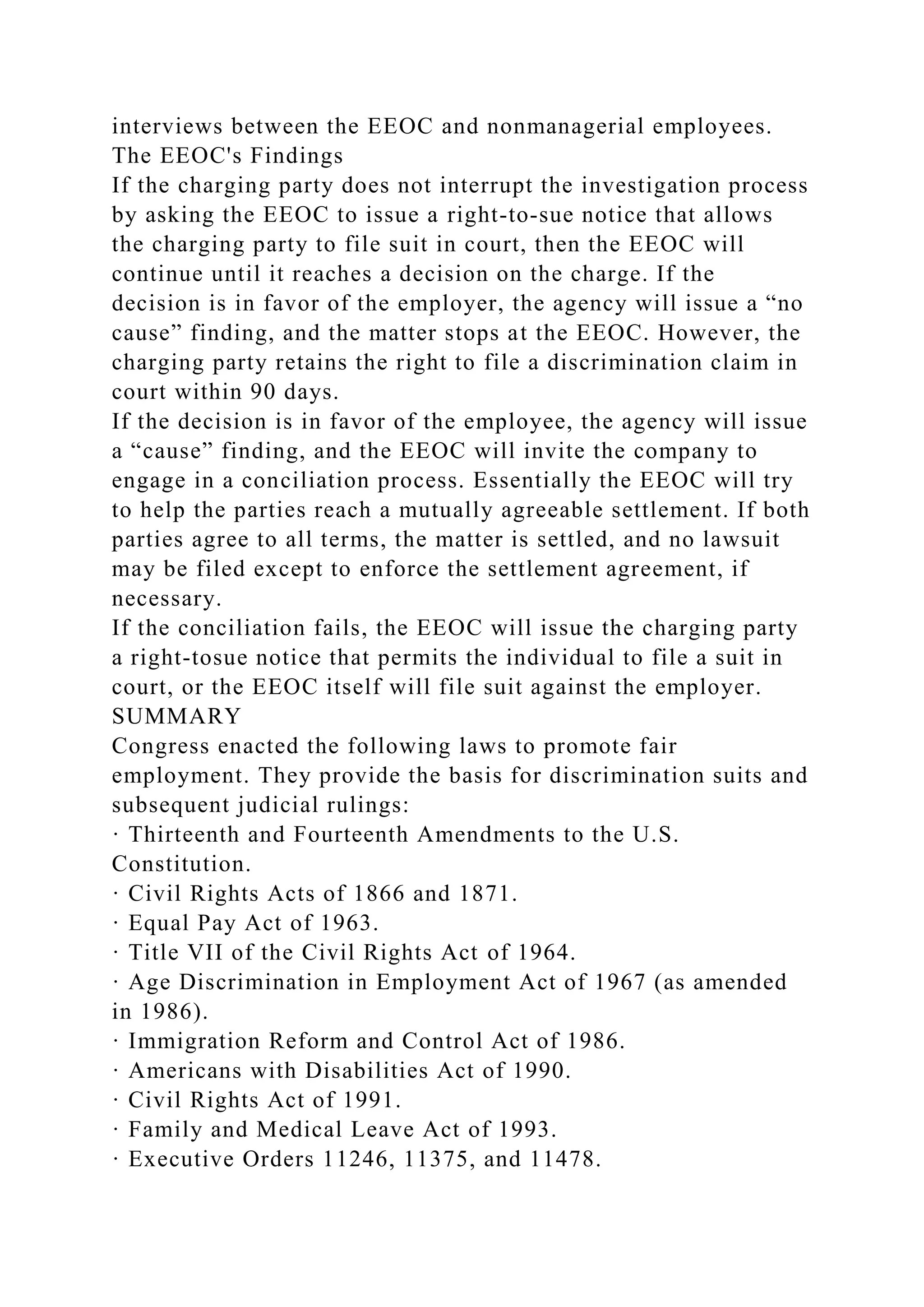
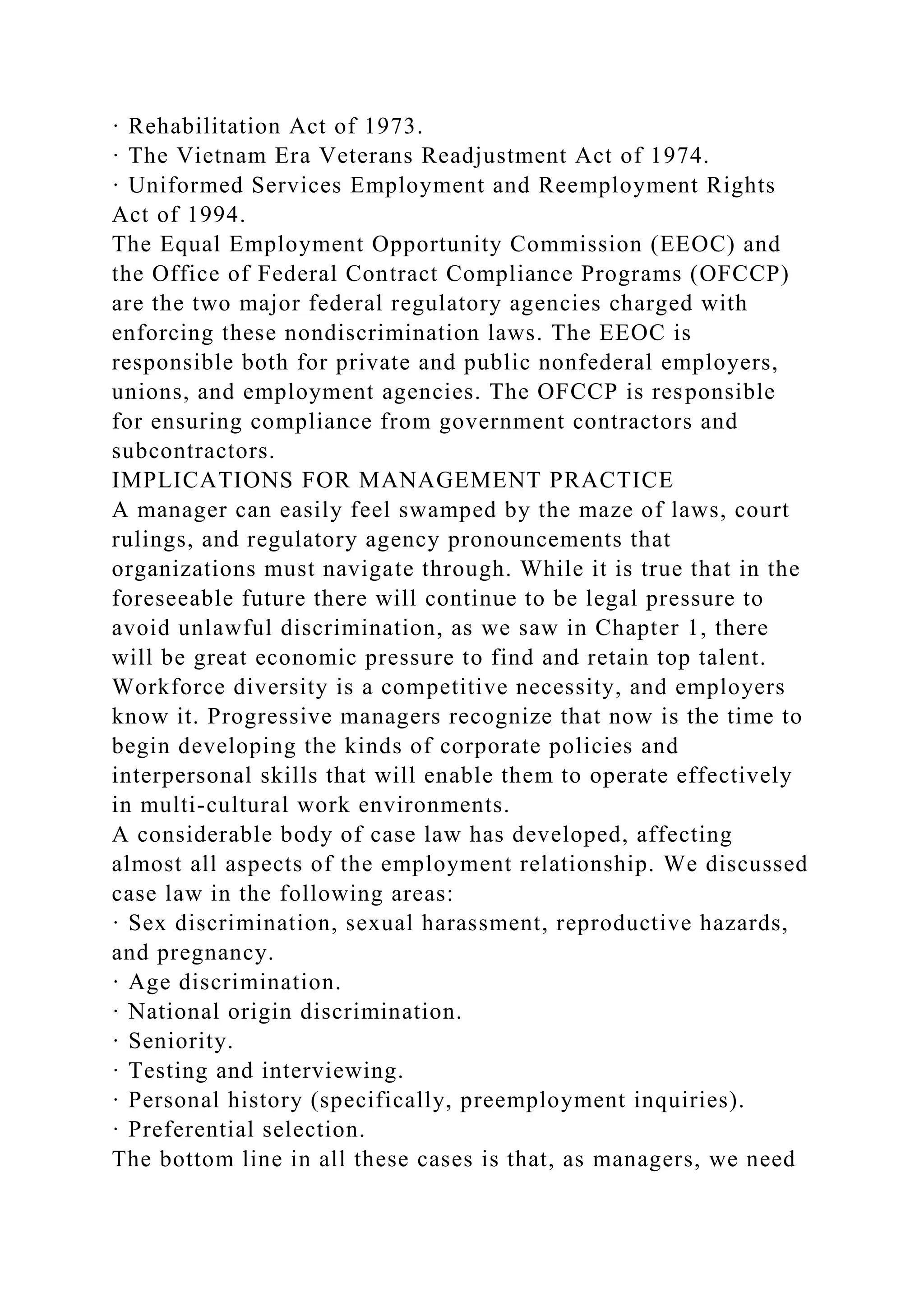
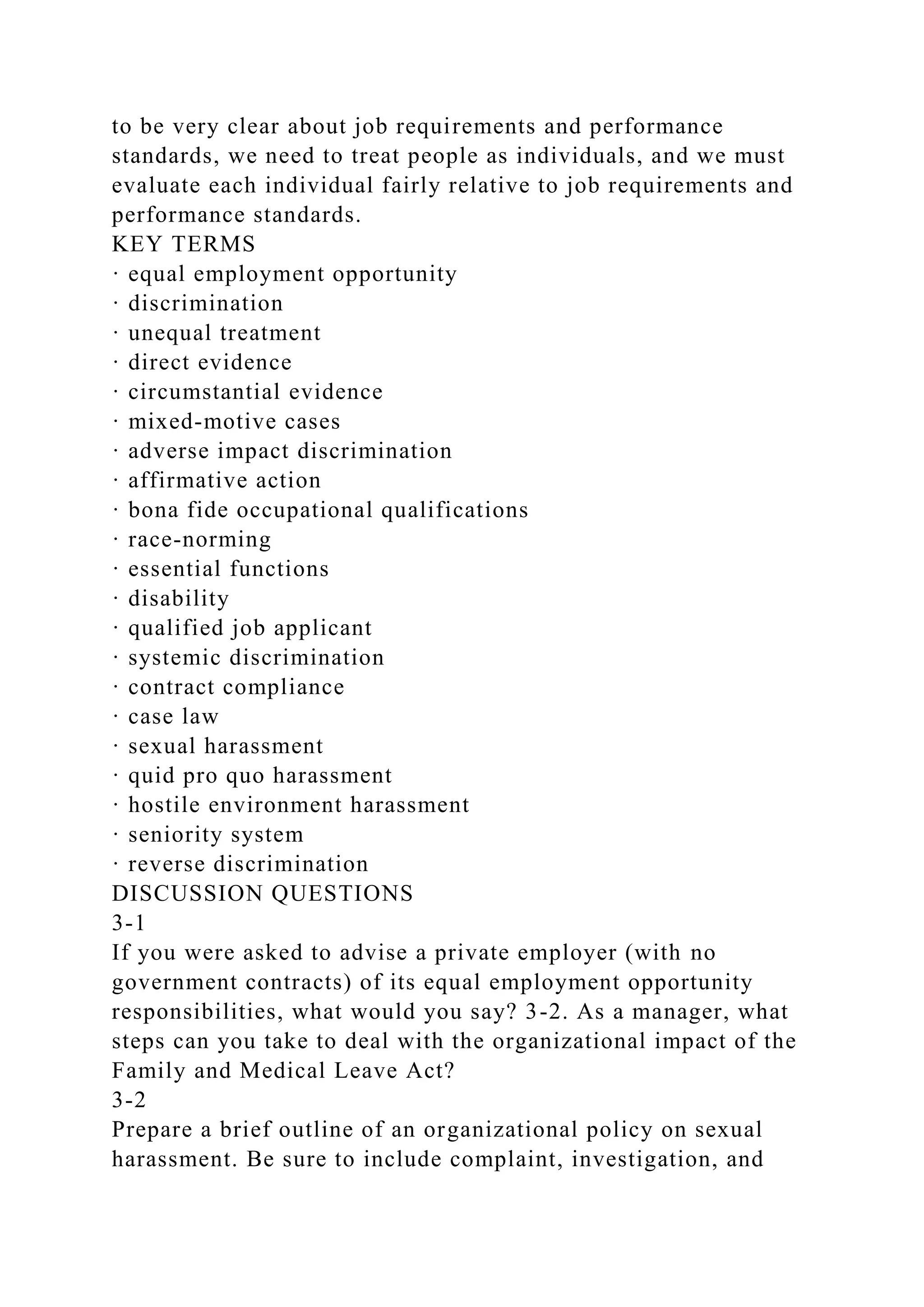
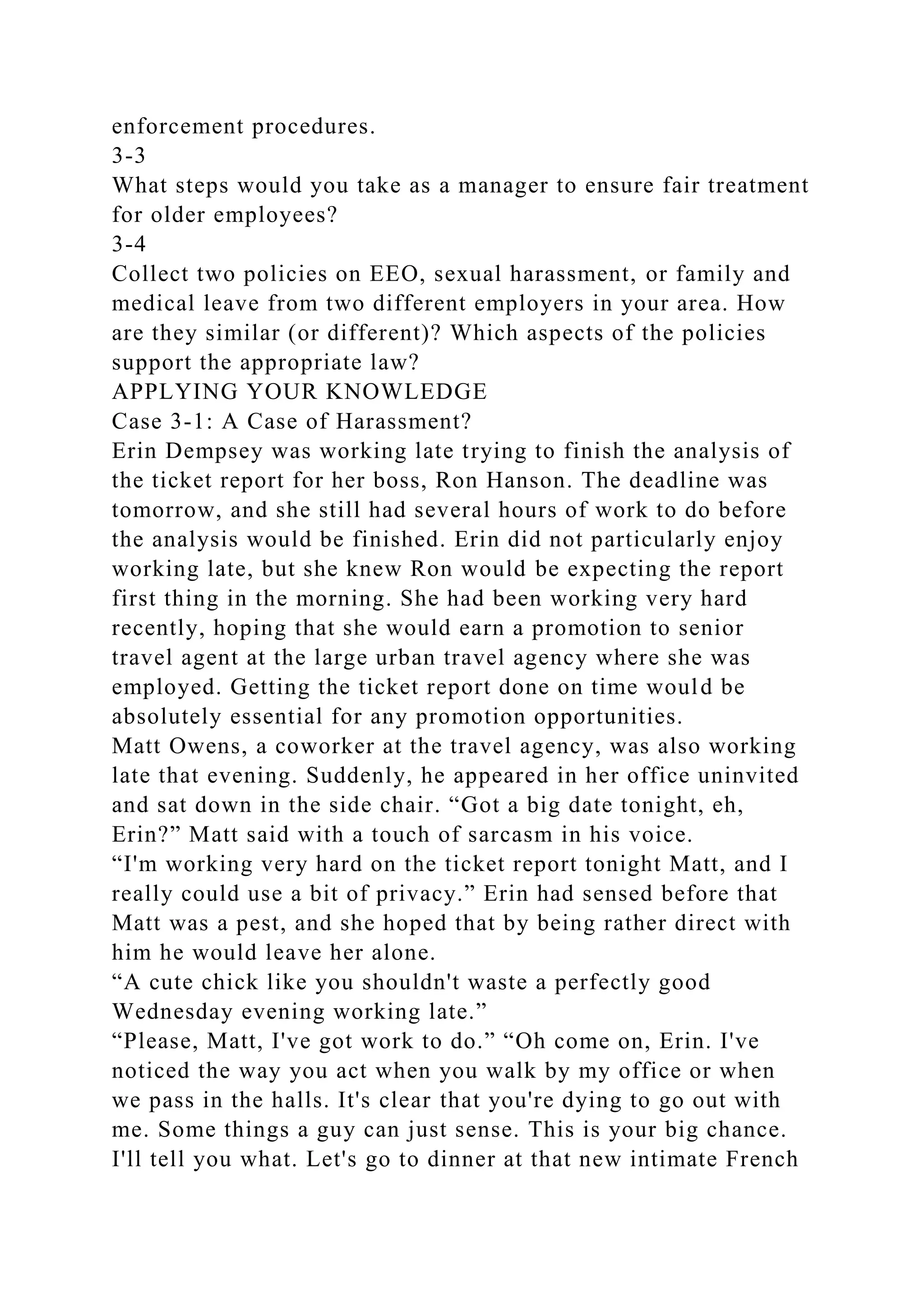

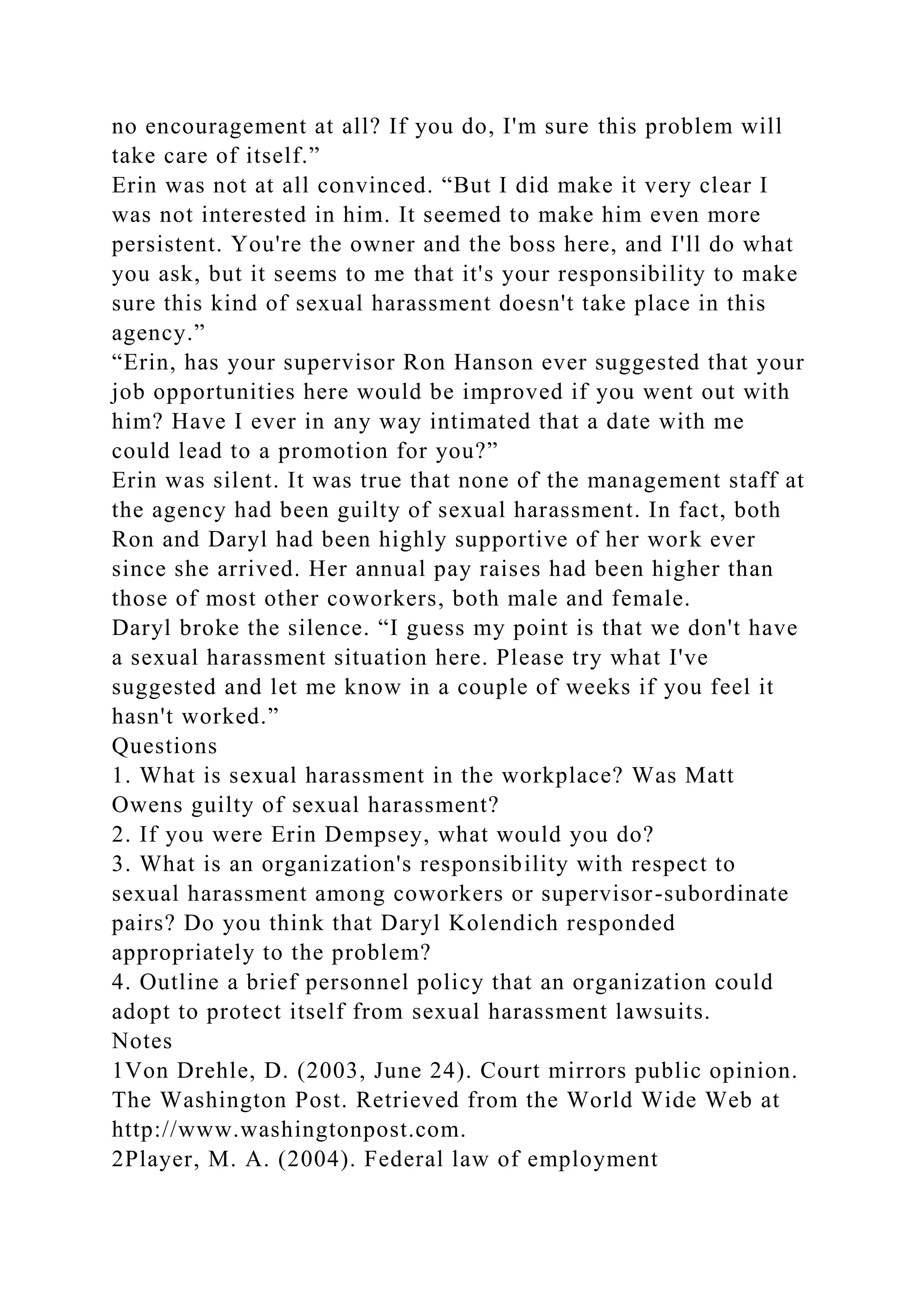
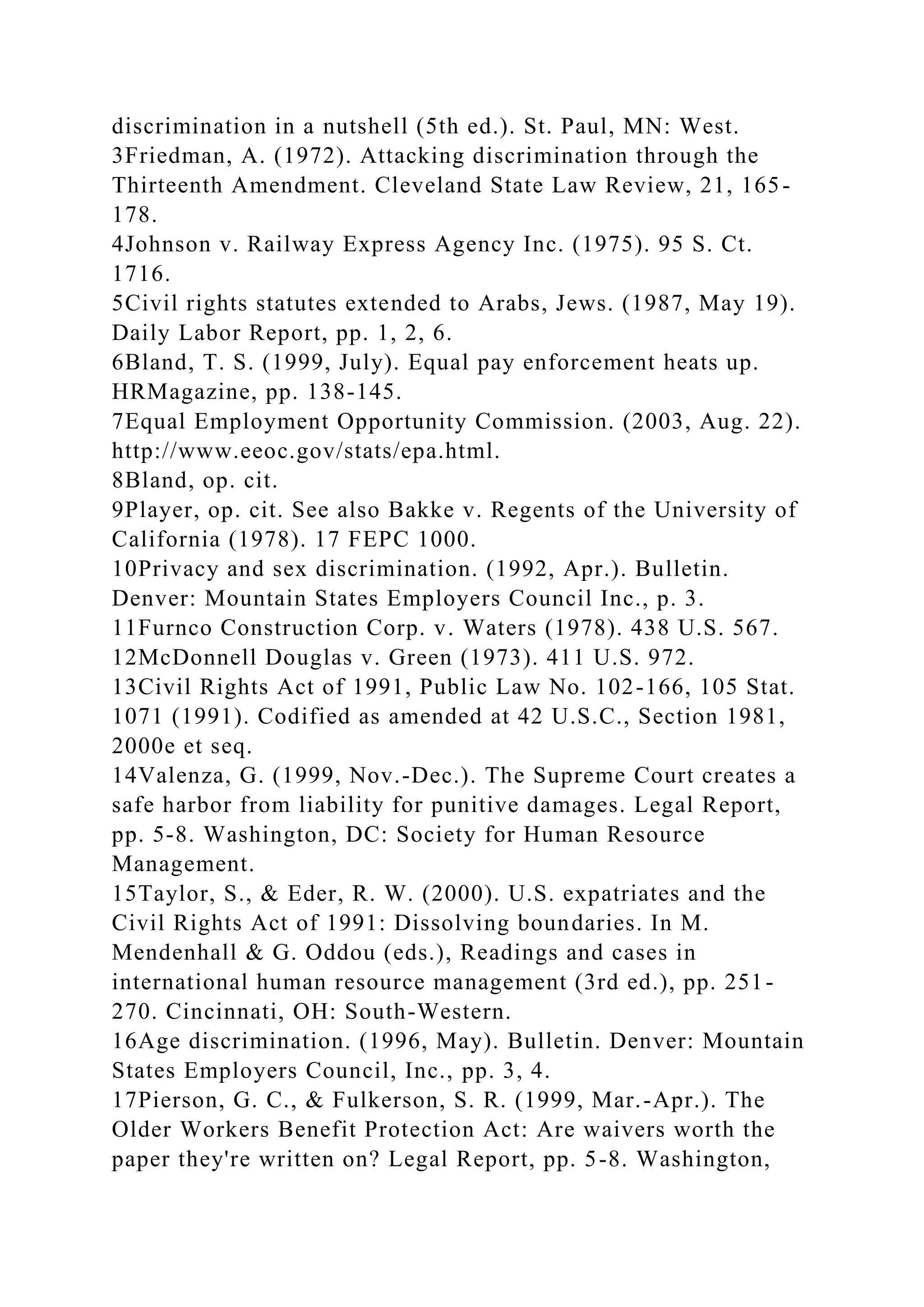
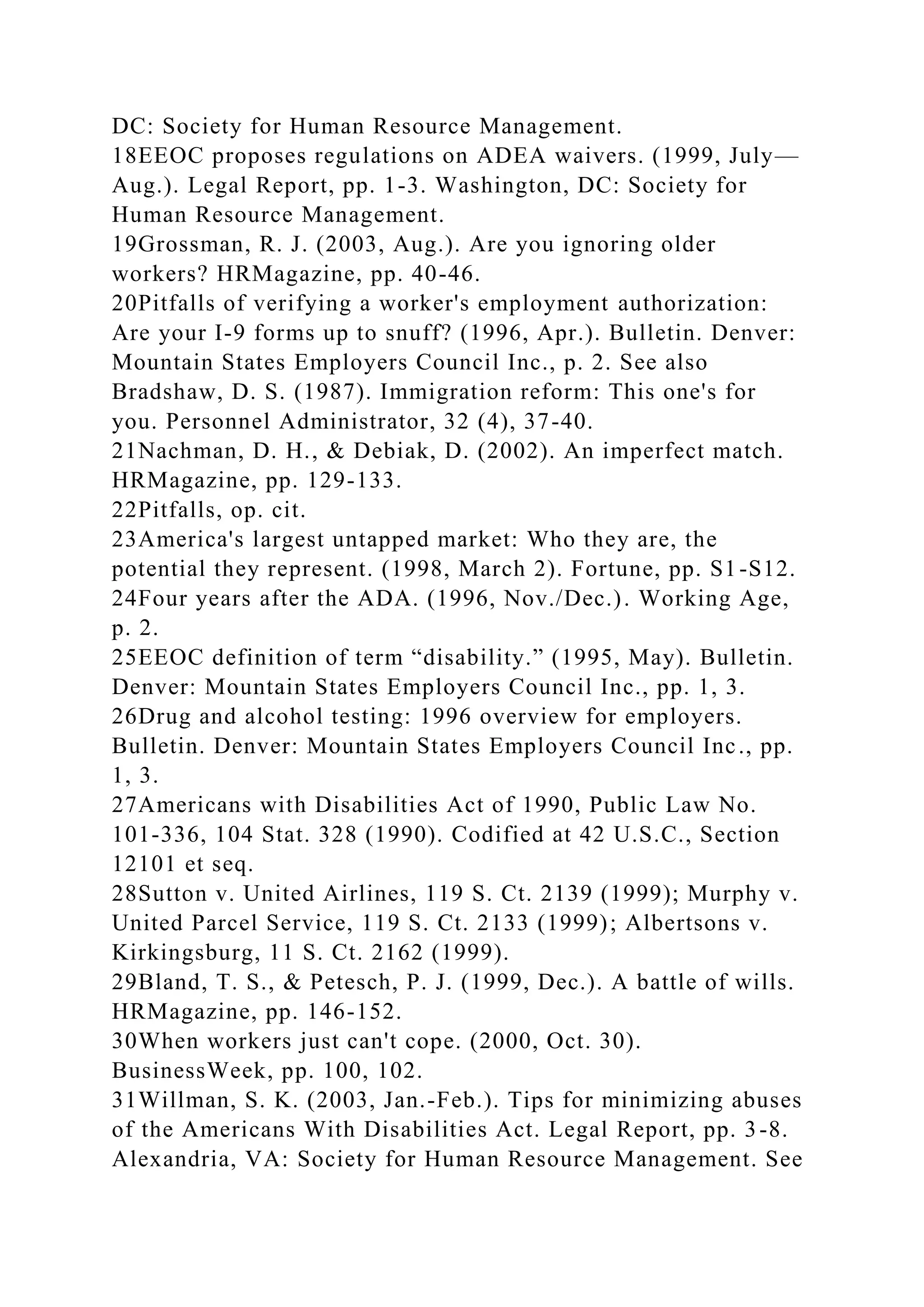
![also Janove, J. W. (2003, March). Skating through the
minefield. HRMagazine, pp. 107-113.
32Campbell, W. J., & Reilly, M. E. (2000). Accommodations
for persons with disabilities. In J. F. Kehoe (ed.), Managing
selection in changing organizations, pp. 319-367. San
Francisco: Jossey-Bass.
33Cascio, W. F. (1994). The 1991 Civil Rights Act and the
Americans with Disabilities Act of 1990: Requirements for
psychological practice in the workplace. In B. D. Sales & G. R.
VandenBos (eds.), Psychology in litigation and legislation, pp.
175-211. Washington, DC: American Psychological
Association.
34Petesch, P. J. (2000, Nov.). Popping the disability-related
question. HRMagazine, pp. 161-172.
35Wells, S. J. (2001a, April). Is the ADA working?
HRMagazine, pp. 38-46.
36Kolstad v. American Dental Association, 119 S. Ct. 2118
(1999).
37Paltell, E. (1999, Sept.). FMLA: After six years, a bit more
clarity. HRMagazine, pp. 144-150.
38Davis, G. M. (2003, Aug. 22). The Family and Medical Leave
Act: 10 years later.
http://www.shrm.org/hrresources/lrpt_published/CMS_005127.a
sp.
39Shea, R. E. (2000, Jan.). The dirty dozen. HRMagazine, pp.
52-56.
40Most small businesses appear prepared to cope with new
family-leave rules. (1993, Feb. 8). The Wall Street Journal, pp.
B1, B2.
41Clark, M. M. (2003). FMLA 10th anniversary events focus on
workplace flexibility options. HRMagazine, pp. 30, 42.
42Jackson, D. J. (1978). Update on handicapped discrimination.
Personnel Journal, 57, 488-491.
43Garcia, L. M. (2003). USERRA awakens: Complying with the
newest military leave law. Retrieved from the World Wide Web
at [email protected] on May 29, 2003.](https://image.slidesharecdn.com/diversityatworkquestionsthischapterwillhelpmanagersanswe-221026032732-01cc7112/75/Diversity-at-WorkQuestions-This-Chapter-Will-Help-Managers-Answe-docx-107-2048.jpg)
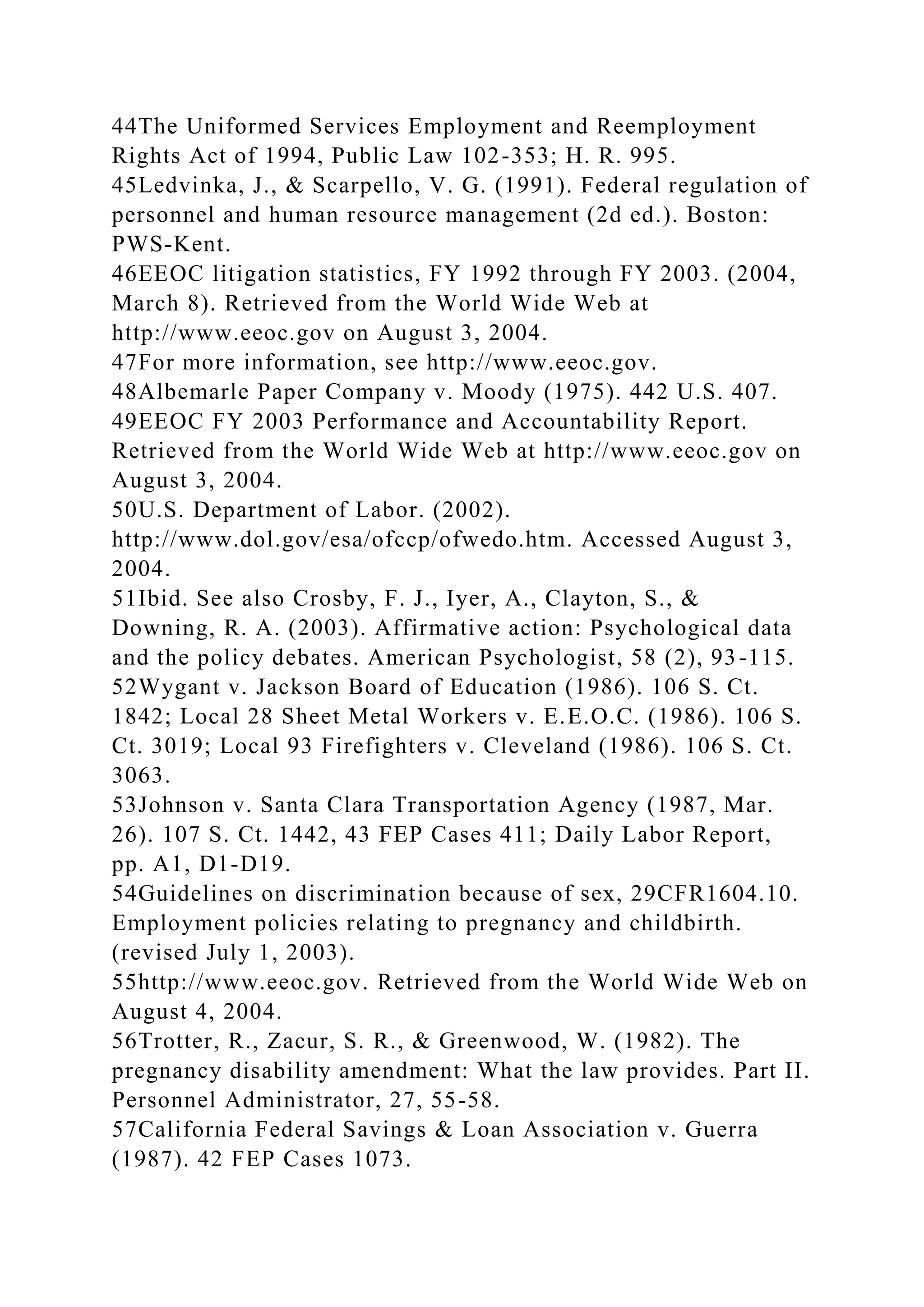

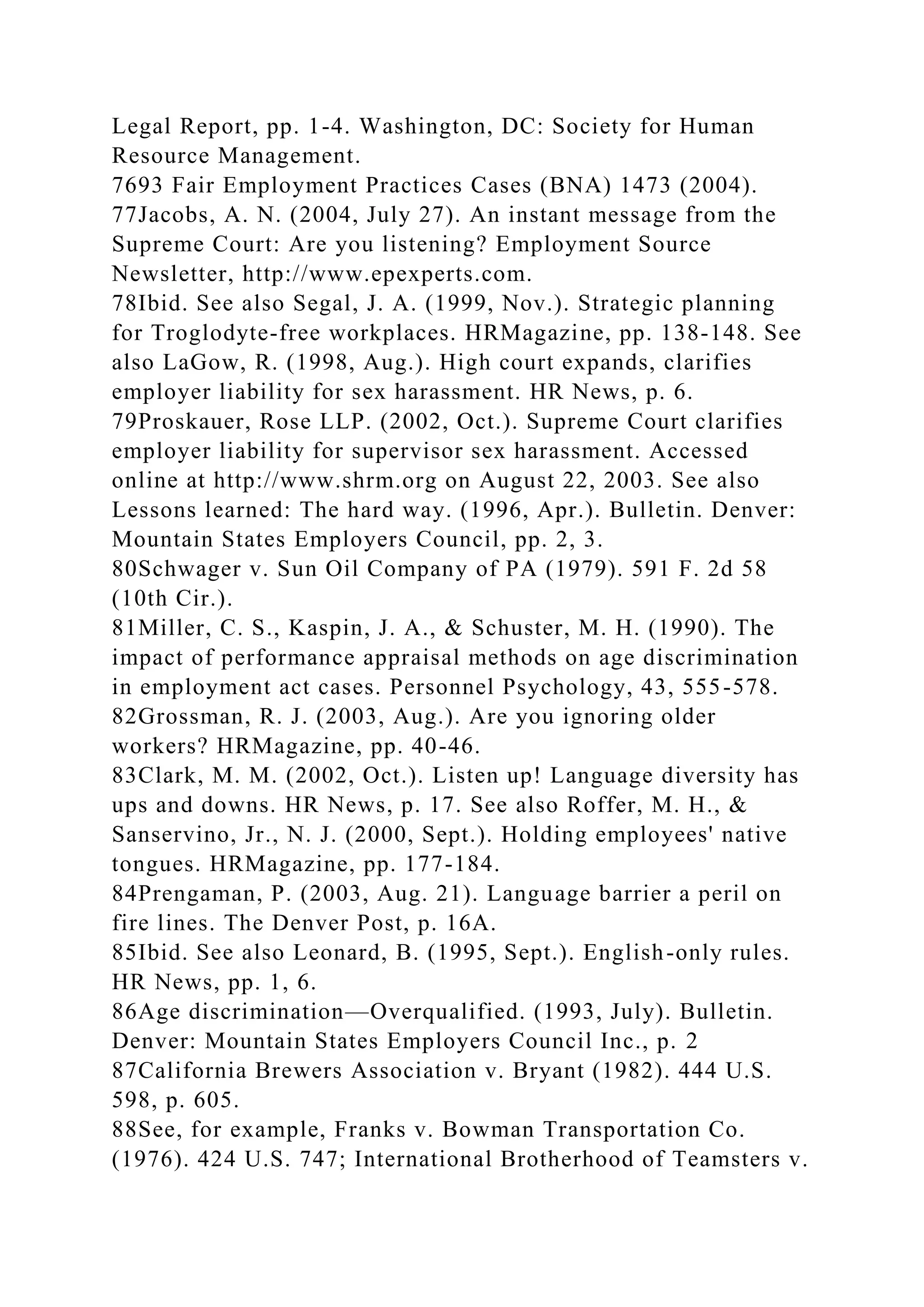
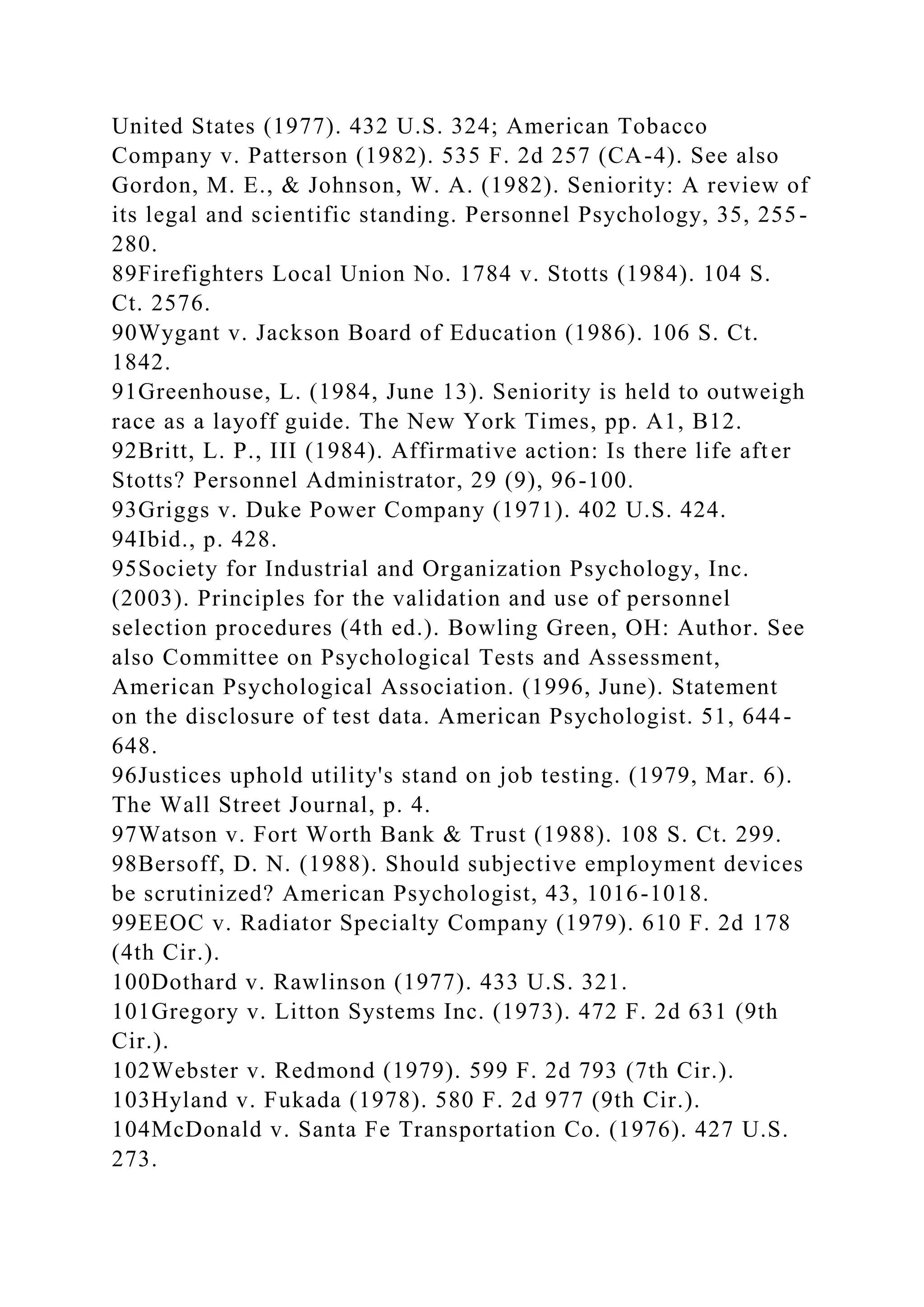

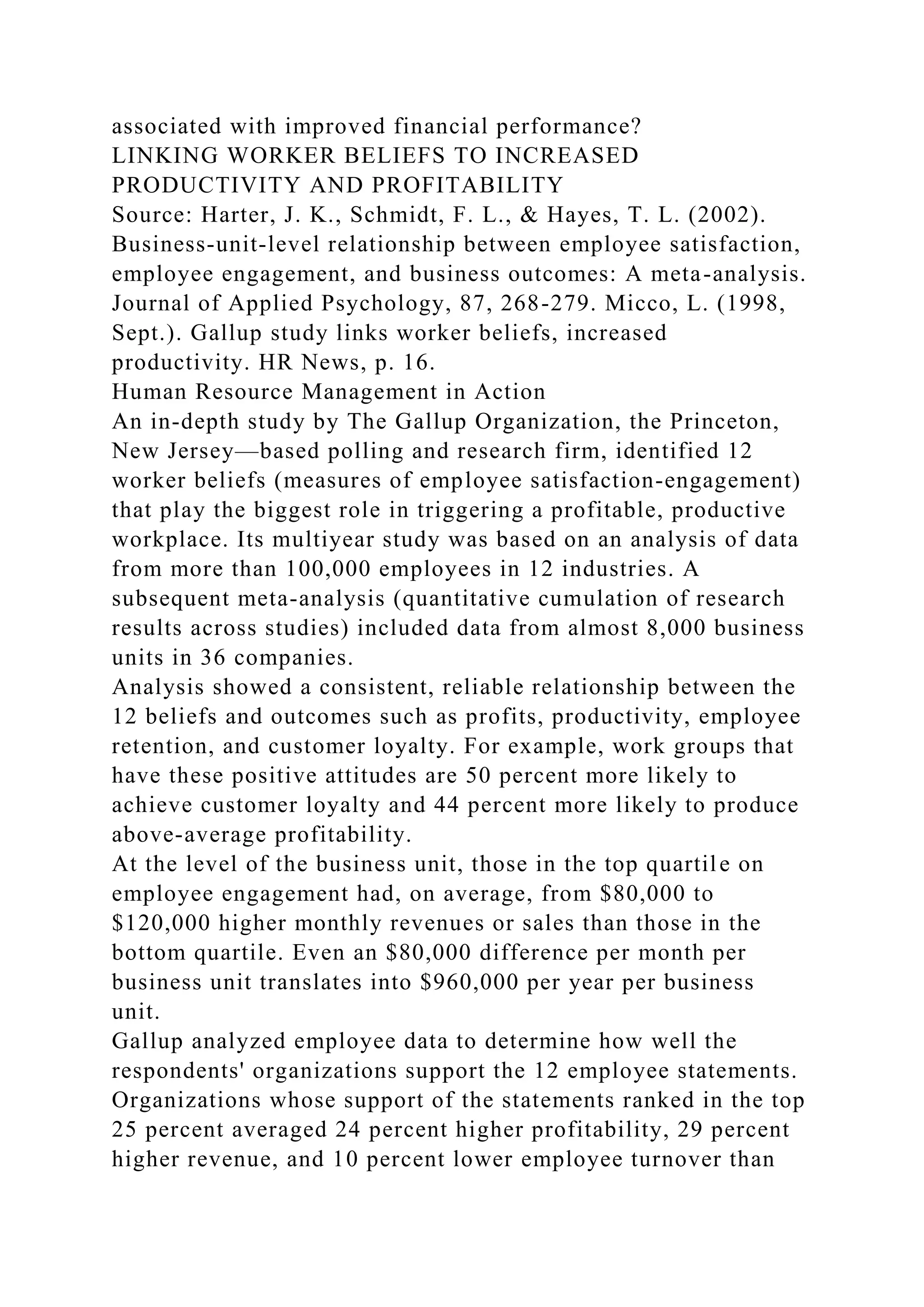
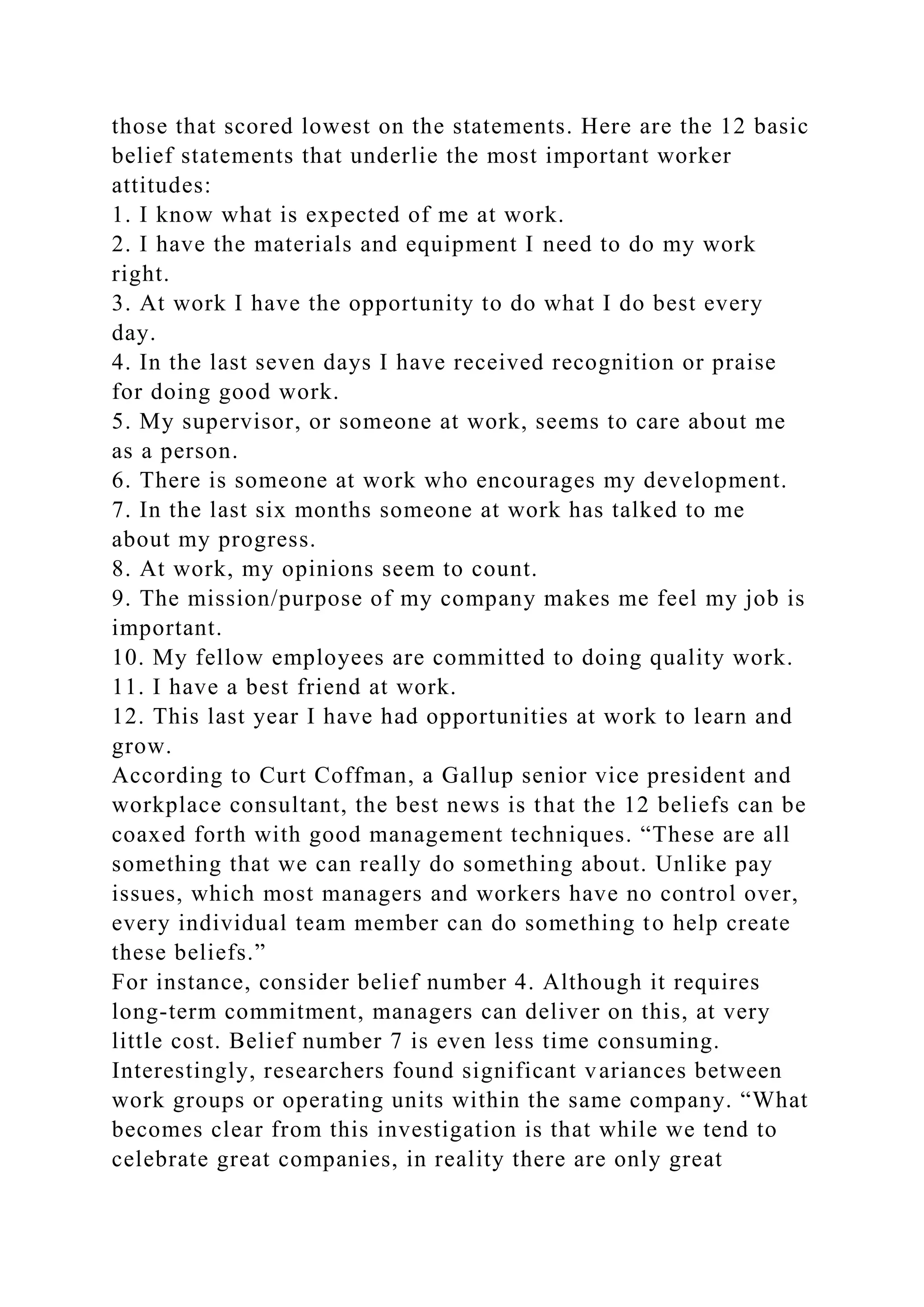

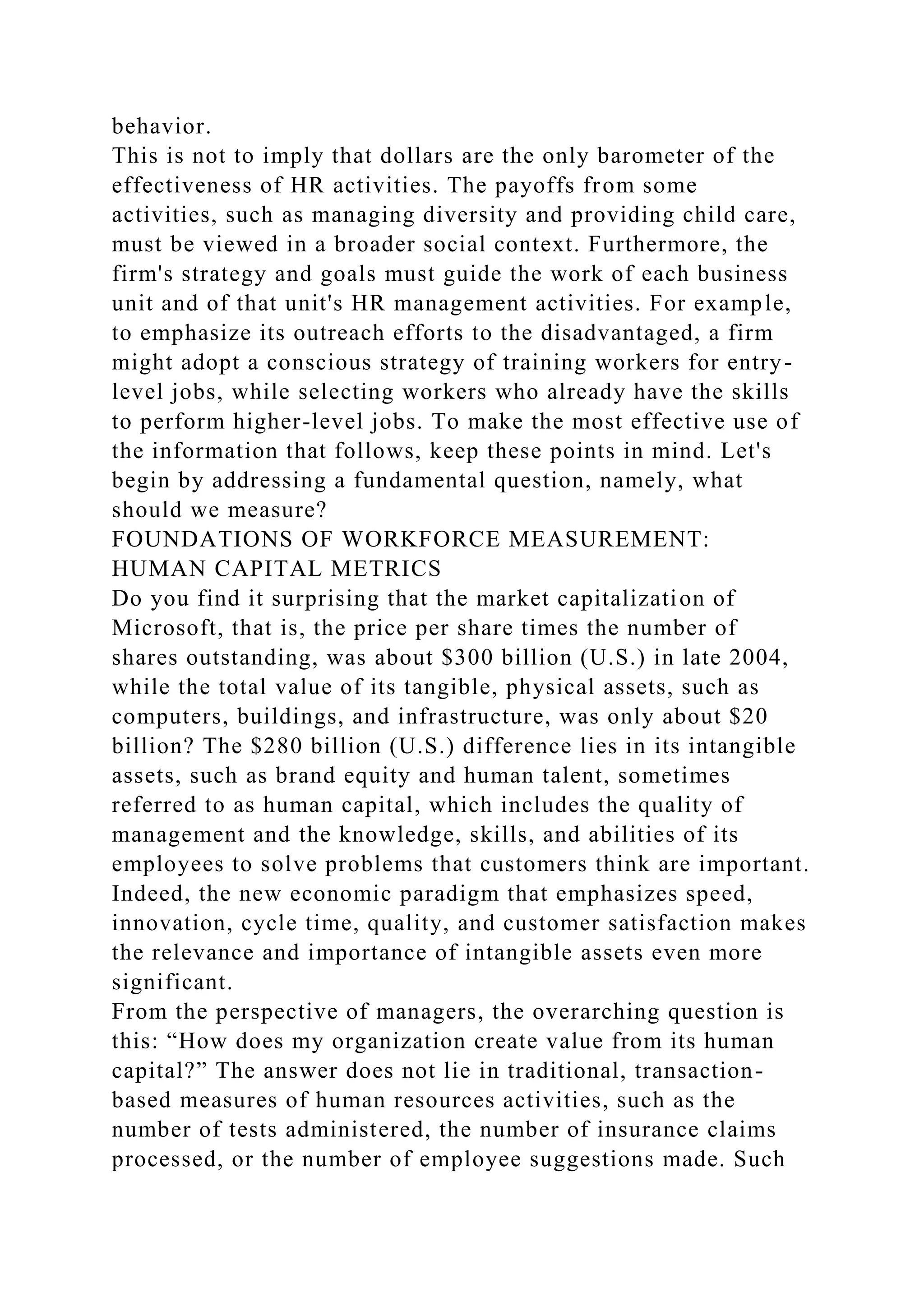
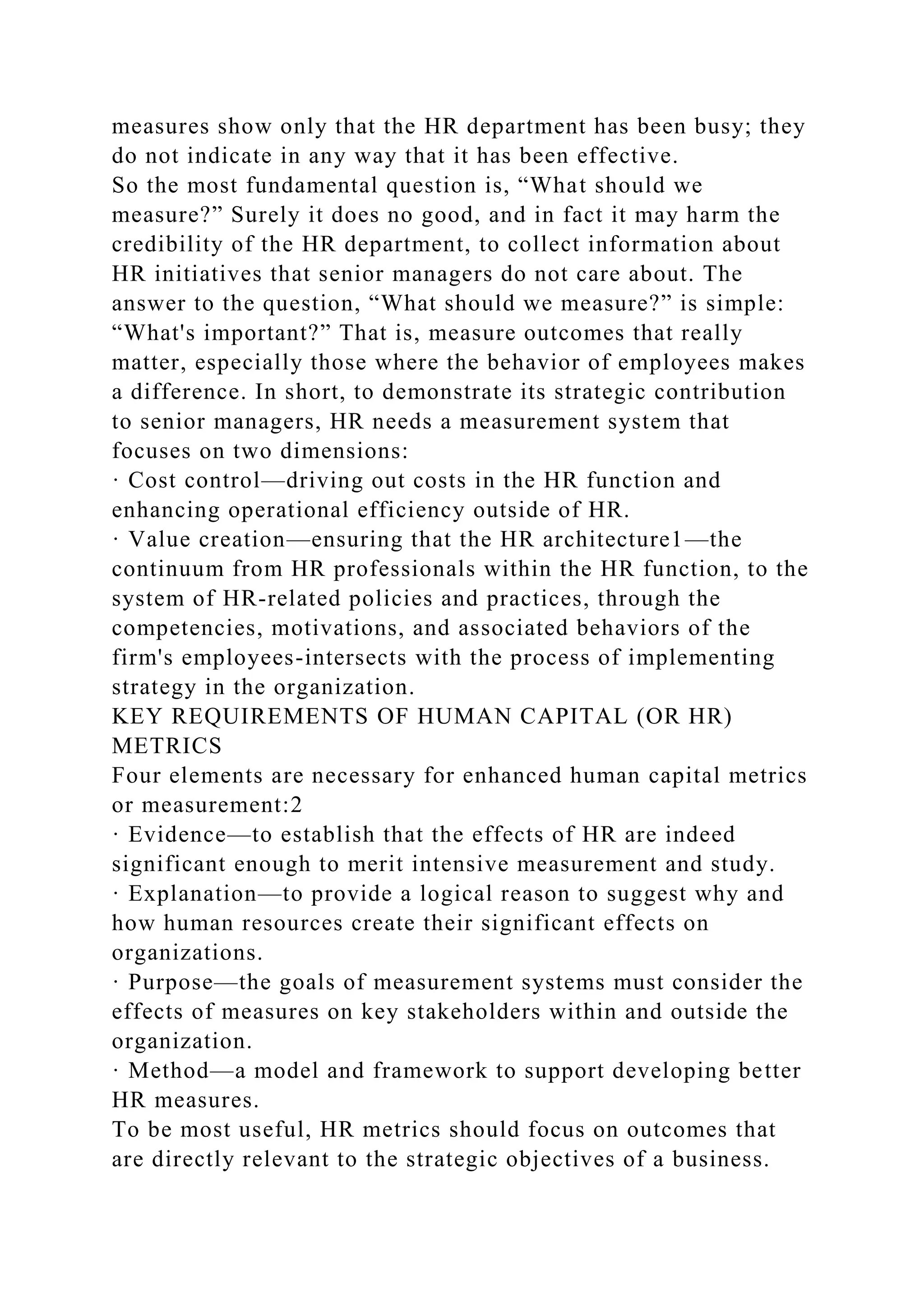
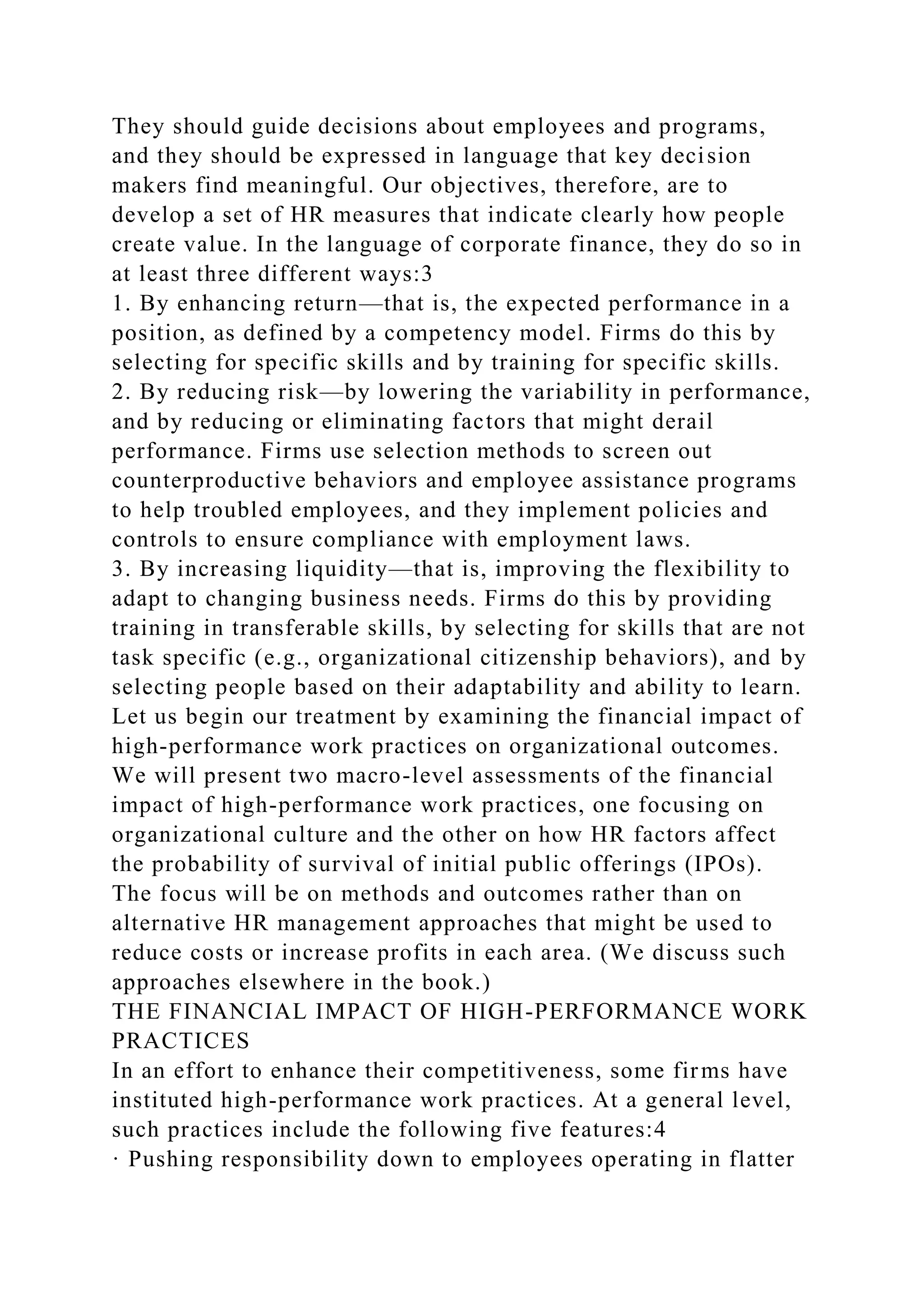
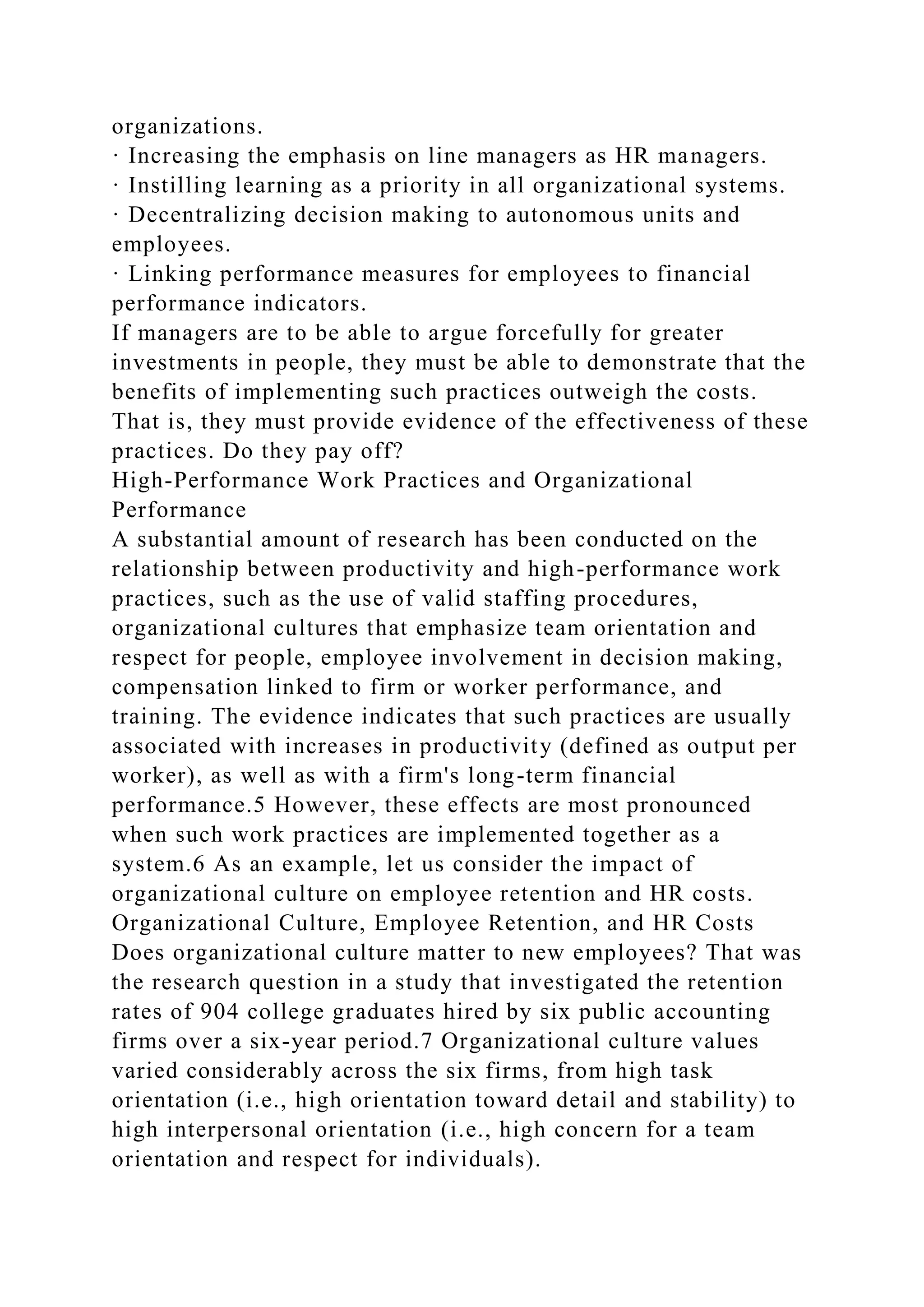
![New employees stayed an average of 45 months in the cultures
emphasizing interpersonal relationships, but only 31 months in
the cultures emphasizing work task values (see Figure 2-1).
This is a 14-month difference in median survival time. The next
task was to translate the difference in time into a measure of
profits forgone (i.e., opportunity losses).
Figure 2-1 Voluntary survival rates in two organizational
cultures.
(Source: J. E. Sheridan. (1992). Organizational culture and
employee retention, Academy of Management Journal, 35, p.
1049.)
Using the firms' average billing fees, along with hiring,
training, and compensation costs, means profits per professional
employee ranged from $58,000 during the first year of
employment to $67,000 during the second year and $105,000
during the third. A firm therefore incurs an opportunity loss of
only $9,000 ($67,000 $58,000) when a new employee replaces a
two-year employee, but a $47,000 loss ($105,000 $58,000)
when a new employee replaces a three-year employee.
If we assume that both strong and weak performers generated
the same average level of profits in each year of employment
and that annual profits were distributed uniformly between
those with 31 and those with 45 months' seniority, it is possible
to estimate the opportunity loss associated with the 14-month
difference in median survival time. This difference translated
into an opportunity loss of approximately $44,000 per new
employee [($47,000 $9,000/12) 14] between the firms having
the two different types of cultural values. That's roughly
$62,000 per new employee in 2004 dollars. Considering the
total number of new employees hired by each office over the
six-year period of the study, the study indicates that a firm
emphasizing work task values incurred opportunity losses of
approximately $6 to $9 million ($8.5 to $12.8 million in 2004](https://image.slidesharecdn.com/diversityatworkquestionsthischapterwillhelpmanagersanswe-221026032732-01cc7112/75/Diversity-at-WorkQuestions-This-Chapter-Will-Help-Managers-Answe-docx-120-2048.jpg)

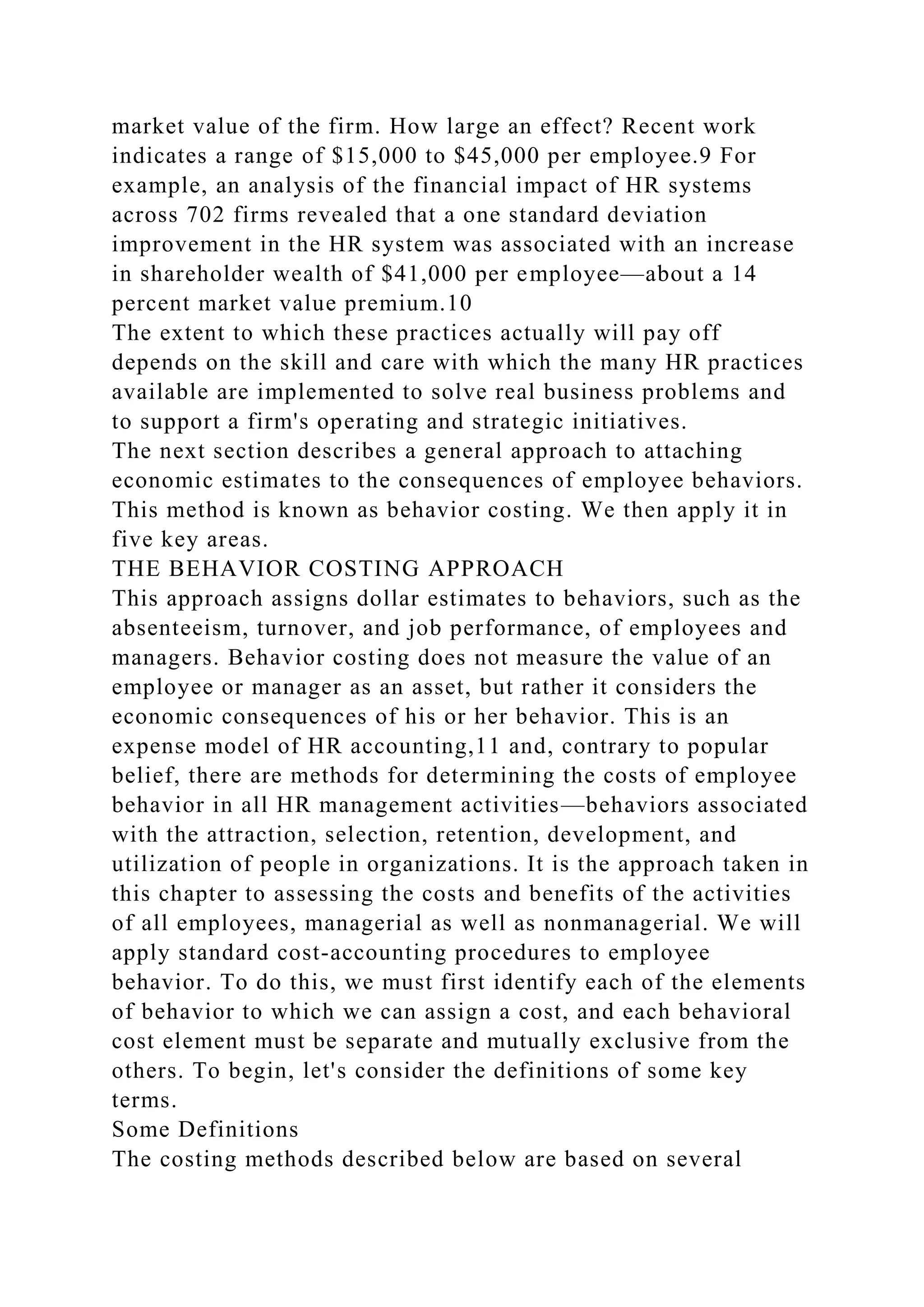
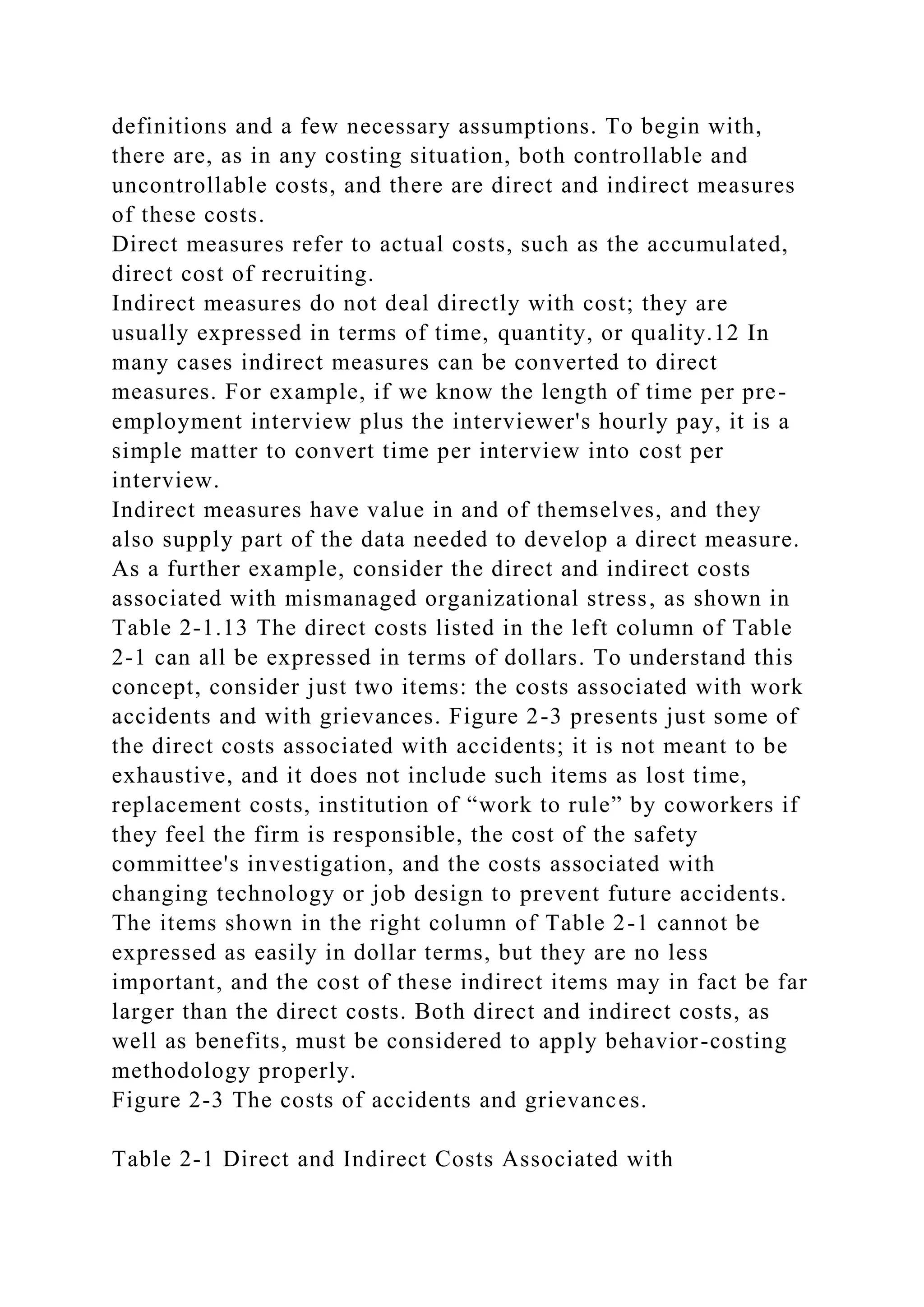

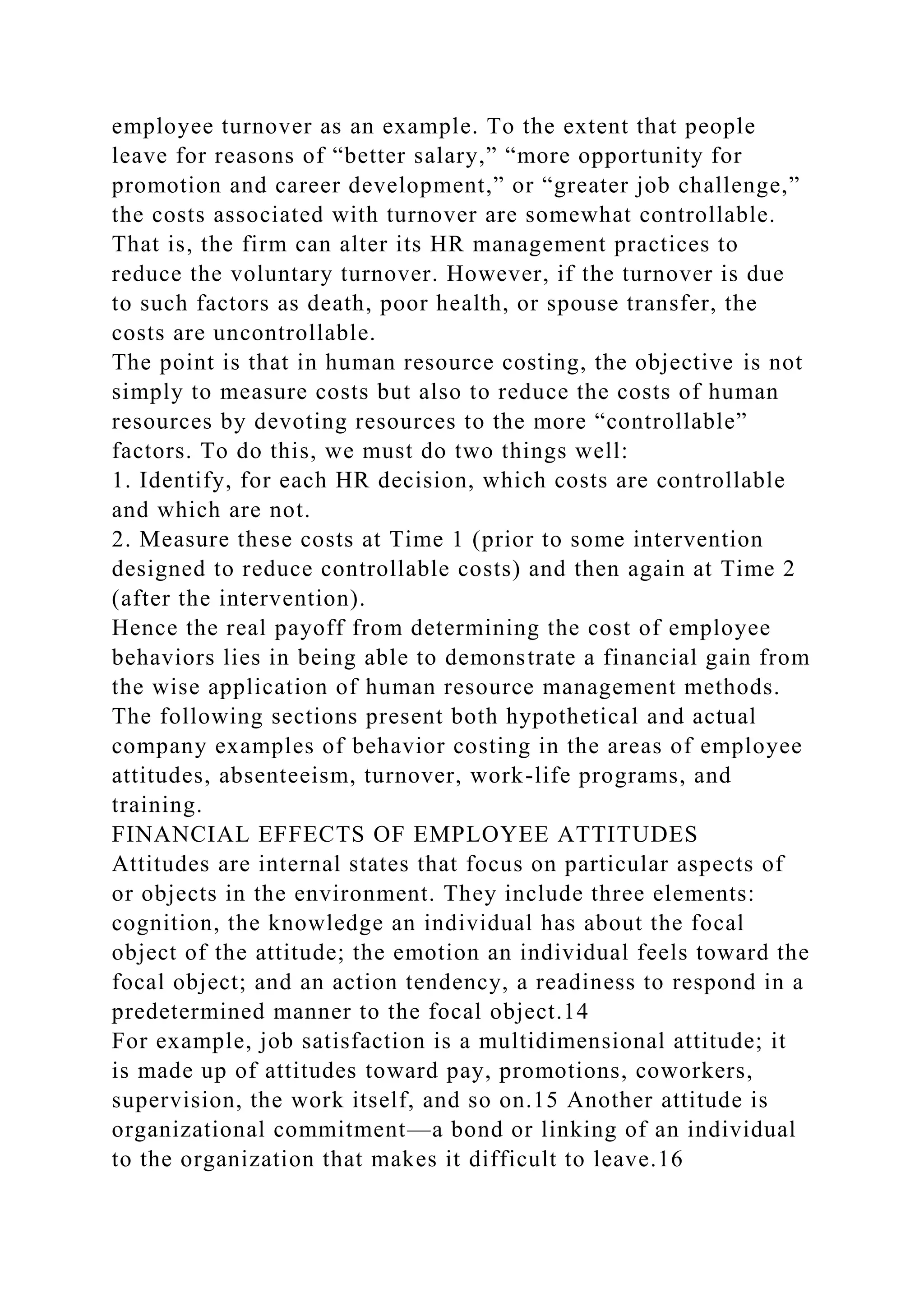
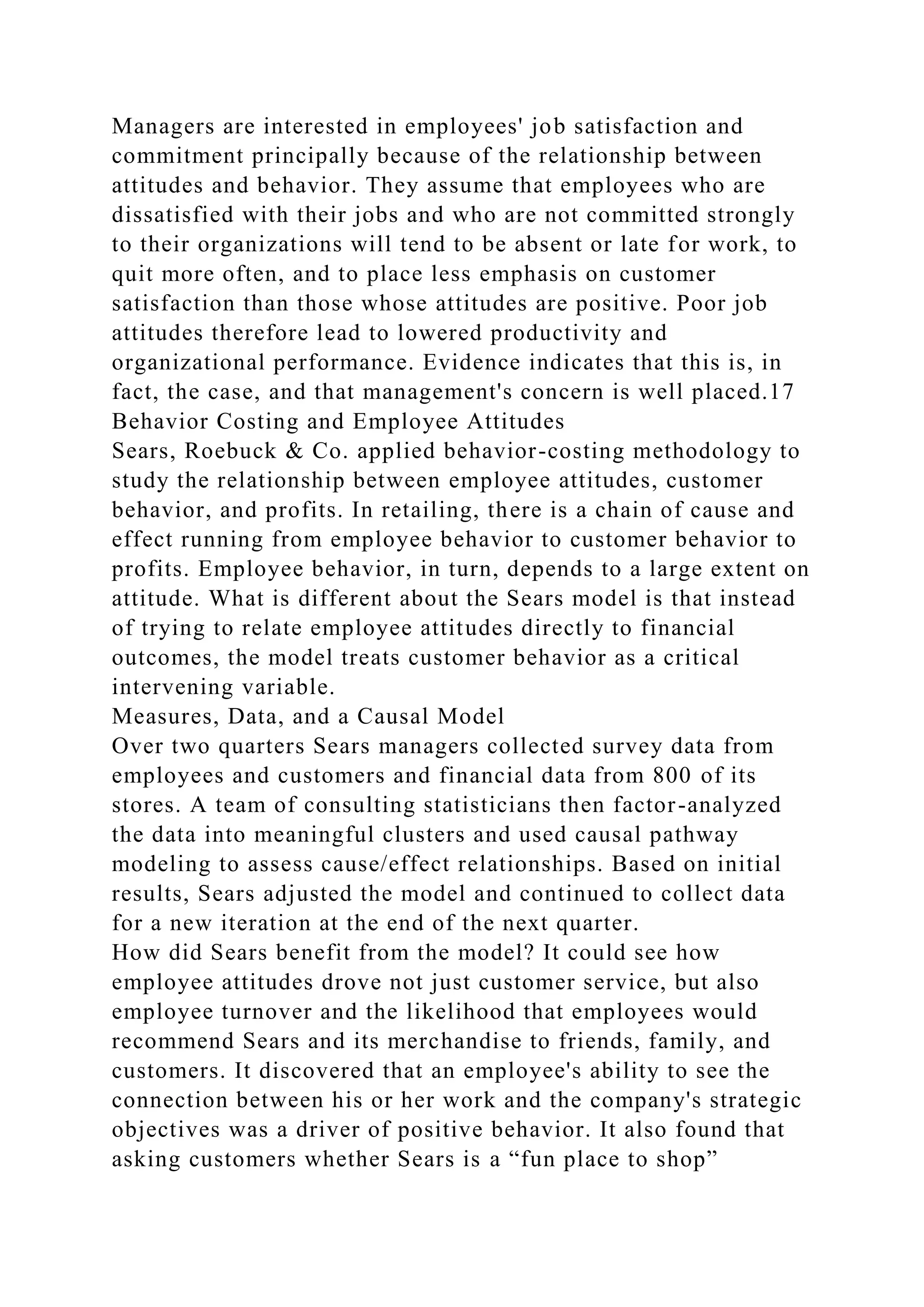
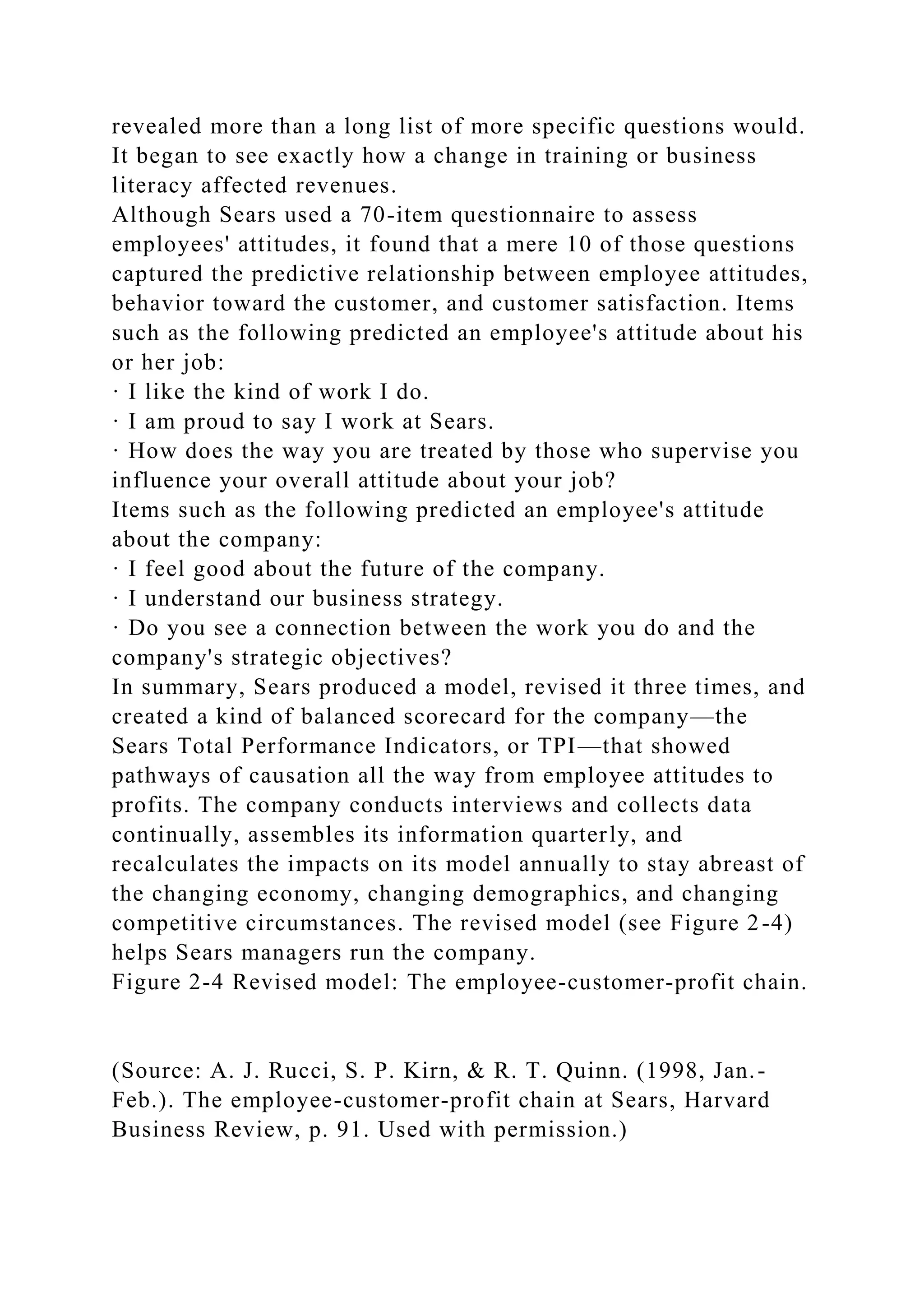
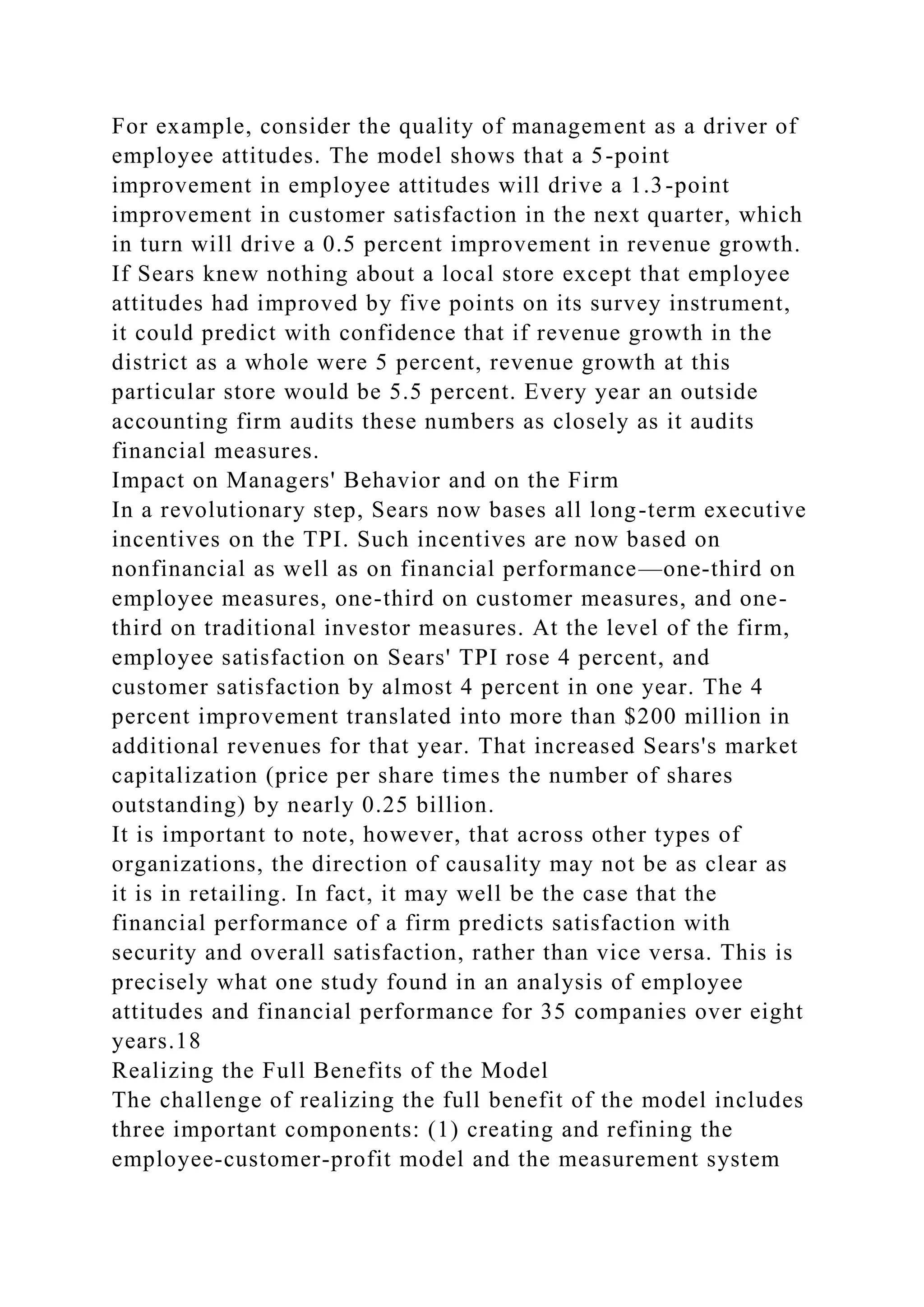
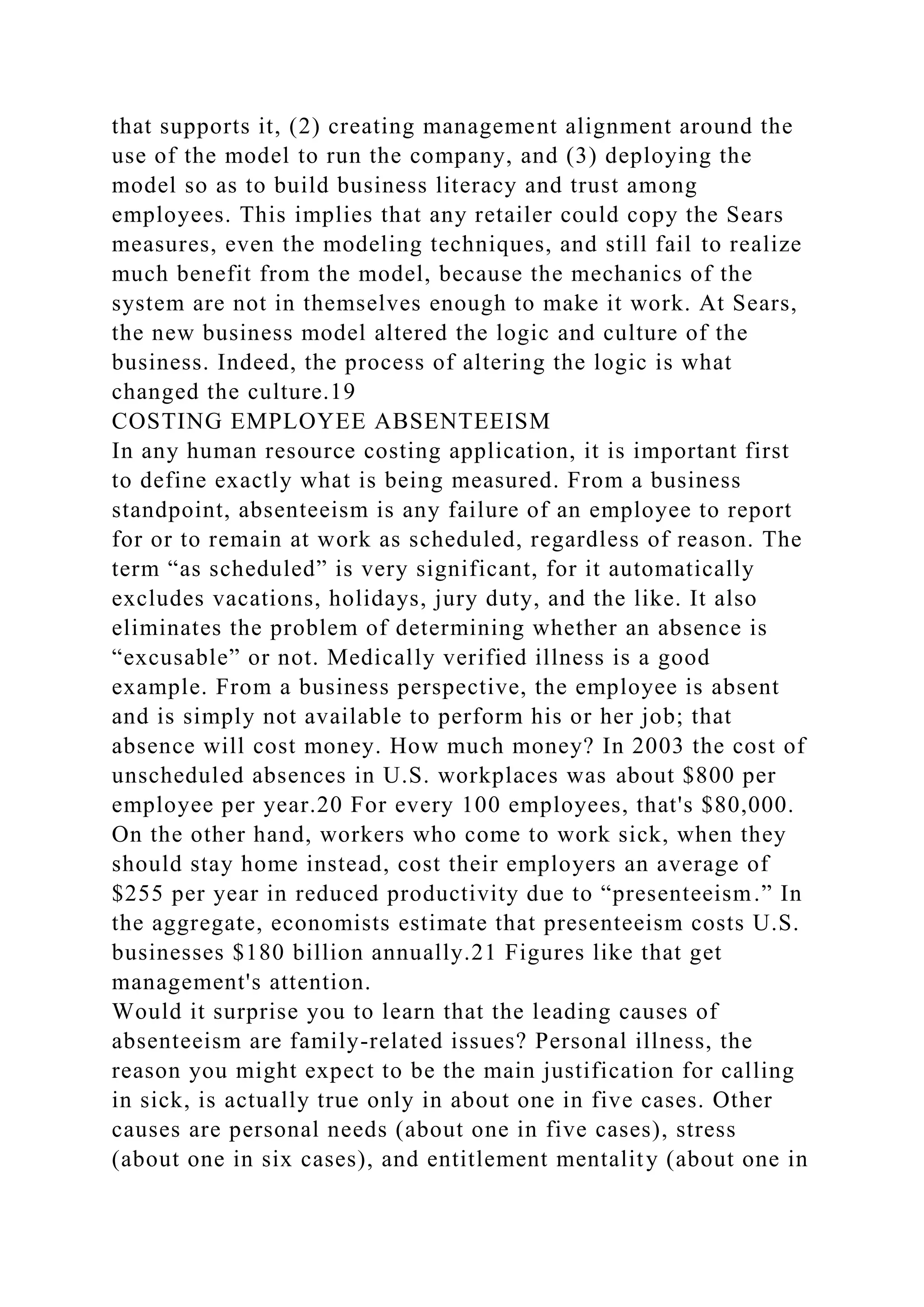
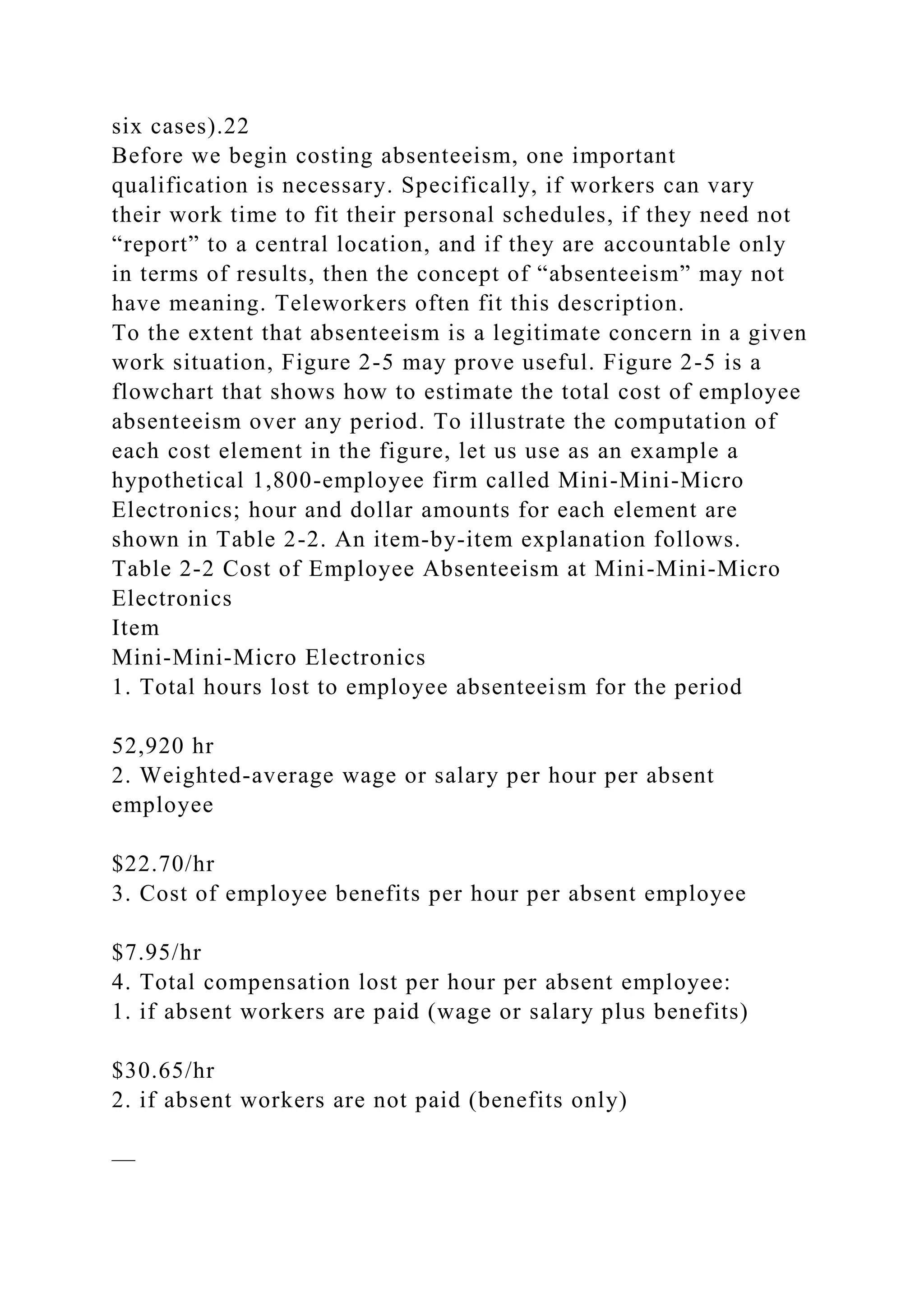
![5. Total compensation lost to absent employees (total hours lost
× 4a or 4b, whichever applies)
$1,621,998
6. Total supervisory hours lost on employee absenteeism
8,820 hr
7. Average hourly supervisory wage, including benefits
$34.763/hr
8. Total supervisory salaries lost to managing problems of
absenteeism (hours lost × average hourly supervisory wage—
item 6 × item 7)
$306,605.25
9. All costs incidental to absenteeism and not included in items
1 through 8
$300,000
10. Total estimated cost of absenteeism—summation of items 5,
8, and 9
$2,228,603.25
11. Total estimated cost of absenteeism per employee (total
estimated costs ÷ total number of employees)
$1,238.11 per employee absence
Figure 2-5 Total estimated cost of employee absenteeism.
(Source: W. F. Cascio. (2000). Costing human resources: The
financial impact of behavior in organizations [4th ed.], South-
Western College Publishing, Cincinnati, OH, p. 63. Used with
permission.)
Item 1: Total Hours Lost.](https://image.slidesharecdn.com/diversityatworkquestionsthischapterwillhelpmanagersanswe-221026032732-01cc7112/75/Diversity-at-WorkQuestions-This-Chapter-Will-Help-Managers-Answe-docx-131-2048.jpg)
